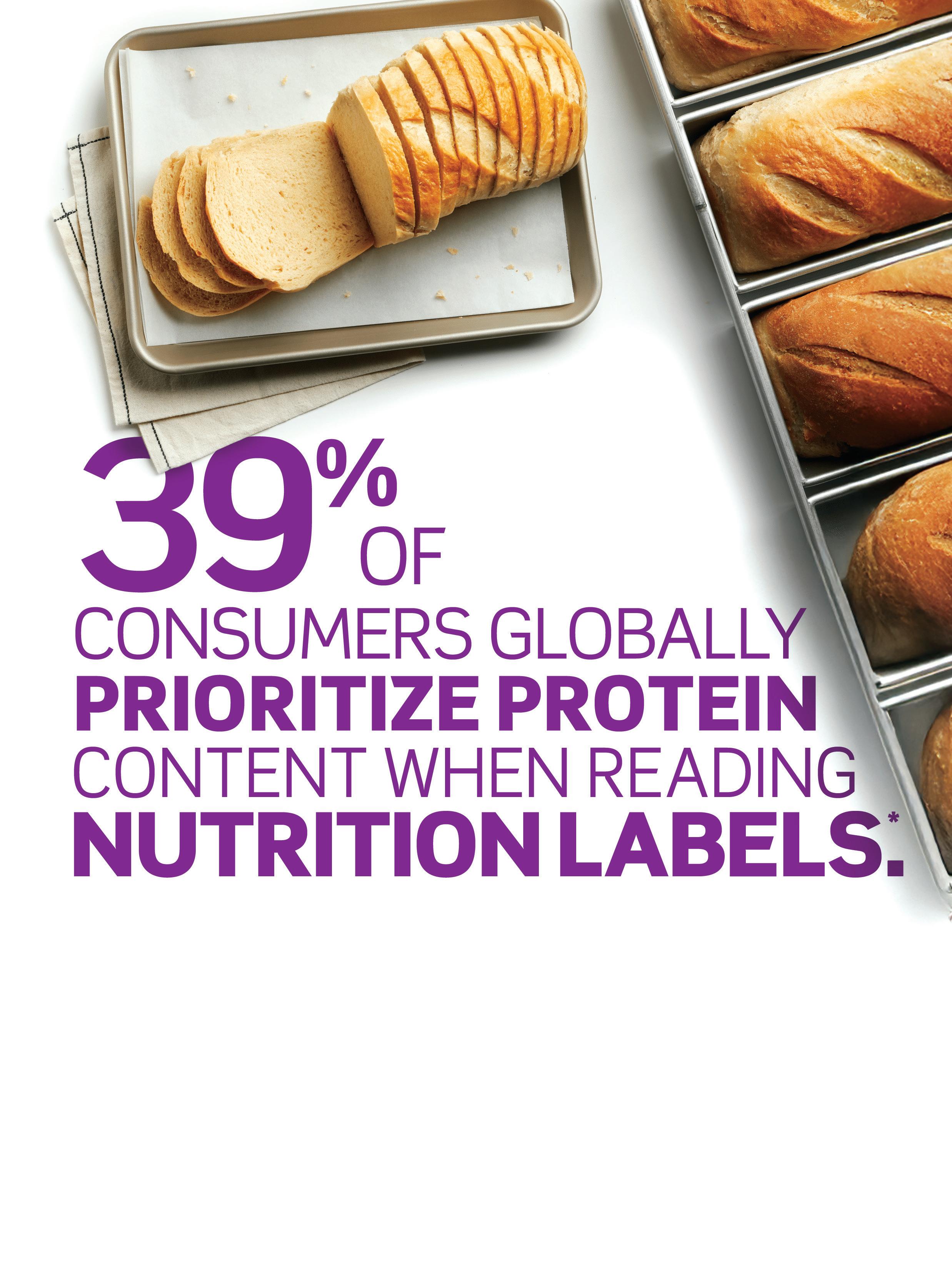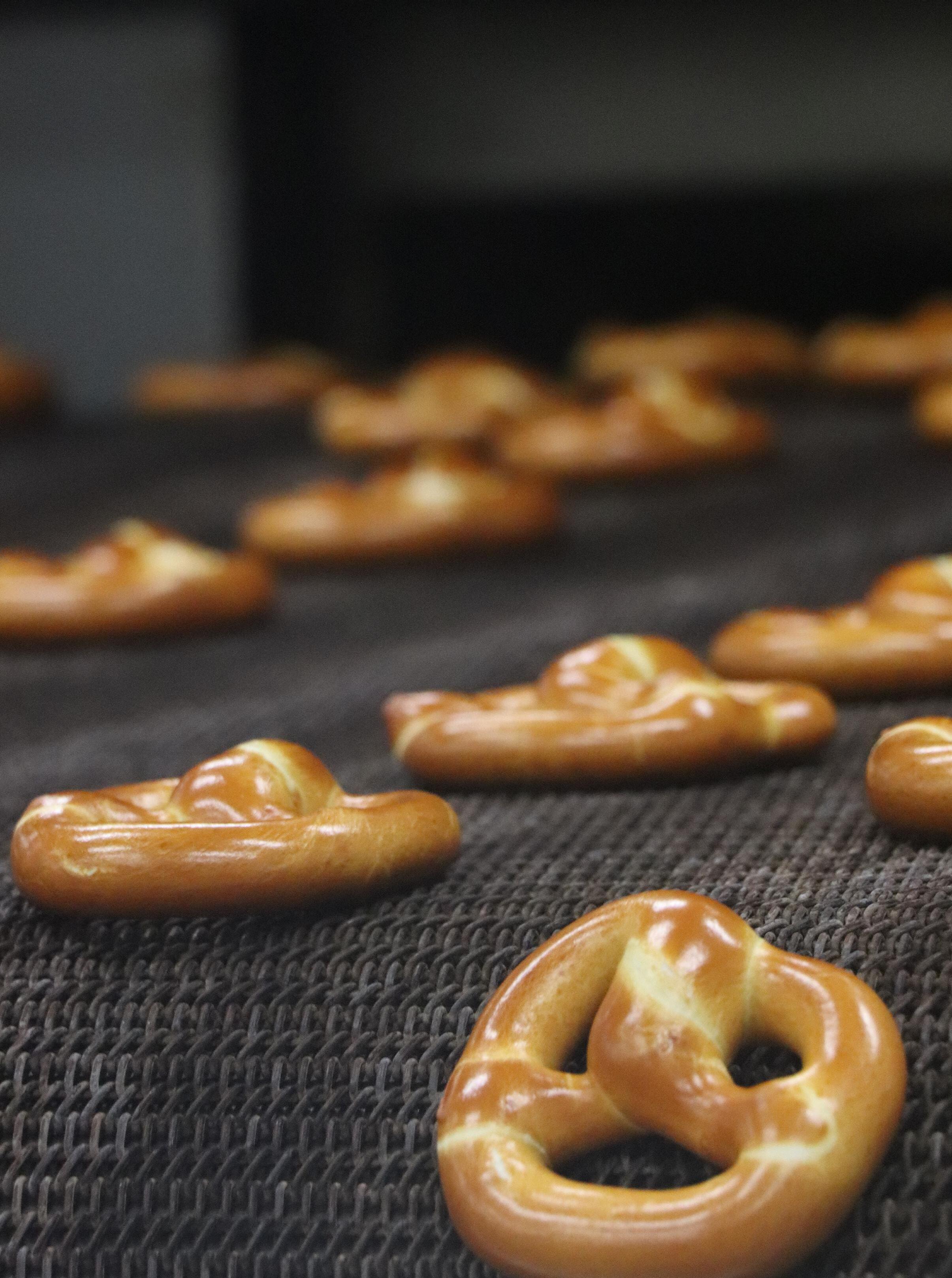












No tricks. Just Clean Label ingredients that keep all your baked goods fresh, naturally. Leading bakery innovation with the only Natural Verified mold inhibitors.
Visit our website to learn more!









Solve your toughest secondary packaging challenges with our automated solutions
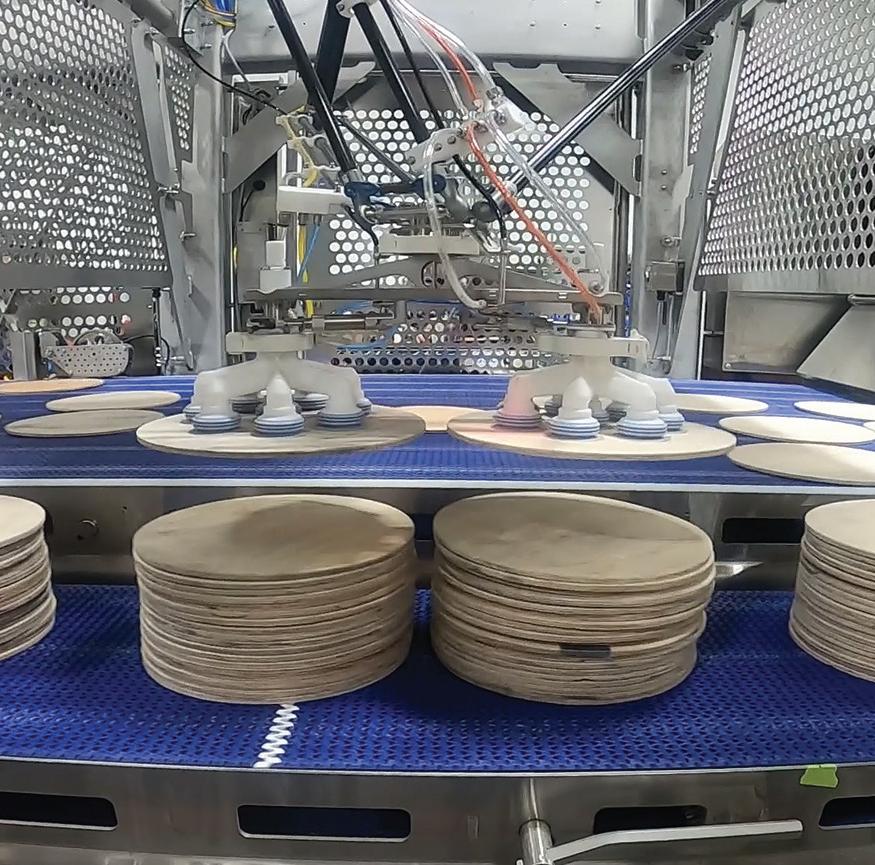
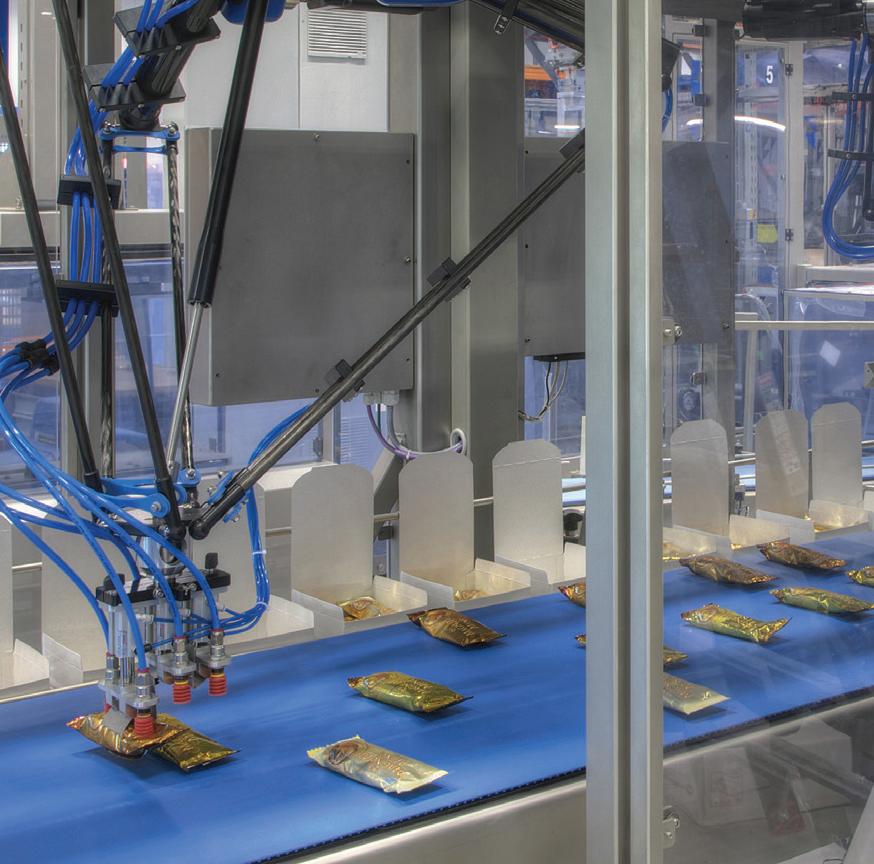
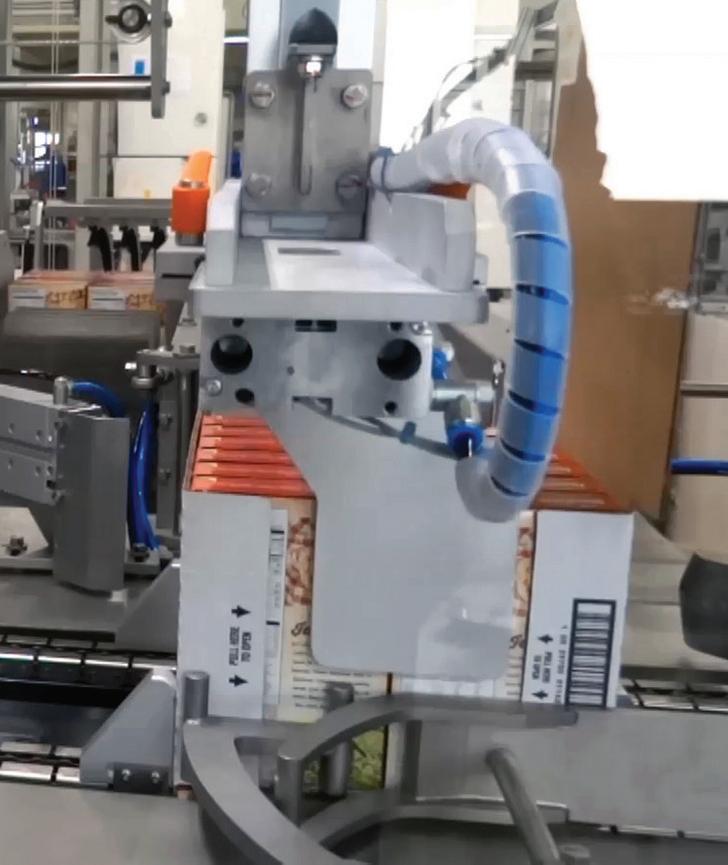
You make it. We pack it. End-of-line packaging solutions for the bakery, snack and tortilla industries. BPA loads your packaged and naked products into cases and various secondary containers including your hffs machines, wrapper chain in-feeds and indexing thermoform machines. We ASK. We LISTEN. We PARTNER.

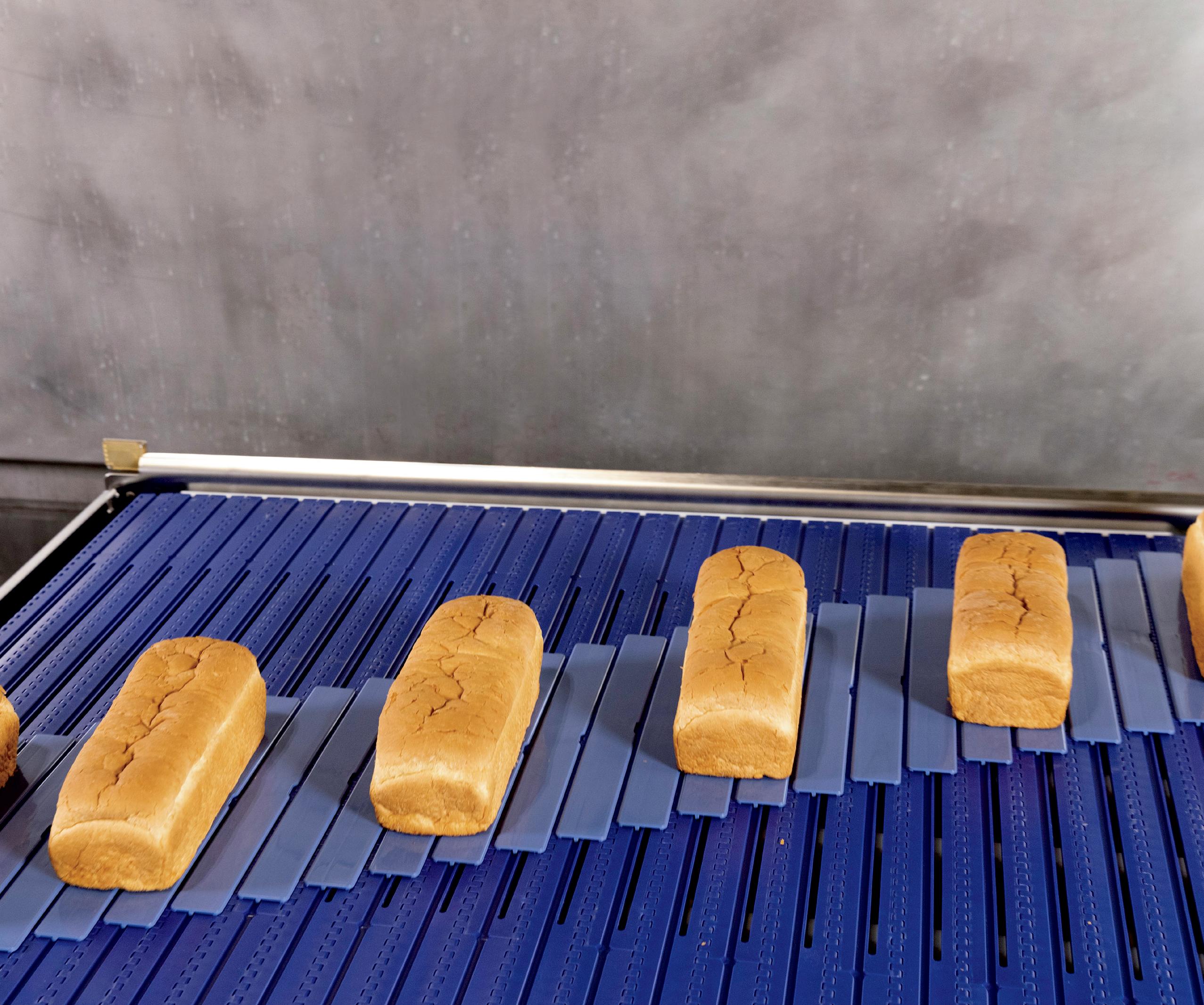

www.intralox.com



Intralox’s new Active Integrated Motion (AIM) Glide™ is a gentle, hygienic automation solution. It eliminates unscheduled downtime and jams while requiring 75% less maintenance and 50% less cleaning time than metal slat switches.


Gentle product handling while maintaining orientation
75% less maintenance
Reliable zero-jam automation
50% less cleaning time
Zero lubrication required
Paul Lattan
President - Principal
Steve Berne
Executive Vice President - Principal
Joanie Spencer
Vice President - Partner
Paul Lattan
Publisher | paul@avantfoodmedia.com
816.585.5030
Steve Berne
Director of Sales | steve@avantfoodmedia.com
816.605.5037
Erin Zielsdorf
Account Executive | erin@avantfoodmedia.com
937.418.5557
Joanie Spencer
Editor-in-Chief | joanie@avantfoodmedia.com
913.777.8874
Mari Rydings
Editorial Director | mari@avantfoodmedia.com
Jordan Winter
Creative Director | jordan@avantfoodmedia.com
Olivia Siddall
Multimedia Director | olivia@avantfoodmedia.com
Annie Hollon
Digital Editor | annie@avantfoodmedia.com
Maddie Lambert
Associate Editor | maddie@avantfoodmedia.com
Lily Cota
Associate Editor | lily@avantfoodmedia.com
Beth Day | Maggie Glisan
Contributors | info@commercialbaking.com







Commercial Baking is published by Avant Food Media, 1703 Wyandotte St., Suite 300, Kansas City, MO 64108. Commercial Baking considers its sources reliable and verifies as much data as possible, although reporting inaccuracies can occur. Consequently, readers using this information do so at their own risk. Commercial Baking is distributed with the understanding that the publisher is not liable for errors and omissions. Although persons and companies mentioned herein are believed to be reputable, neither Avant Food Media nor any of its employees accept any responsibility whatsoever for their activities. Commercial Baking magazine is printed in the USA and all rights are reserved.
No part of this magazine may be reproduced or transmitted in any form or by any means without written permission of the publisher. All contributed content and advertiser supplied information will be treated as unconditionally assigned for publication, copyright purposes and use in any publication or digital product and are subject to Commercial Baking ’s right to edit.
Commercial Baking ISSN 2767-5319, / USPS Publication Number: 25350 is published in February, April, June, July, August, October and December, in print and digital formats by Avant Food Media, 1703 Wyandotte St., Suite 300, Kansas City, MO 64108. Periodicals Postage Paid at Kansas City, MO, POSTMASTER: Send address changes to Commercial Baking, c/o Avant Food Media, 1703 Wyandotte St., Suite 300, Kansas City, MO 64108.
Circulation is tightly controlled, with print issues sent only to hand-verified industry decision makers and influencers. To apply for a free subscription, please visit www.commercialbaking.com/subscription

Pfening's new generation Enviroblender (EBM 7) brings unmatched precision and sustainability to your process. With a true plug-and-play design, this rugged system ensures accurate water metering, consistent temperature blending, and zero waste operation, saving resources and streamlining production.
For accurate water metering with Zero Waste, the EBM 7 is the smart choice.
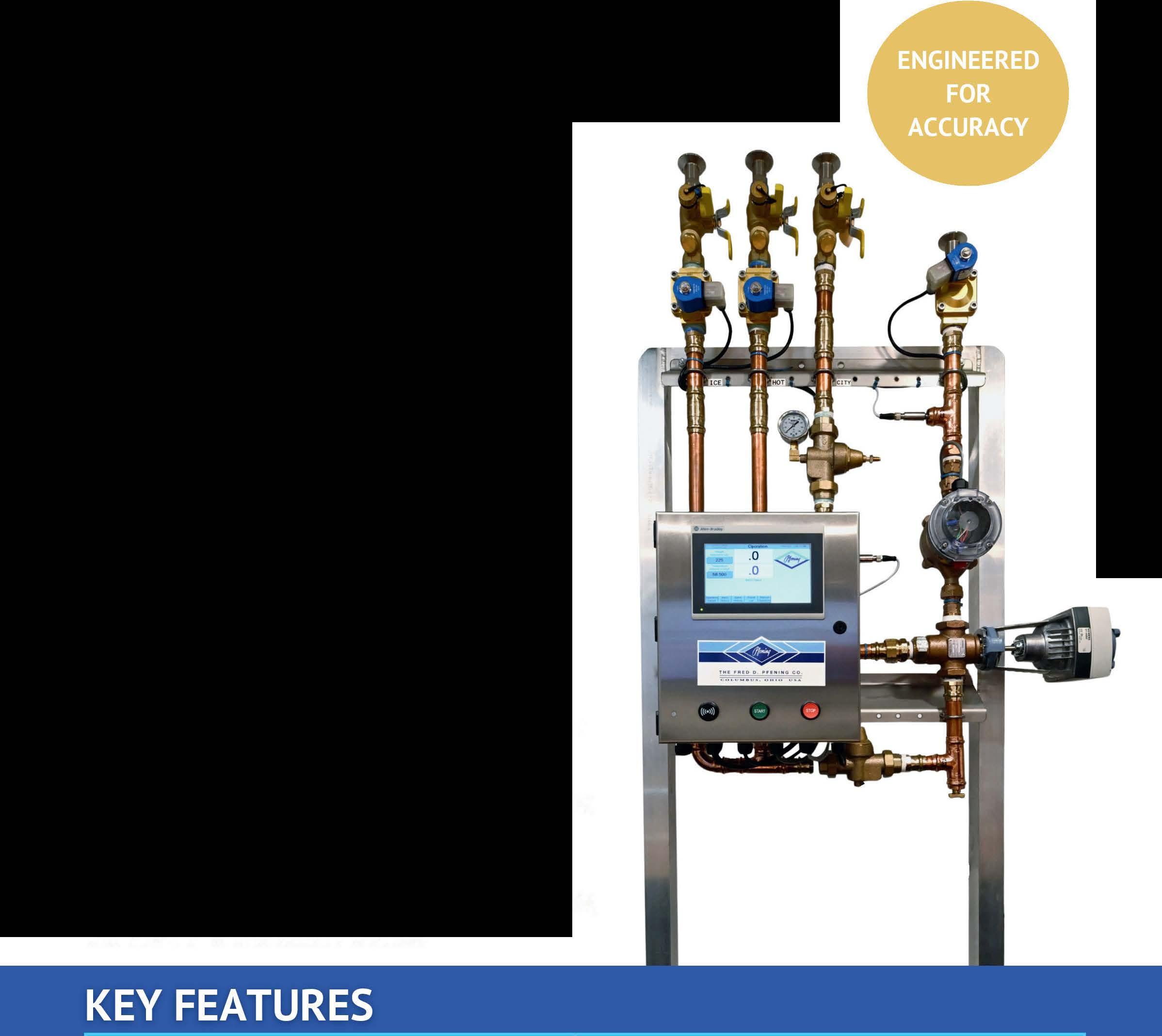



Look for QR codes that contain exclusive digital content throughout the issue.

Ditsch USA: A Twist on the Twist
Cover: Ditsch USA, the US division of the 100-year-old German company, is poised to disrupt the pretzel category with all-new takes on this beloved German staple. Read more on page 20.
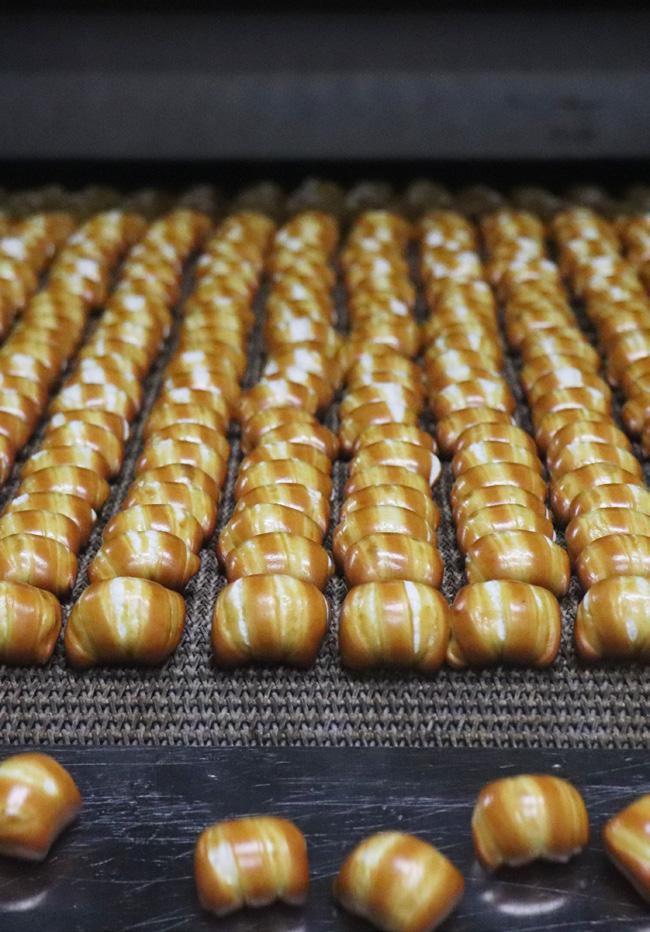
Sarah Testa: Tailor-Made Trailblazing

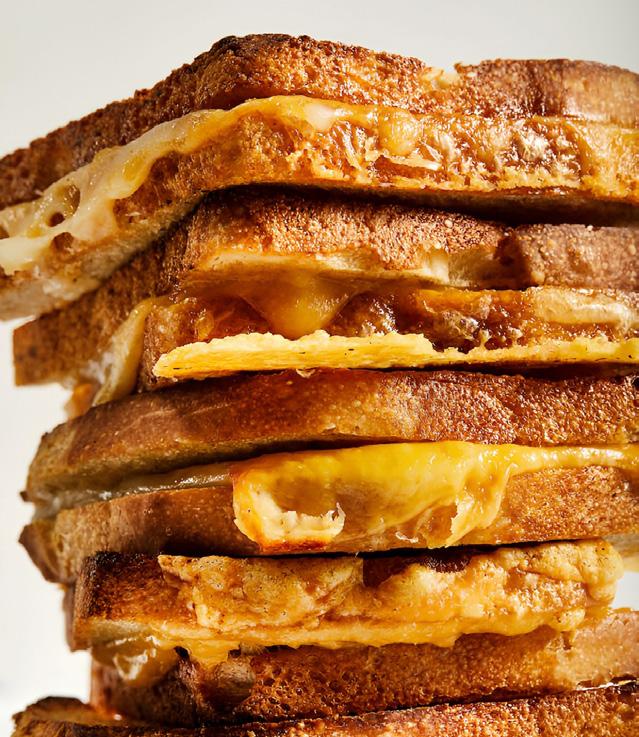

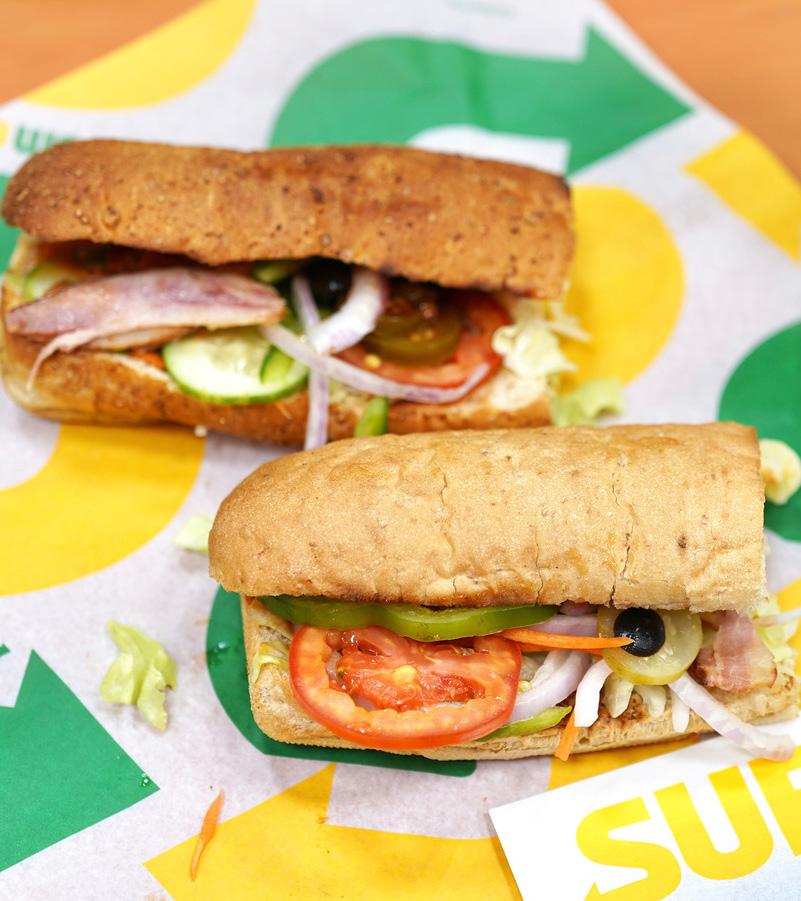




Fully automated and efficient baking solutions featuring key modular components that minimize manual input while maximizing throughput. Designed for specific product and space requirements, these systems optimize costefficiency and accelerate return on investment, delivering greater consistency and repeatability in both quality and appearance.


Liner or Greaser
Depositing

High Capacity Serpentine Solution for all Bakery Categories
Washing / Sanitizing & Drying
Dough Mixing Specialists
Managing Product Climate Clean Rooms
Complete Cake & Sweet Goods Processing Lines
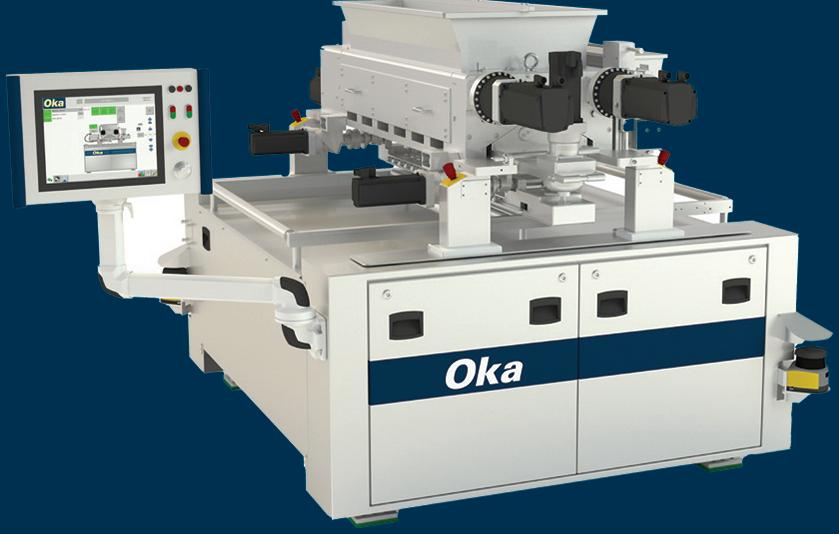
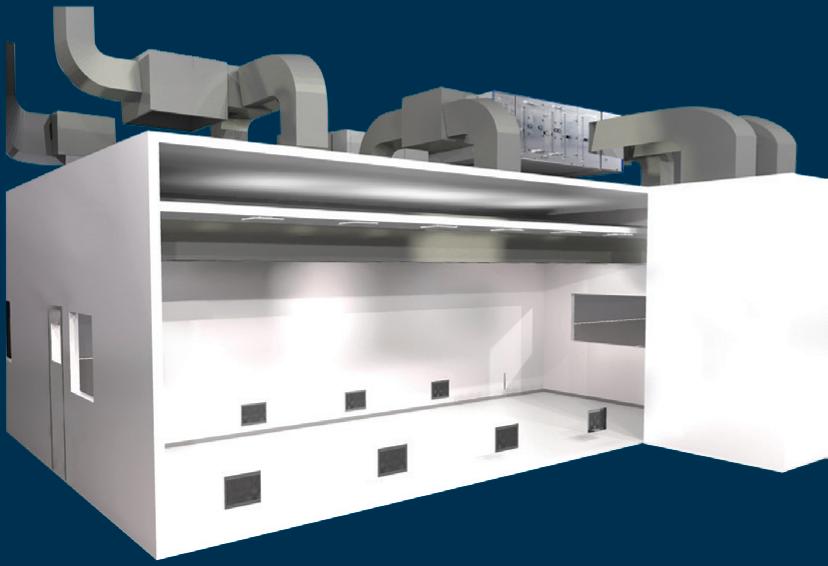
WELCOME OKA AND FRIGOMECCANICA TO
Oka is recognized for its precision engineering in extrusion, molding, depositing, and cutting technologies for industrial bakery and confectionery production.
Frigomeccanica is a global leader in drying, defrosting, fermentation, refrigeration, and preservation systems that extend product shelf life while maintaining premium food quality.
Together, these additions strengthen our full-line solutions, expand our capabilities in bakery and protein processing, and reinforce our commitment to supporting food producers worldwide with advanced, customer-driven technologies.

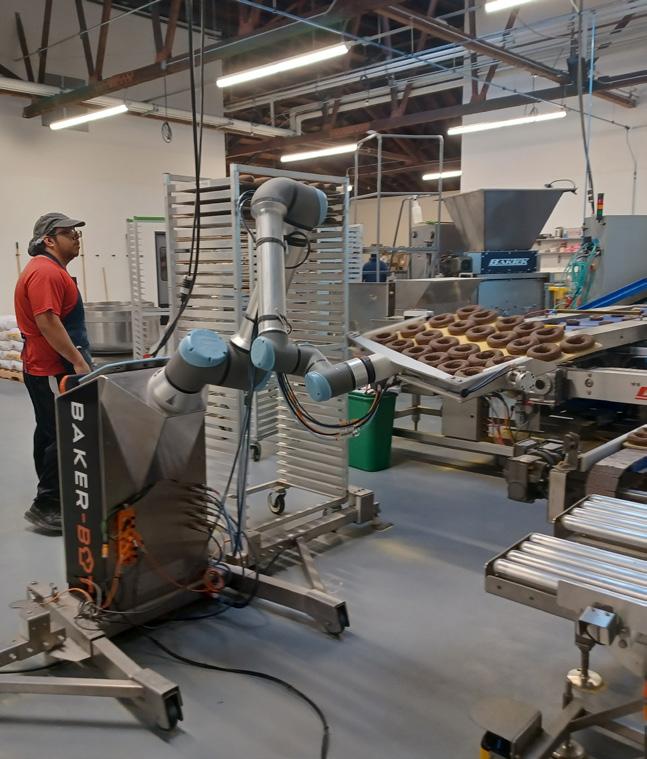



JOANIE SPENCER Editor-in-Chief | joanie@avantfoodmedia.com

WATCH NOW:
Joanie Spencer reflects on IBIE and looks forward to the innovation ahead. Sponsored by Bundy Baking Solutions.
If you’re anything like me, you’ve returned from IBIE equal parts exhausted and energized. As an industry, we spent a week in Las Vegas making new connections, visiting with old friends and identifying where we go from here.
During the show, there was a lot of discussion around the changing consumer landscape, especially in terms of how people are balancing health concerns with the desire for unique food experiences. That’s driving much of the product innovation in our industry, and it’s only the start.
Identifying what needs must be filled is Step 1 … understanding how to fill them is where the work begins. Between record-breaking educational content and countless supplier innovations on the show floor, IBIE provided the tools bakers need to get that work done. This issue is dedicated to not only insight from the Baking Expo but also from bakers using technology in all-new ways to develop products that serve specific need states and the hottest new retail channels.
Our October issue not only marks the entry into the fourth quarter of an undeniably turbulent year, but it’s also Commercial Baking ’s 20th regular issue since launching in the midst of the COVID19 pandemic. Through all the ups and downs the industry has experienced in recent years, our team is proud to have shared this ride with you.
Then again, the ride isn’t over. Remember, the work has, in many ways, only just begun.
















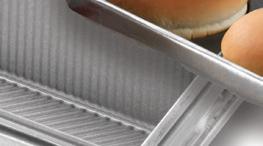










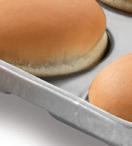



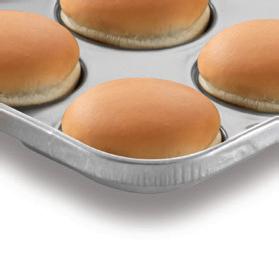







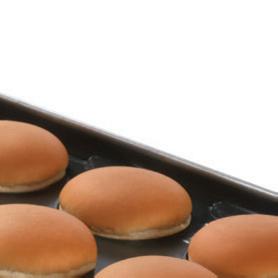

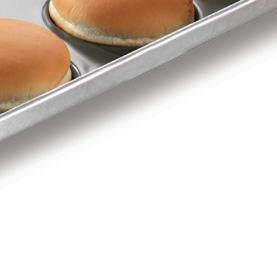









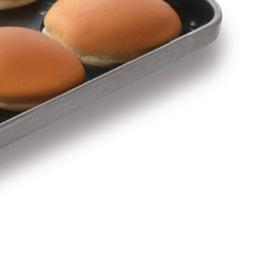








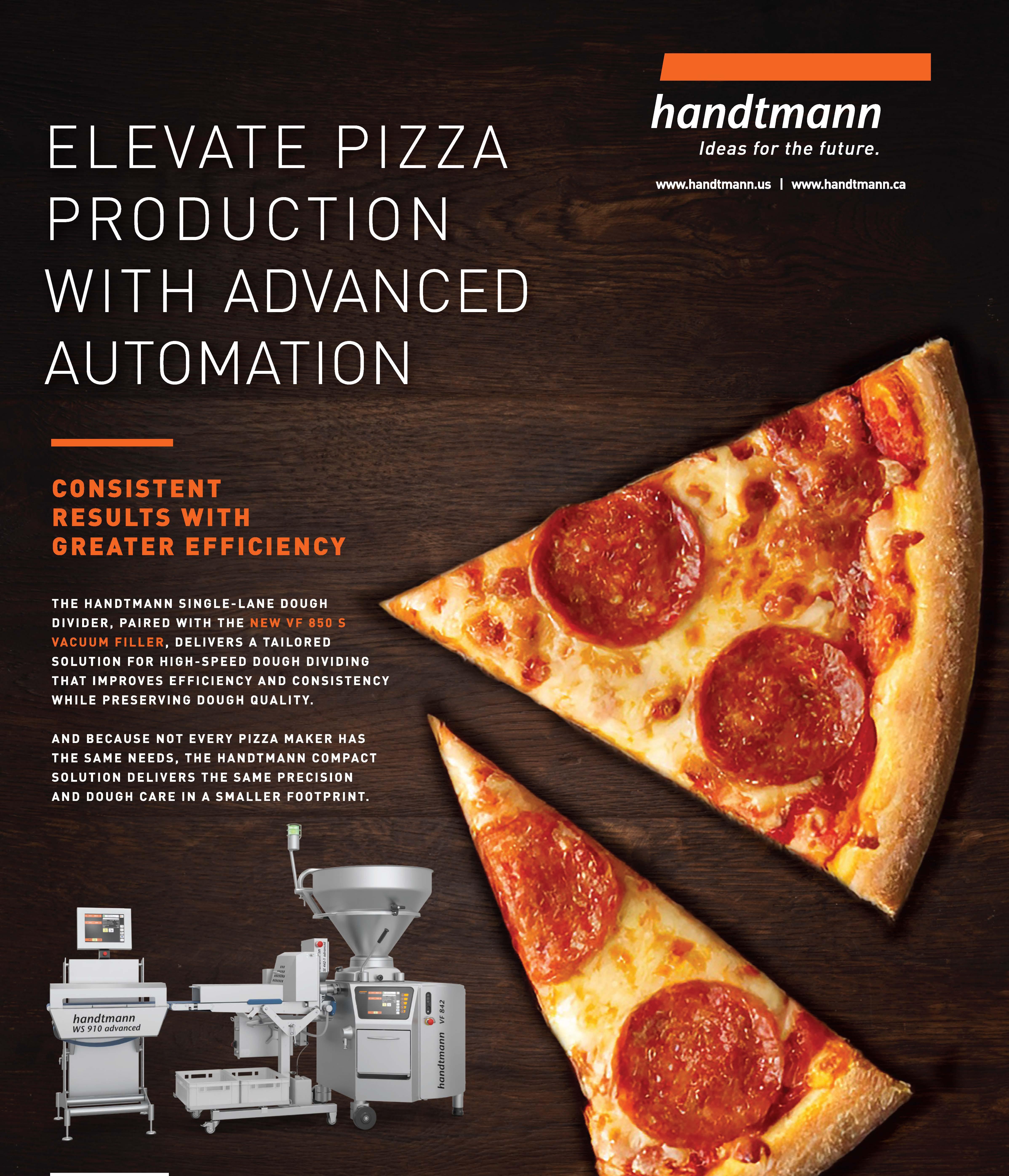


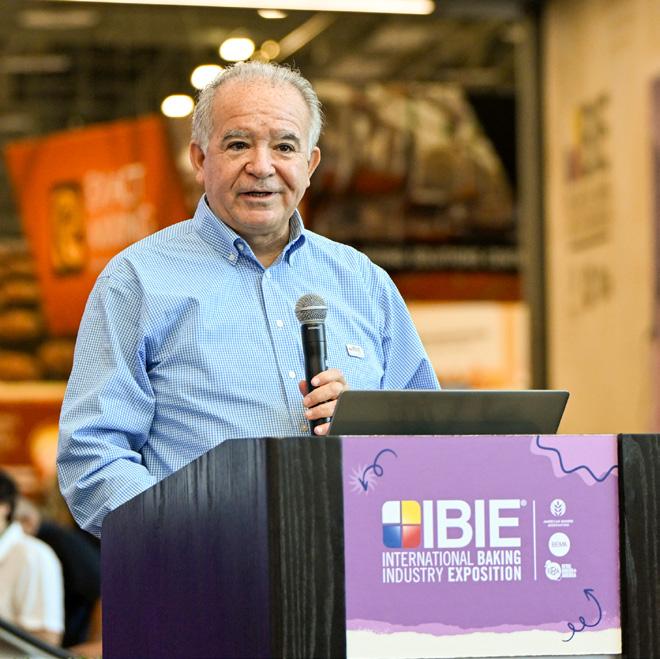
“Every time we gather at IBIE, the world looks a little different, but the spirit of this industry remains the same: resilient, innovative and always moving forward.”

“This
is the culture I want to create: A workplace and company where it’s not just about individual jobs … it’s about every team member being an integral part of a wider culture of care, growth, empowerment and celebration.”
“Social media has truly emerged from a critical marketing tool to a selling channel. More than 60 percent of consumers are influenced to buy sweet bakery items based on something they saw on social media.”
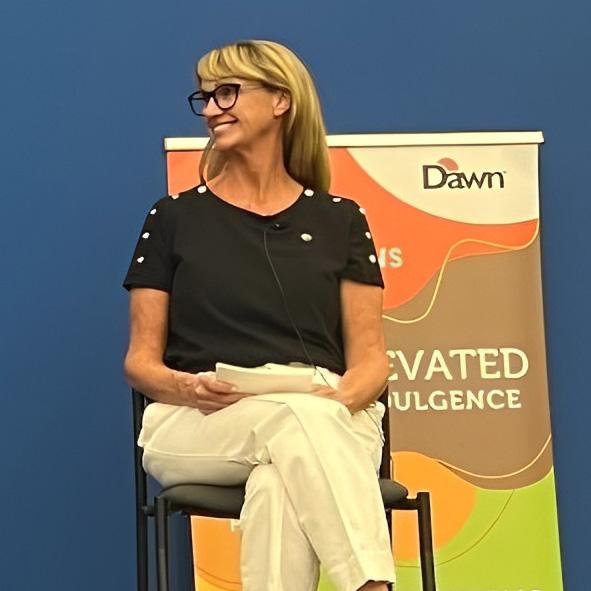
“Younger generations are looking for that purpose-driven job. They’re not just looking to go clock in from 9-5.”
Eric Dell | president and CEO | American Bakers Association (ABA) On the next generation of bakers, during ABA’s Bake to the Future podcast
Photo
of BEMA


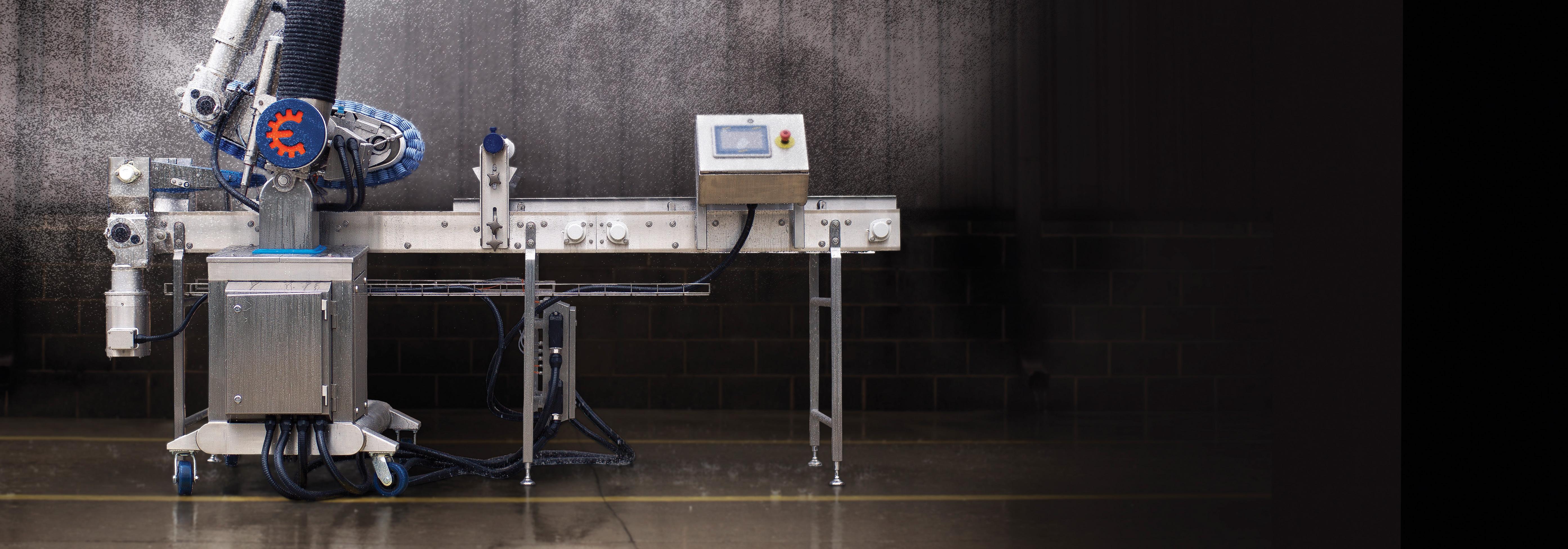



•FDA,
•BRC
“No
one has it figured out; you never stop needing support. Be vulnerable with your team because we’re all human, and sometimes we need reassurance that our leaders are people just like us.”


“Food science is far more complicated than an inaccurate, one-size-fits-all ‘junk food’ label. It fills nutrient gaps, reduces food insecurity and increases food affordability.”
Edward Hoffman | head of communications | Upcycled Foods Inc. LinkedIn post on ultra-processed foods
“If you’re crafting a novel food or beverage, you want to put it alongside something a little more familiar. Right now, consumers want new foods, but they don’t want off-the-cuff fusion that they don’t recognize at all.”
Suzy Badaracco | president | Culinary Tides Inc. On evolving flavor preferences
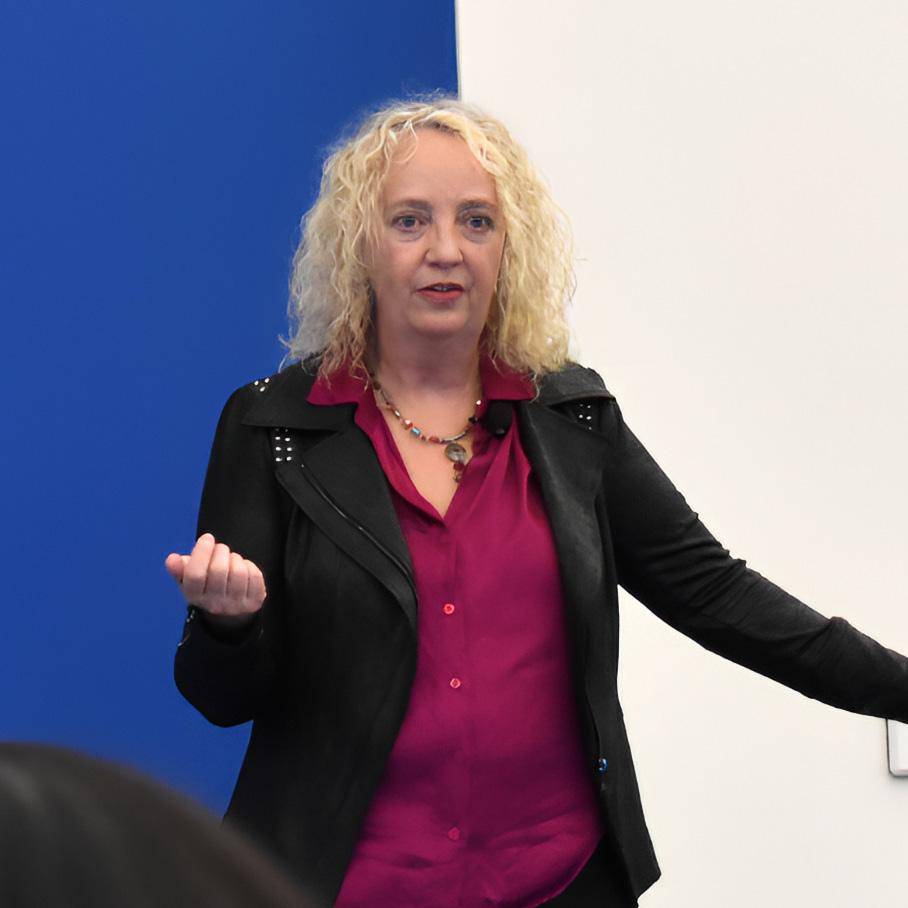

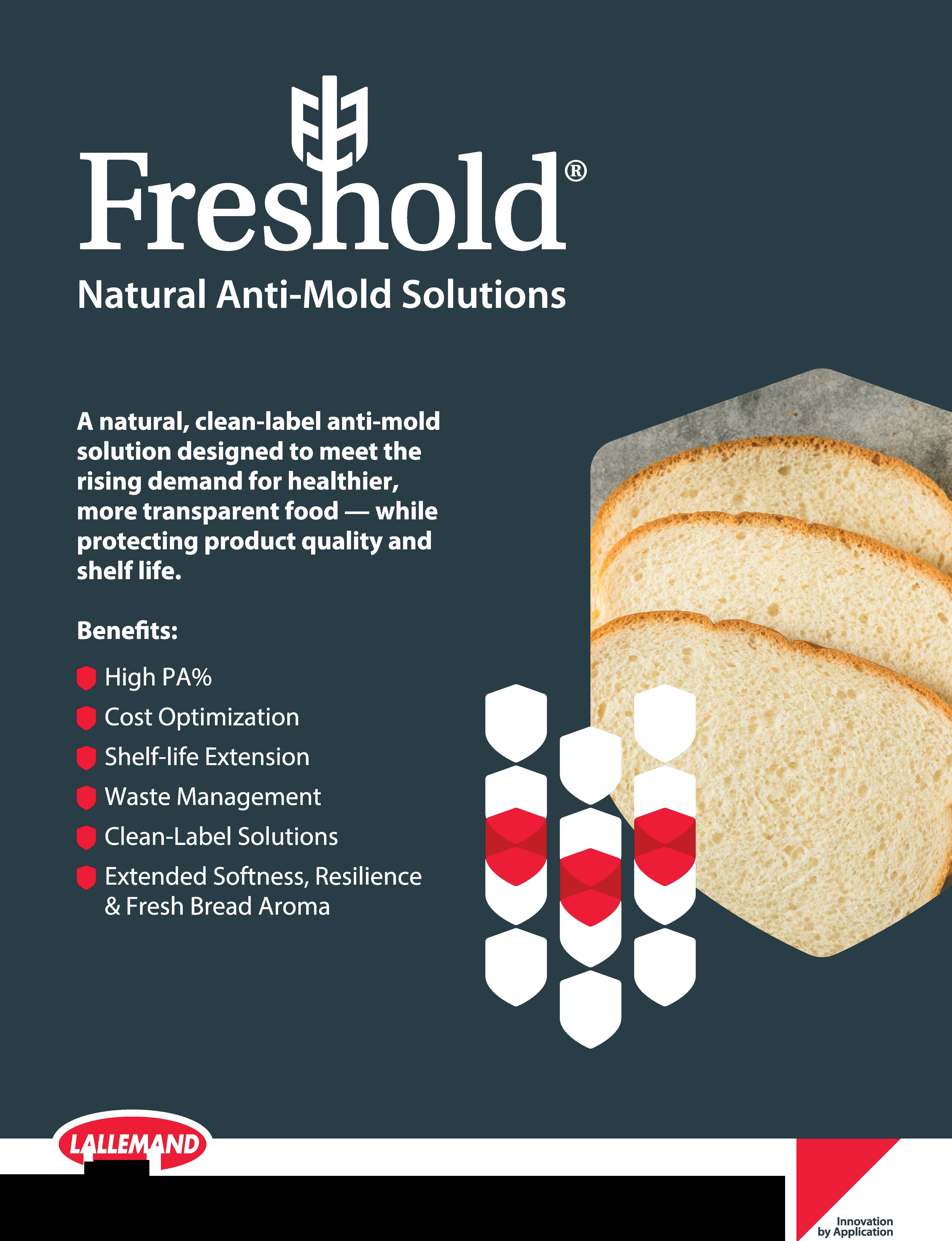
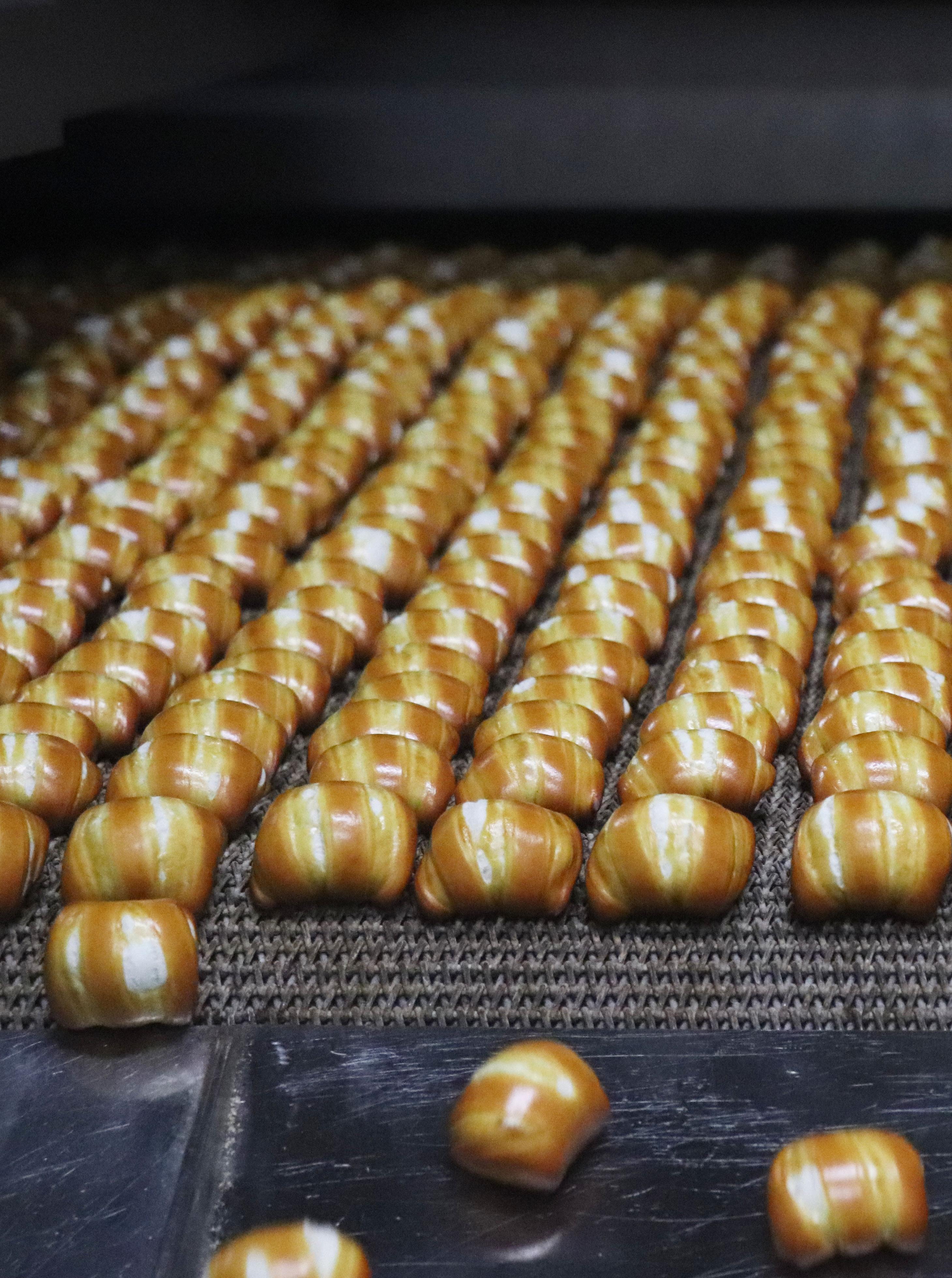
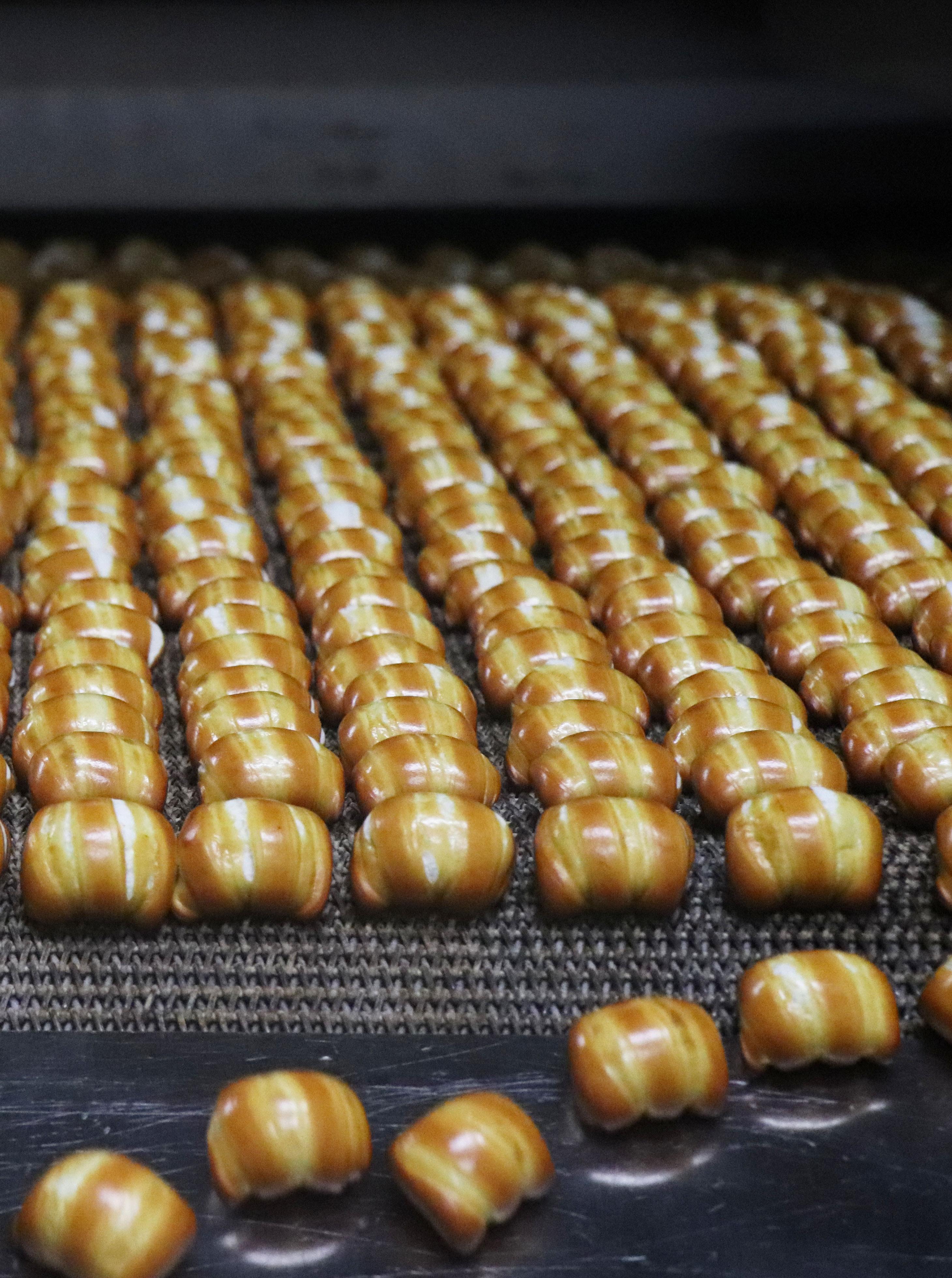
With a new facility and technology upgrades, Ditsch USA is redefining what’s possible for pretzels while staying true to its core.
BY JOANIE SPENCER
When a century-old company is known for a centuries-old product, is there room for innovation? Absolutely. That is, so long as the foundation is not forgotten. For Cincinnati-based Ditsch USA — the US division of the German company — innovation can only happen by sticking to the time-honored process of pretzel making.
While Ditsch has been making pretzels in Germany and around the world since 1919, it officially entered the US market in the early 2000s.
Pretzel Baron, founded in Cincinnati in 2014 by a certified master baker and well-known “pretzel expert,” caught the global producer’s eye. In 2017, Valora Group, Ditsch’s parent company, acquired Pretzel Baron with its 85,000-square-foot facility, launching Ditsch USA.
In just over five years, Ditsch USA outgrew the original bakery, and set out to open a 175,000-square-foot facility less than two miles down the road from its flagship. With the new plant — and equipment additions and upgrades to the original — the company is poised to not only provide consumers with an authentic pretzel experience but also disrupt the entire category with all-new takes on this beloved German staple.
“In Europe, pretzel products are breakfast or lunch items,” said Thorsten Schroeder, CEO of Ditsch USA. “In the US, it’s a snack, appetizer or dinner item. The use case is very different, and that gives us opportunities. But it also makes us different in terms of how it’s perceived and consumed.”
Compared to European countries like Germany, pretzels are just hitting their stride in the US.
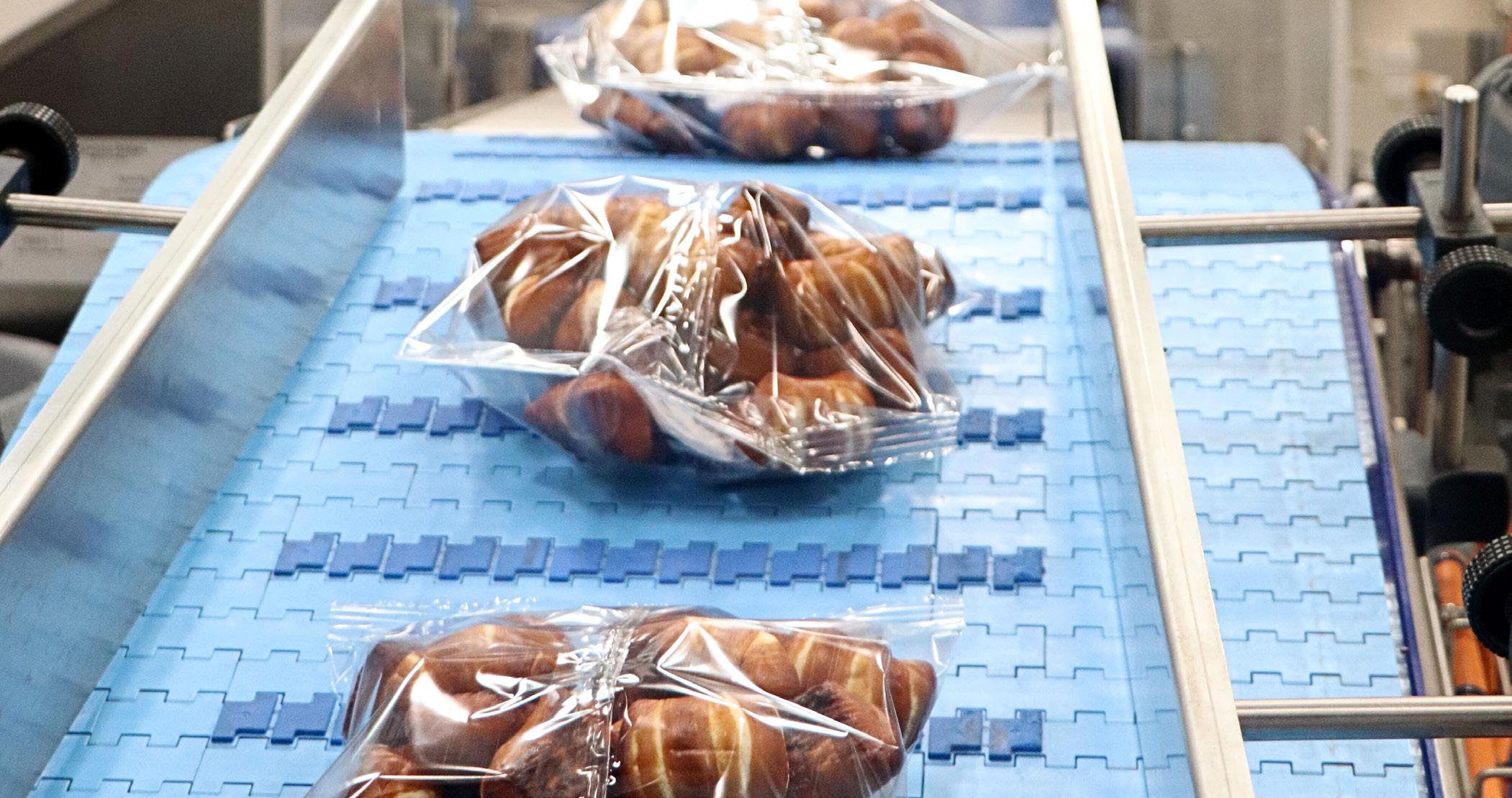
“The soft pretzel has really just broken the ice in the US,” said John Stefanik, VP of sales and marketing for Ditsch USA. “That’s been a big part of the strategy behind our expansion, so we’re ready for significant projected growth in an already mature category.”
Innovating while maintaining authenticity for a traditional product requires staying true to how each iteration of it is used.
Just as with another German staple — beer — American consumers typically like their pretzels a little less stout. That’s for a couple of reasons. While a pretzel in Germany is darker, heavier and a bit more bitter, US consumers prefer a lighter pretzel that’s meant for dipping. Both styles are perfectly designed for their intended use: experiential enjoyment in Germany vs. multi-tasking in American markets such as at the ballpark or in a sports bar.
“Our pretzels are made to meet the needs of the US market,” Schroeder said. “It’s

a perfectly made pretzel from a classic recipe, but the taste profile and softness are designed to meet those preferences.”
Ditsch USA first disrupted the US market in 2019 with its pretzel bites, marking the brand’s first unique spinoff. Deviating from the typical extruded-style pretzel, the company created a bite that married flavor and function.
“It made a significant impact on the market when a broader range of co nsumers realized how a pretzel can be an indulgence or a carrier,” Schroeder said. “We showed the consumer that pretzels can be more than just a snack, and they can be just as delicious — if not better than — the dip.”
That can’t happen in a vacuum; it requires a deep understanding of the consumer trends that are driving demand.
“We have to look at what the trends are in terms of what people look for and why
they’re going after it,” said Jason Walley, head of product and innovation for Ditsch USA. “That can range from flavors to health concerns. But we also have to stay in tune with where the next opportunities are as well.”
One area of focus is menu development and looking for ways to introduce pretzels into untapped eating occasions, and the R&D team is exploring how the product might support menus in other ways.
“The way we form our bites makes them really fluffy and delicious,” Walley said. “That prompted us to wonder, ‘Can we use that same method to go for a bun that’s used for sandwiches?’ And from there, we looked at all kinds of forms like the swirl and panini. It’s not only opening up new use cases, but it’s also expanding the types of markets we serve.”
During the International Dairy Deli Bakery Association (IDDBA)’s annual conference and expo, held earlier
INTRODUCING SINGLE- AND DOUBLE-ARM SIGMA MIXERS FOR MAXIMUM FLEXIBILITY
Engineered to the highest hygienic standards, the multi-purpose SNAX Single Sigma and Double Sigma Arm Mixers offer reliable, heavy-duty mixing for a wide range of snack foods, including wire-cut cookies, energy bars, pie doughs, granola, pretzels and other specialty snacks up to 3,300 lbs (1,497 kg). Simplified, mechanical dual-tilt mechanisms ease the loading of minor ingredients and seamlessly integrate with dough handling systems.AMFFusionmixerscomeequippedwithoptionalDough Guardian Plus technology combining AMF’s mix-to-energy data analysis with a live video feed from inside the mixer to fine-tune your mixing process.
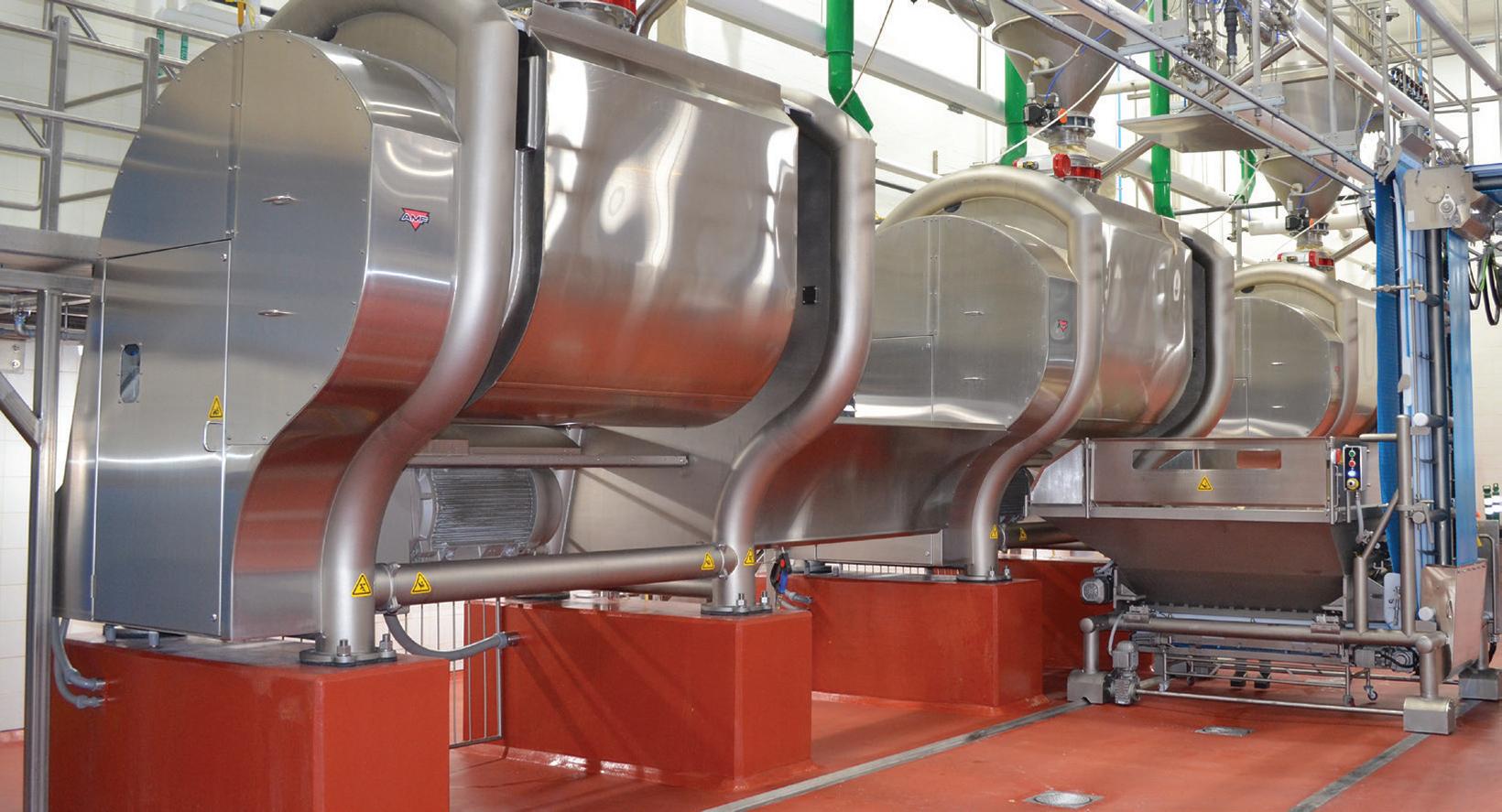
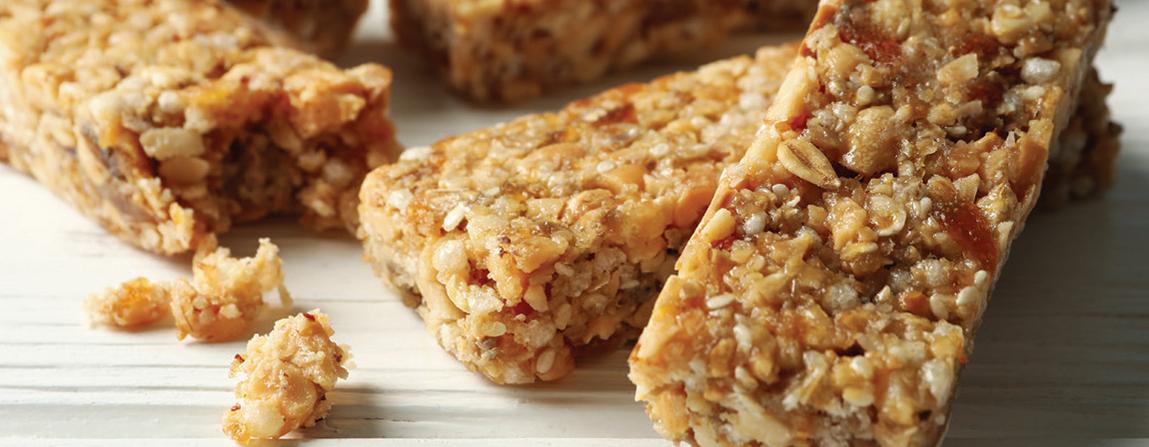
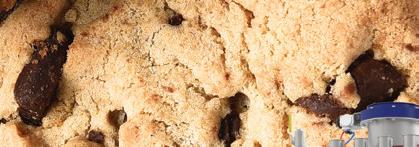




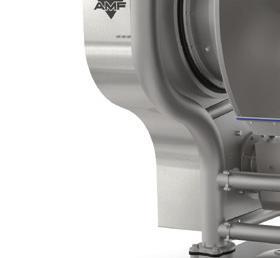








60 YEARS OF PROVEN MIXER PERFORMANCE


ADVANCED DOUGH MONITORING THROUGH DOUGH GUARDIAN PLUS
SANITARY, TUBULAR FRAME DESIGNS
SINGLE END BELT DRIVE FOR OPTIMAL DURABILITY
SCAN TO

this year in New Orleans, Ditsch USA launched two new items — panini- and swirl-style pretzels — presented with new flavor varieties and suggested uses and pairings.
As AI tools become more prevalent in product development, Ditsch USA has tapped into technology that uses scientific analysis to discover new use cases and create menu ideas based on the flavor profiles or product formula.

Jason Walley explains why product development must stay true to the core of the brand.
“We’re able to use that to showcase what our customers can do with our products,” Walley said. “It’s not just, ‘Here’s a new shape or flavor, go do something fun with it.’ We can realistically demonstrate distinct, innovative things that can be done with an item that’s already on a menu but might not be associated with a pretzel yet. It also empowers chefs and restaurateurs to think more creatively about the pretzel and how it can be presented.”
Also on display at IDDBA were high-fiber items that play into trending consumer health needs. With the surge in health awareness and pharmaceutical weightloss strategies, Ditsch USA keeps specific needs on the radar, including interest in protein and fiber.
The first step is focusing on the basic makeup of a classic pretzel: flour, water, salt, yeast and fat. By understanding how these elements work together, formulators can create new iterations that

play into modern health needs without sacrificing quality or taste.
“We don’t just rely on [customers] to say, ‘This is what I need.’ We collaborate with them directly.”
John Stefanik | VP of sales and marketing | Ditsch USA
“When we look at the wheat and fat, we can see opportunities,” Walley said. “We have to consider the wheat in terms of where and how it’s grown, as well as the blend of the wheat. We can do the same with the fat. This creates opportunities for higher fiber. Protein is super popular right now, but without the right amount of fiber paired with it, it’s more or less useless. It’s got to have the right nutrients. You can’t have protein for the sake of being ‘high protein.’ It has to actually provide the nutrition that’s needed to support a high-protein diet.”
No, this level of innovation doesn’t happen in a vacuum, especially when regulations and consumer demands can change on a dime. These days, speedto-market often hinges on collaboration.
On one hand, Ditsch USA is collaborating with its customers to create new flavors, formats and uses.
“We’re walking side by side with our customers,” Stefanik explained. “We don’t just rely on them to say, ‘This is what we need.’ We col laborate with our customers directly, and we have a specialized segment and sales team with close connections, so we’re always ready to help them.”
On the other hand, the team has to first collaborate internally and with supplier partners to understand what’s functionally possible. For that, resources such as Puratos’ Taste Tomorrow research become valuable tools.
“We see Puratos as knowledge partners,” Schroeder said. “The knowledge they bring to the table is absolutely powerful, and it’s an incredible collaboration.”
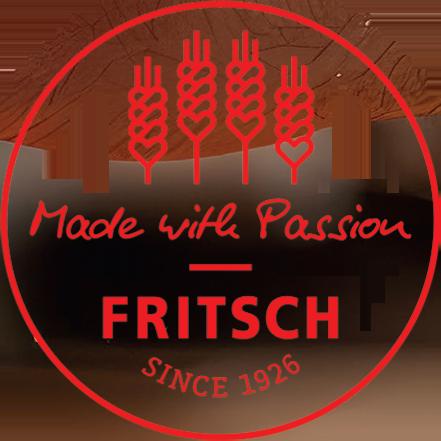


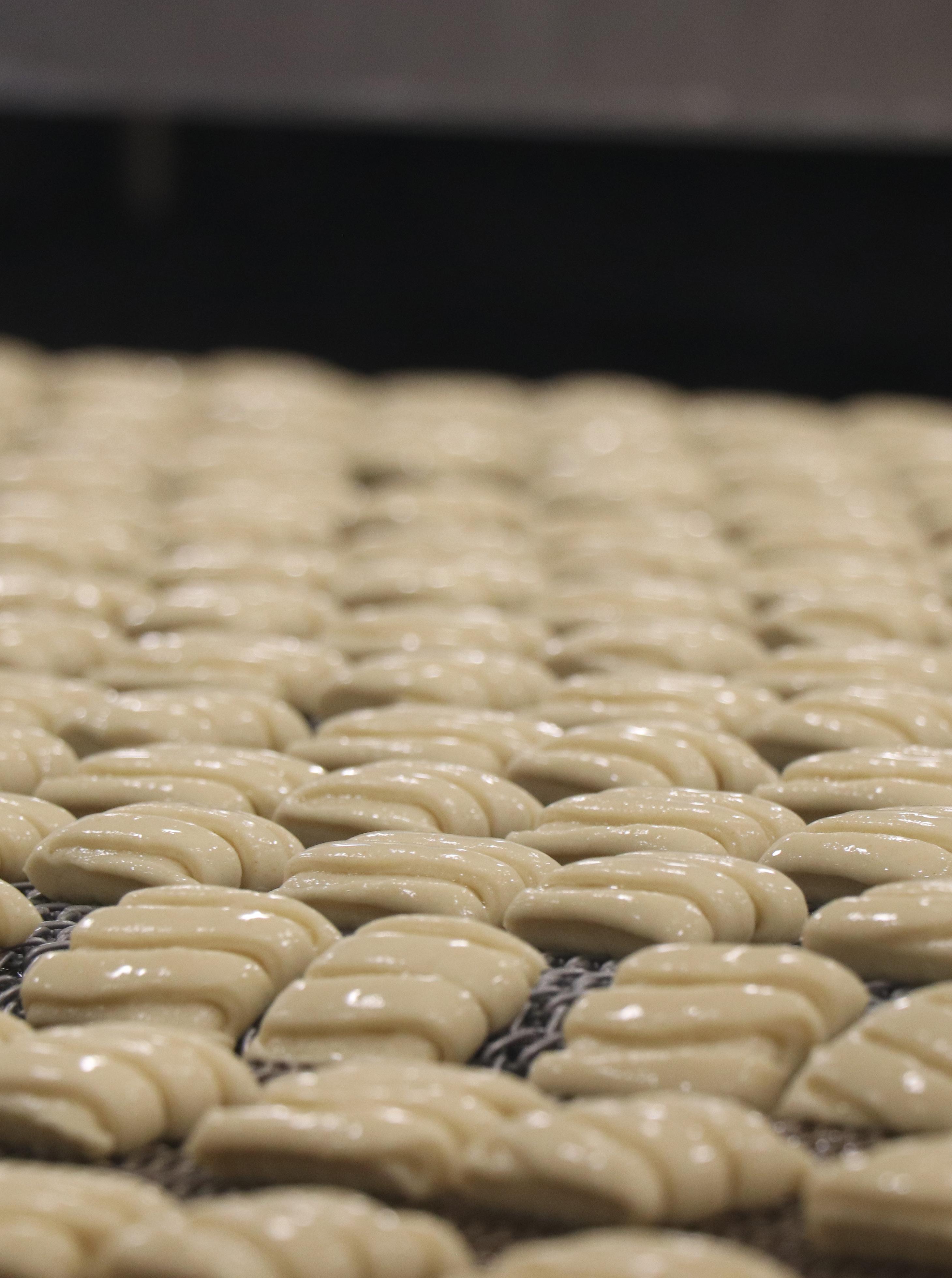
Once products are developed, testing is critical to bring them to fruition.
“It’s easy to be at the bench and make something look great, but what happens when you bring it on the production line?” Schroeder said. “That’s a key point in the development process. Before we can present a finished product, we have to know we can make it in an industrial scenario and keep the quality while giving it momentum. It doesn’t make sense to create a shape we can’t replicate with our current equipment or innovative modifications.”
While the first line in the original bakery will eventually become an in-house test line, Ditsch USA has tapped into the new Puratos Pilot Bakery, powered by AMF Bakery Systems, to test new product iterations on a fully functional industrial line without disrupting daily operations at either of its own facilities.
“The equipment at the Pilot Bakery is more or less ‘cut in,’ Stefanik said. “We can roll pieces in or out or reconfigure the line, depending on how we need to replicate one of our lines and the technology we have in each facility.”
Collaborating with OEM partners eased pressure as Ditsch USA settled into operating two plants, with the new facility having started up in late 2024. Today, both bakeries have a total of five lines, and any product can be made on any line in either location.
“We’ve designed the bakeries to have the flexibility and speed to react to almost any customer demands,” Schroeder said. “We can achieve that by not limiting specific items to one site, so our equipment is set up to make nearly all products at both sites.”
Capacity was the primary objective for opening the second bakery, but adding flexibility also allows for redundancies that create a backup scenario.
“Redundancy equals security for our customers,” Stefanik said. “It’s like we’re our own secondary supplier, just 10 minutes down the street. As COVID exposed, supply chain is key, so there was a lot of thought put into how we designed and mirrored the facilities.”
The flagship bakery originally had one production line with a MULTIVAC/ FRITSCH Multi Twist, and today the bakery houses three lines with several Multi Twists working in tandem.
“Our twisters are a great example of how we approach innovation,” said plant manager Robert Cramer. “Yes, this is a machine that twists a pretzel, but there are several other things it can do in terms of forming other items. We can make adjustments depending on how we prepare and manage the dough.”
This “small but mighty” space is producing exponentially more than the original operation, in terms of not only output but also the creativity that goes into new product iterations. For example, the robotic scoring machine from ABI Ltd., scores with the utmost precision, enabling a customized score on practically any product.
“We could write your name on a pretzel with this machine,” Cramer said. “It’s that precise.”
Meanwhile, at the new facility, two AMF lines could produce bites, paninis, swirls and other items. The modularity of the mirror-image lines enables production of either one large run or multiple variations.
Bellarise$ BellaSOFT Ever Fresh bakes the best softness, resilience, and bite into all of your breads and buns.
Oh, and it's all-natural and clean label, too.
All-new Bellarise BellaSOFT Ever Fresh:
• Maximizes value by yielding the best softness for the longest time
• Protects your breads when stacked by offering top-notch resilience
• Creates a perfect bite that always reveals all the best In your breads
Our master bakers put their best into Bellarise* BellaSOFT Ever Fresh to help make your breads unforgettable. After all, you work hard at the bakery every single day, so we work hard to make sure all your efforts count.
Please contact us and order your sample today!

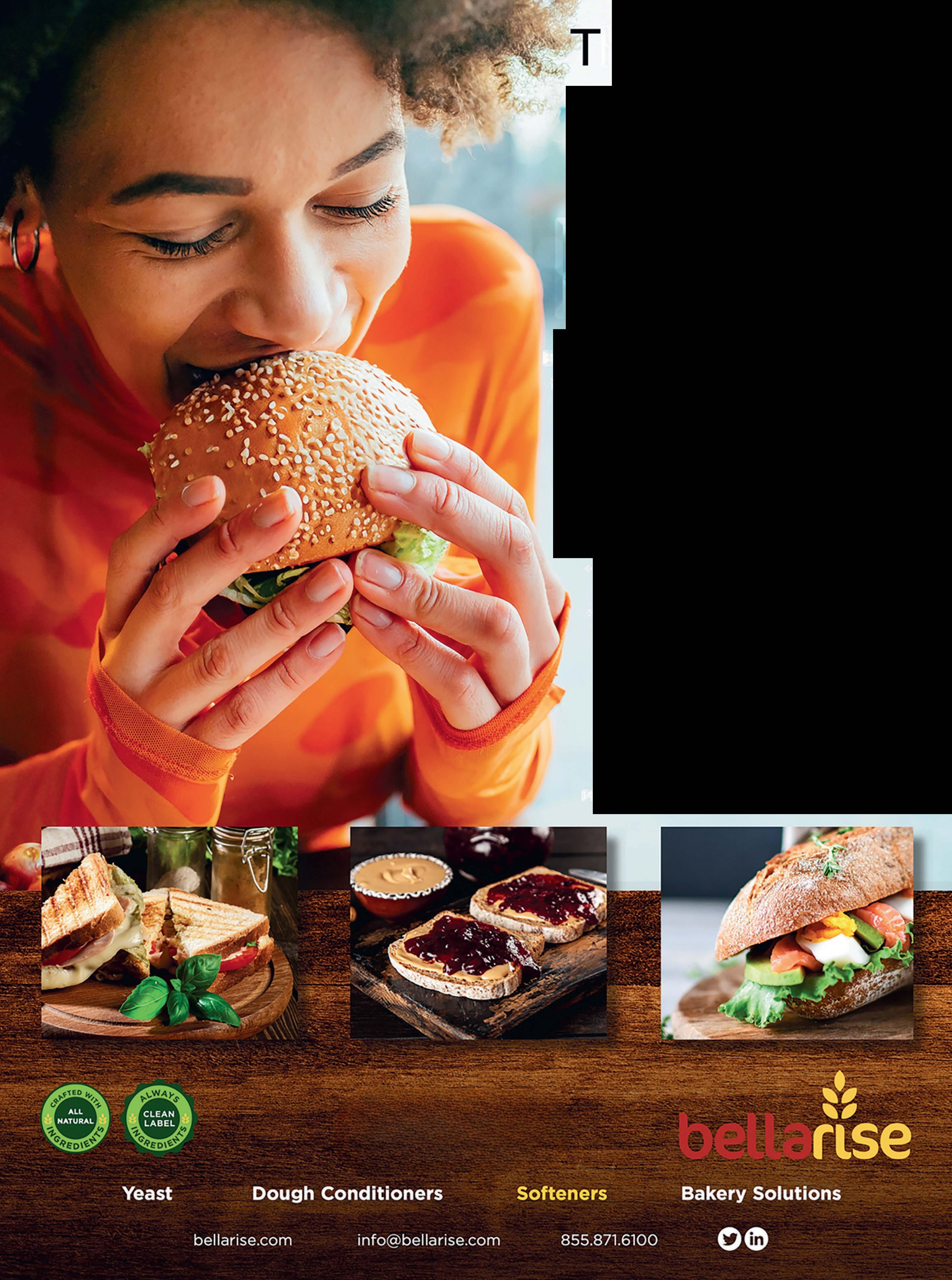

“One line may be doing bites while the other is doing something a little different,” Cramer said. “They’re versatile enough that we can plug and play into the central areas and alter the process enough to enable a specific innovation.”
Ditsch USA’s process might not be new to baking, but it is outside the norm for pretzel making. How the dough is nurtured and developed — starting with the Sancassiano mixers and through makeup and forming — results in a texture that’s arguably unmatched in the market, and it leads to further innovation.
“That’s how the magic happens,” Cramer said.
Tried-and-true equipment such as the mixers and the Spiromatic ingredient handling in both bakeries allow efficiency in producing this six-ingredient artisan product at scale. Of those six ingredients, three are handled through the Spiromatic system while the rest are hand-fed into the mixers.
And of course, soft, fluffy pretzels require a perfect bake; the makeup lines feed AMF tunnel ovens to deliver just that.
Then again, some innovation at the new bakery is changing the game in a totally different way. An all-CO2-driven freezer system supports the warehouse freezer and the one in production. It’s not only environmentally friendly but also eases total cost of ownership for freezing.
“The system is set up to handle cooling for the whole plant,” Cramer said. “We don’t have to add anything to it. That’s where bottlenecks happen, when we have to think, ‘How am I going to cool all of this? How much more ammonia do I need to add?’ But it’s all CO2, so it’s also environmentally friendly.”
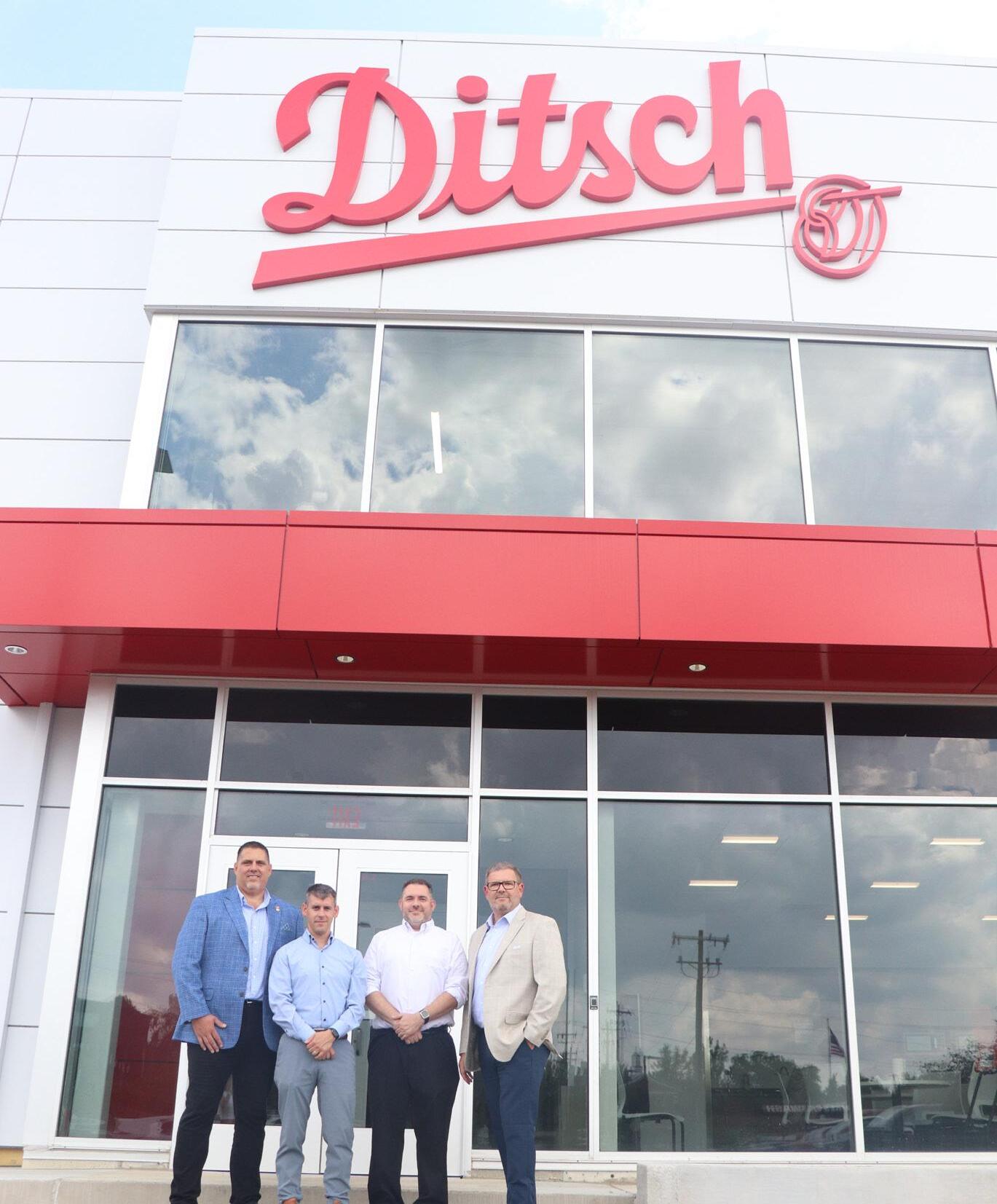
As the brand rides a wave of “Americanized” pretzel innovation in the US, the company is expanding its reach throughout all of North America … and beyond. Many food trends in the US are spinoffs of European originals, but that doesn’t mean they can’t make their way back across the pond, gaining attention of their own.
“The global market has come to really want Americanized things,” Stefanik said. “There are many people overseas who are intrigued by what we’re doing with our pretzel bites.”
That intrigue is converting to sales as Ditsch USA begins exporting orders overseas.
“But it only works when we stay true to our roots,” he added.
With all that’s happening, this isn’t the “Wild West” for pretzel making. The company’s stage-gate process ensures product development is done with intention, regardless of the speed. Creativity doesn’t mean the team simply lets imagination run wild. Even while stretching the limits of pretzel innovation,
































SMAR T AUTOMATION FOR SUSTAINABLE PRODUCTION


































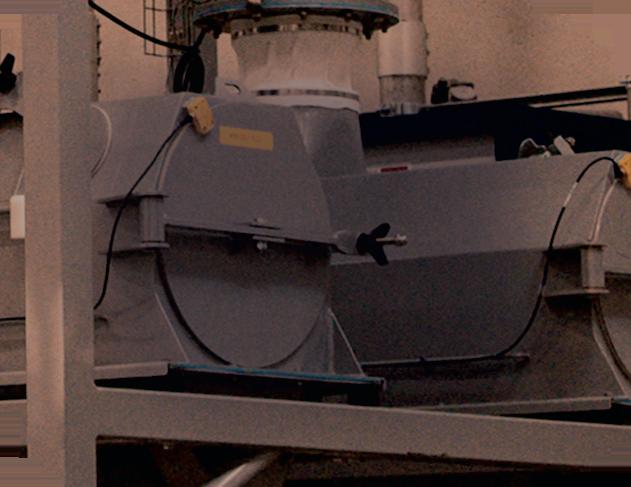
More than 60 of experience years

























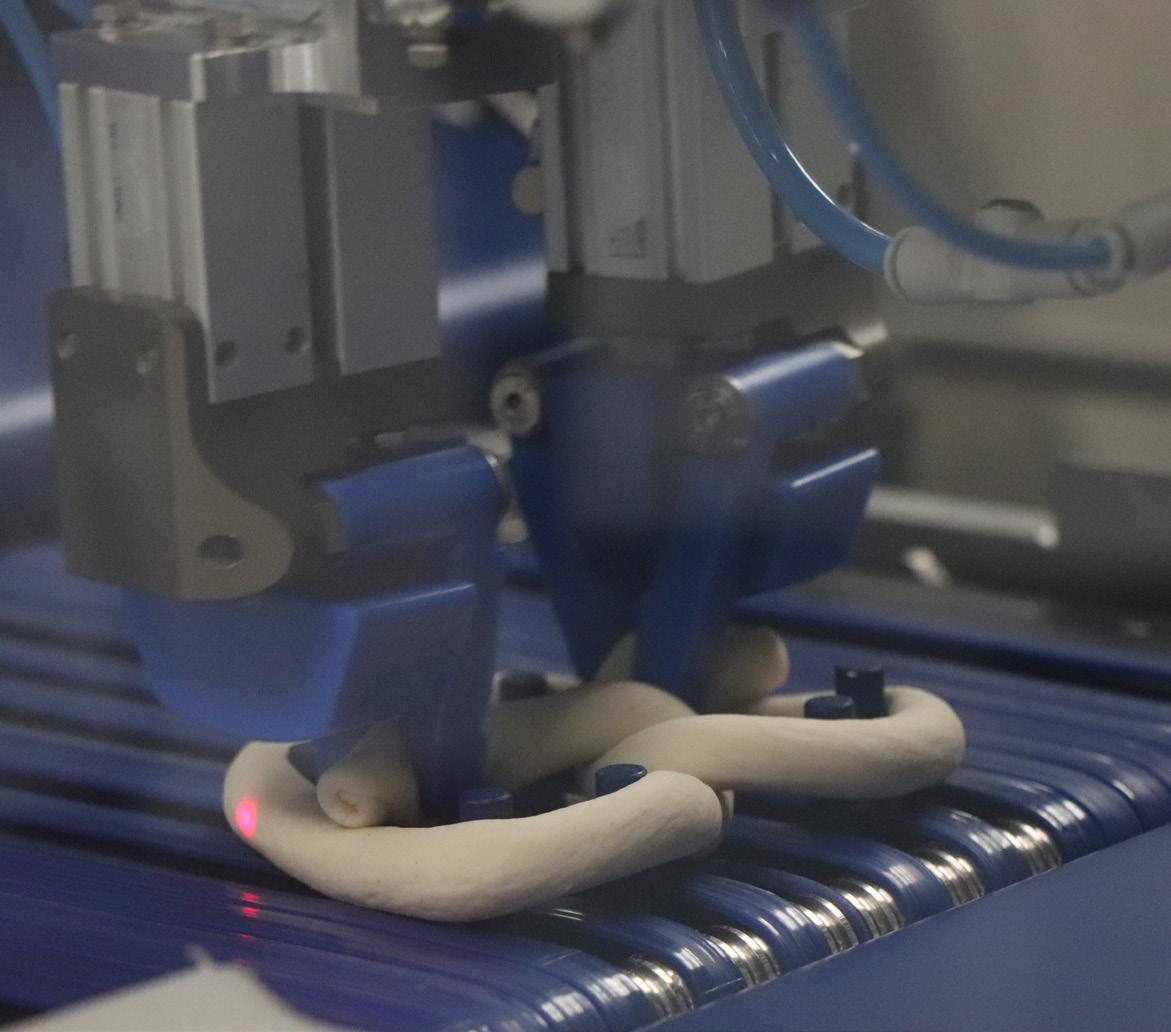
it must maintain Ditsch’s brand integrity and always stay true to the original formula.
“Do we want to bend to the left or right a little?” Schroeder observed. “Yes, we do. That’s important. But long-term, we must stay consistent, and development has to meet those standards.”
With room in the new bakery to add at least four more lines, as well as create space for dedicated distribution and on-site R&D, growth will come at the pace demand dictates.
“We’ve created a ‘plug and play’ situation,” Stefanik said. “With it, there’s no challenge we can’t face.”
The USA team has struck a balance between honoring a century of Ditsch’s expertise — and even more history of its product — with adopting new technology and adapting to modern American tastes. The result is a group of “pretzel ambassadors” presenting this product like never before.
“New” for the sake of being new doesn’t work here. No matter how innovative the products or technology are, Ditsch USA will stay true to its core, ensuring every product fits the time-honored process and quality standards of the brand.
“We don’t call them ‘bites of happiness and pretzel love’ for no reason,” Stefanik said. “We love every aspect of that dough, from start to finish.” CB
Less than 10 years after starting up operations in Cincinnati, Ditsch USA has upgraded its original 85,000-square-foot bakery and opened a new, 175,000-square-foot facility less than two miles down the street. Ditsch USA is disrupting the pretzel market with new flavors, formats and styles. Below is a list of supplier innovations that can be found in both bakeries.
ABI Ltd. lye bath, scoring
AMF Bakery Systems makeup, proofing, oven
BOSCH packaging
DSI Dantech cooling
IJ White cooling tower
IMA Ilapak flowwrapping, bagging MULTIVAC/FRITSCH twister
Pattyn packaging
Sancassiano mixers
Spiromatic silos, ingredient automation
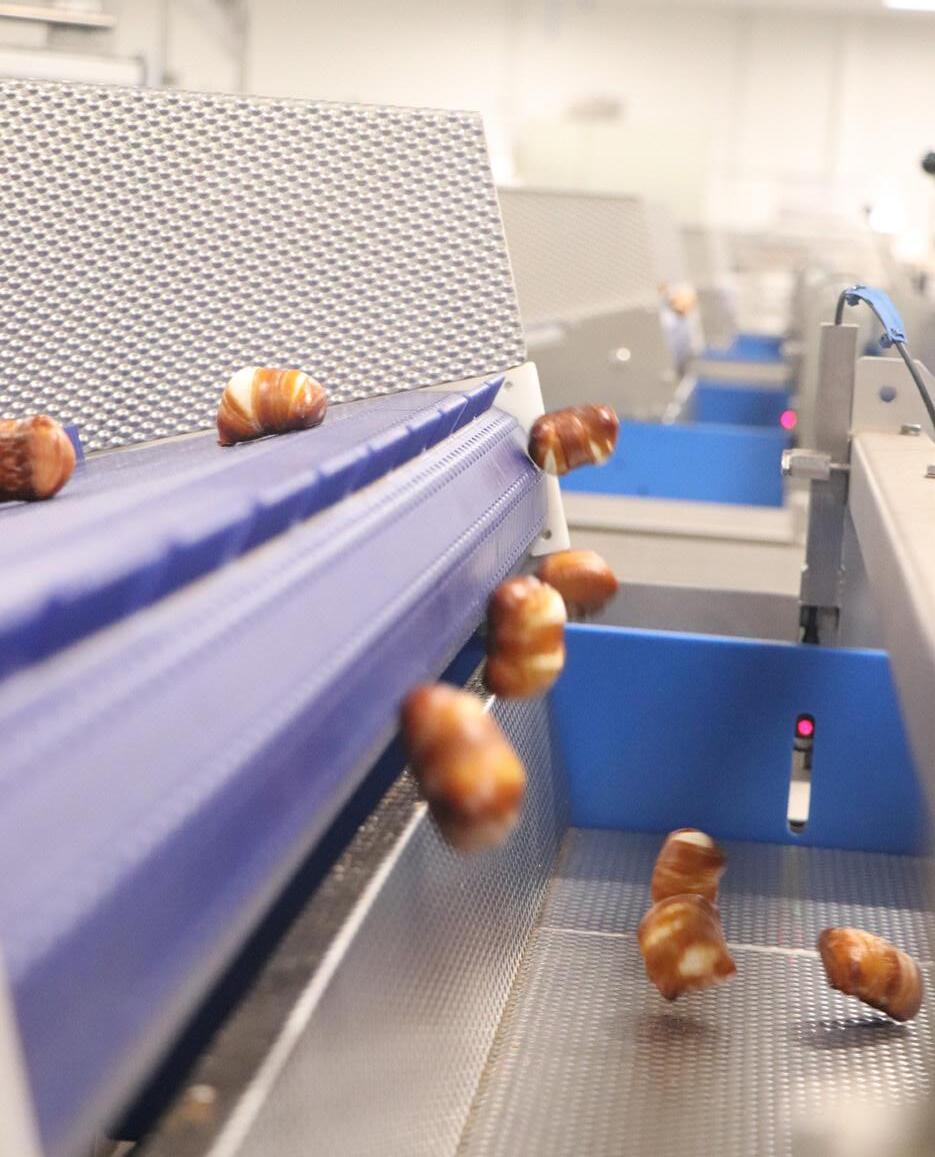
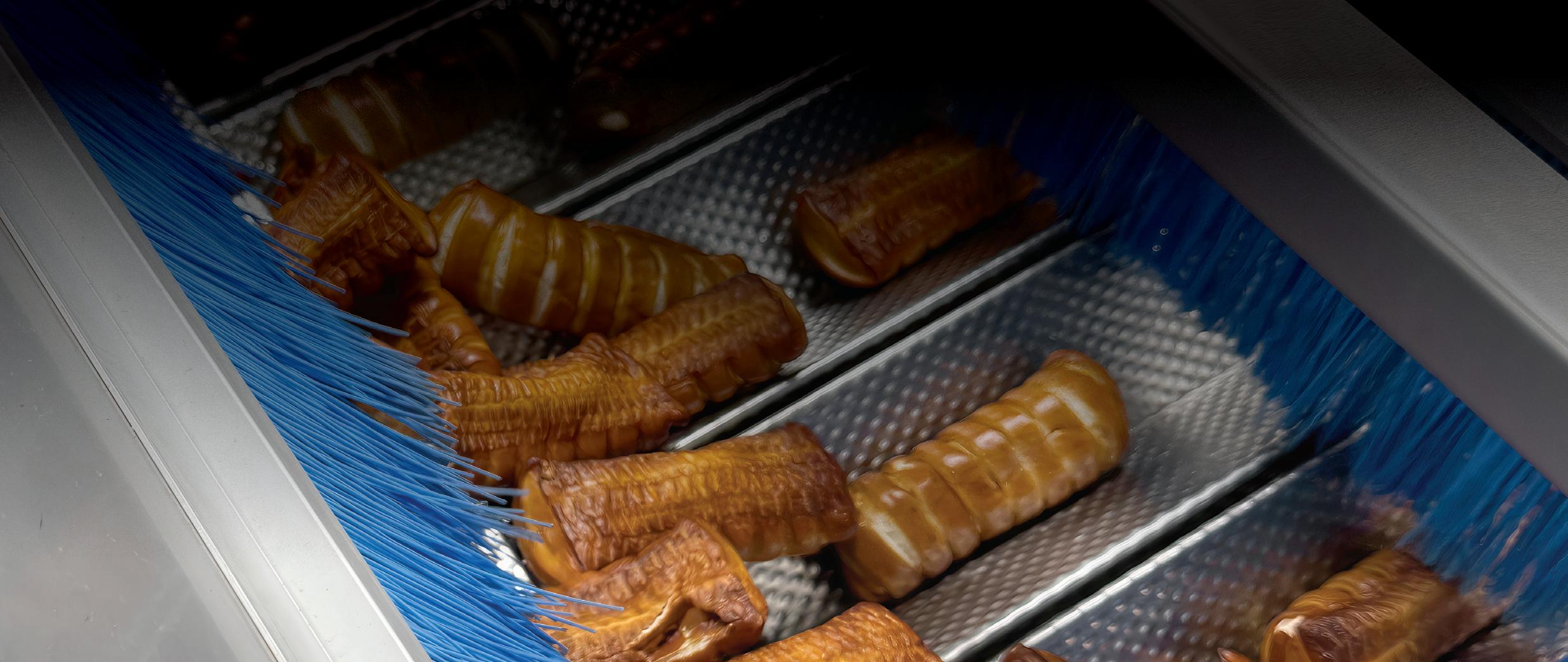
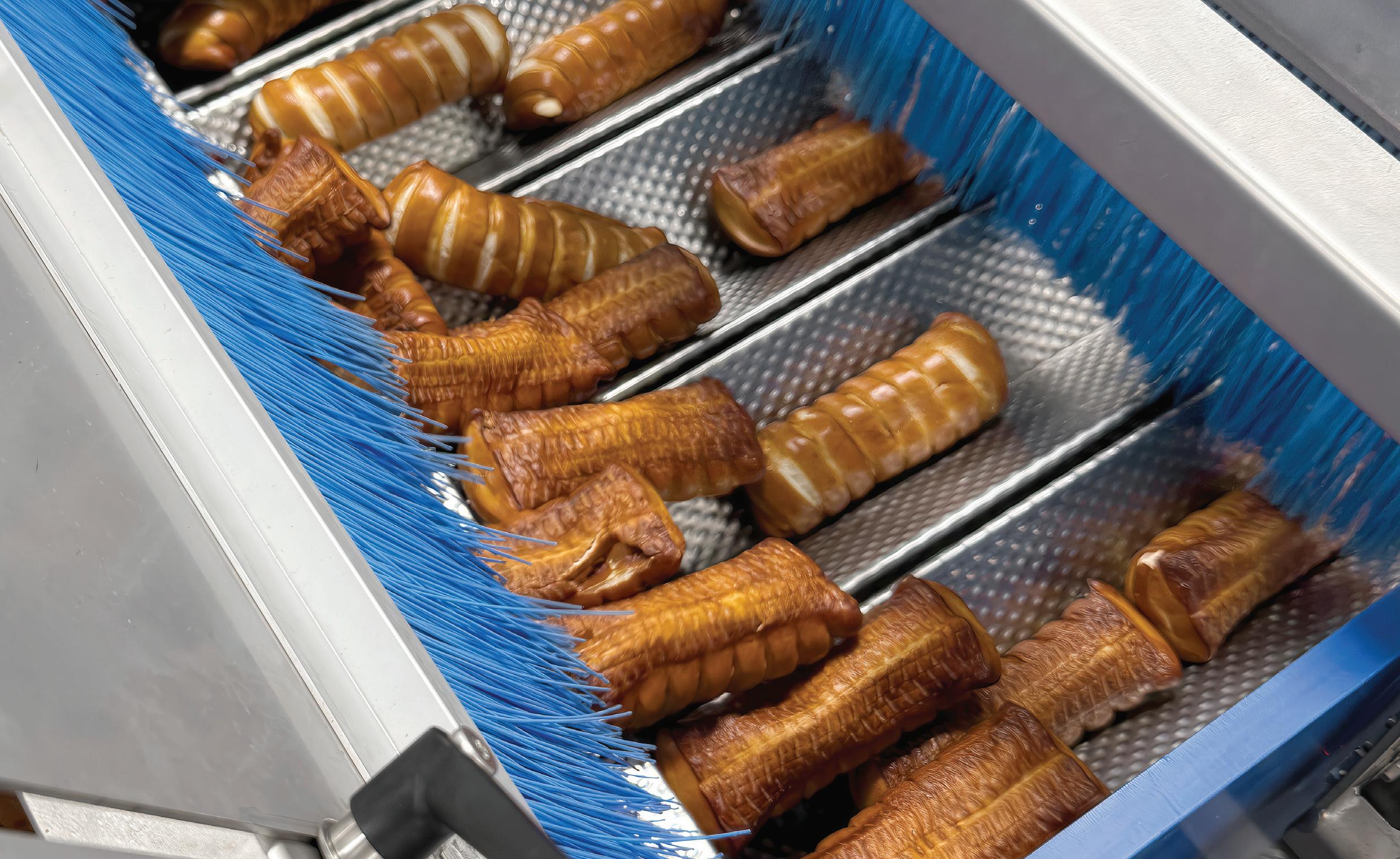
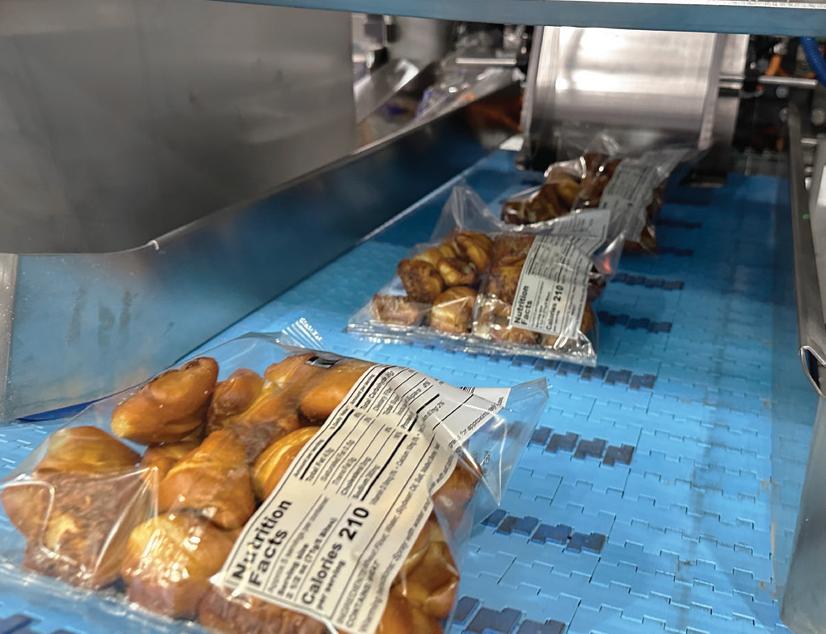

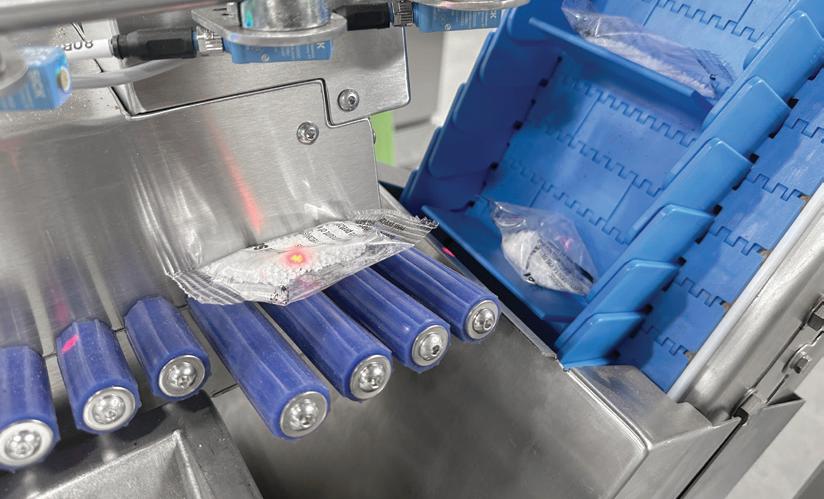
IMA Ilapak combines over five decades of bakery expertise with thousands of packaging systems installed worldwide.
Our portfolio offers cutting-edge solutions for feeding, weighing, counting, and packaging, engineered to handle an extensive range of bakery products from bread, pretzels, pizza, and tortillas to cakes, pastries, and frozen baked goods.
We are proud of our partnership with Ditsch USA LLC, providing innovative packaging solutions that evolve with their needs and fuel their continued success.
marketing ilapak@ima.it


Coperion unites the leading technology brands in food manufacturing to deliver innovative system solutions for your bakery.
Technology for: Systems & Ingredient Automation
Pre-Dough, Mixing, Forming & Dividing
Depositing, Decorating & Cutting

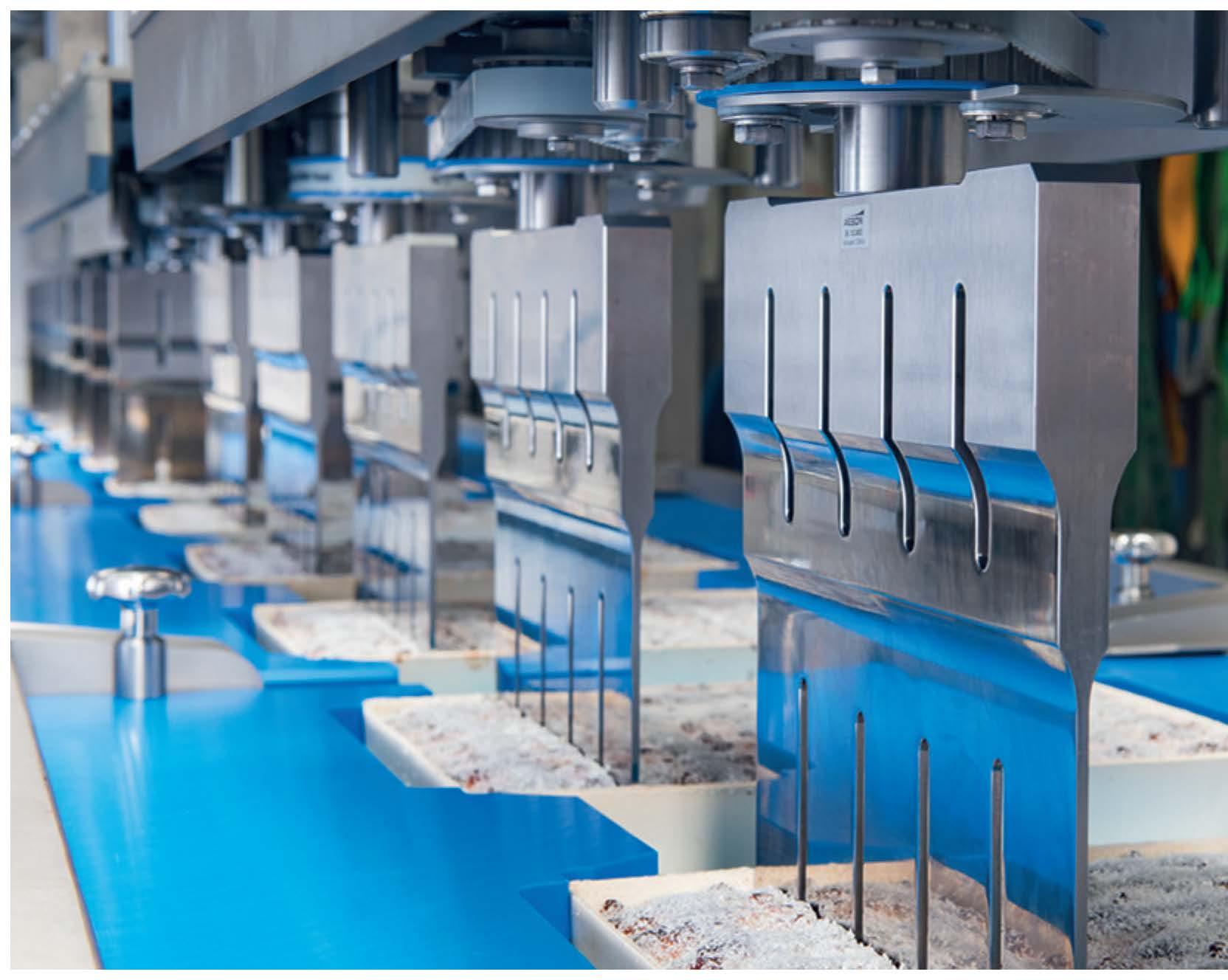
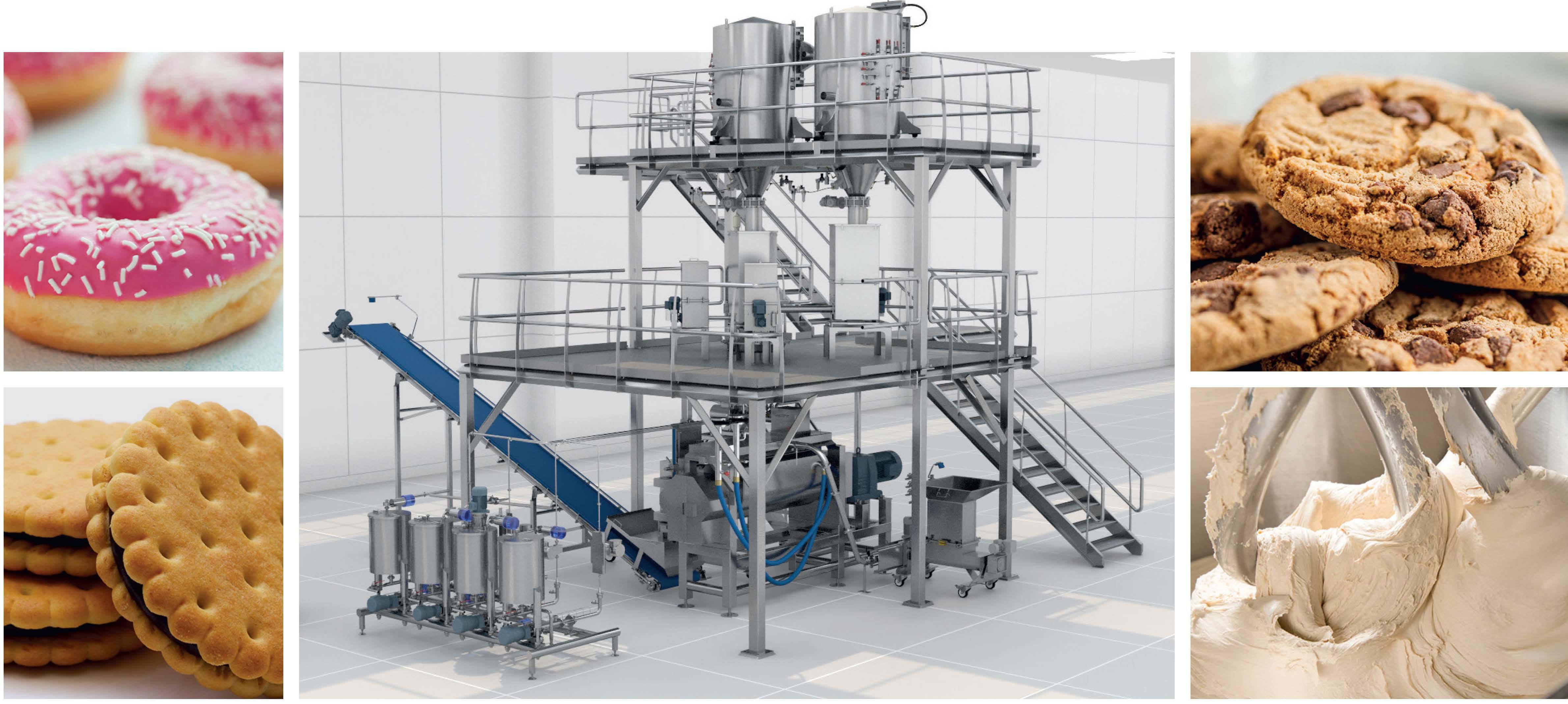
� baker perkins b bakon � diosna �operion
@ peerless $ shaffer � shick esteve
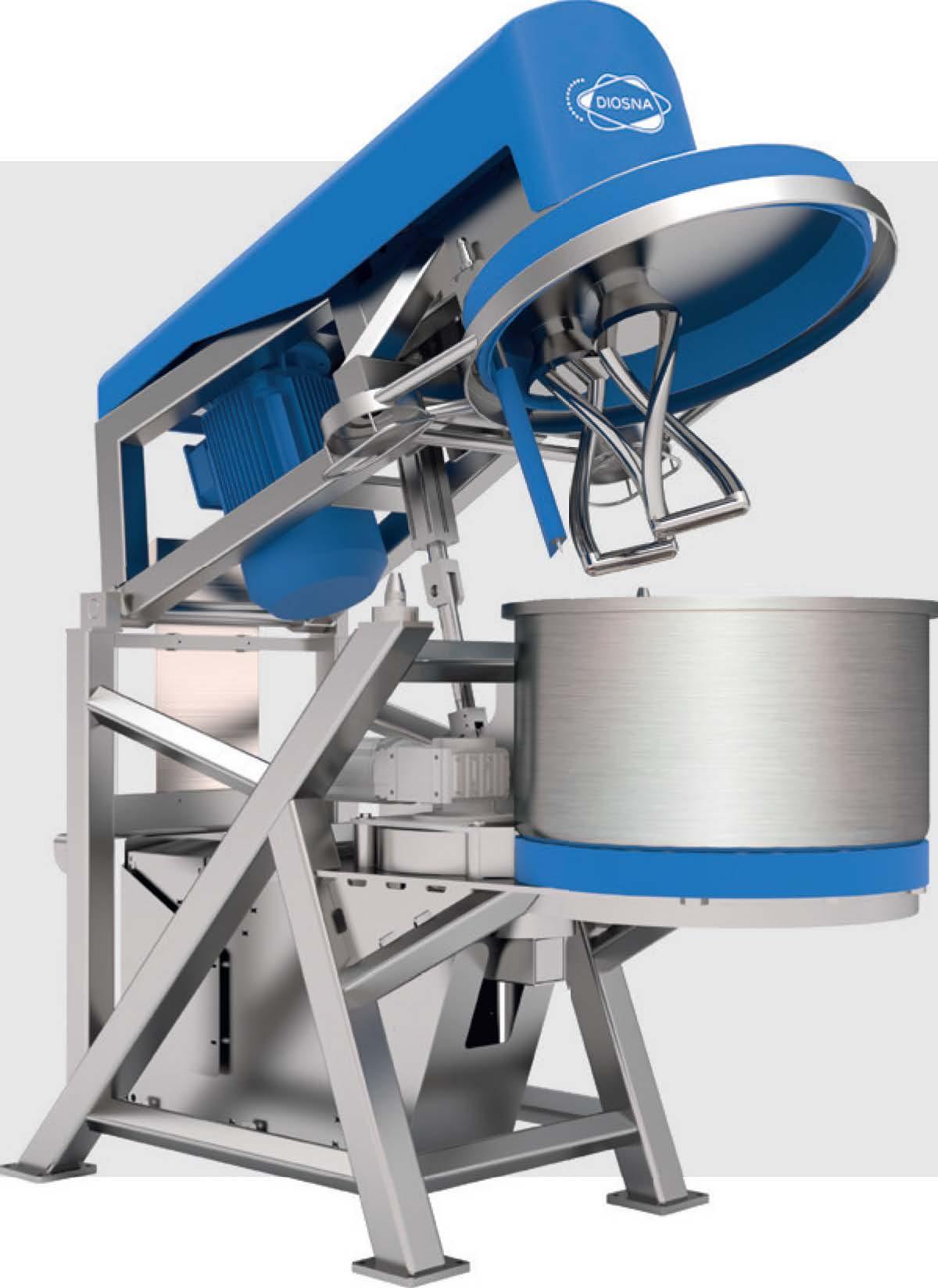

Scan the QR code to find out more
kemutec
unifiller •4 vmi


Sarah Testa has done it all, and as chief growth officer, she’s leveraging that experience to take Roskam Foods to new heights.
BY ANNIE HOLLON
There’s more to the food and beverage industry than meets the eye. From segment to segment, specialized business areas work in harmony to keep products rolling out on store shelves and beyond. Understanding how all the moving parts work is a task on its own, but using this insight to propel a business forward requires a jack-of-all-trades background.
A leader with vast industry experience and a willingness to learn is often a rarity. But Sarah Testa, Grand Rapids, MI-based Roskam Foods’ first chief growth officer, is just that. In a little less than three years, her work has been vital to taking the centuryold company into its new era.
While the majority of Testa’s professional experience has been in the food and beverage industry, it wasn’t her intended field. She started out in management consulting at Deloitte, spending a few years there working for retail, healthcare and financial clients before brand management piqued her interest.
“I find it fascinating,” Testa said. “There’s always something to learn, a new challenge. With brand management, you’re really a general manager as well; you’re

running a business and also building a brand.”
The decision to pursue this field steered her to Stanford University’s MBA program, and it eventually served as Testa’s entry point into food.
“The food industry is ever-evolving, and, for me, that keeps things interesting,” she said. “As a strategist, I’m constantly adapting to new trends and the information around them, and being able to pivot and come up with winning strategies in this environment is a great fit for me.”
Testa’s tenure in the food space began at Conagra Brands, formerly known as Conagra Foods, in 2005. She supported an array of storied brands and also got her first taste of the private label sector, managing the snack division’s bar and cereal business. After a brief pivot to Target, lending her CPG insights to the retail sector, she joined Minneapolisbased private label snack manufacturer Flagstone Foods as part of its new management team.
“It was a chance to build a marketing team and processes from scratch and be part of this company from the ground up,” Testa said. “The role was a pivotal change in my career, where my trajectory started to shift a little bit away from traditional brand management and general management roles to a much broader scope of responsibility.”
Her 11-year tenure at Flagstone — which was acquired and later spun out of TreeHouse Foods — allowed her to work in different aspects of the business, ranging from product development to commercialization. It also gave her direct insight into scaling a company and adjusting through integrations, acquisitions, divestitures and more.
“Even when you’ve had a 20-year stretch in the food industry, there’s always something new to learn.”
Sarah Testa | chief growth officer | Roskam Foods
With an arsenal of know-how, Testa was equipped for her latest venture as chief growth officer of Roskam Foods, which she joined in 2023. The new role played to Testa’s strengths and experience.
“I was brought into this newly created role and was responsible for building and executing the growth strategy for the next phase of the company,” she said. “My role then expanded to leading all aspects of product development, commercialization and sustainability.”
Having approached the industry from a variety of different angles, Testa’s wellrounded understanding helped shape Roskam’s growth trajectory as well as its new strategy.
“I’m back working with brands again, which is where I started my career,” she said. ”Having that insight of being a brand manager really helps me understand who we’re selling to and how we can partner with them to add the most value.”
Known for being one of the country’s premier contract manufacturers, and for having substantial ingredient business, Roskam has a large baking customer base. Testa has learned a new channel, its complexities and the role the company plays in supporting its customers.
“Even when you’ve had a 20-year stretch in the food industry, there’s always something new to learn,” she said. “Understanding everything we have under Roskam’s umbrella, as well as the broader co-manufacturing space, has been the new challenge for me.”
The ability to understand three key elements — the market, the consumer and the competitive landscape — has helped propel Testa and the organizations she’s worked for to the next level.
“Making sense of all that, being able to identify those growth pockets and opportunities — before your competition — has been key to my success,” she said, “regardless of where I have been in the food industry.”
Developing Roskam’s strategy proved to be a rigorous process, with the c-suite taking time to make sure it knew its customers, the market and trends. For Testa, learning all she could about co-manufacturing and Roskam’s unique history was essential to building upon that foundation.
“It was a very collaborative process that involved probably 30 to 40 of our top leaders; a combination of people who were tenured and had a long-time history with the company, and others who were coming in newer with a fresh perspective,” she said. “Having both perspectives in the mix was really important.”
These collective insights proved instrumental during Testa’s first year with the business as she helped lead the charge for the company’s rebrand. This included a name change from Roskam Baking Co. to Roskam Foods to reflect the company’s growing capabilities. Beyond the name, the introduction of the blue multiplier logo served as a symbol of the company’s commitment to increasing opportunities for employees, customers, the community and shareholders.
The change, Testa shared, has been transformational.


Identifying growth opportunities for the company requires Testa and her team to monitor what is trending, and why and how to adapt.
“When you think about co-manufacturing and ingredients, it’s all about matching your capabilities with the market need,” she said. “We’ve got to make sure we’re playing in the right spaces to be successful.”
On the baking side of the business, she’s noticed a common theme of disruptors that enter a dormant segment and shake things up with innovations such as better-for-you reiterations of nostalgic classics or a new take on products, including frozen dough.
Enter strategic bets, an approach that, with support from the company’s private equity owners, helps Roskam fund these investments and capabilities to spur growth opportunities. In Testa’s eyes, taking these calculated risks early on gives businesses an edge over competitors.
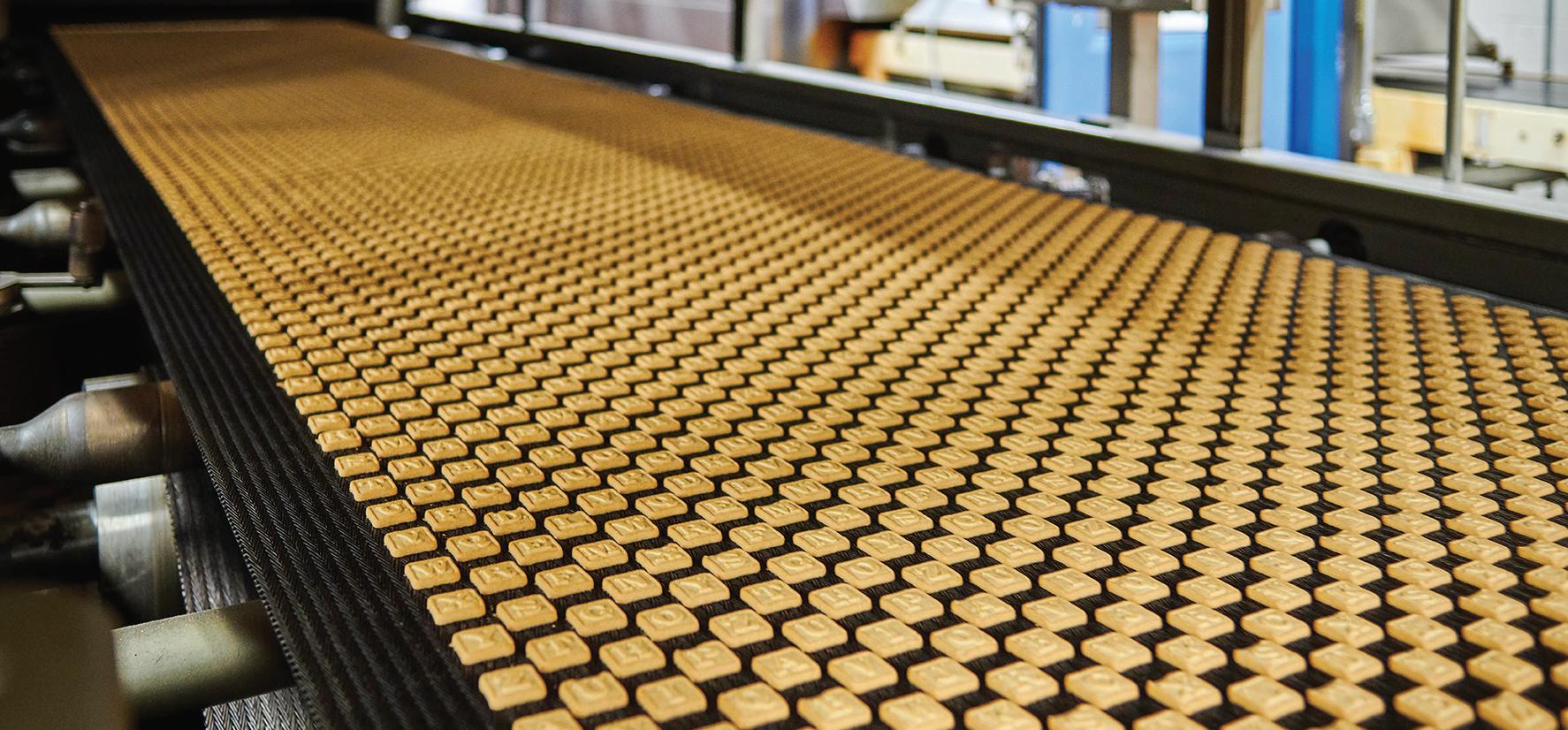
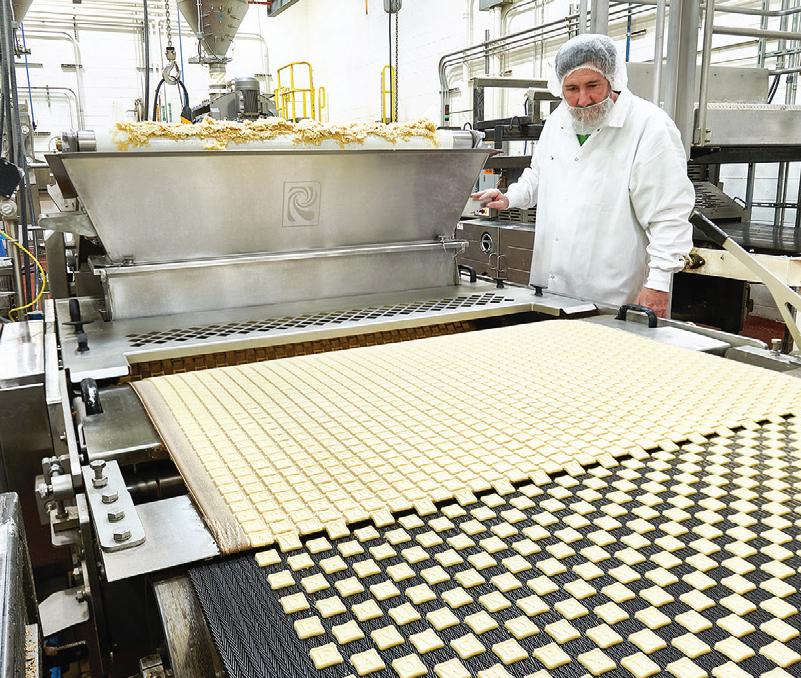
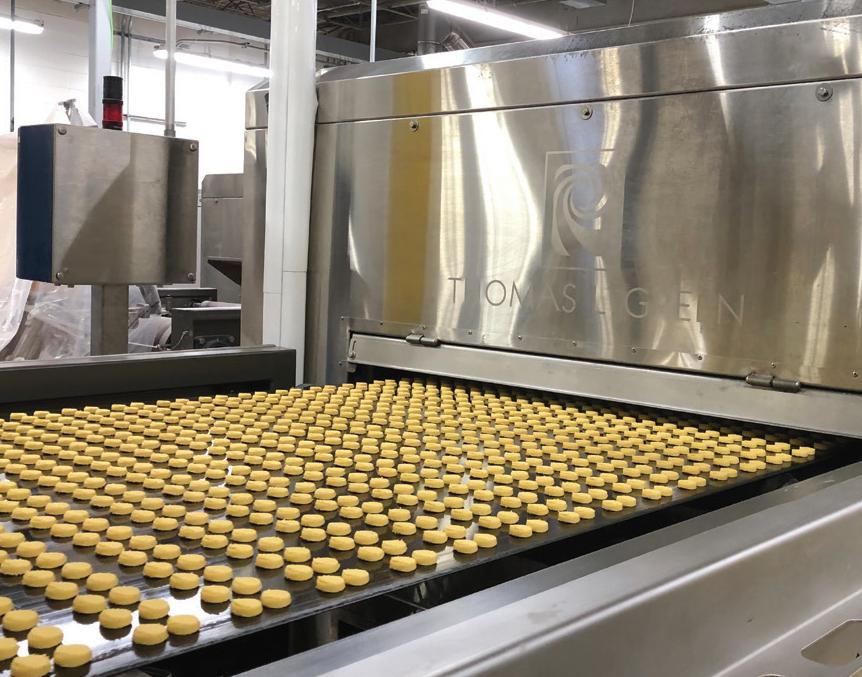
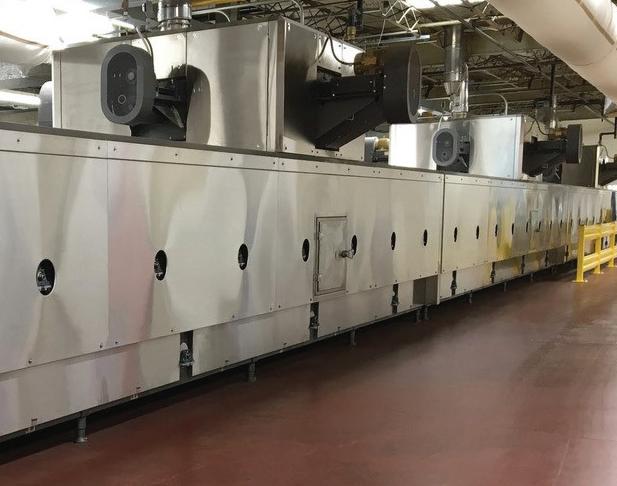

When it comes to producing consistently great cookies, innovation is the key ingredient. Our GenesisPRO Series offers the most advanced, efficient and reliable equipment on the market. For cookies, biscuits, bars and filled products, RBS has the technology and experience you need to bake your best products each and every day. Call (01) 610-693-5816 or visit readingbakery.com for more information.
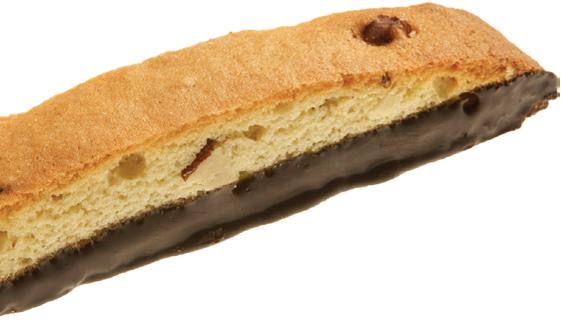


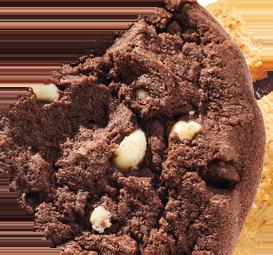













“This is a very capital-intensive business, so if you don’t have the assets and you don’t have the equipment to make that reinvented product, you’re going to miss out on that opportunity,” Testa said. “That’s where we talk about these strategic bets and build the capability with an eye toward all the opportunities we want to go after. So far, we’ve been really successful with that strategy.”
Locking in on those opportunities early on has been at the core of Testa’s business philosophy throughout every phase of her career. From role to role, looking beyond the now has proved valuable.
“I’ve been in businesses where you make short-term decisions to hit the budget,” she said, “but you’re probably not making the right choices for the long-term health of the business.”
Testa has kept the needs of both customers and team members in focus throughout her career. Tending to both groups keeps business on track. On a similar note, fostering an environment in which people want to work starts at the top. Akin to the adage, “Be the change you want to see in the world,” Testa works to create a collaborative and positive environment for her team.

NOW:
Sarah Testa shares why empowerment has become a core part of her leadership philosophy.
“How you do your work and accomplish the goal matters a lot,” she said. “You’ve got to bring the right skill set and approach and then model those for your employees, not
“How you do your work and accomplish the goal matters. You’ve got to bring the right skill set and approach and model that for your employees.”
Sarah Testa | chief growth officer | Roskam Foods
asking them to do anything you wouldn’t do yourself or that you don’t demonstrate on a day-to-day basis.”
As a leader, Testa’s approach has remained steady, driven by transparency, leading by example and empowering team members. For her, setting the strategic vision and then giving employees the support, room and resources needed yields positive results for everyone.
“People want to be part of a winning team, part of something bigger,” Testa said. “Everybody wants to feel that sense of ownership and that they’re contributing to the goal.”
The business landscape has changed in many ways, and with it, what leadership looks like. Beyond the diverse
backgrounds often represented in the top rungs of company ladders, there are more leaders supporting companies at different levels. Identifying these changemakers on the production floor and beyond strengthens the business as a whole.
“They are people who are eager to grow, learn and take on new ch allenges,” Testa said. “Those are the people you want to identify and give them more and more opportunities.”
Backed by rich experiences across the industry, a killer instinct for trends and growth opportunities — and a talent for fostering a forward-thinking work environment — Testa is well-suited to help Roskam Foods bloom while blazing a trail for future industry leaders. CB
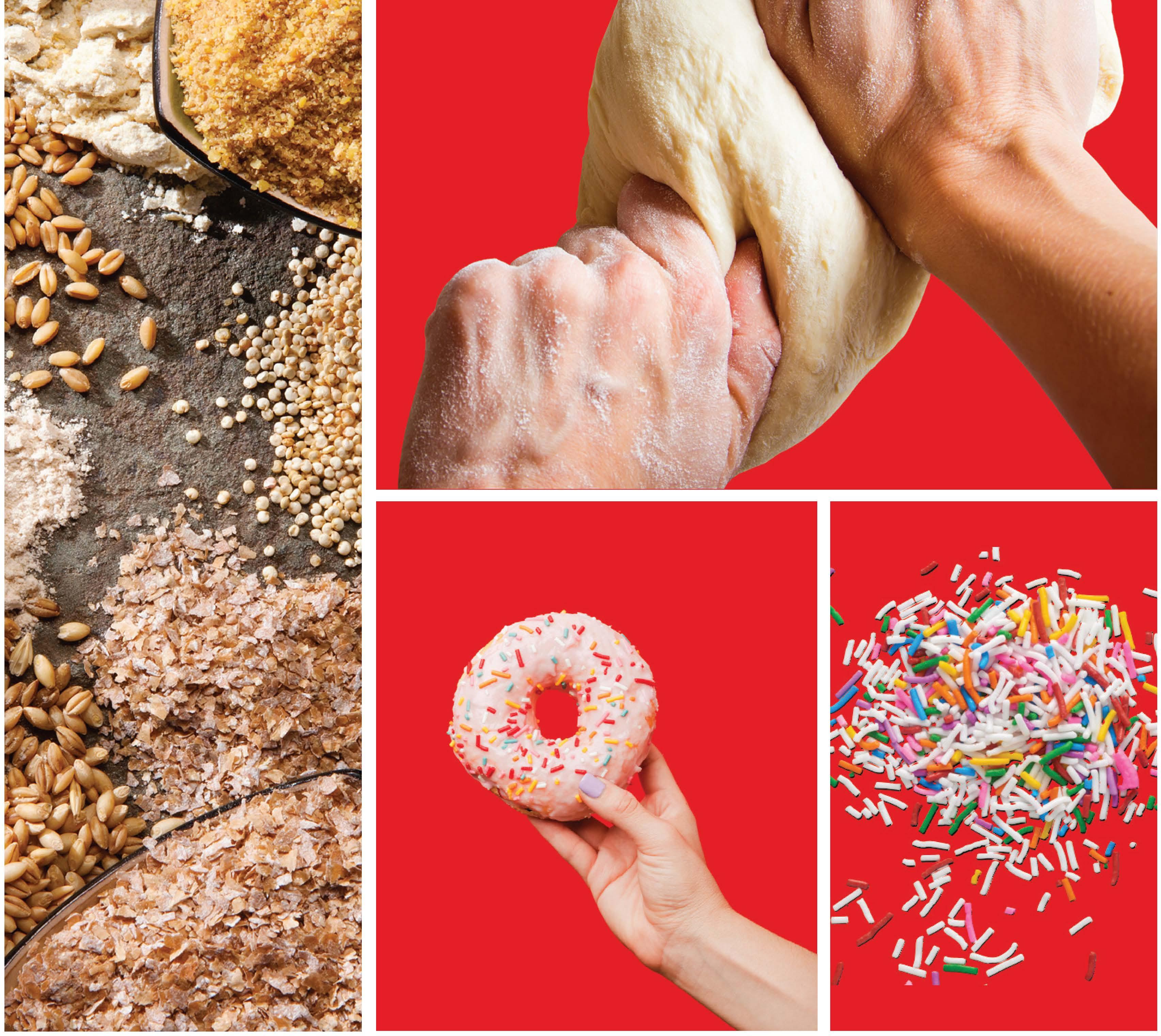

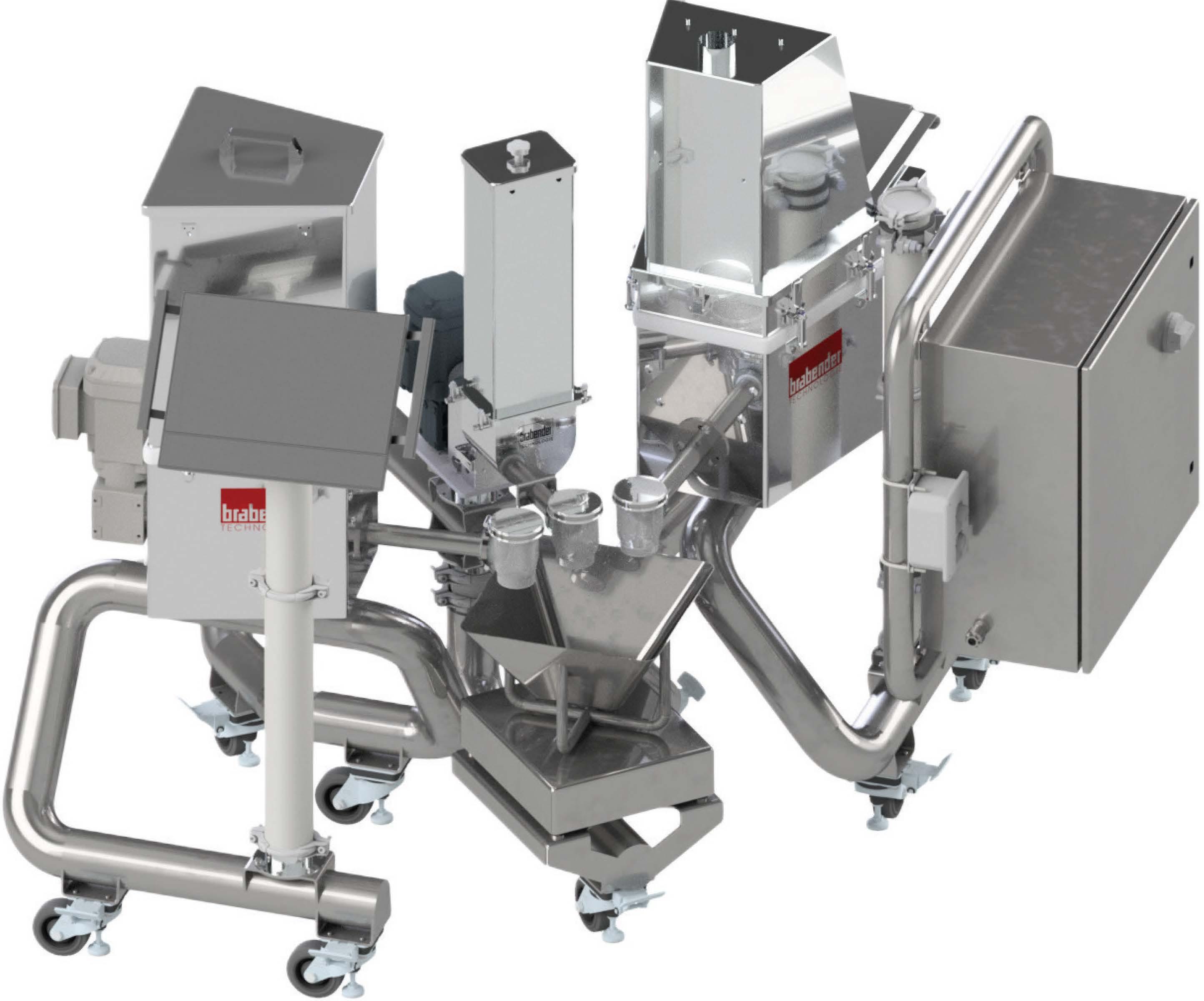


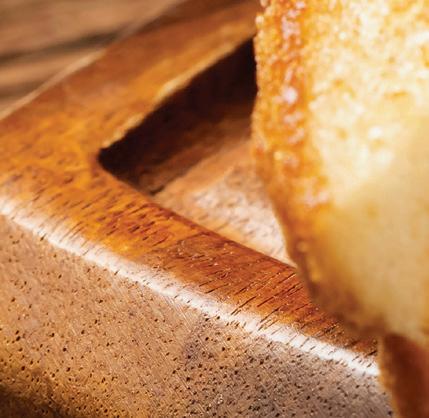
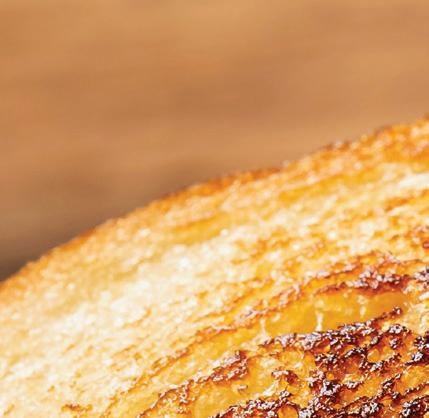
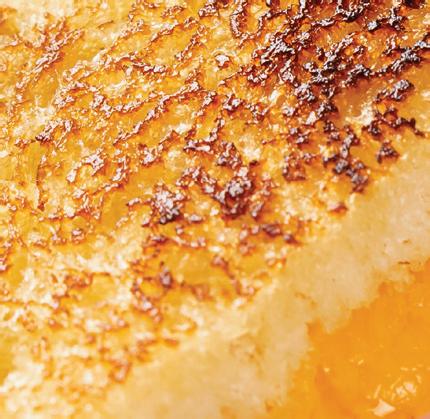


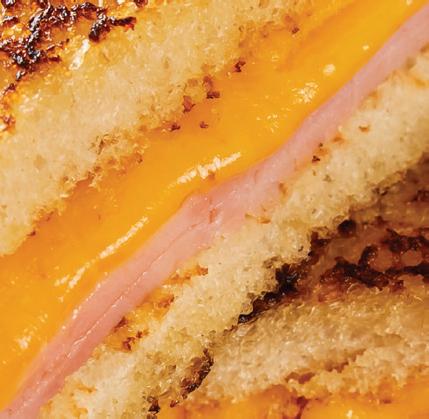
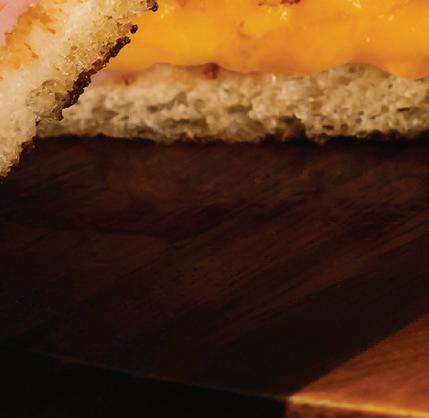
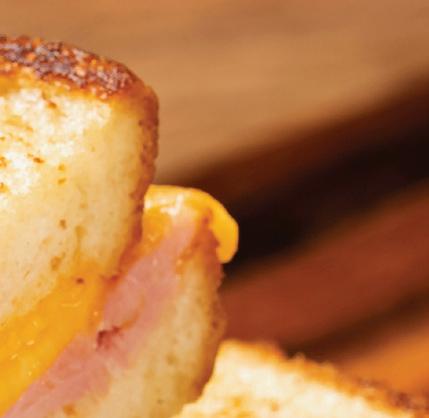
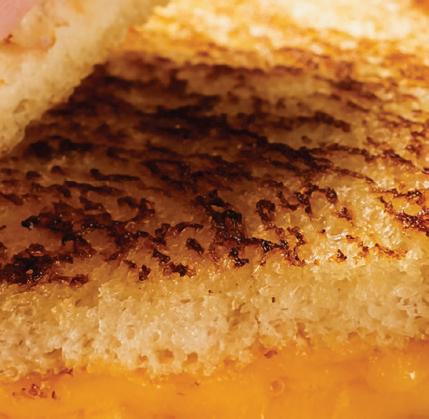
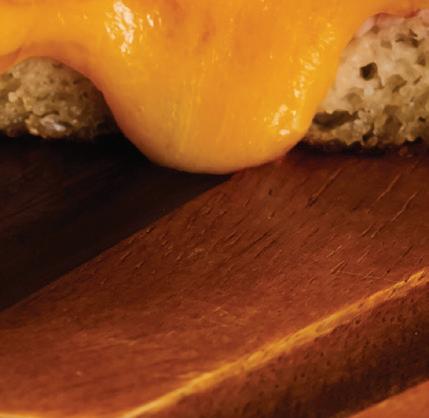

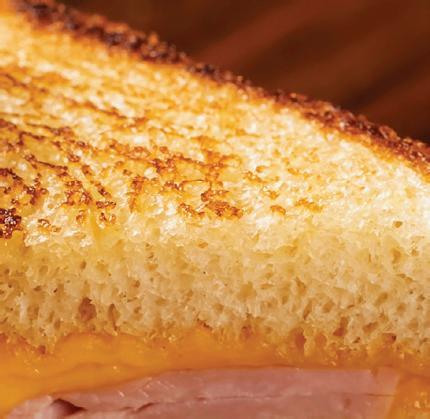
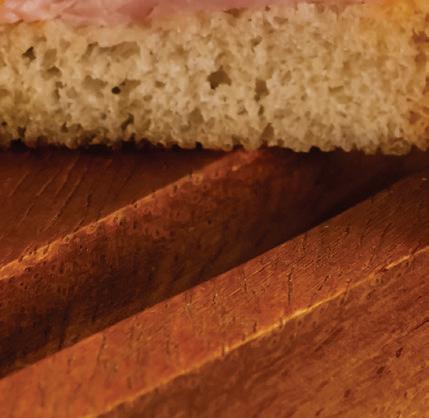



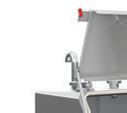

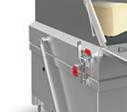





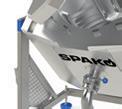
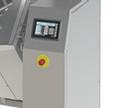


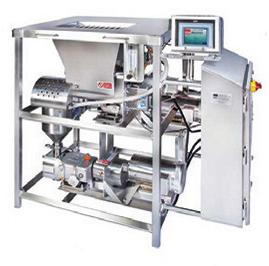
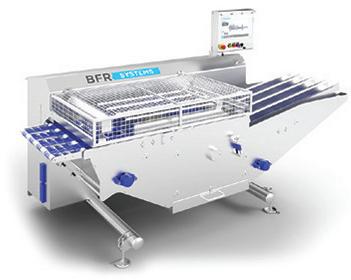

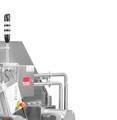
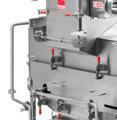
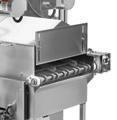
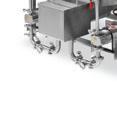

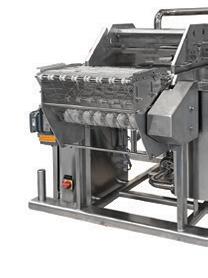
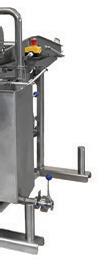
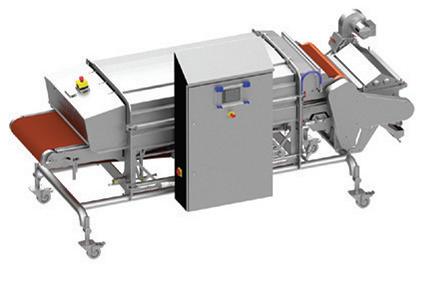
From fresh-baked sourdough bread to artisan, single-serve grilled cheese sandwiches, A Friendly Bread is redefining what’s possible in CPG.
BY LILY COTA
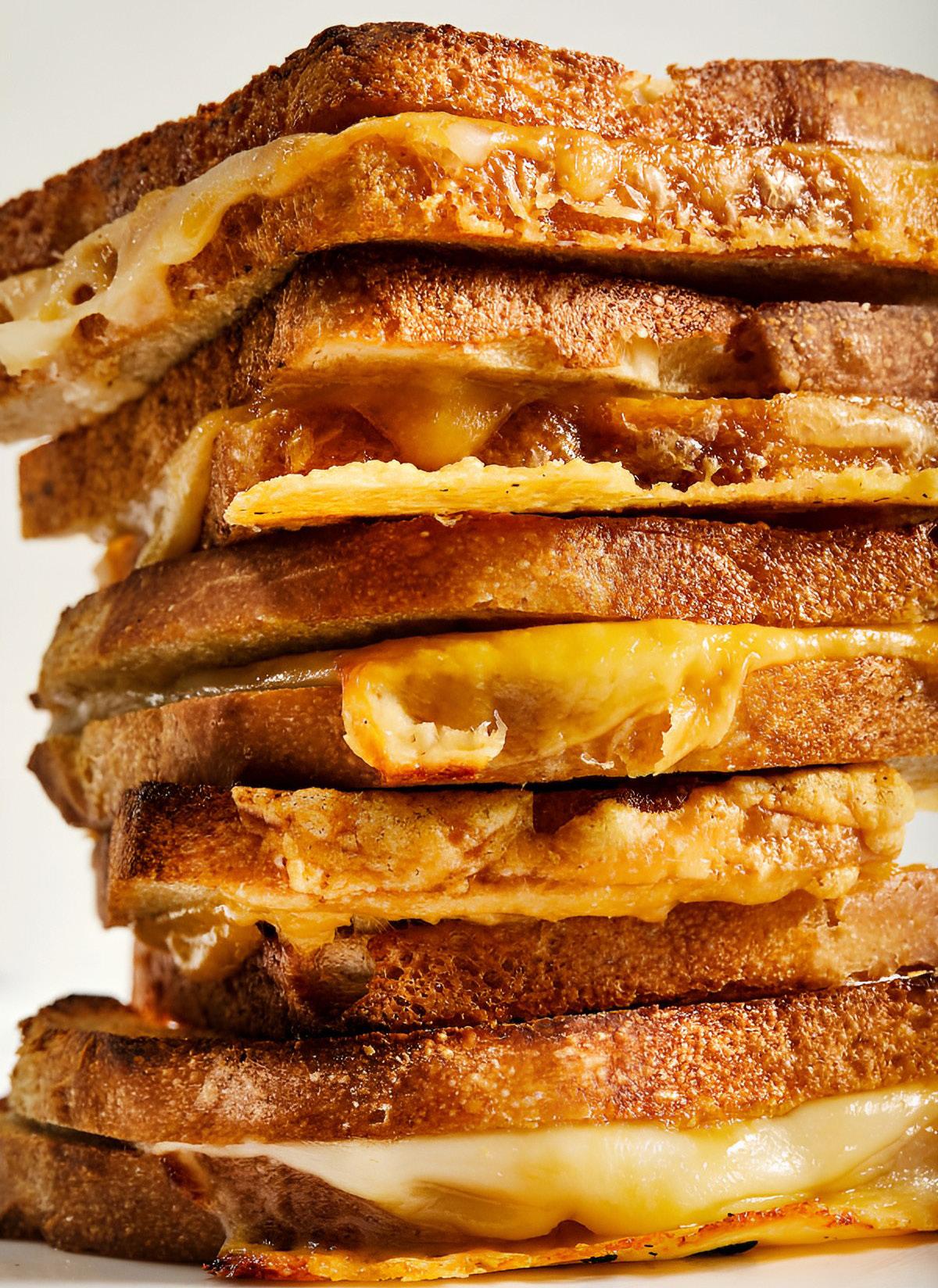
Most people probably think they know all there is to know about grilled cheese sandwiches. It’s just bread and cheese, after all.
But what if that grilled cheese was made with pre-toasted, artisan sourdough bread? What if it was packaged in an individually wrapped format, ready for a toaster oven, combining home-cooked flair and modern-day convenience?
With its heat-and-eat frozen grilled cheese and steadfast commitment to authenticity, Baltimore-based A Friendly Bread is changing the way consumers perceive CPG baked goods.
But the brand’s journey didn’t start with this vision in mind. In fact, it’s amazing it even started at all, considering founder and CEO Lane Levine didn’t like bread growing up … that is, with the exception of sourdough.
“I always thought sandwiches were just too wet and soggy,” Levine said. “But I came across sourdough here and there and always remembered that it was a chewier or crustier bread that seemed to hold up better.”
That distinct fondness, coupled with the impending burnout of 12 years in non-profit work, led Levine through a budding baker’s rite of passage as he
began casually experimenting with sourdough. This newfound passion ignited curiosity, and A Friendly Bread was born with scrappy beginnings and swelling potential.
“Before building this business, I never had the experience of participating actively with a product … a physical thing somebody could buy from me,” Levine said. “The intangible nature of non-profit work really wore on me, and suddenly I was making something that I felt could be my first engagement in the goods economy, so I went with it.”
Levine’s bread was a hit at farmers markets and among a growing core of home delivery customers, with a local following that grew every day. So much so that customers were sending him pictures of their DIY grilled cheese sandwich innovations, opting for two slices of A Friendly Bread’s sourdough as the base. Suddenly, a light bulb flickered, and the brand started doing pop-up Grilled Cheese Nights at luxury apartments. The response was overwhelming … and enlightening.
The grand grilled cheese idea was hatched, and A Friendly Bread restructured its ascent as a premium, par-baked CPG sandwich brand. But things are never that simple, and the path to success isn’t always linear.
A brand can’t truly consider itself established without experiencing its share of R&D and distribution detours.
In the beginning, A Friendly Bread manufactured its products by hand in a co-working production space. To make things easier on the bakers and increase production, the team took a leap with upgraded automation — and a bit of practical frugality.
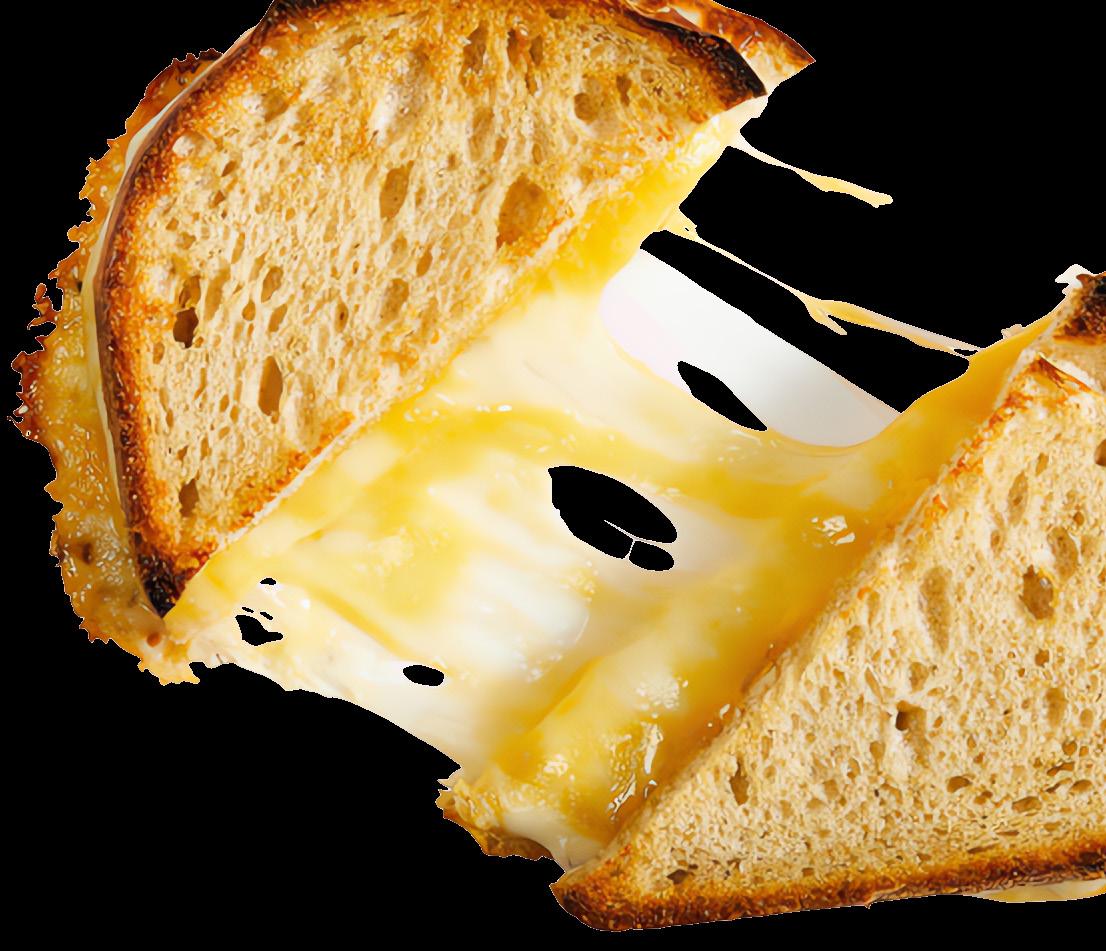
“I set a rule for any kind of large equipment investment — whether it’s production or packaging — that nothing we purchase can only be used for one thing,” he said. “We needed to buy an industrialsized slicer to efficiently slice the bread for the sandwiches, but I realized it could also be used to slice the cheese.”
As the brand began experimenting with grilled cheese at scale, the process wasn’t always cut-and-dried. Initially, the product was fully browned and cooked by the time the consumer received it. But during the reheating step, the sourdough developed a rubbery texture, and the cheese fully absorbed into the bread.
“Then you’re left with two wet pieces of bread, which is not a grilled cheese sandwich,” Levine said. “We decided to par-bake the sandwich so the bread and cheese would slightly melt together but not get overcooked. For the end user, the melt needed to happen in a reasonable amount of time without the bread burning.”
Enter the diagonal slash.
In the R&D phase, when checking the bake time required for a full melt, Levine’s team found that cutting the sandwich in half gave a good look at the progress. But that diagonal cut also expedited the heat-up time. That discovery led to what is now its signature break-and-bake format.
“It’s still one cohesive product, but it’s basically perforated,” Levine explained. “You take it out of the freezer, crack it open, and then the heat gets to the inside much faster, making it even more convenient for consumers.”
Flavor development was broached strategically, yet simplistically. Sticking to four classic but sophisticated profiles, the brand paid homage to its flagship product’s top-selling flavors: Simple Country with Cheddar, Cinnamon Raisin with Brie, Challah with Swiss and Ja lapeño with Gruyere.
“I learned through the Grilled Cheese Nights that you can be extremely clever with your flavor profiles and people might still not be interested,” Levine said. “The


























vast majority of people who eat potato chips go for the plain olive oil and sea salt. So, you have to lead with the plain flavors, but innovative flavors — while they may never be best sellers — serve a function of creating a little cult following or allegiance to the company because we might be the only ones making that variety.”
Marketing went hand-in-hand with the R&D process. In the early stages, when customers ordered their loaf of bread for the week, Levine included a complimentary grilled cheese sandwich if they agreed to review the product or provide feedback via an R&D survey.
Through this, A Friendly Bread lived up to its name, integrating itself into the local community, slowly but surely building connections and, in turn, its brand.
“I had relationships with some small local retailers who were selling my bread,” Levine shared. “I pitched the grilled cheese product to them, and they saw the spot it could fill in the marketplace. That opened the door for us to do demos and marketing in the local area and really helped develop that direct customer marketing.”
Through this stage of trial and error, the brand discovered that the grocery

retail market was not an ideal distribution channel. However, foodservice outlets where the product is heated and served directly to the customer — specifically coffee shops, college cafes and quick-serve venues — turned out to be a perfect fit. The brand now supplies a range of clients with A Friendly Bread grilled cheese to elevate their menus and stock their grab-and-go shelves.
While many emerging brands dream of building a brand on nothing more than passion, it’s the financials that gets things off the ground. Small-business loans, among other avenues, can make the road less bumpy, but they can’t always cover it all. In the scrappy pursuit of a successful future, A Friendly Bread has benefited from a few entrepreneurial hacks.
This small team of three does all the baking and distribution, which is emerging as an area of potential growth beyond the core product. Not only does the brand save on early-stage costs by manufacturing its products out of a co-working production space, but it’s also setting the scene for a future home.
By renting a warehouse with ample freezer space, A Friendly Bread operates as a local cold storage and basic cross-docking service provider for small to medium shipping customers. This alliance helps the brand cover its expenses while it works toward purchasing the warehouse as its full production space, all while helping other small businesses grow their own distribution.
Today, A Friendly Bread finds itself facing the age-old question: Where to go next? The destination may not be set in stone, but it’s the journey — as well as the handprepped, elevated yet classic, artisan grilled cheese baked along the way — that counts. CB


Bringing industry-changing innovations to North American bakers for over 40 years
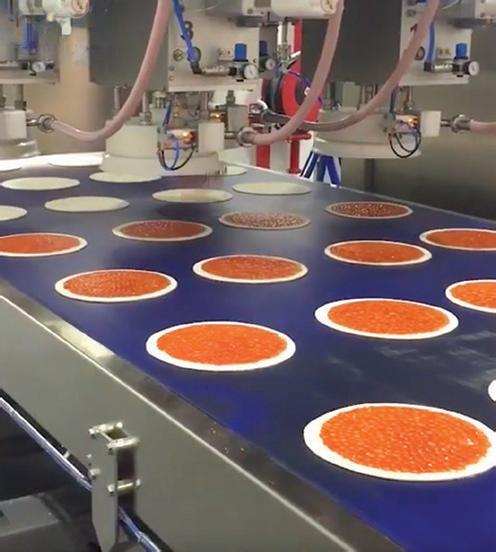
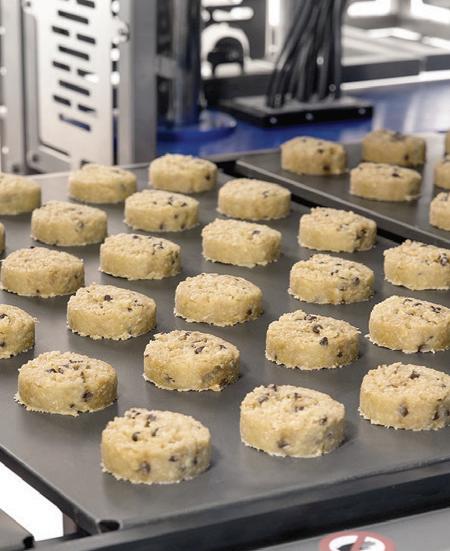

Some of the technologies
Allied has introduced to our industry
Thermal Oil Oven technologytransforming the Artisan Bread sector
Carousel, Robot, and Continuous Systems to automate the mixing room
Large-scale, twin-tool, closed-bowl, self-scraping Planetary Mixing
Fully C.I.P. multi-piston batter depositors
Truly stress-free (no extrusion) large volume make-up lines for highly hydrated doughs
Revolutionary Vertical Dough Mixing technologies - beyond the spiral
High-speed injection equipment with an accuracy of +/- 0.25 grams
BY MAGGIE GLISAN

For bakers today, growth often means looking beyond traditional retail shelves. Shifting purchasing habits and an increasingly competitive landscape are pushing brands to explore new ways to get their products into consumers’ hands, whether through vending machines and micro-markets, c-stores and gas stations, catering programs, or even subscription models. These channels open the door to fresh revenue streams and new audiences, but they also come with operational challenges. With a number of things to consider — packaging formats, shelf life, logistics and brand consistency — bakers must balance opportunity with complexity. The question isn’t just where to sell, but also how to make each channel work.
C-stores are no longer just a spot to snag a bag of Cheetos while topping off the tank; they’re evolving into full-fledged gourmet pit stops. According to National Association of Convenience Stores data, in 2024 food ser vice accounted for nearly 28% of in-store sales and almost 40% of gross-margin dollars at US c-stores, with prepared food driving 68% of that growth. Bakery alone generated nearly $19 billion in sales, underscoring the strong demand for grab-and-go cookies, muffins and pastries. That combination of consistent consumer traffic and appetite for pac kaged baked goods makes c-stores a compelling growth channel.
The rise of micro-markets and vending reflects broader shifts in consumer behavior. The National Automatic Merchandising Association (NAMA)’s 2023 Industry Census shows that micro-market installations have grown from 2% of the industry in 2014 to 20% in 2023, with manufacturing, hospitality and college locations leading opportunities for growth.
“Micro-markets and vending have both diversified significantly in part due to changing consumer demands wanting access to products whenever and wherever they are,” said Kat Snodgrass, senior director of communications and marketing at NAMA.
But success in these channels requires more than just placement.
“There’s no universal answer,” Snodgrass said. “What works depends entirely on an operator’s location, consumer base and timing. For example, third-shift manufacturing workers might grab coffee or baked goods at 2 a.m., while day-shift hospital employees purchase the same items at 8 a.m., and they may take extra home for family breakfast.”
Research from the 2024 International Food Information Council’s Food & Health Survey supports this, finding that nearly three in four Americans snack at least once a day, with 56% replacing meals with snacks.
Operators also face unique operational challenges.
“Convenience services require strategic thinking beyond traditional food distribution, and underestimating that complexity can be a pitfall,” Snodgrass said. “Unlike wholesale distribution to stores, convenience services involve automated dispensing systems, packaging that withstands temperature variations and shelf-life management without human handling. Products that remain visually appealing in unmanned environments while fitting planogram dimensions and inventory turnover patterns create competitive advantages.”
For wholesale bakers, mastering these operational nuances and tailoring products to meet consumer demand can open doors to new revenue streams while supporting strategic objectives such as workplace well -
ness, guest satisfaction and employee engagement.
That balance between spontaneity and quality is something San Leandro, CA-based Otis Spunkmeyer knows well.
“Unlike traditional retail markets, where purchases are usually planned, vending and micro-markets thrive on impulse and convenience,” said Paul Stippich, senior director of marketing for Otis Spunkmeyer, an Aspire Bakeries brand.
To succeed in those environments, the brand has leaned into individually wrapped, larger-portion formats designed to maintain freshness and visual appeal in unattended spaces. It recently introduced Caddy Packs, which are delivered frozen and include 12 individually wrapped loaf cakes, cookies and brownies, giving operators an easy way to stock, store and display the baked goods. This type of packaging innovation has been central to ensuring products travel well through distribution and stand out once they’re stocked.
“Our packaging must act as a silent salesperson,” Stippich explained.
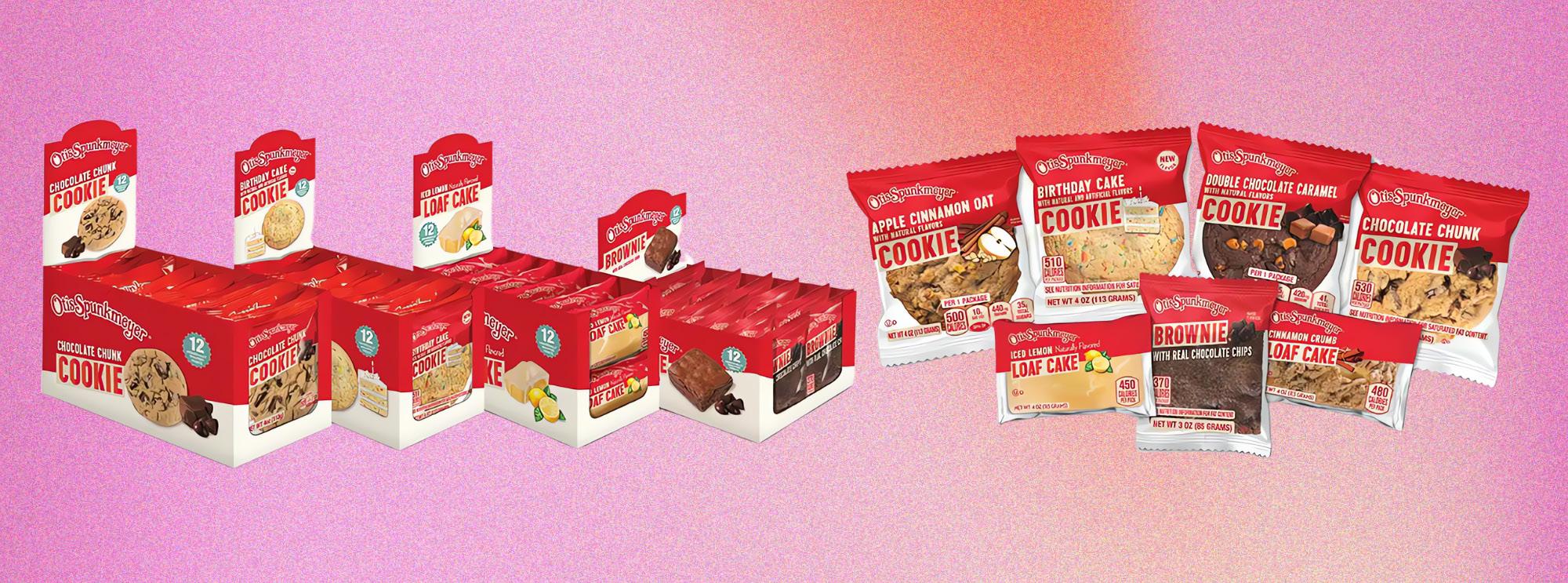
“In micro-markets, airports and workplace catering, people often browse visually before selecting baked treats,” he said. “We’ve focused on tamper-evident, grab-and-go solutions that meet operator needs for safety and convenience while maintaining our premium brand presentation.”
Catering has also become an essential avenue for bakeries looking to diversify revenue beyond retail. In 2023, the US catering market reached $72 billion, with corporate events, holiday parties and special occasions driving consistent demand. For bakers, offering catered platters, pastries and custom desserts not only expands brand visibility but also encourages repeat business, since a single event can introduce dozens of new customers. With flexibility and creativity, catering can provide a high-impact way to scale sales while building lasting relationships.
Milwaukee-based Milwaukee Pretzel Co., known for its Bavarian-style pretzels, formalized a catering program after fielding growing requests from local businesses and events.
“We recognized there was demand in southeast Wisconsin for a high-quality, easy-to-order catering option that also had a fun brand component,” said co-owner and COO Matt Wessel.
To meet those needs, the company invested in specialized packaging designed to hold pretzels and dips, which not only streamlined production but also ensured brand visibility at events. While catering remains a smaller slice of the company’s business, Wessel said it has opened the door to new customer segments — from corporate events to weddings — proving that with the right packaging, logistics and delivery strategy, even a niche product can scale into a high-impact channel.
That potential is something ezCater, a nationwide workplace food platform, is also seeing firsthand.
“We’re witnessing a significant rise in ‘treat culture’ in the workplace,” said Cindy Klein Roche, chief growth officer of ezCater. “Our data shows a 26 percent year-over-year increase in dessert orders, with cookies, brownies and cupcakes topping the list. Employees now expect a pick-me-up snack during the workday, especially in the afternoon.”
But Roche emphasized that success in catering requires more than a great product. It also means creating catering-specific menus, investing in sturdy packaging and clearly labeling for ingredients and allergens.
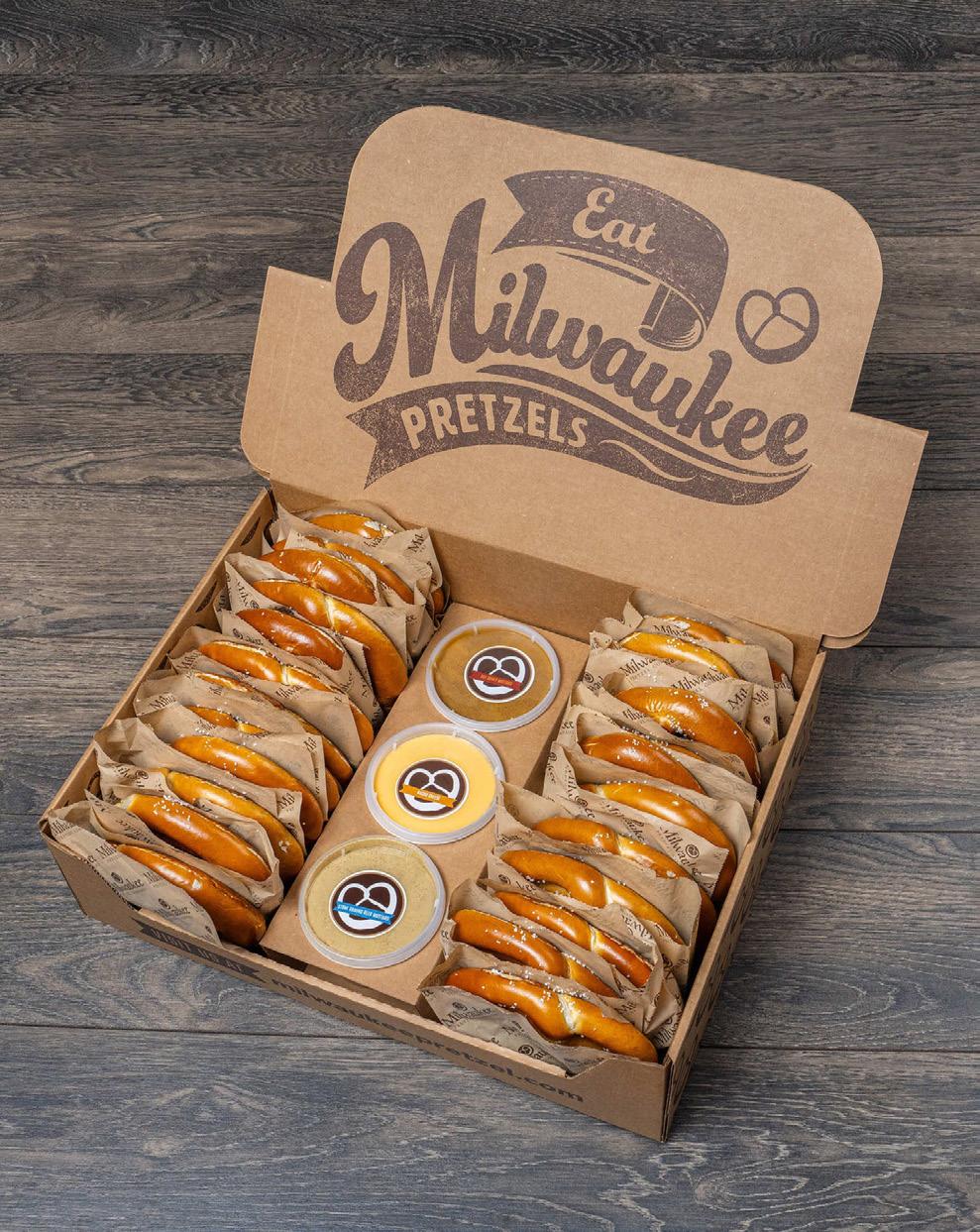
“We recognized there was demand in southeast Wisconsin for a high-quality, easy-to-order catering option that also had a fun brand component.”
Matt Wessel | co-owner and COO | Milwaukee Pretzel Co.




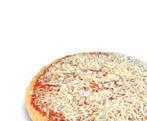
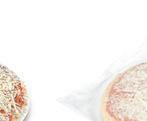




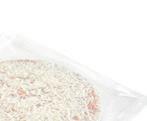
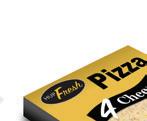










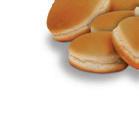
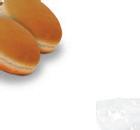



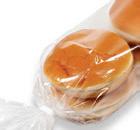
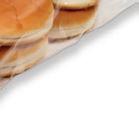





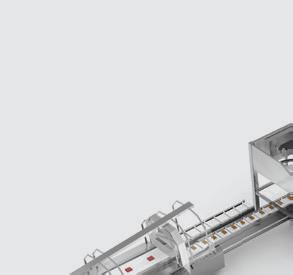
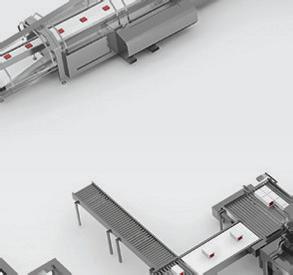



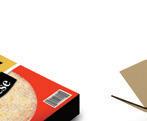
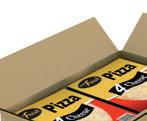






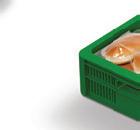




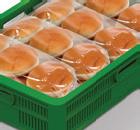

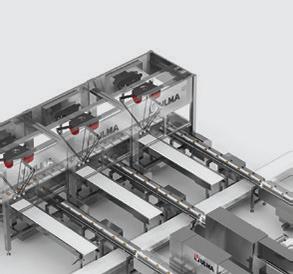













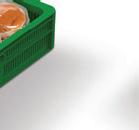



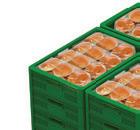
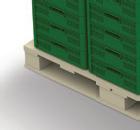

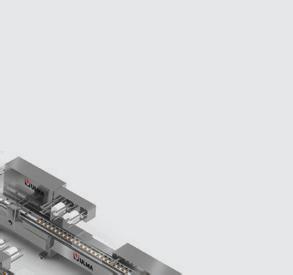
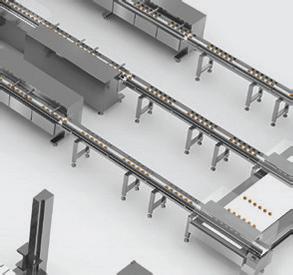








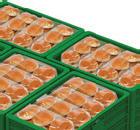
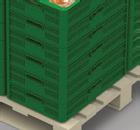



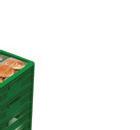





•Palletizing
•
Management
•
Other
“The real challenge is ensuring consistency and quality at scale, making sure the hundredth meal is just as perfect as the first, and that they all arrive reliably on time,” she said. “You’re selling a business-grade experience, not just a product.”
Catering is also increasingly moving beyond big, occasional events.
“The most significant shift we’re seeing is the rise of the everyday occasion,” Roche said. “Orders for daily or weekly employee meals are up 32 percent yearover-year, and 62 percent of employees enjoy a treat during the mid-afternoon slump. This creates a massive opportunity for bakeries that can deliver smaller, more frequent moments of joy.”
That shift can be a marketing opportunity as much as sales. Roche noted that 70% of employees who first try a restaurant through a workplace meal go on to personally order from that brand.
“That tray of sandwiches and cookies feeding 25 people at lunch isn’t just one order,” she said. “It’s potentially 25 new customers.”
While catering multiplies a brand’s reach through single events, subscription boxes provide a steady, predictable way to engage consumers directly and build long-term loyalty. Since its launch in 2020, Wildgrain, a bake-from-frozen artisan bread and pasta delivery service, has scaled to more than 80,000 active subscribers by partnering with more than 45 local bakeries for fulfillment.
Members can choose from box sizes of 4, 6 or 12 items, with options such as Italian, gluten-free, plant-based, or variety assortments that include breads, pastries, pastas, sauces and more. A
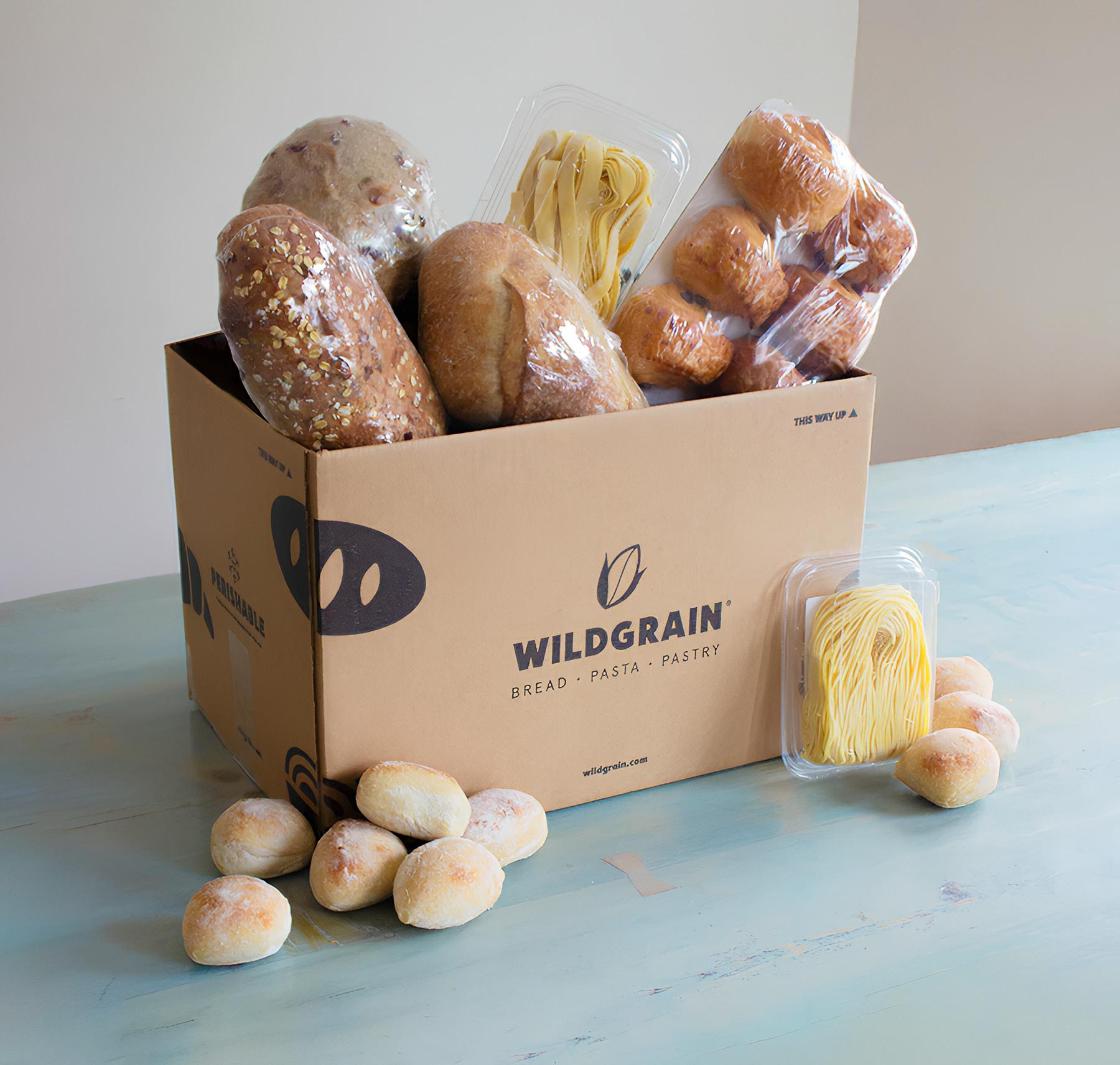
monthly subscription typically ranges from $69 to $189 per box with free shipping, and customers can skip, pause or adjust shipment frequency whenever they want — features that help build retention.
Subscription boxes are part of a broader trend toward direct-to-consumer food sales, which grew more than 20% year-over-year in 2023. For bakeries, these models not only provide recurring income but also valuable consumer data, offering insights into purchase frequency, preferred products and flavor trends. This information can inform broader marketing, menu development and even new product launches. In addition, subscription models allow brands to experiment with limited-edition items, seasonal offerings or curated pairings, creating a sense of excitement and
exclusivity that drives engagement. For wholesale bakers, subscription models offer recurring income, direct consumer relationships and a scalable way to expand reach beyond traditional shelves.
The baking landscape is only getting more dynamic, and that creates opportunity. New channels from vending to catering to c-stores are more than just a chance to expand distribution; they’re touch points to build stronger connections with today’s consumers. Bakers who embrace this shift with creativity and agility can do more than keep pace — they can set the tone for how the industry evolves. By rethinking packaging, formats and experiences, the next wave of category leaders won’t just be adapting to change, they’ll be defining what’s next. CB




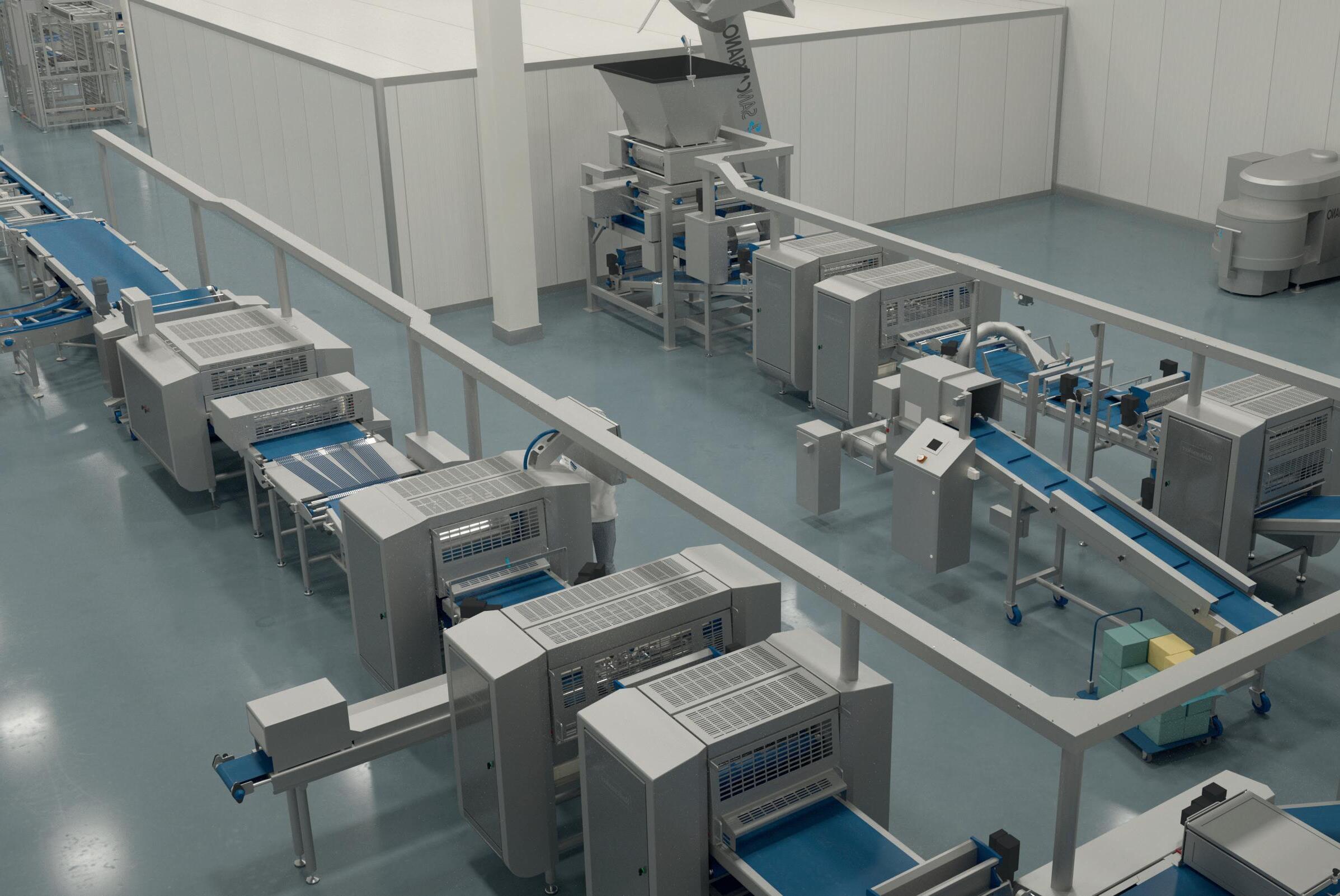
Bakery is your business and you know how tough it is. So do we. Our team of dedicated professionals earned their experience on the bakery floor so we know what works and what doesn’t. Partnering with Rademaker Systems Integration gives your business the competitive advantage of:
• 30+ YEARS OF OPERATION AND ENGINEERING EXPERIENCE
• LAYOUT AND PROCESS CONSULTATION
• TOP TIER EQUIPMENT MANUFACTURING PARTNERS – FROM RAW MATERIAL THROUGH PACKAGING
• PROFESSIONAL, ON SITE PROJECT MANAGEMENT
• INSTALLATION, COMMISSIONING, TRAINING SUPPORT
Make your bakery the best it can be with Rademaker Systems Integration!

Whether planned in advance or happening on the fly, the reformulation of a product requires foresight and collaboration.
BY MADDIE LAMBERT
Remember back in 2014, when Vani Hari, known around the blogosphere as “Food Babe,” sent the commercial baking industry into upheaval with her petition against Subway?
Hari called for the sandwich chain to remove the dough conditioner azodicarbonamide (ADA) from its bread, noting the chemical was also used in the manufacturing of yoga mats and shoe rubber. Even though ADA had GRAS status from the FDA, the petition still sent shock waves through the industry, causing bread suppliers — not only for Subway but in channels everywhere — to drop everything and reformulate.
In an ideal world, a clear set of initiatives is outlined in advance of the reformulation process and its several stages. Before R&D teams can roll up their sleeves and get to work, they must understand what’s driving the reformulation. Whether the need is related to nutritional targets, cost considerations or consumer perception, it’s crucial to identify potential ingredients that contribute to the end goal without sacrificing the quality of the finished product.
“That involves looking into technical data, regulatory status, functional properties and perhaps consulting with supplier partners to review market benchmarks and consider consumer perception areas,” said Kendall Howie, principal food scientist at the Middleby Bakery Innovation Center. “It’s not just about finding an ingredient that ‘works.’ It’s also about finding one that aligns with the product, brand identity and production realities.”
Once the process moves to benchtop trials, the abstract formulation comes to life on a smaller scale to assess feasibility in a controlled setting. From there, qualitative assessment becomes a crucial step for spotting early red flags in terms of appearance, flavor, aroma and texture. Raising those flags early provides time to screen different ingredient levels before testing at scale and completing full production trials.
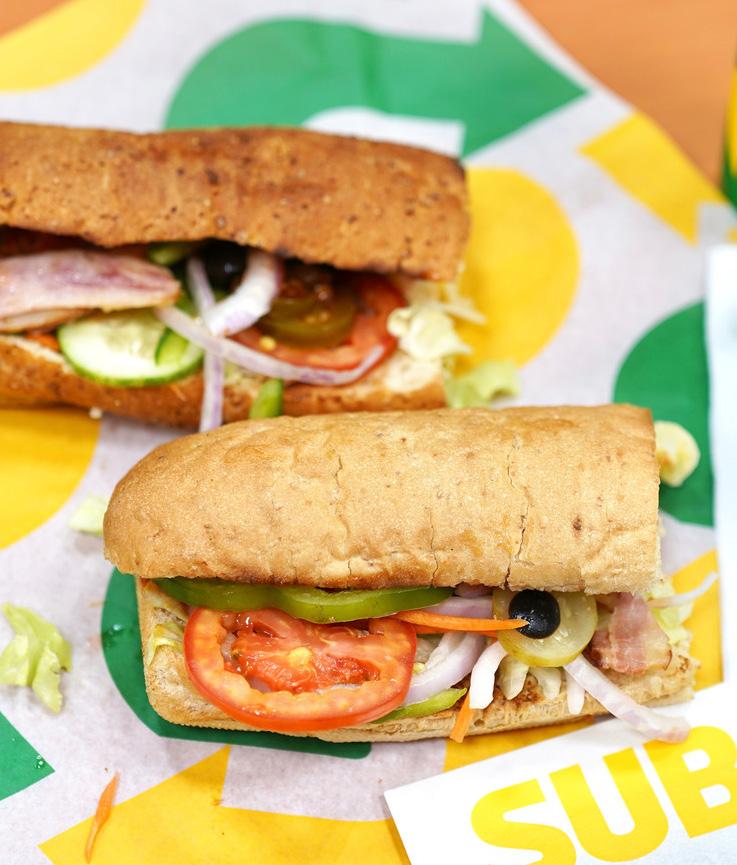
In the case of the ADA disruption, the truncated timeline and quick-turn decisions risked missteps at any part of such a nuanced process.
“It takes time to rebuild because you have to understand the matrix you’re putting the product into,” said Sherrill Cropper, PhD, new product development lab manager for Lesaffre North America. “We have to understand exactly what parameters can and cannot be changed, and as we start trying to hit the specific formulation change that’s required, we have to keep the product’s integrity.”
Fast-forward a decade, and the court of consumer opinion still has significant sway over product development.
Today, consumers are pushing for fewer synthetic additives for foods with cleaner labels. They’re also paying closer attention to the legacy ingredients used in traditional snacks and asking deeper questions about whether they’re safe and how they’re processed … and manufacturers should take heed.
“We’re seeing a push to prioritize natural and sustainable ingredients, and that often necessitates the removal of artificial flavors, colors, preservatives and additives of that nature,” Howie said. “But it’s not as simple as just swapping one ingredient for another. It’s more about rethinking the structure, function and relationship of those ingredients.”
While the push is at the forefront of product development now, the trend has been gaining momentum for several years.
For instance, Houston-based The Sola Co. reformulated its breads, buns and
bagels in 2023 to become keto-certified and free of saturated fats, artificial flavors, colors and preservatives. Sola relies on an all-natural preservative system to maintain taste while naturally extending shelf life. Reformulating allowed the bread manufacturer to expand into natural and organic channels.
Label cleanup is the name of the game right now. Baking companies are seeking resources to do so, whether it’s replacements for DATEM, L-cysteine, mono- and diglycerides, or label-friendly alternatives to sodium stearoyl lactylate.
There’s one word consumers will surely recognize — and accept — in their foods: fermentation.
According to Precedence Research, the global fermented foods market size accounted for $247 billion in 2024 and is expected to increase to almost $395 billion by 2034, with the fermented
confectionery and bakery products segment expected to grow at the fastest rate during this forecast period.
For bakers, this means there’s white space to experiment with recipes and integrate fermented ingredients into their portfolios. And, with consumer demand for clean labels reaching a near fever pitch, there’s room for the use of these ingredients beyond bread. Pastries, fillings and doughs can also serve as vessels for experimentation, and brands can introduce new flavors and packaging formats to make fermented foods even more accessible and appealing to a wider range of shoppers.
“It helps that consumers know yeast, they know fermentation, and they know some of those aspects up front,” Dr. Cropper said. “It’s not as big a challenge to overcome when the ingredients on the package appear friendly to the consumer.”
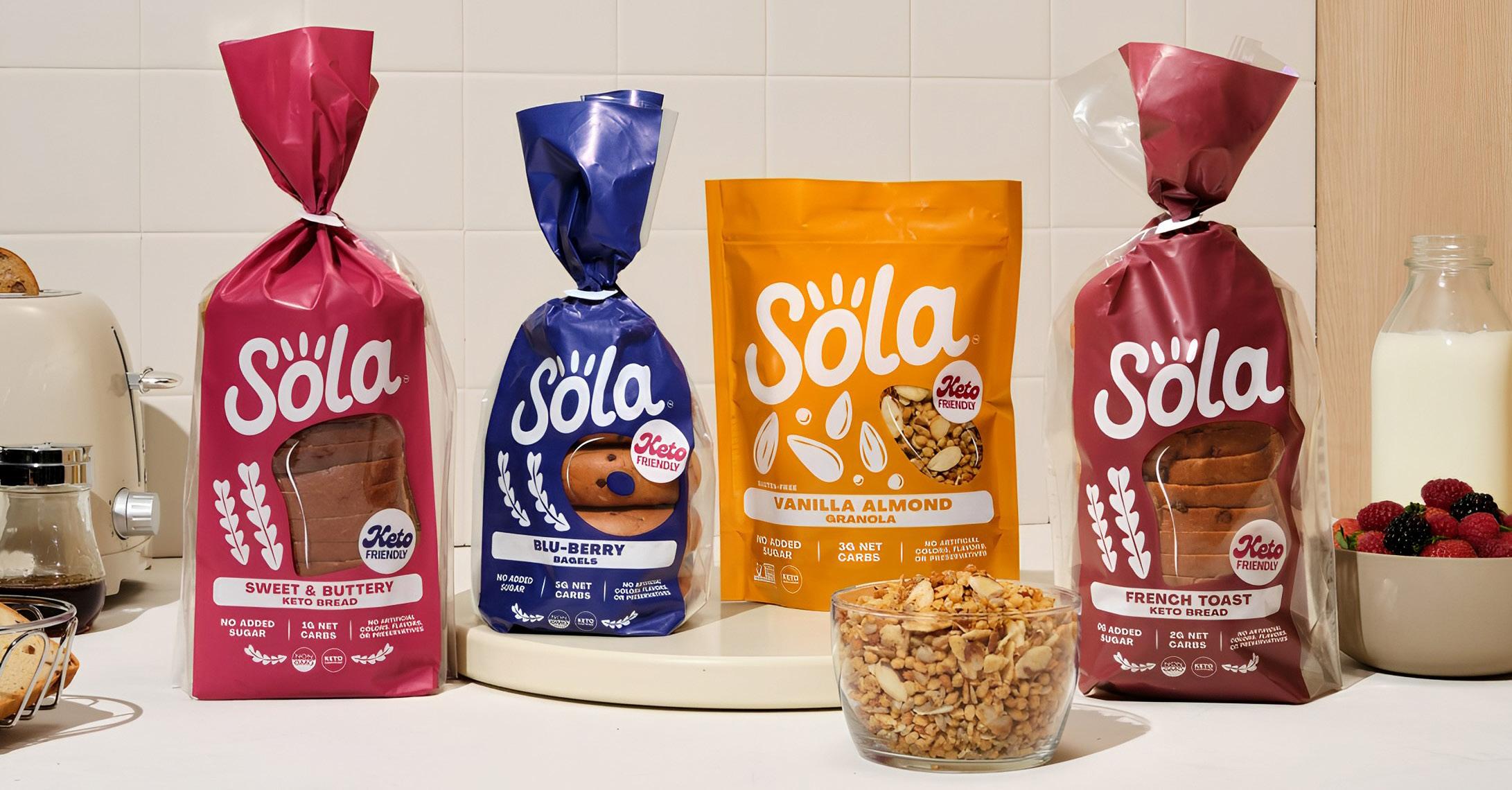

Hand-in-hand with fermentation are enzyme technologies, and, according to Jason Tucker, Industrial Pilot Bakery supervisor for Puratos USA, they’re the future.
“As bakers clean up their ingredient lists, enzymes are going to become the heavy hitter from a formulation standpoint,” he said. “Whether it’s from the shelf-life perspective or the dough-strengthening perspective, enzymes can do almost anything bakers need them to do in a formula.”
Puratos recently launched its Industrial Pilot Bakery, powered by AMF Bakery Systems, to accelerate product development from concept to commercialization. The facility combines AMF’s bakery equipment and integrated automation solutions with Puratos’ ingredient knowhow and recipe formulation for quicker speed-to-market.
After all, time isn’t on the baker’s side when changing up the ingredient deck in today’s regulatory uncertainty, especially when a reformulation isn’t necessarily by choice. Bakers have been reading the tea leaves on red dye, but legislation these days seems to be changing faster than consumers change their minds.
Take the FDA’s recent regulation on food coloring and synthetic dyes, for example. That may have left some R&D teams in a scramble. In either the worst- or best-case scenario, success comes down to having a playbook that outlines ingredient analysis in advance. This enables R&D to complete easier and quicker replacements that build on past projects for future applications.
“Stay close to your procurement department so you’re constantly forward-looking about new technologies,” said Jeff Gholson, senior VP of procurement at Minneapolis-based Rise Baking Co., during the International Dairy Deli Bakery Association’s Quarterly Bakery Commodities Update, August 2025 webinar. “Have a complete look at the supply chain, and not just in North America or around your own manufacturing plants, but the full supply chain. Talk to vendors — past, current or even new ones — and have those conversations well ahead of time and don’t wait until it’s the eleventh hour.”
Supply chain shifts and the subsequent rising costs are another driver for reformulation. There was some relief from the post-COVID supply chain disruption, but with avian flu outbreaks and continued inflationary pressures, prices of eggs and cocoa have soared, and this volatility has led commercial bakers on a prompt hunt for a solution.





“The easier choice would be to adjust the consumer price higher, but there will be resistance from a producer to do so, and this is where our R&D teams are involved,” said Karim Houssenbhay, R&D director of sweet goods for Puratos. “We’re constantly scouting for alternative solutions to replace eggs. We often need to be very inventive, finding other functional replacements like enzymes or proteins to reduce or replace the very costly ingredient.”
Of course, a viable reformulation requires cross-functionality at every level. Changing a formula is about more than just ingredients and how they work together. It’s also about how a reformulated product runs through the machines as well. Testing at scale is a necessity that’s not always feasible in the reality of a bakery’s operation.
“Oftentimes at the plant level — especially when you’re looking at large bread and bun manufacturers — they’re mixing 1,000 to 1,500 pounds of flour at a time,” Tucker said. “The mixer we have in this space mixes 100 pounds, at minimum. That means we can run 15 test doughs before generating the same amount of product as a standard industrial mixer. Being flexible with small batches gives us more room to test, fail and optimize in the same amount of time and consumption that you’d have in a single mix at a plant level.”
At the end of the day, the mark of success is entirely dependent on the consumer.
“The true test of reformulation is whether the consumer still accepts it — not just at first bite but also long term,” Howie said. “This is where consumer perception and brand equity come into play, and food scientists need to close the gap between what’s
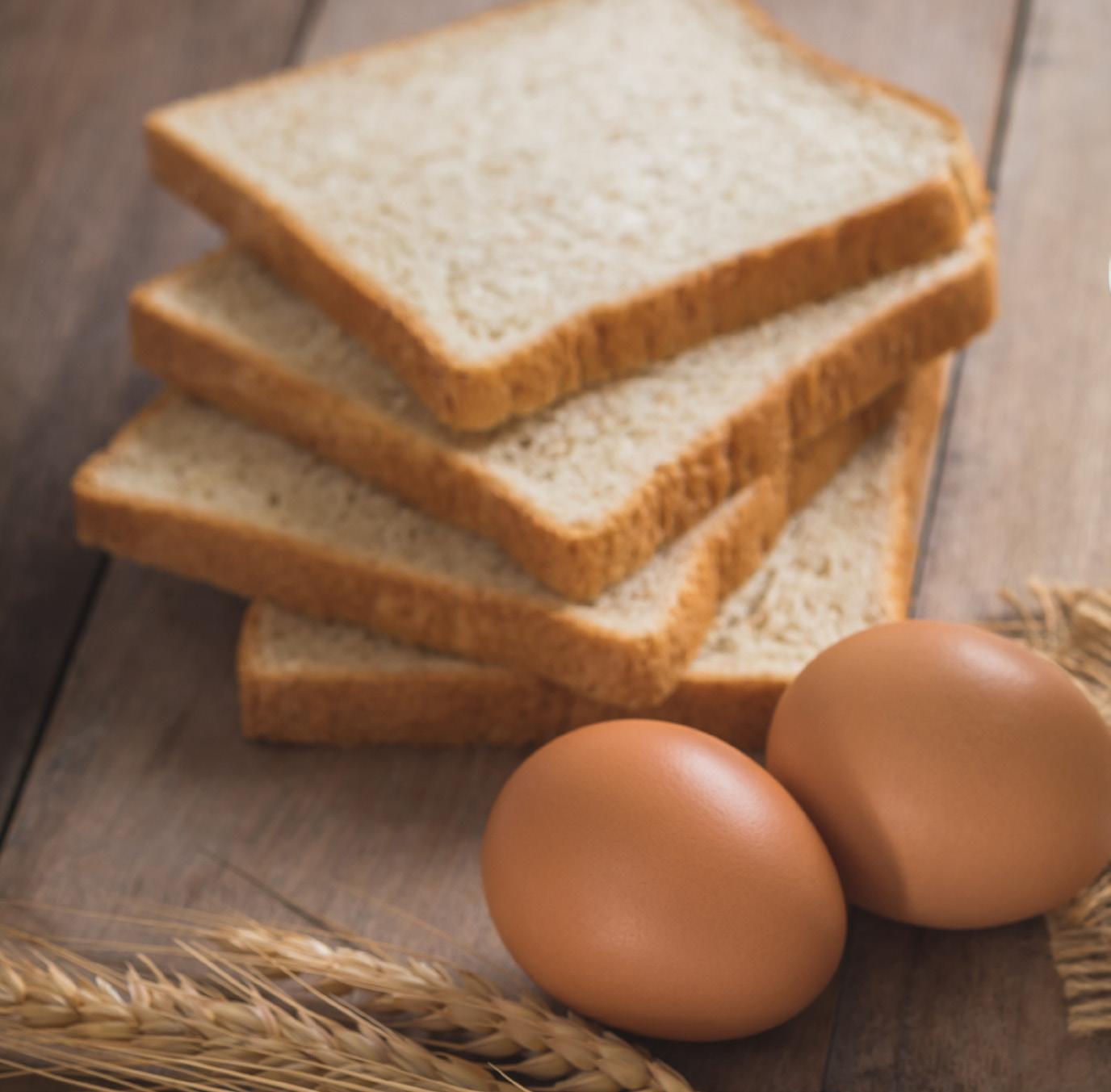
“Have a complete look at the supply chain ... Talk to vendors — past, current or even new ones — and have those conversations well ahead of time and don’t wait until it’s the eleventh hour.”
Jeff Gholson | senior VP of procurement | Rise Baking Co.
technically acceptable and what’s emotionally satisfying to the consumer. In this industry, we’re creating products that don’t just function but also resonate. That gives us a seat at the strategic table and allows us to assist in driving long-term brand loyalty.”
Reformulation today isn’t just a technical task. It sits at the crossroads of changing legislation, supply chain shifts, consumer trends and brand identity, and the future of baking relies on collaboration across the board. By crafting an ingredient playbook, defining proactive and clear goals, and maintaining consistent communication between all parties, the product reformulation waters are ready for smooth sailing. CB

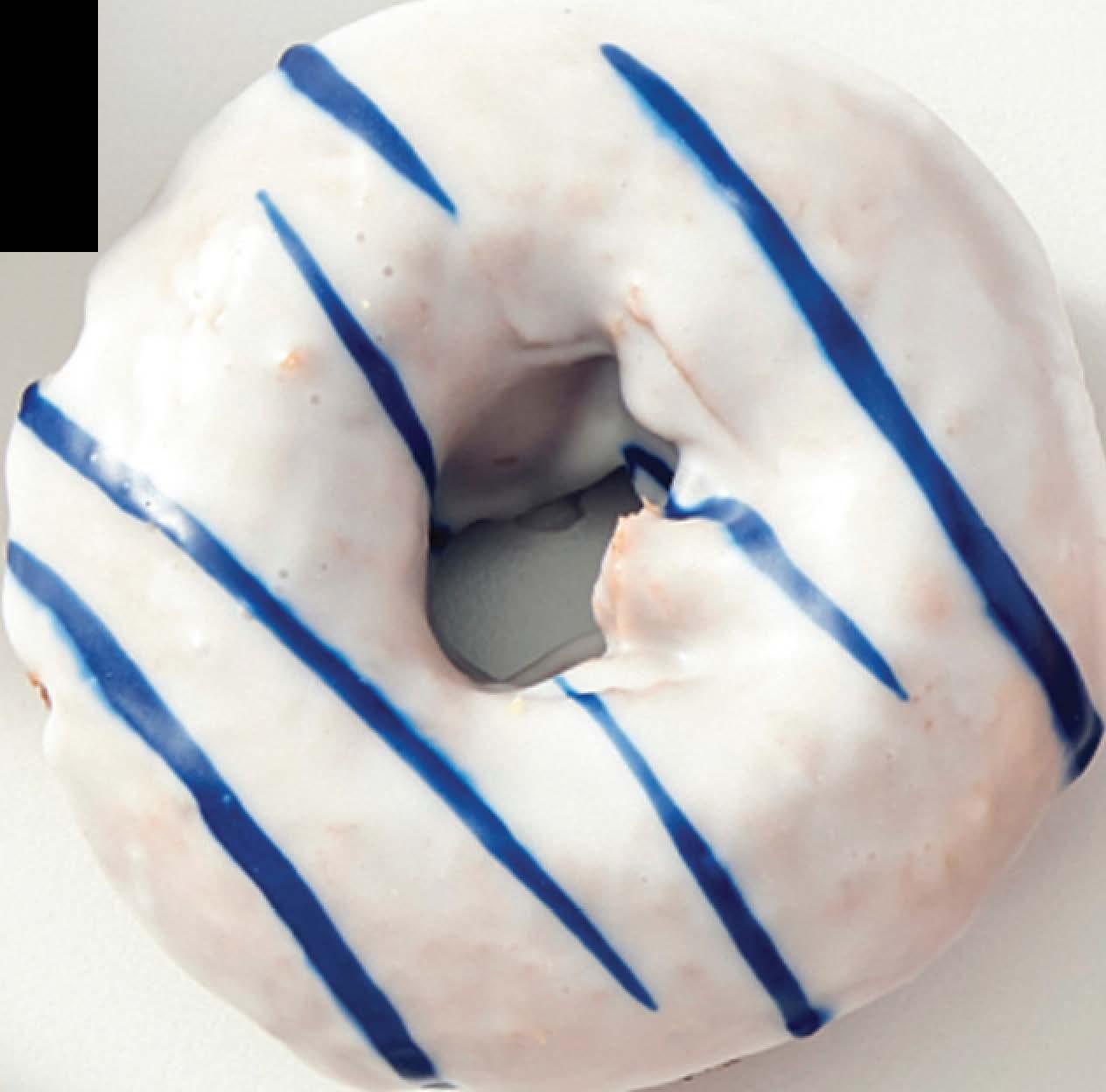





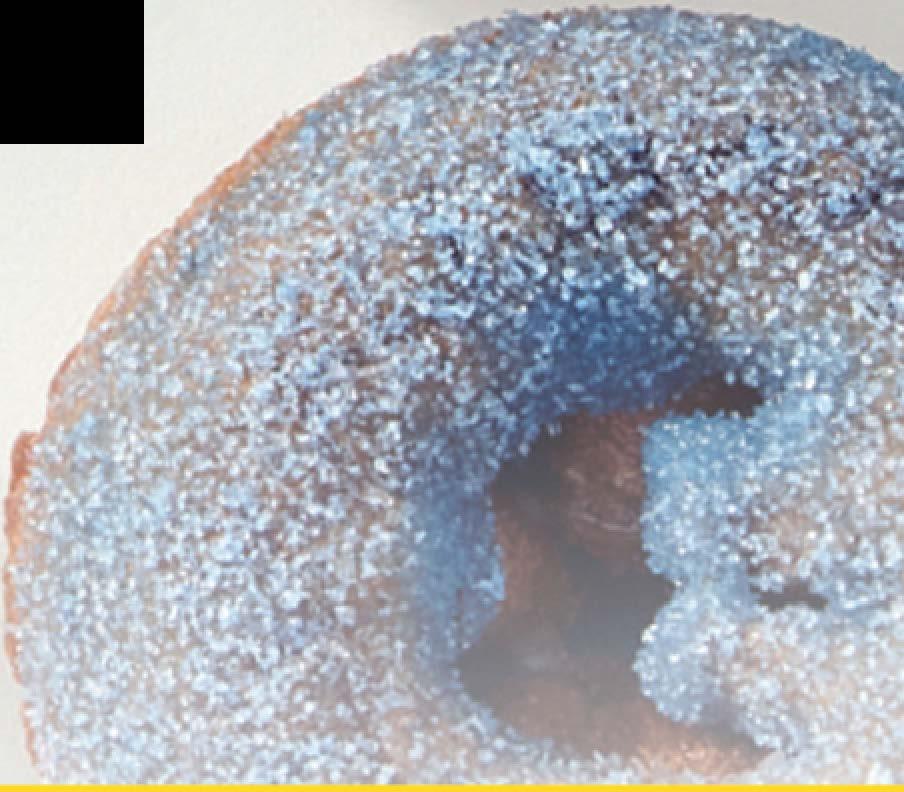


IBIE 2025 hit home for a changing industry.
BY JOANIE SPENCER
It’s the largest, most comprehensive bakery tradeshow in the Western Hemisphere: the triennial International Baking Industry Exposition (IBIE). And Sept. 13-17 at the Las Vegas Convention Center, IBIE lived up to that reputation.
After a successful post-COVID show in 2022, the event had big shoes to fill, not to mention economic and geopolitical headwinds to face. But, in terms of exhibitor space, education programming and overall excitement, IBIE 2025 not only filled those shoes, but it also exceeded the previous show cycle’s recordsetting exhibition and IBIEducate lineup. From 451,000 square feet of sold-out exhibit space ho using more than 1,000 exhibitors (including 486 new) to more than 250 education sessions and hands-on demos, the Baking Expo provided a well-rounded experience for bakers, suppliers and industry allieds.
“When I was talking to our members, the sentiment was the same,” said Kerwin Brown, president and CEO of BEMA, which co-owns IBIE with the American Bakers Association (ABA). “The size and breadth of the show — from the smallest companies to the biggest global entities — brought an energy that felt like this was the Super Bowl for our industry. I’ve been to IBIE 10 times, and this year it was more evident than ever that the Baking Expo is the place to be. The energy, excitement and variety of attendees at IBIE always attracts, serves — and paves the way forward for — every segment of our industry.”
IBIEducate reached new heights by not only expanding the number of sessions but also diversifying its accessibility. Education was available in classrooms throughout the convention center, as well as areas throughout the North and West Halls. Additionally, IBIE introduced Wordly, a downloadable real-time translation service accessible via QR code that offered 64 language choices.
96 countries were represented at IBIE, including 27 official delegations.
Source: IBIE

“This year’s IBIEducate was by far the most comprehensive and curated program we’ve ever had,” Brown said. “It was available in classrooms, on stages, in demo spaces … we took it to where the people were. We put in more work than ever before, and the result was value for everyone who participated.”
From the global perspective, IBIE welcomed attendees from 96 countries, including 27 official delegations and a concentration of international buyers from the Americas, led by Mexico, Canada, Brazil, Guatemala, Colombia and Peru. Additionally, IBIE emphasized global needs that the North American baking industry serves.
Corbion celebrated the 10th anniversary of The Women’s Bakery, a social enterprise bakery in East Africa formed to help women build professional skills and earn stable incomes by creating bread and other baked goods for local customers and schoolchildren. In the past few years, The Women’s Bakery also launched the One Bread Project, the school snack program developed to reduce malnutrition among students in areas the bakery serves. In 2024, The Women’s Bakery partnered with 65 schools, resulting in an 86% decline in dropout rates. Corbion has been a corporate sponsor of The Women’s Bakery for nearly a decade.
Plus, an ABA-sponsored presentation about food security solutions showcased the partnership between Lesaffre/Red Star Yeast and So They Can, a global organization dedicated to ending ch ildhood poverty in Africa through increased education for chi ldren. During the show, Emily Whitehouse, So They Can pa rtnerships manager, was also present in the Le saffre booth to help IBIE attendees learn more about the
group’s mission and how it’s working with Lesaffre/Red Star Yeast.
Baking competitions also had a global spotlight at the show, with the World Bread Awards USA returning to IBIE, along with the Coupe du Monde de la Boulangerie – Americas Selection, for which Team Canada and Team USA took first and second place, respectively. A newcomer to the Baking Expo, the Americas selection of the Panettone World Cup named winners from USA and Canada in the traditional category, as well as competitors from Ecuador and USA taking top honors in the chocolate category.
Meanwhile, the 20th edition of the Pillsbury Creative Cake Decorating Competition hosted six teams that competed across four categories — Wedding Cake, Rolled Fondant, Sculpted Cake and Buttercream — in the North Hall.
Also in the North Hall, the Retail Bakers of America (RBA) — supporting partner of IBIE — showcased the RBA Bakers Center with live demos, competitions and inspiring stories from leading bakers, pastry chefs and cake artists.
“The camaraderie, passion and knowledge-sharing at the show were truly palpable,” said Amie Smith, IBIE committee member and RBA president. “The event fosters generosity in sharing expertise and creating lasting connections. At its core, IBIE sets the gold standard for education and top-notch talent presenting at the RBA Retail Bakers Center.”
Despite a year full of economic and political uncertainty, IBIE proved to be impactful for all who entered its halls. Although individual registration took a
91%
of IBIE attendees identified as purchasing decisionmakers or influential in the process.
Source: IBIE
slight dip — down 8% from the 2022 show — the number of baking companies represented was 5% higher than pre-pandemic show cycles.
“Experiencing my first IBIE was truly remarkable,” said Eric Dell, ABA president and CEO, who joined the association in 2023. “IBIE is much more than a tradeshow. It’s the premier forum where innovation, education and global collaboration come together to shape the future of baking. IBIE reaffirmed ABA’s vital role in advocating on behalf of baking manufacturing. I was especially glad to see our supplier and baker members connect in meaningful ways, strengthening the partnerships that move our industry forward. The energy throughout the show demonstrated why IBIE is essential to inspiring innovation and advancing the baking sector.” CB
For the full suite of written and multi media coverage from the Baking Expo, visit www.commercialbaking.com/ibie

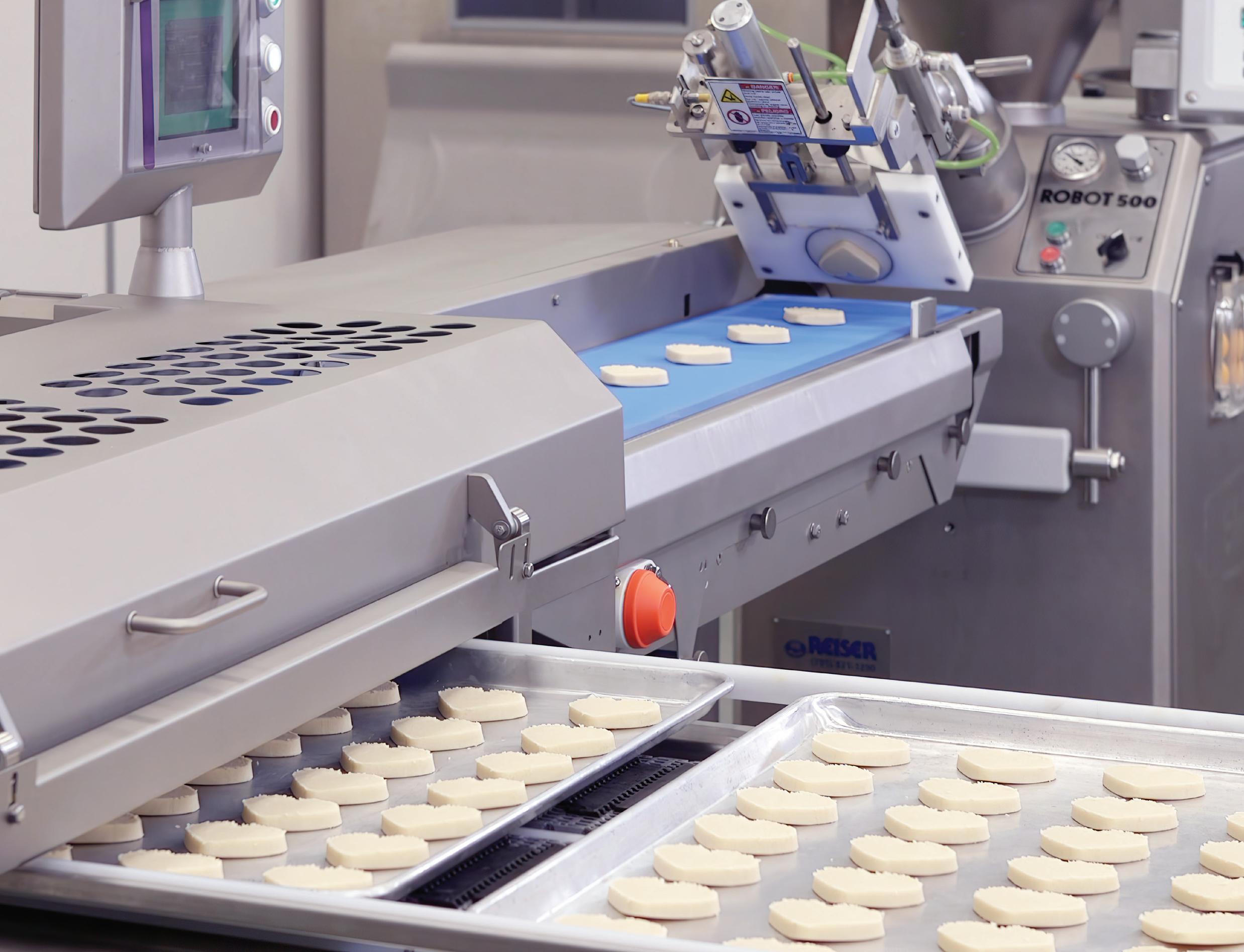
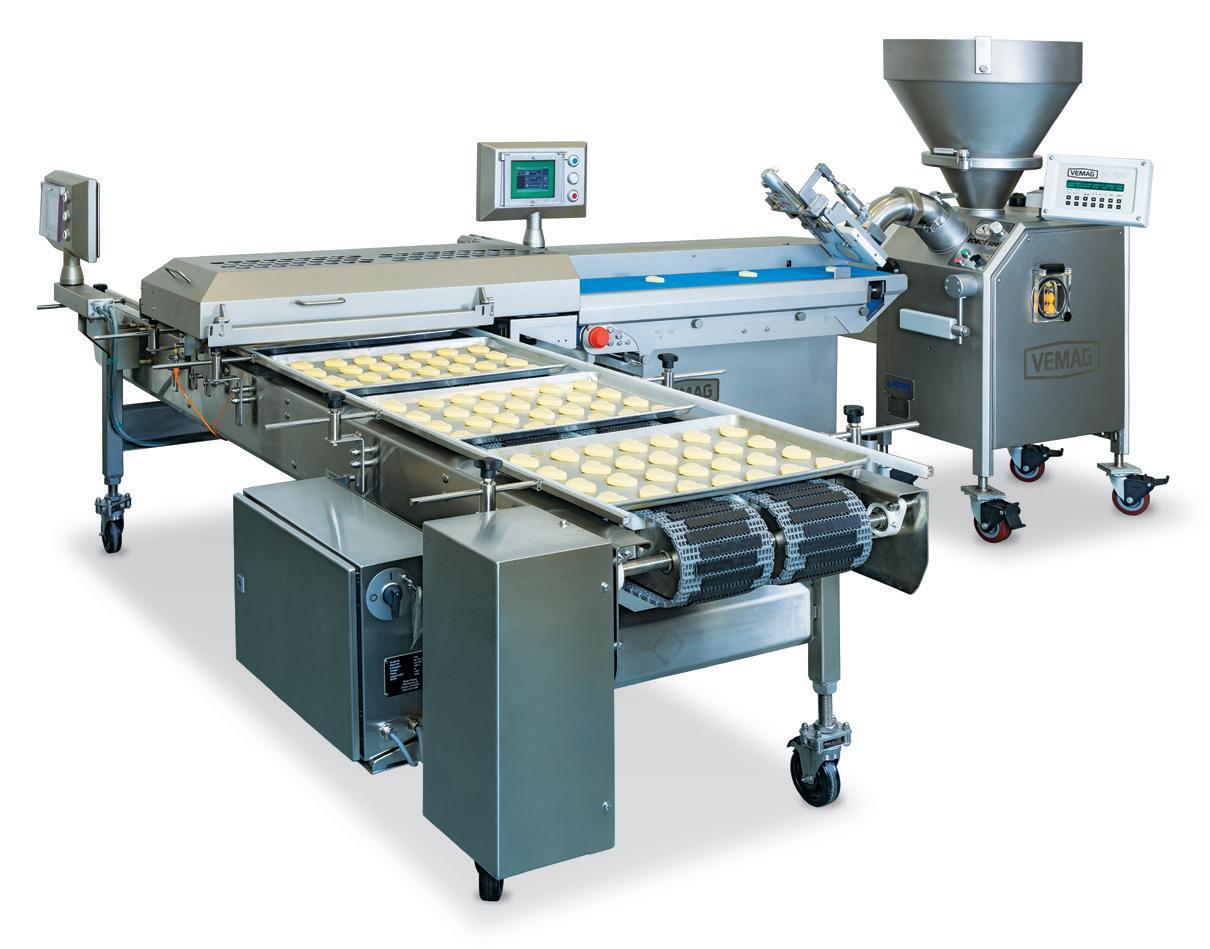
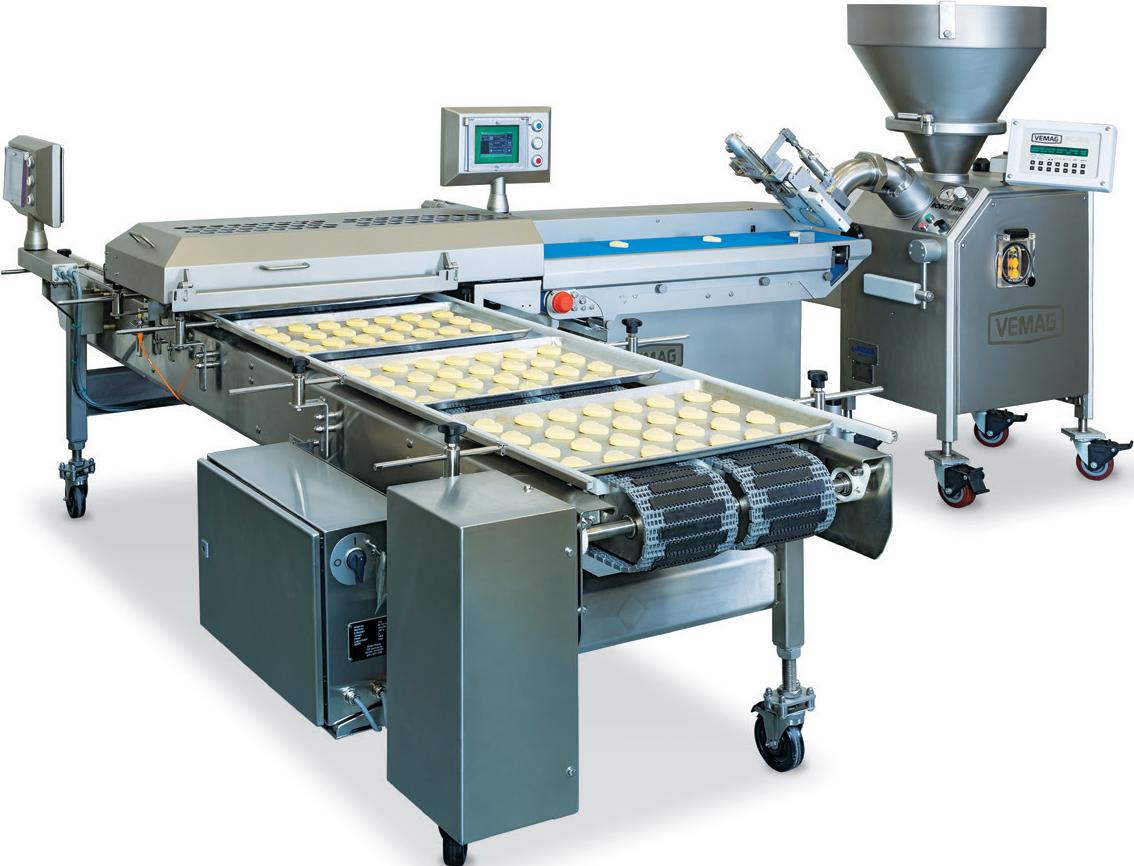
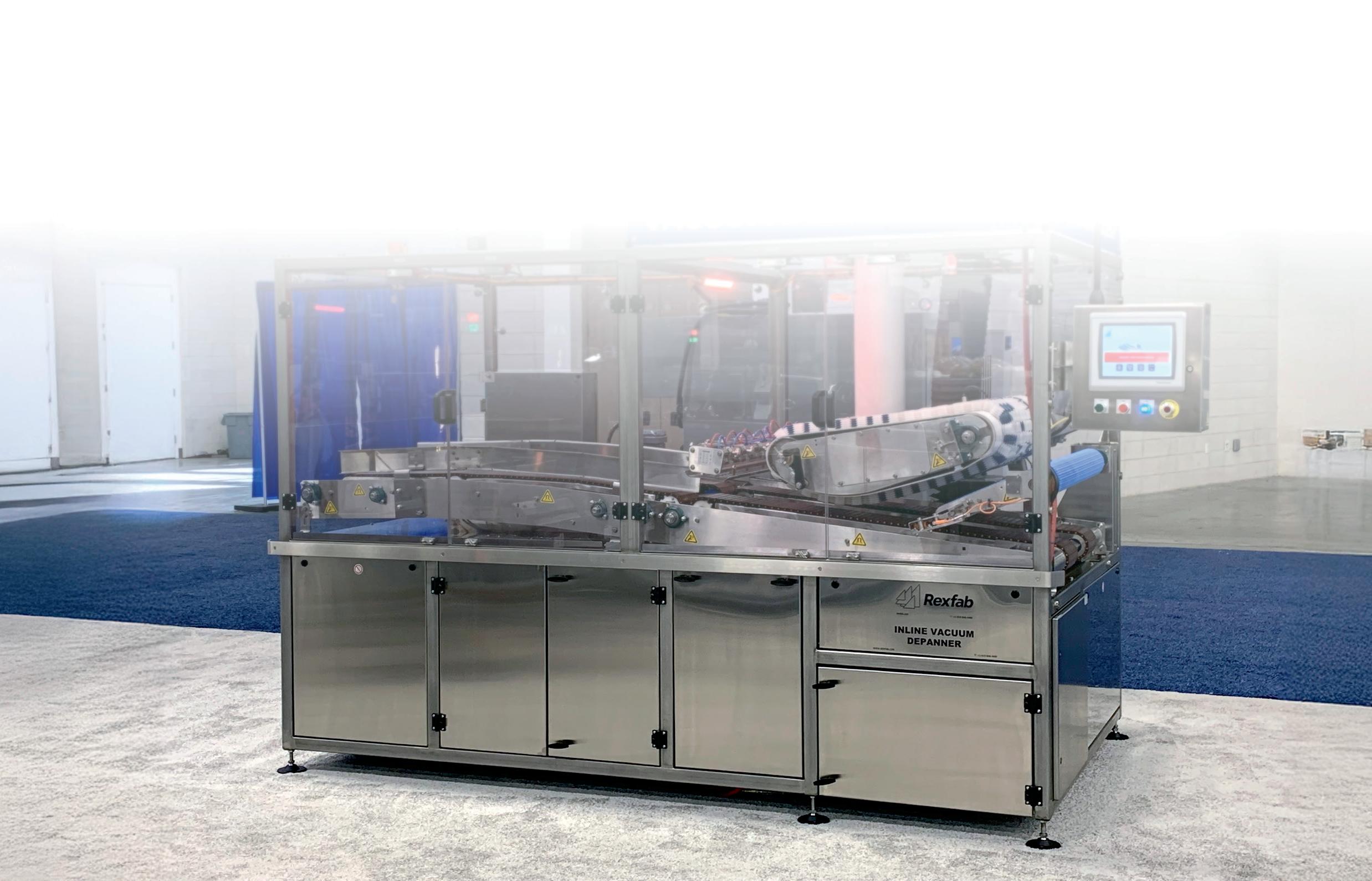
COMMITTED PARTNER
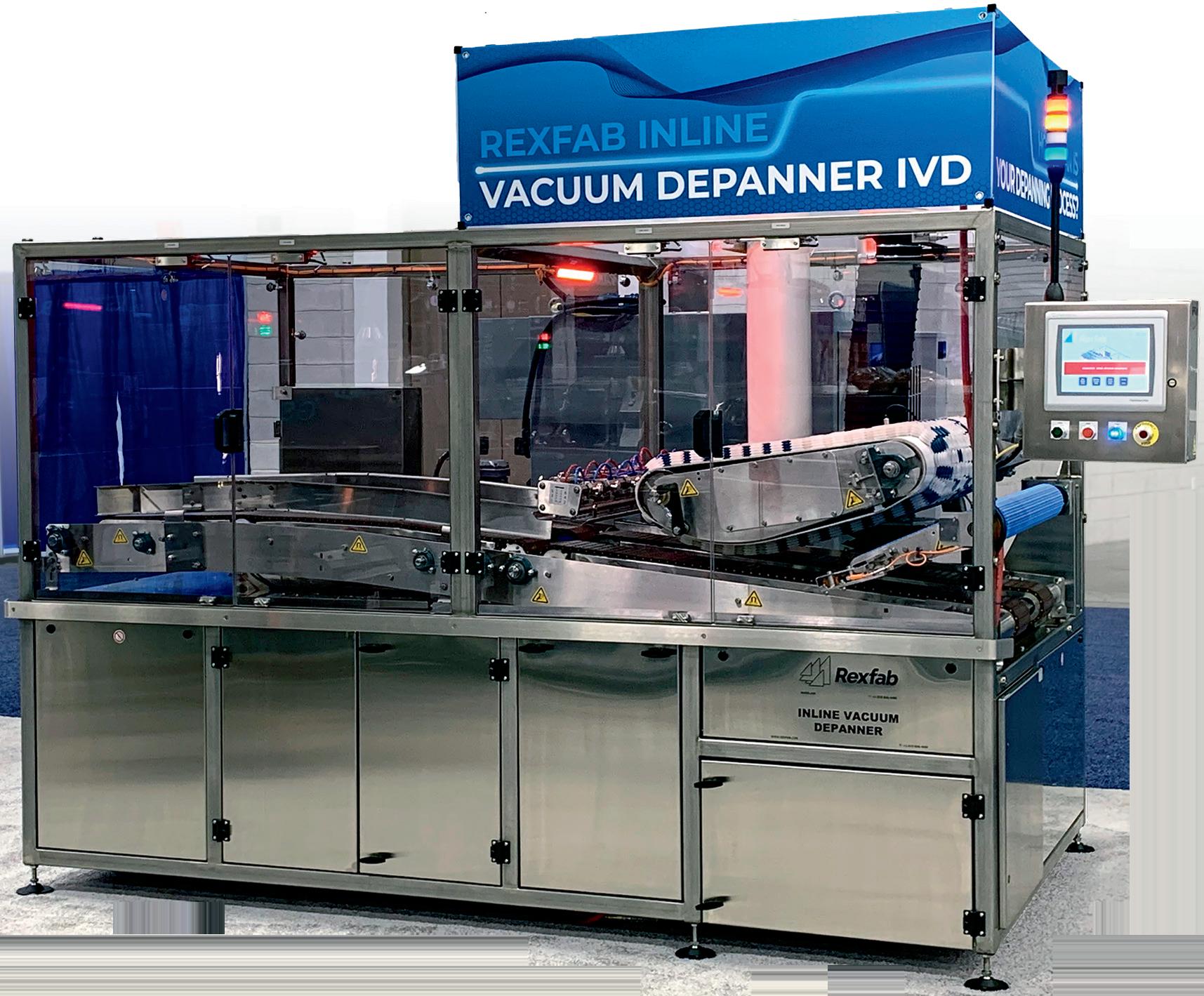

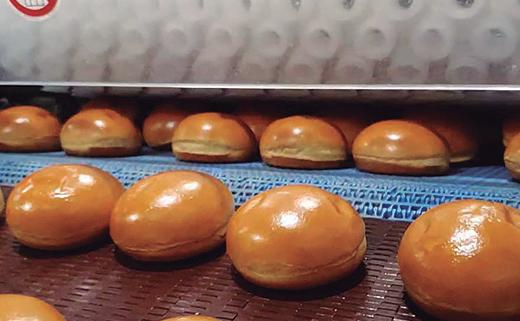
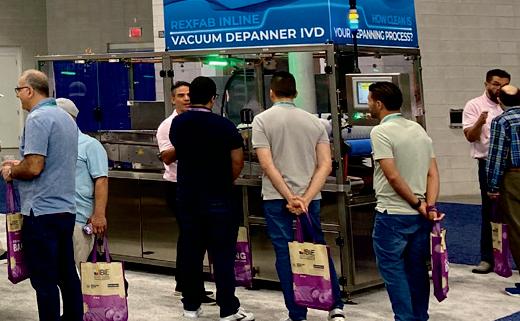
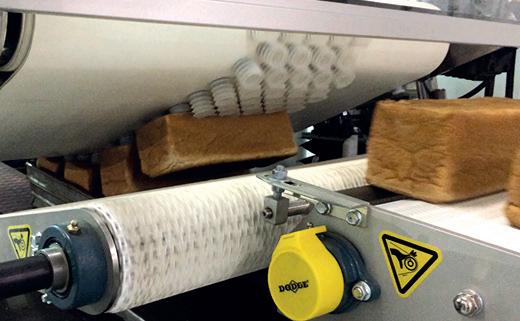
BY BETH DAY
While bagels remain a breakfast favorite, they have also evolved into a customizable snack or anytime meal.
The overall bagel category reported more than $2 billion in sales, according to Circana sales figures for the latest 52 weeks ending July 13, 2025. Producers are expanding offerings to include artisanal styles, enhanced flavors and healthy ingredient claims to satisfy diverse consumer preferences.
“Bagel manufacturers are introducing more profiles that emulate some of the more popular flavors across other bakery categories,” said Dawn Aho, principal of client insights, bakery vertical at Circana.
“Additionally, Circana’s National Eating Trends has shown that bagels are one of the bread types to increase their share of sandwich carrier frequency over the past four years.”
Center store bagels posted more than $1.6 billion in sales, a -1.5% decline vs. the same period a year ago, according to Circana. Unit sales are stagnant, reporting a 0.4% uptick. Despite dips, Aho observed some growth among top brands, potentially fueled by the inclusion of functional claims.
“Top performers for center store bagels with increased dollar sales feature products with health claims that may be driving growth,” Aho said. “These brands highlight use of real ingredients and functional attributes, such as organic, low carb, high protein and whole grain.”
Total US - Multi Outlet w/ C-Store (Grocery, Drug, Mass Market, Convenience, Military and Select
Beauty & Online Retailers) | Latest 52 Weeks Ending July 13, 2025
&
Source: Circana Omnimarket Integrated Fresh, a Chicago-based Market Research Firm (@WeAreCircana)
Among the top five brands, Aho noted that sales of Horsham, PA-based Bimbo Bakeries USA (BBU)’s Thomas’ Bagels brand were the highest by more than twice the next brand. Private label bagels and those from Thomasville, GA-based Flowers Foods’ Dave’s Killer Bread showed both dollar and unit growth. Both Thomas’ and Dave’s Killer Bread offer bagels with healthy ingredient claims.
“Thomas’ Bagels recently introduced two high-protein, 4-count products, inc luding plain and everything profiles,” Aho said. “Dave’s Killer Bread bagels are all organic, made with no high fructose corn syrup, artificial ingredients or preservatives, and feature protein and whole grain claims on the label.”
Other center-store brands among the top 10 that feature functional bagels and that are showing growth include Denver-based Einstein Bros. and Houston-based The Sola Co. Einstein Bros. offers an ancient grain bagel made with quinoa and chia seeds to boost protein and fiber. Similarly, The Sola Co. leverages functional trends, not only with added protein and fiber but by also touting low-carb and low-glycemic traits.
“These product attributes are becoming more important to consumers as they look for specific ingredients, functional benefits and products with pac kaging that identifies all of the above,” Aho added.
Bagel producers must keep pace with evolving tastes and preferences. Relative to perimeter offerings, center store bagels provide more variety for consumers across a spectrum of attributes. Mixing it up with seasonal flavor profiles is a potential growth strategy.
“Center store bagel manufacturers that introduced seasonal flavors like cranberry and pumpkin spice or expanded portfolios to include additional flavors such as the everything spices, blueberry and cheese varieties, have reported sales increases on a UPC level versus a year ago,” Aho said. “Mini bagels and bagel thins also have devoted fans, and many producers leverage mini bagel offerings, including kid-friendly flavors like chocolate chip.”
Featuring different pack sizes resonates with consumers with varying needs. Aho pointed out that some producers have downsized from five or six bagels per package to four or five bagels, which allows for potential manufacturing savings while holding prices fairly steady.
Perimeter bagels not only hold a small market share but also aren’t showing much growth. They include both fixed weight and random weight items. The random weight or bulk bin choices in perimeter appeal to boomers, as they allow them to purchase just the right amount for their needs.
“Perimeter bagels have fewer flavor choices and no mini bagel options,” Aho said. “Additionally, there are no products highlighting those health attributes like organic, low carb or clean ingredients, which are driving growth in center store.”
When grocery budgets are challenged, many consumers trade down to save money by purchasing private label products. Over the last year, Circana shared thought leadership that has shown many categories, including bakery and center store bagels, are experiencing a bifurcation of consumer purchase behavior, where both private label and premium brands are winning at the expense of mainstream brands.
Center Store vs. Perimeter Bagels % Change vs. a Year Ago
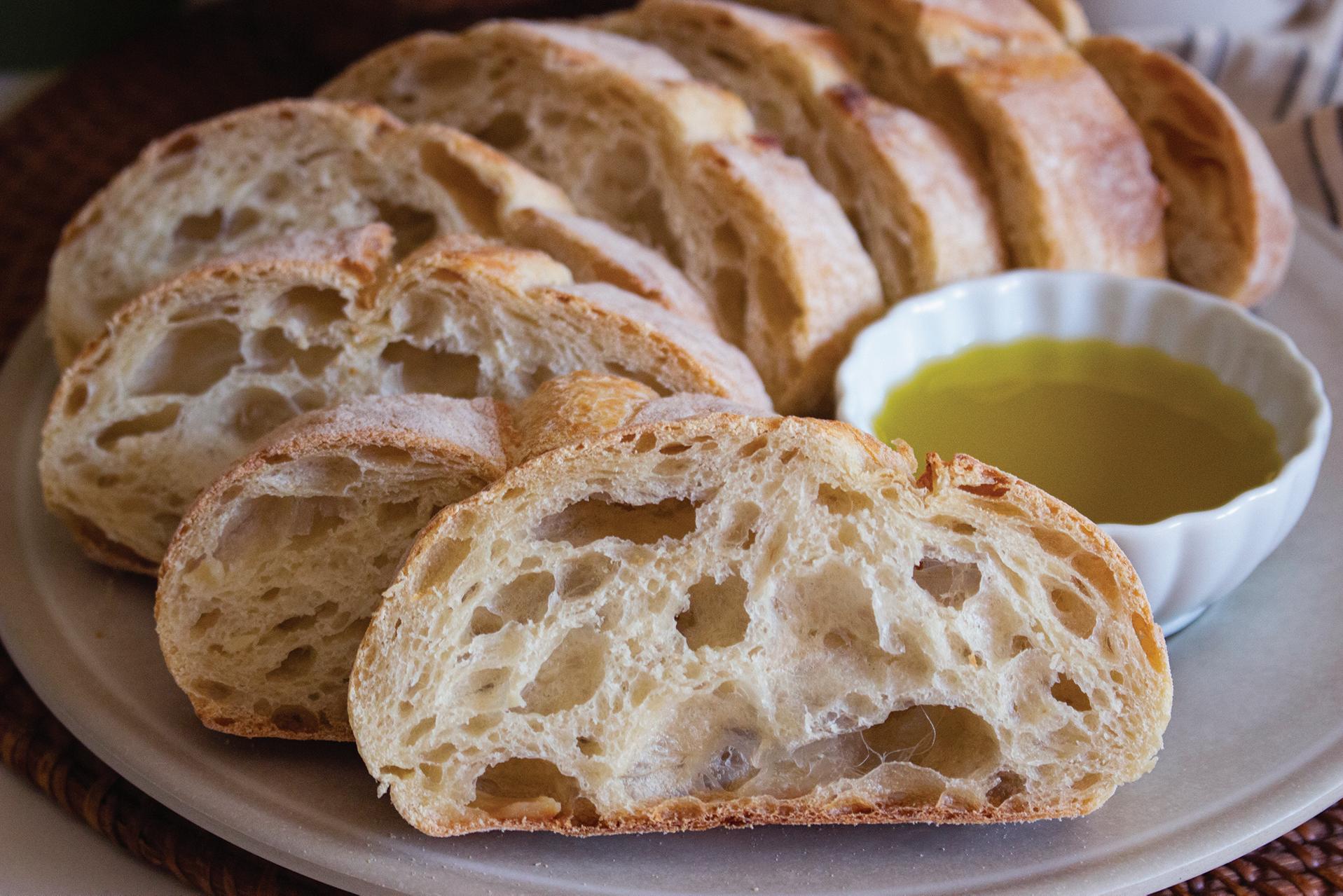
It’s where we began. For the past century, Brolite has created a variety of naturally fermented cultured flavors. Designed to give bakers a handcrafted taste in no time, these flavors are a great addition to any formula.
Our sours range from strong and pungent to sublte and delicate flavors giving the baker an exact flavor profile needed. Brolite ferments various flours for specific amounts of time, then dehydrates the custom flavor before it is finally milled into a fine, easily handled, free-flowing powder.
Unique artisan flavors made easy for any baker and any baking application.
“Private label and some premium quality and priced brands, including Dave’s Killer Bread and The Sola Co. are showing growth at the expense of Thomas’, Sara Lee, Pepperidge Farm and Franz,” Aho explained. “Private label bagels in center store represent a little over 21 percent of dollar sales and have gained over a share point versus a year ago, which could indicate consumers are balancing their bagel purchases with private label, mainstream and perceived premium options over time.”
Refrigerated bagels are a $109 million subcategory, reporting a -11.3% decline in dollars and -9.8% decline for units, according to Circana. BBU’s Lender’s brand is the largest refrigerated bagel brand, with nearly 70% market share, and it also showed similar declines.
In frozen bagels, private label accounts for nearly
58% of the dollar share.
Source: Circana
Frozen bagels are an even smaller subcategory and also posted dollar and unit declines. While private label holds the largest dollar share at nearly 58%, Aho noted some potential growth due to two gluten-free brands: Ontario-based O’Doughs and Boulder, CO-based Udi’s. O’Doughs is one of the few larger brands that reported increases, up 18.4% and 16.7% in dollars and units, respectively.
“Manufacturers should keep an eye on social media trends and use creative and non-traditional vehicles to reach current and future consumers and highlight bagel products.”
Dawn Aho | principal of client insights, bakery vertical | Circana
Rising interest in healthier bakery options is driving preference for functional claims across categories. Over the past year, bagel brands featuring health attributes experienced dollar and unit growth. Aho expects this trend to continue.
Bagels appeal to eating occasions across dayparts, creating opportunities for producers to promote uses beyond breakfast.
“Consumers constantly seek new and interesting ways to use familiar products, and many are willing to try something new to satisfy multiple household needs,” Aho said. “Manufacturers should keep an eye on social media trends and use creative and non-traditional vehicles to reach current and future consumers and highlight bagel products.”
It’s full steam ahead for functional bagels with popular flavors. By including health claims, promoting new uses and engaging consumers, bagel manufacturers can tap into category growth. CB
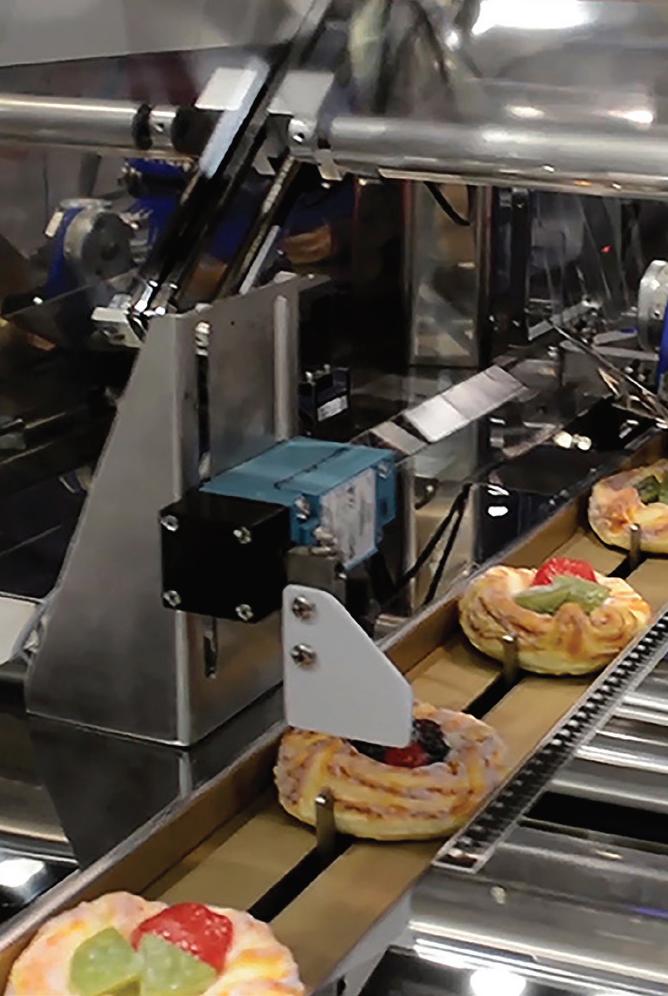

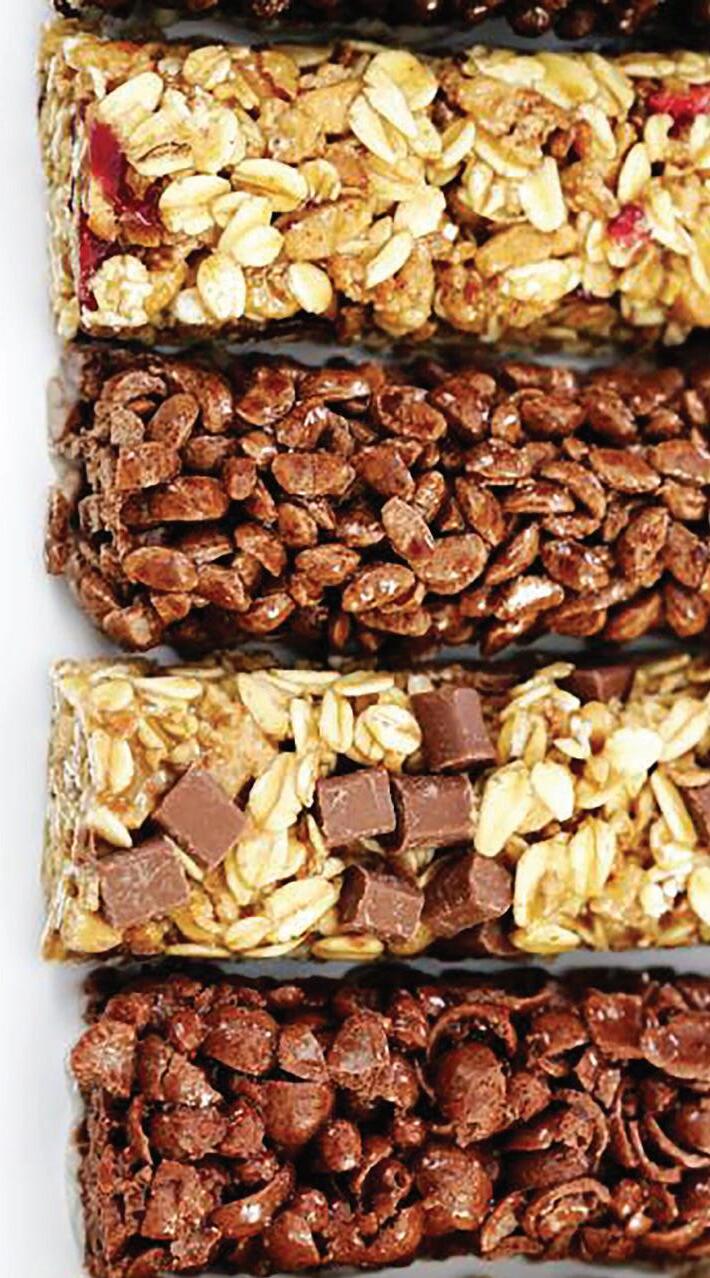


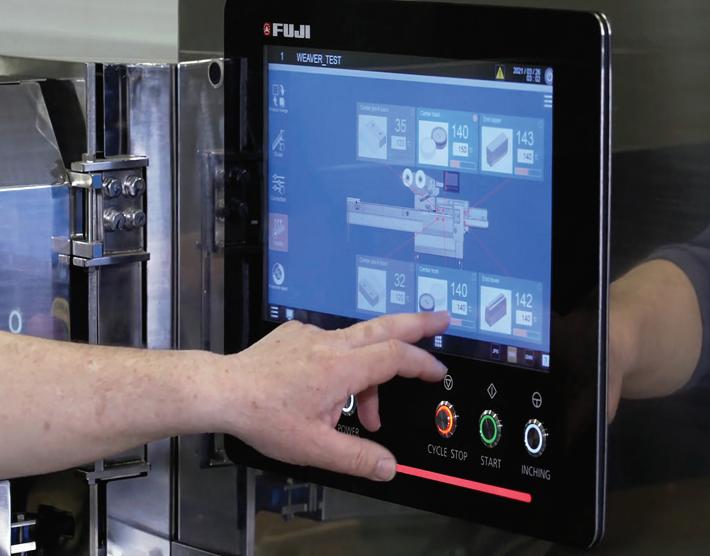
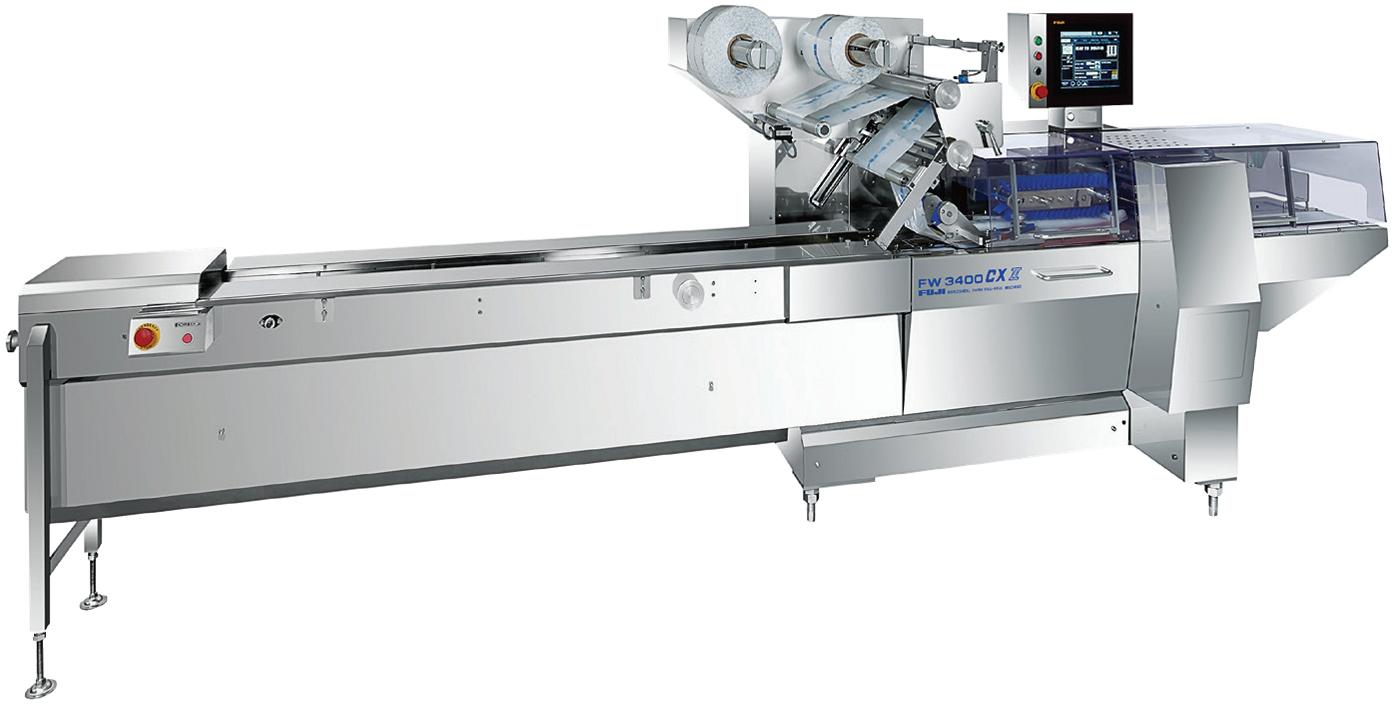





















BY BETH DAY
The sweet goods category produces pre-made, fresh and packaged indulgences to meet every taste and occasion. According to Mintel’s “US Prepared Cake and Pies Market Report 2025,” a wide range of ready-made treats offers variety, convenience and affordability, providing a practical solution for busy consumers.
Perimeter croissants reported more than $1 billion in sales, with 9.8% dollar and 7.8% unit gains, according to Circana sales figures for the latest 52 weeks ending July 13, 2025. In the perimeter, the plain/butter/white croissant group has the largest percentage of dollar sales, at nearly 89%, with annual dollar sales growth of 8.5%. Other perimeter croissant flavors that are showing sales growth vs. a year ago include cheese-filled, chocolate-filled and fruitfilled, although they are much smaller in absolute sales.
“Croissants have shown growth over the past several years, driven by their versatility and unique uses,” said Dawn Aho, principal of client insights, bakery vertical, at Circana. “Cronuts led the charge in 2013 and have been followed by other croissant trends such as flat croissants, croissant-baked desserts, croissant waffles or ‘croffles’ believed to originate in South Korea, and croissant cookies or ‘crookies,’ which hail from Paris. All have gained popularity, often fueled by social media and
Croissants Dollar Sales
Club, & Dollar, Beauty & Online Retailers) | Latest 52 Weeks Ending July 13, 2025
Source: Circana Omnimarket Integrated Fresh, a Chicago-based Market Research Firm (@WeAreCircana)
bakeries experimenting with unique flavors and textures.”
Perimeter traditional croissants, which consist primarily of plain butter, grew in dollars and units vs. a year ago. This subsegment includes both fixed UPC and random weight PLU or bulk bin items. Although they represent a small market share, perimeter filled croissants had significant dollar and unit gains at 26.8% and 27.8%, respectively.
“With nearly 92 percent of dollar share, private label is the largest brand within perimeter traditional croissants,” Aho said. “Perimeter filled croissants are also driven primarily by private label products, representing nearly 60 percent of dollar sales.”
Center-store croissants grew 6.9% in dollar sales and 7.3% in unit sales, with little to no price increases. Representing 63.4% of market share, center-store traditional croissants showed significant gains for dollars and units, at 10.6% and 9.1%, respectively. While Aho didn’t observe new brands driving increases for this subcategory, she did note that private label, Horsham, PA-based Bimbo Bakeries USA’s (BBU) Cuernitos brand and Clifton, NJ-based Oven Delights were the three largest with dollar and unit growth.
Perimeter muffins posted more than $1.6 billion in sales, with 6.6% dollar and 6.9% unit gains and minimal price increases, according to Circana data. Perimeter muffins offer a range of flavors and sizes, including mini and full-size items. Some perimeter multi-serve muffin packs contain several flavors, many of which are not available in center store.
“Both perimeter full-size and mini muffins showed strong growth, with 17.6 percent and 6.7 percent increases in dollar sales, respectively,” Aho said. “While nearly all perimeter muffins are private label offerings, Mondelez International’s Give & Go Two Bite brand of mini muffins is the only other brand of note reporting dollar and unit growth.”
Private label perimeter brands provide an array of choices at affordable prices, including multi-serve items for family gatherings, sporting events and group functions. Aho noted the three most popular flavors for perimeter muffins are blueberry, banana and chocolate chip, all of which showed dollar sales gains.
Within center store, mini muffins account for 76% of dollar share and represent the mini-muffin multi-pack universe. Aho explained that BBU’s Entenmann’s Little Bites and Bimbo are the top two brands, followed by private label and McKee Foods’ Little Debbie line. However, top brands all show a decline in dollar sales, with the exception of private label and Bimbo, which grew 17.6% and 5.9%, respectively.
While chocolate chip and blueberry are the most popular flavors for center-store mini muffins, they both showed dollar sales declines. However, Aho observed the All Other subcategory reported dollar sales gains vs. a year ago.
Center Store Croissants Dollar Share*
“Expanding flavors and combinations with seasonal limited-time offers, mystery flavors, mix-ups, mash-ups and unique profiles help keep consumers engaged,” Aho said. “Indulgent treats are on-trend for many products made with premium chocolate and caramel lava fillings, drizzles or other decadent toppings for those special moments.”
The Hispanic pastry subcategories for both perimeter and center store posted dollar and unit growth with minimal price increases, according to Circana data. New York-based Bon Appetit Danish and Bimbo are the largest brands within the center store Hispanic pastry segment, with combined sales comprising more than 96% of the total subcategory. Both brands showed strong dollar sales growth vs. a year ago. Private label is the largest brand in the perimeter Hispanic pastry subcategory, reporting more than a 7% increase in dollar sales over the previous year.

From sweet and savory cakes to pies, muffins, and more, AMF Tromp delivers complete make-up solutions engineered to consistently and accurately produce picture-perfect sweet goods. Offering toolless sanitation and maintenance, these hygienic, modular designs feature interchangeable depositing heads and easily integrate with AMF Tromp sheeting and laminating lines for quick product changeover and maximum versatility for future bakery growth.
ACCURATE AND UNIFORM DEPOSITING
SUPPORTS QUICK PRODUCT CHANGEOVER
TOOLLESS SANITATION MINIMIZES DOWNTIME
INTEGRATED WITH SHEETING AND LAMINATING LINES
DESIGNED FOR HIGH-SPEED, RELIABLE OPERATION
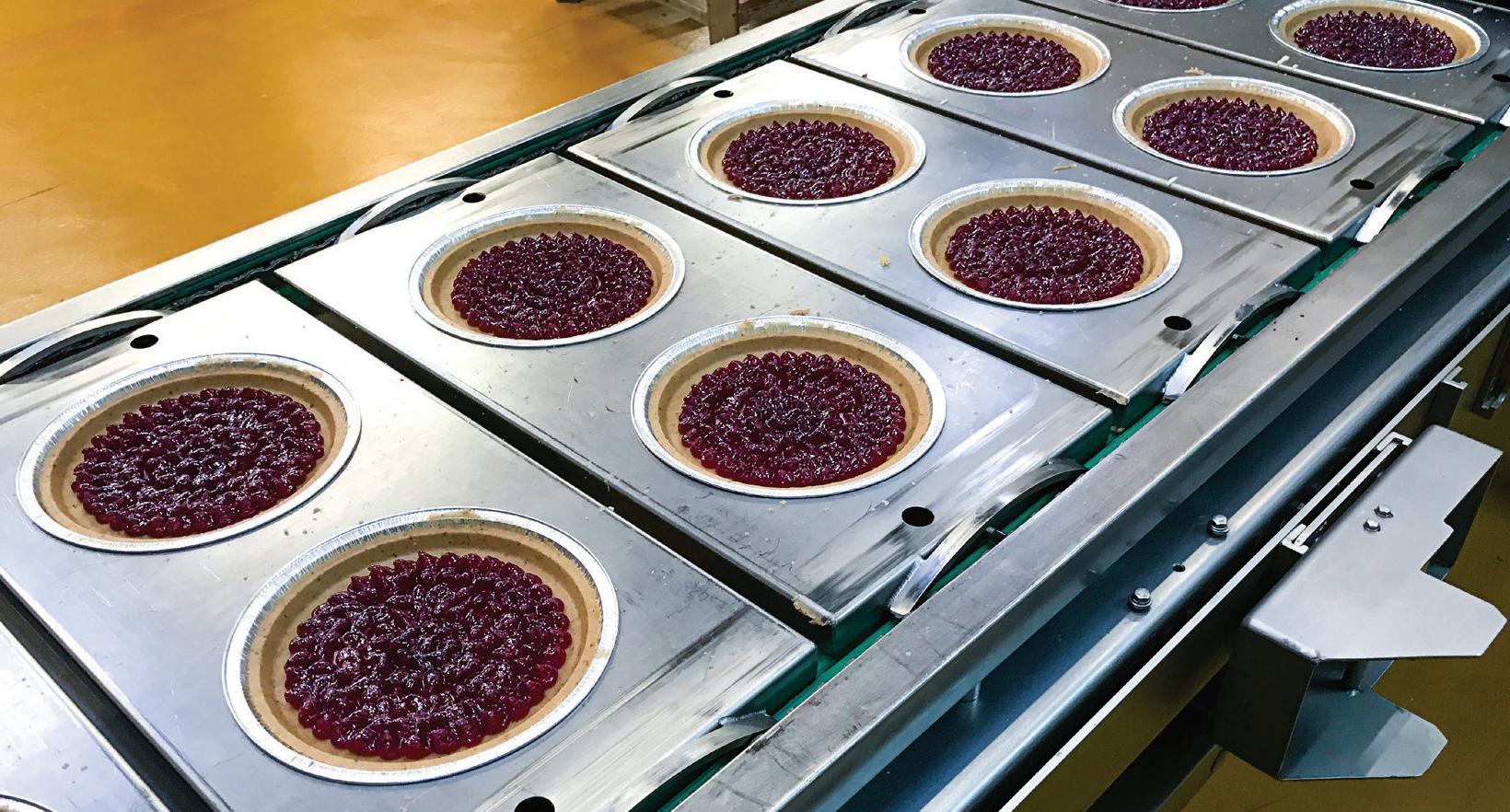
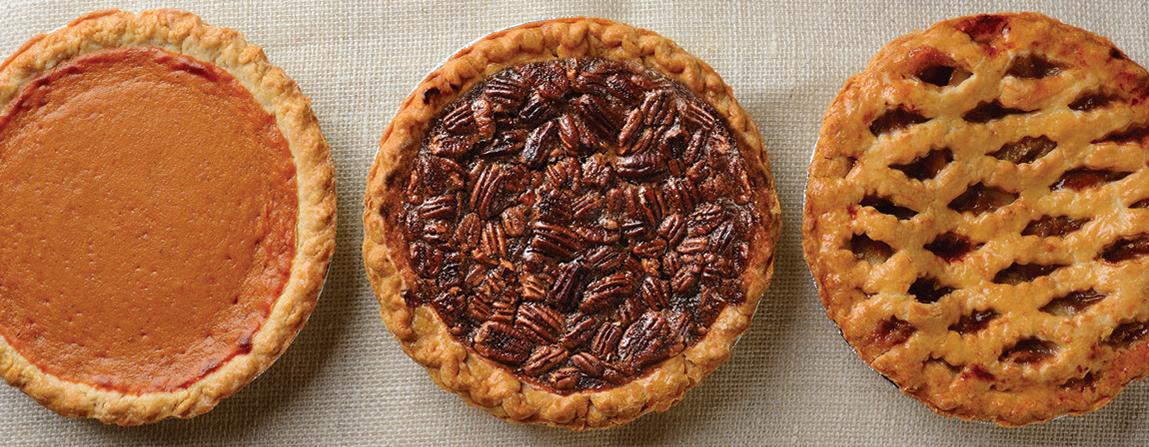
“Hispanic pastries provide a unique choice relative to many other items in the Danish/pastry/coffee cakes segment,” Aho said. “The US Hispanic population currently represents more than 19 percent of the total population, and as it increases, I would expect brands in this category to continue this growth trajectory.”
Bite-sized bakery items allow for small indulgences without derailing diet restrictions, while jumbo and largepack options meet the need for higher quantities.
“Multiple sizes allow families to satisfy preferences for all household members,” Aho said. “Multi-pack and multi-serve products provide flavor and size variety in one package.”
Smaller-sized, pre-made sweet goods resonate with Gen Z and millennials, the devoted snackers who enjoy small treats, according to Mintel. The report suggests maximizing the advent of the “little treat culture” by offering minis and portion-controlled packages to deliver convenience and versatility across occasions. Belgium-based Brioche Pasquier leveraged this opportunity with its individually wrapped Mini Brioche Rolls with chocolate filling.
Pricing will always be a driver of consumer purchasing decisions. The sweet goods category offers a variety of affordable options among perimeter and center store products. However, Aho suggested that manufacturers cut through the noise to ensure consumers value their relevance and benefits beyond price.
Source: Circana Omnimarket Integrated Fresh, a Chicago-based Market Research Firm (@WeAreCircana) Center Store Muffins
Total US - Multi Outlet w/ C-Store (Grocery, Drug, Mass Market, Convenience, Military and Select Club, & Dollar, Beauty & Online Retailers) | Latest 52 Weeks Ending July 13, 2025
Smaller-sized sweet goods resonate with Gen Z and millennials, the devoted snackers who enjoy small treats.
Source: Mintel
“Sweet goods manufacturers need to promote the diversity of their products, both in-store and by using a variety of advertising methods to engage and generate interest in brands,” she said, noting the need to highlight indulgent and better-for-you options and product versatility.
Balancing fun and functionality will grow the category. Focusing R&D on creating innovative flavors and size versatility is a prudent strategy to attract and retain consumers seeking more from their sweet goods. CB


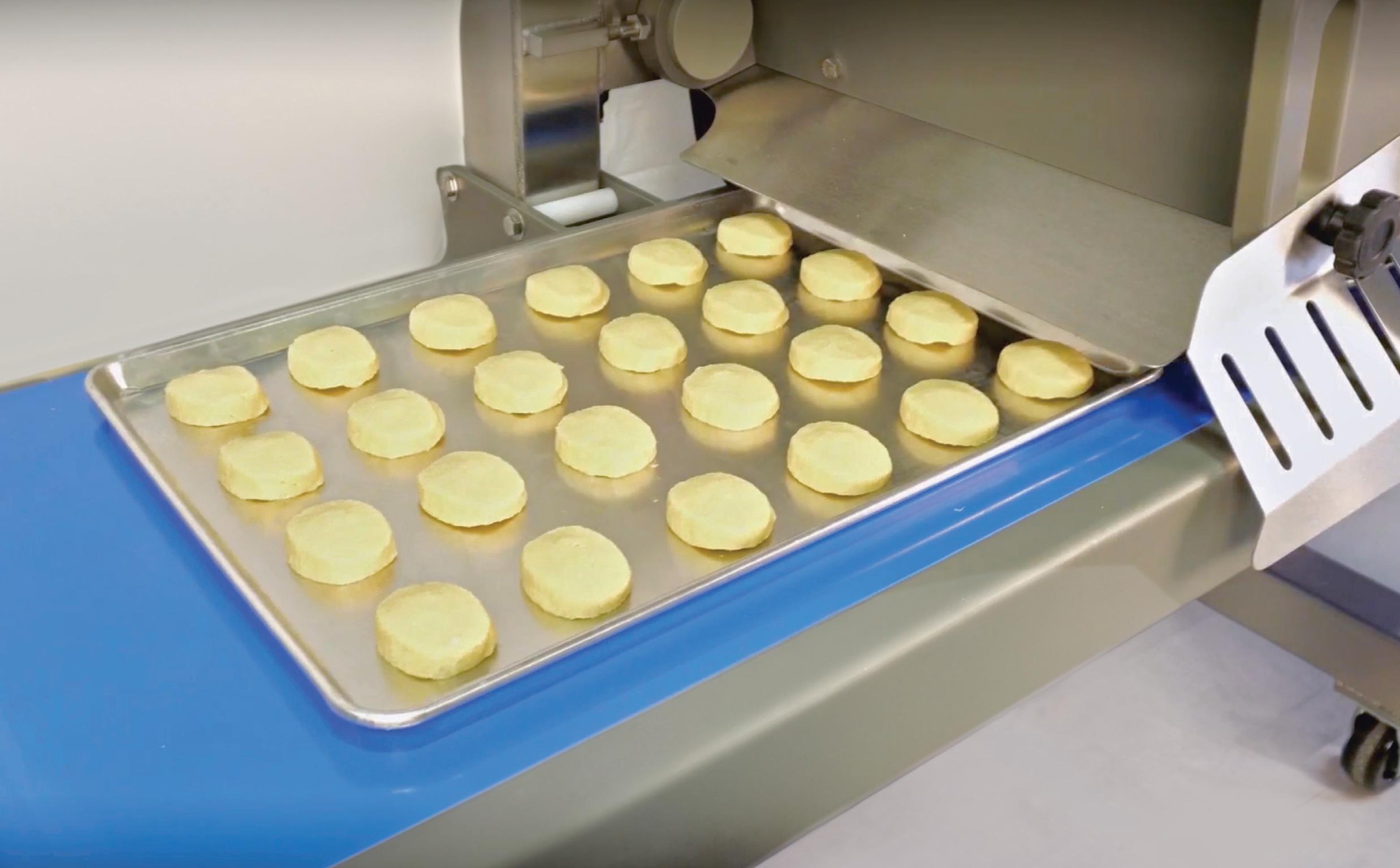


Brownies: Portions: 250 p/min onto a tray. Sheets: 15 - 20 full sheet pans p/min.

Protein/Energy Bars: High-quality protein & energy bars 300 - 900 p/min.

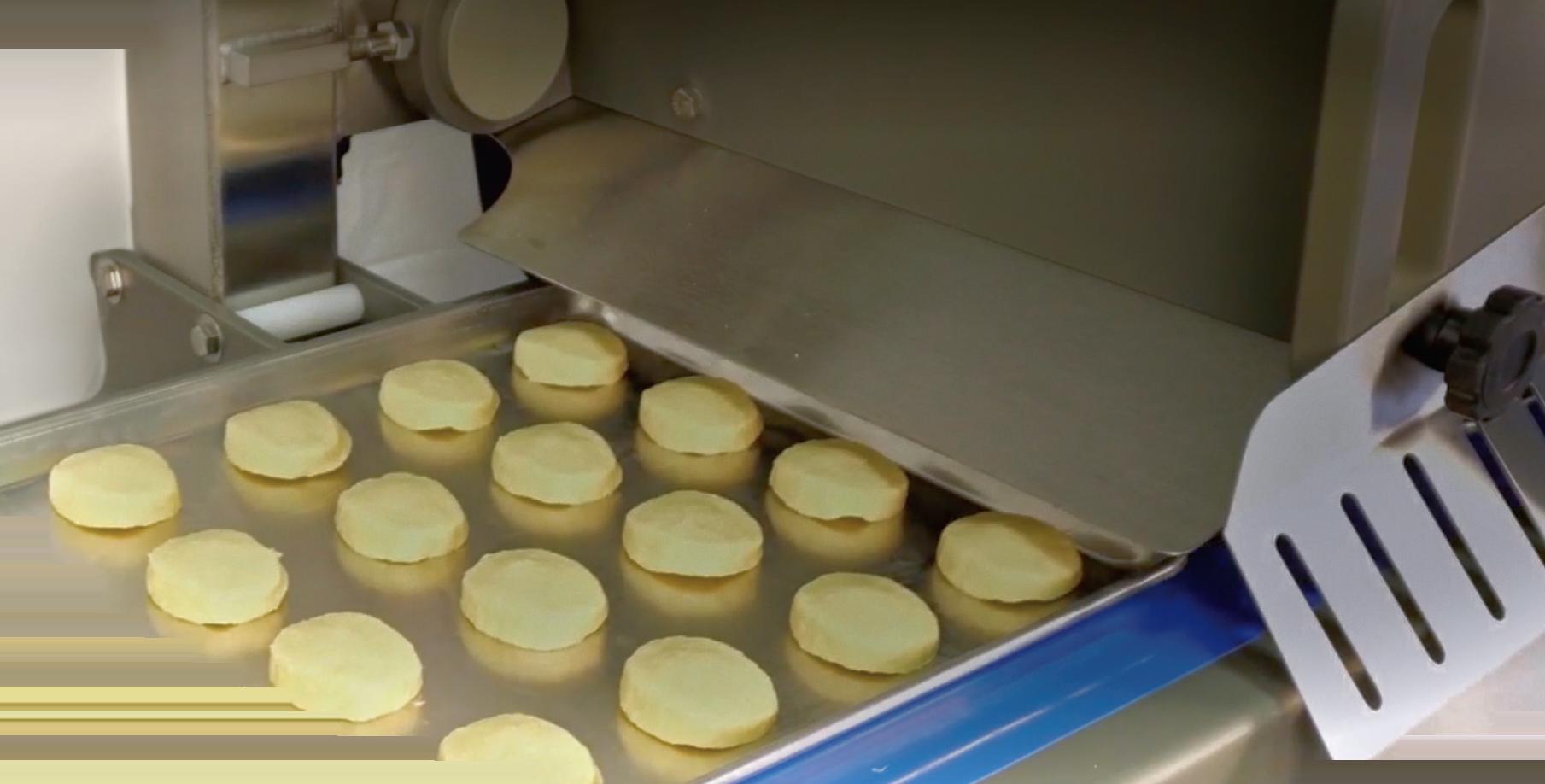

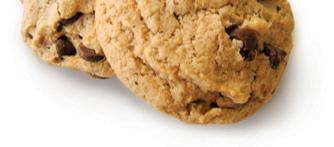
Cookies: Accurate placement, uniform weight, no smearing 200 - 800 p/min.

Gingerbread: Sheeting and shaped cookies 200 - 400 p/min.
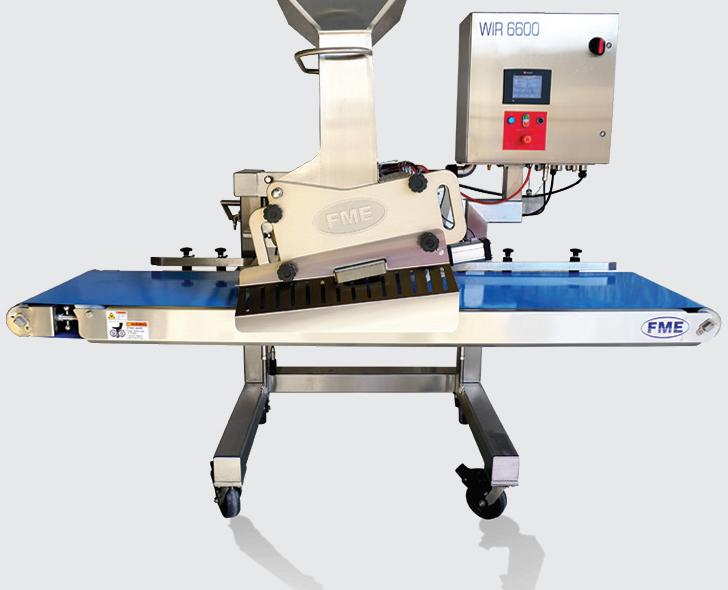


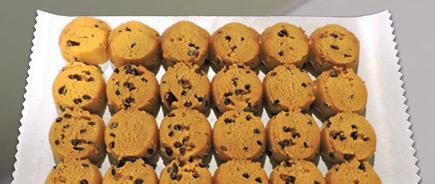

Frozen Dough Production: Placed break n’ bake or individuals 600 - 1500 p/min.
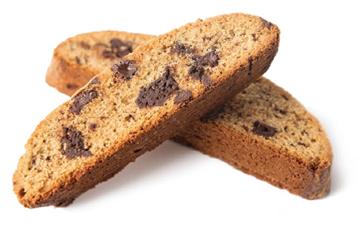
Biscotti: Biscotti formed to pan length 1 to 4 rows 10 - 40 p/min.
High production
Small foot print
2 minute die change over
Large inclusion operation
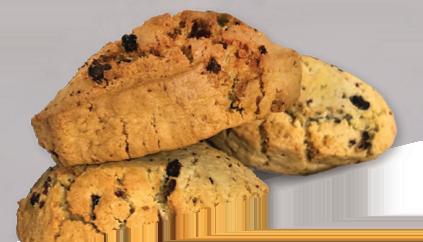
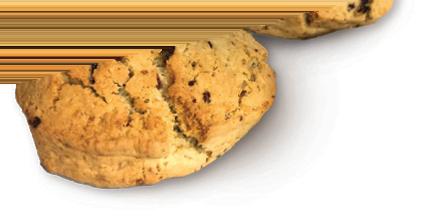
Scones: Artisan scones, all shapes and sizes 150 - 400 p/min.

Full access toolless sanitation
Remote access/monitoring
Intuitive operation and maintenance
Challenging products






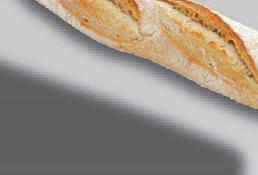




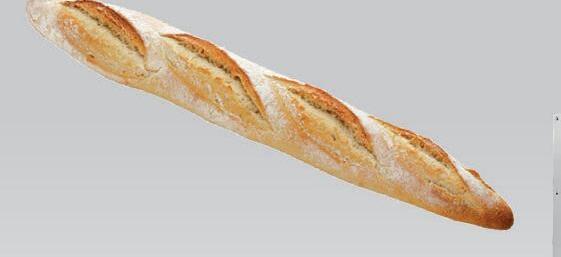
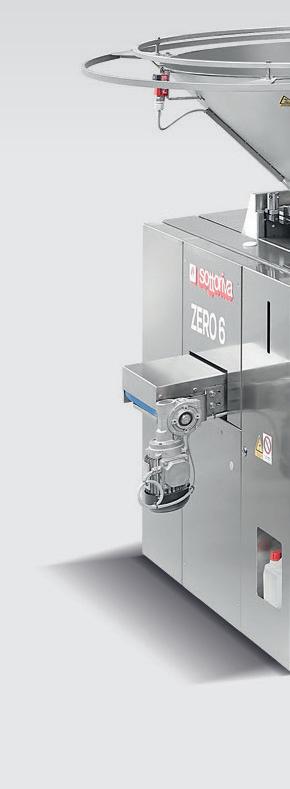
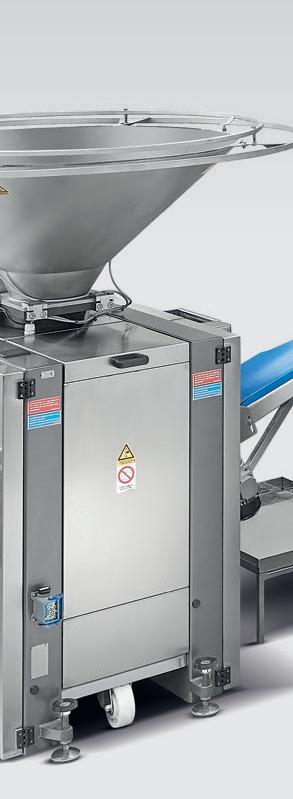
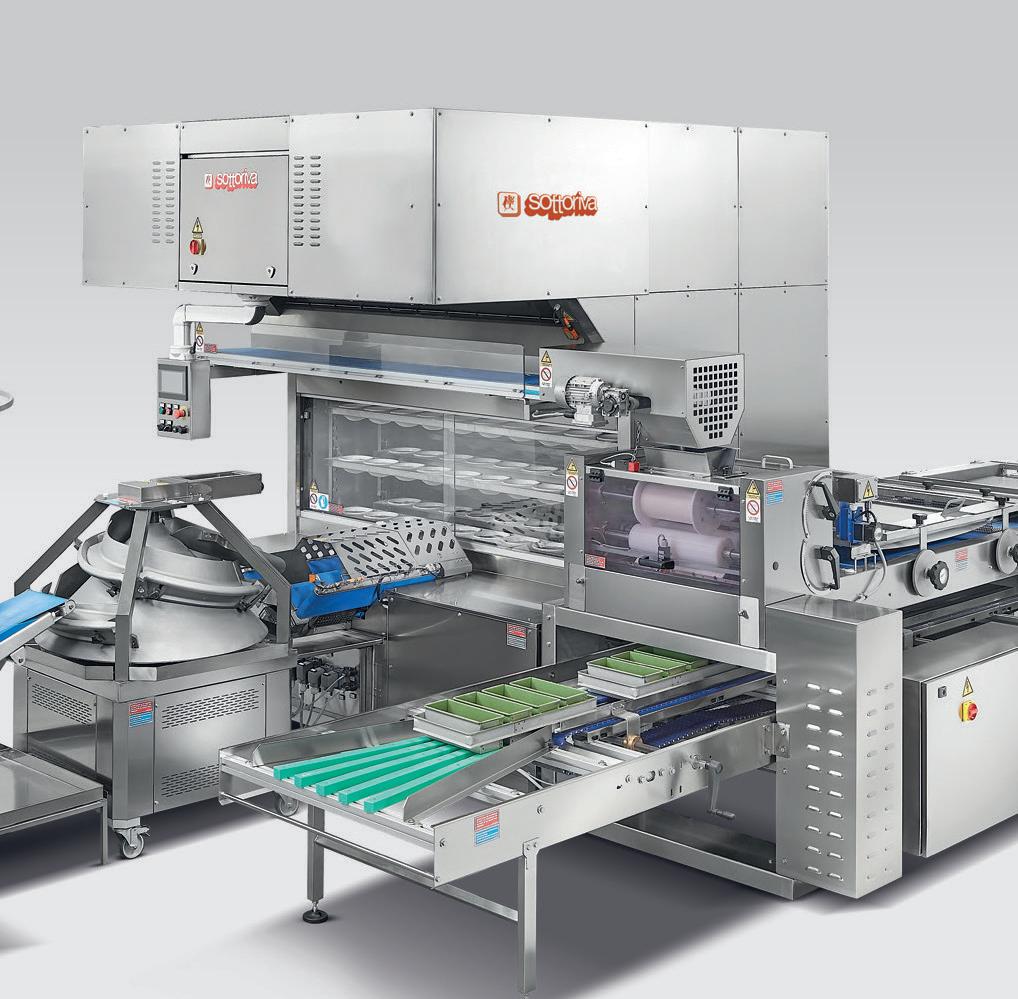








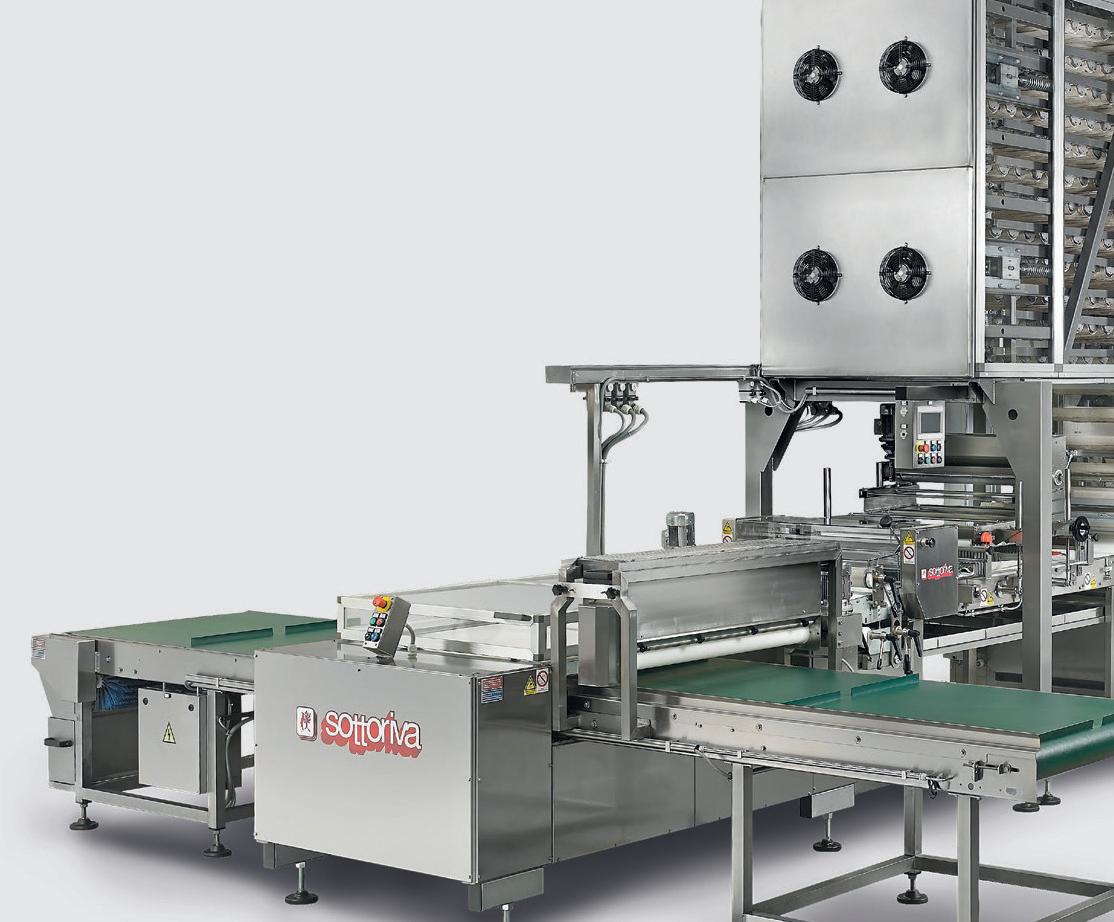




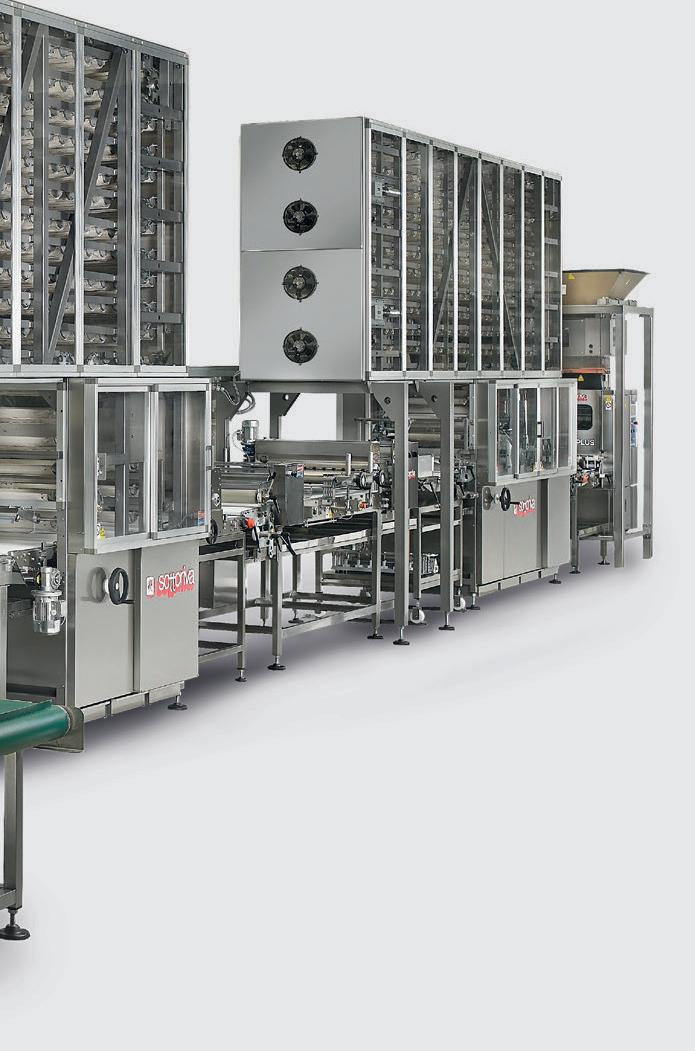

BY BETH DAY
Chewy bagels with that quintessential crispy exterior deliver a truly unique eating experience. Interest in specialty and artisanal varieties, along with healthier options that offer functional ingredients, satisfy many occasions beyond breakfast.
Learn how old-school techniques meet new-age technology as bagel manufacturers pivot to efficiently supply products without compromising quality.
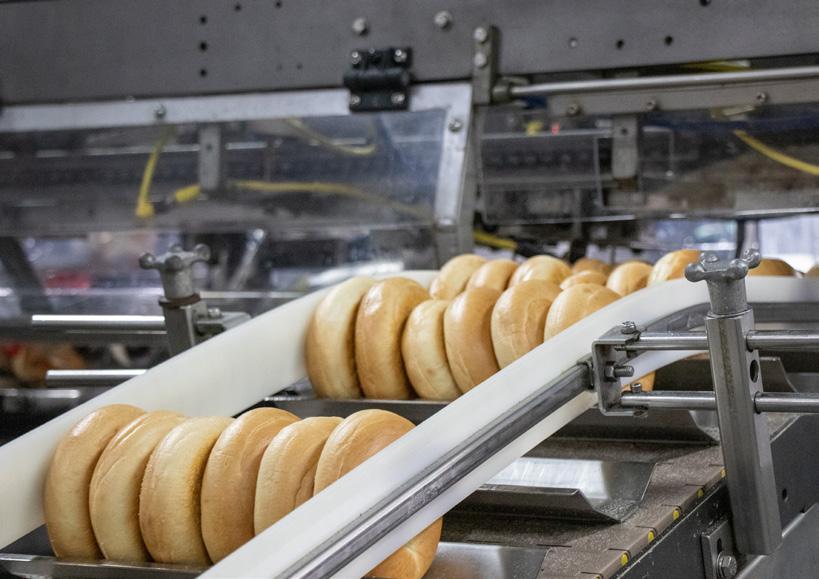
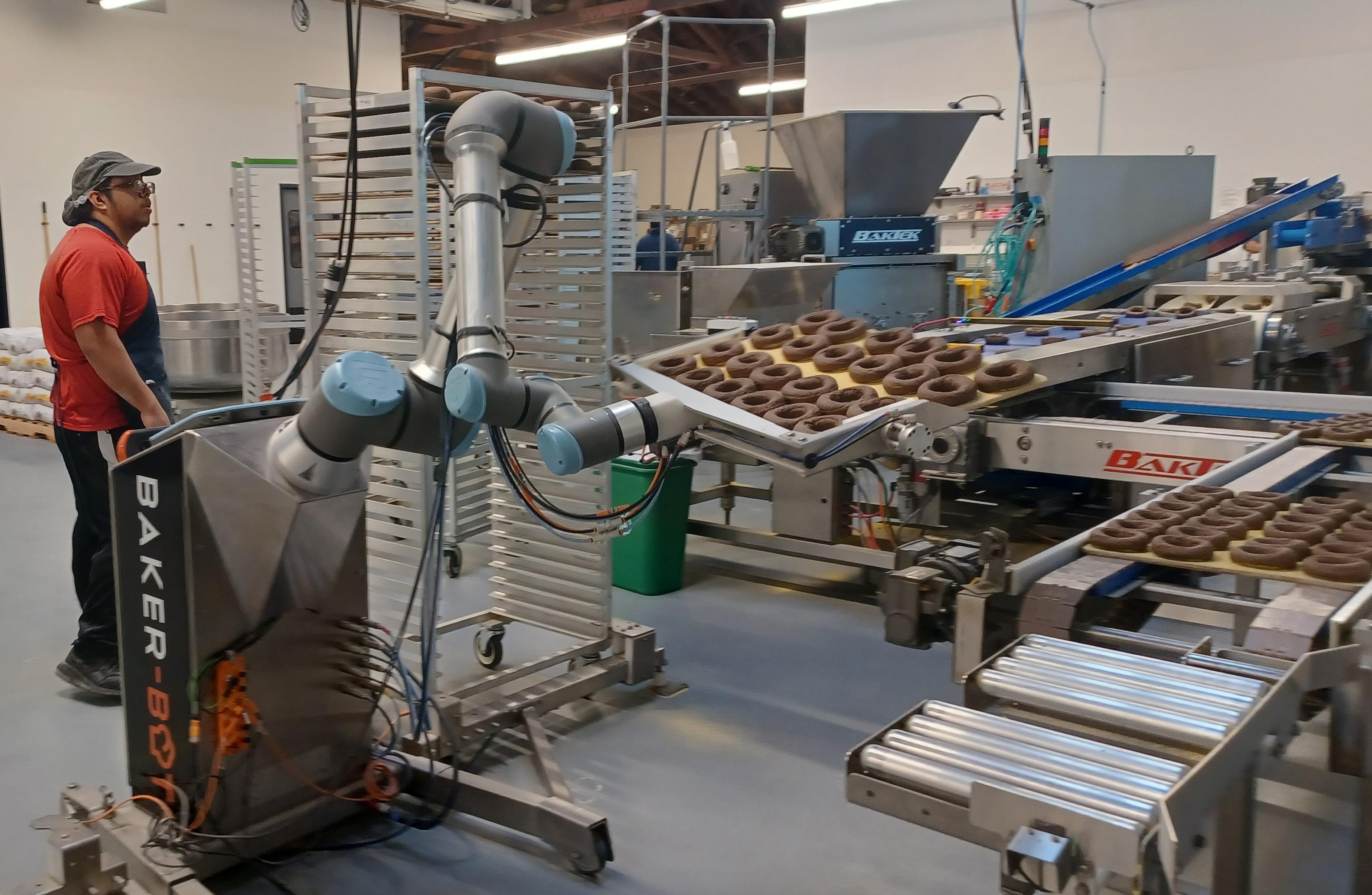
For nearly 100 years, Ridgefield, NJbased Toufayan Bakeries has baked bread products using Old World techniques. While it has added modern automation to enhance production, the company’s hearth-baked bagels are still made with its traditional recipe. Focusing on ingredient integrity and process refinement — high-quality flour and precise fermentation for example — is key to achieving the perfect bagel texture and flavor.
“Our time-honored process of boiling and baking gives our bagels their distinctive taste and chewy texture,” said Karen Toufayan, VP of marketing and sales at Toufayan Bakeries. “The bagel industry is seeing a surge in demand for new flavors and better-for-you options, which directly influences our operations. We are expanding our production facilities and investing in technology to meet these consumer demands while ensuring quality and efficiency.”
As interest in functional ingredient claims such as gluten-free, high fiber and added protein grows, Toufayan Bakeries understands the importance of knowing what consumers are prioritizing. Leveraging interest in protein, its bagels contain at least 8 grams of added protein per serving.
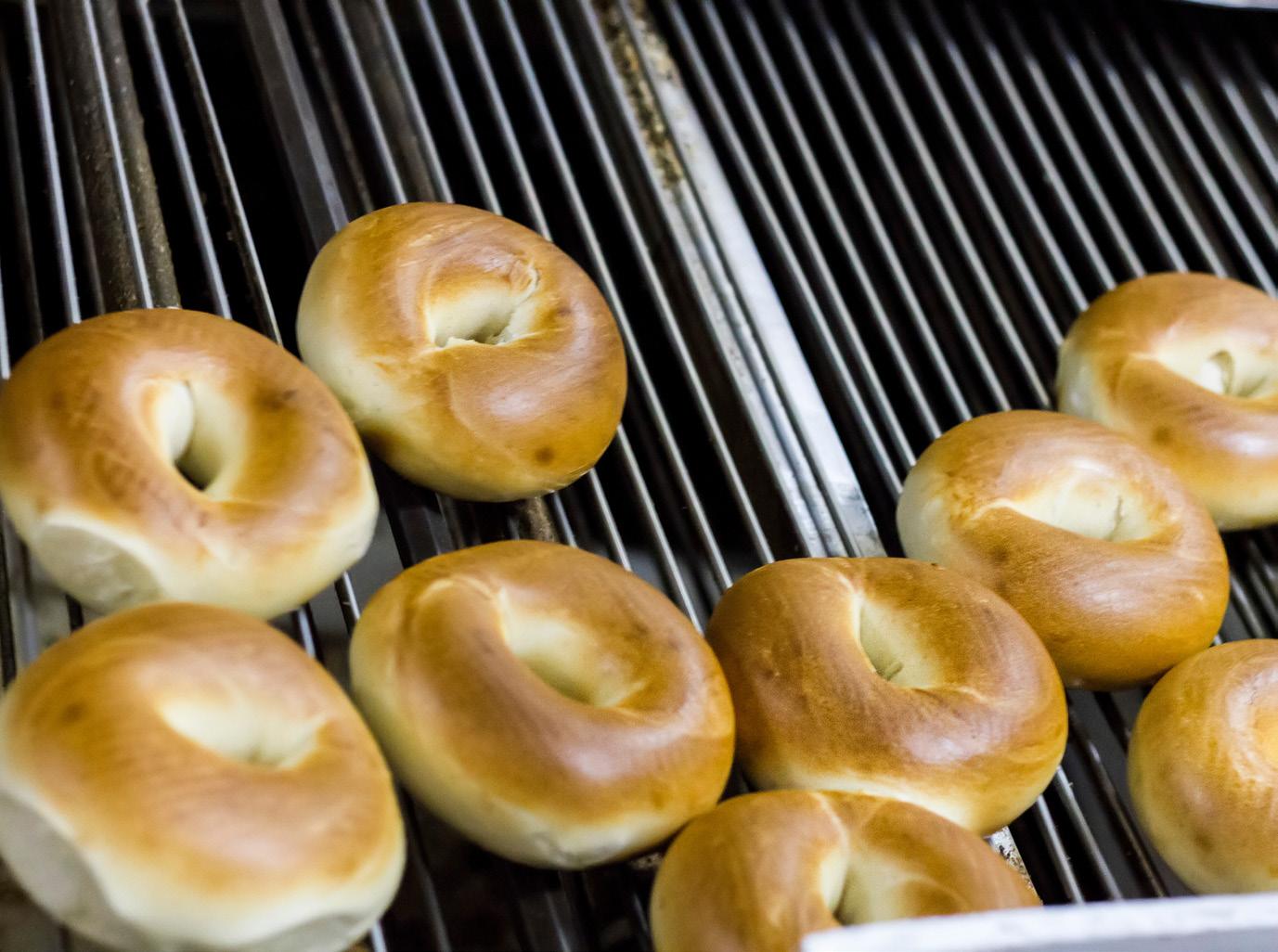
The ingredient space is where Toufayan has observed the biggest innovation for the bagel category. The introduction of nutrient-rich ingredients and unique flavor combinations promotes growth potential.
“These advances have broadened the appeal of bagels, transforming them from a classic staple to a versatile component in contemporary diets that meet the needs of consumers from a flavor, quality and quality of life perspective,” Toufayan said.
Berkeley, CA-based Boichik Bagels evolved from a family tradition of eating authentic New York bagels and the need for that kind of artisan experience on the West Coast. After spending five years experimenting with formulations and old-school bagel making, Emily Winston, the company’s founder and CEO, landed on the recipe used today.
“The bagel industry is seeing a surge in demand for new flavors and better-for-you options, which directly influences our operations. We are expanding our production facilities and investing in technology to meet these consumer demands.”
Karen Toufayan | VP of marketing and sales | Toufayan Bakeries
“We produce real New York-style bagels made with the same traditional ingredients and the same cold fermentation, boil and bake process used in New York for 100 years,” she said. “We do not take any shortcuts when it comes to traditional bagel making. Our goal is to produce a world-class, top-tier bagel focusing on the ingredients, process and quality of the final product.”
Boichik Bagels started as a retail operation and built an 18,000-square-foot facility in Berkeley that produces bagel dough for all of its northern California stores. About half of that dough gets delivered to retail stores that finish the bagels on-site. Freshly baked bagels
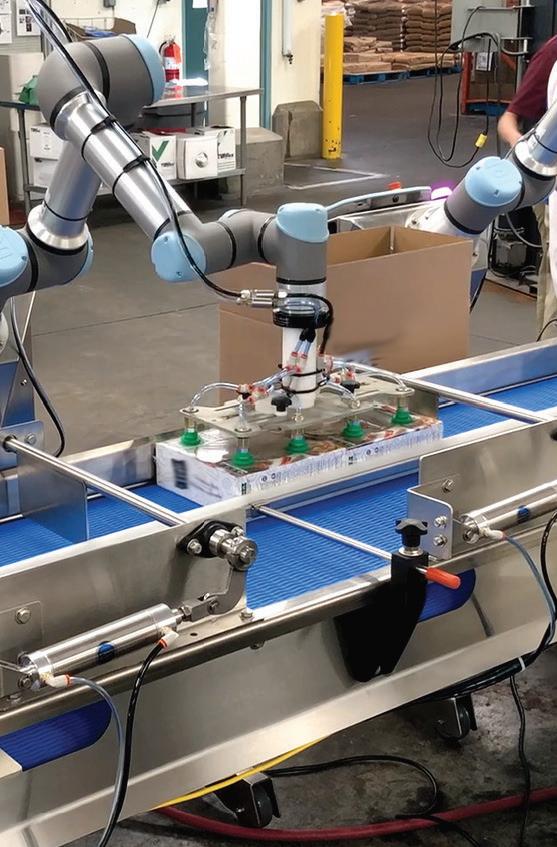
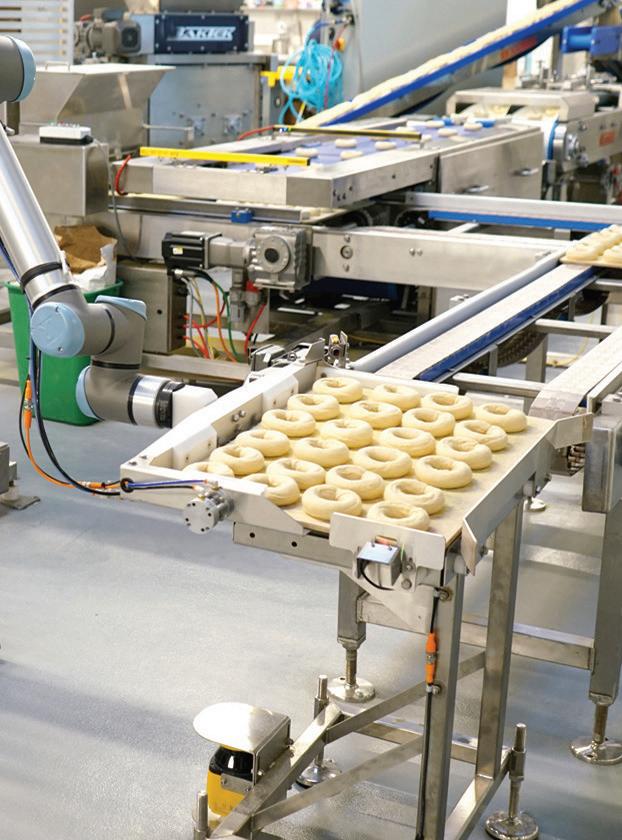
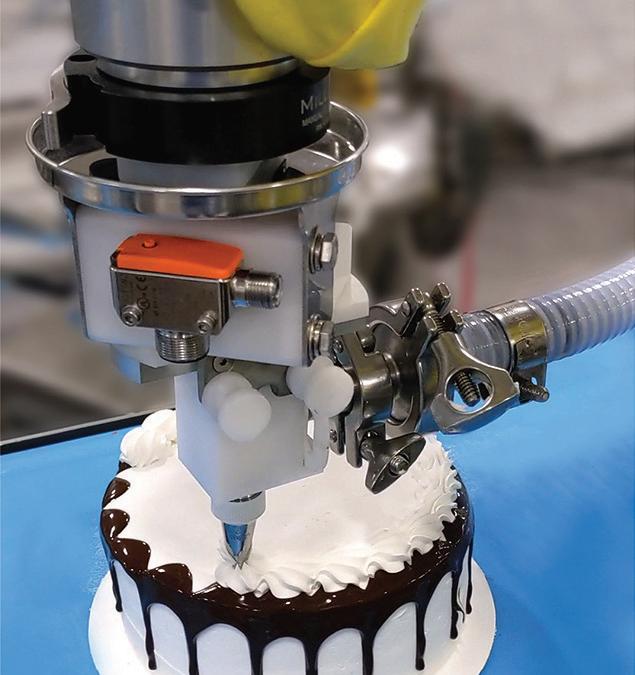

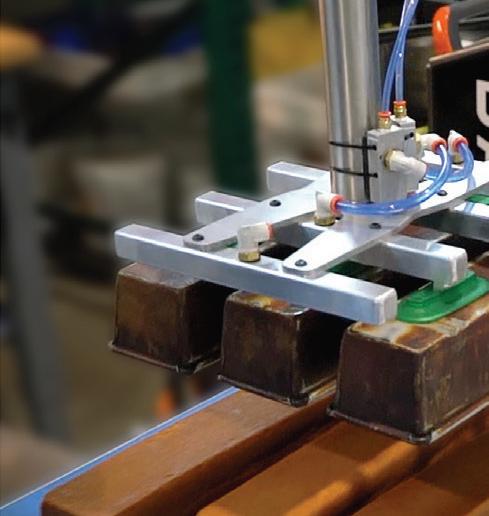

Deisgned to fit your budget, footprint and application.



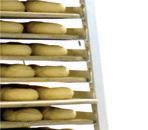



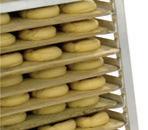
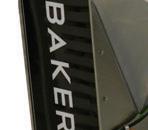
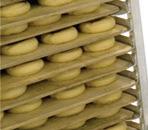

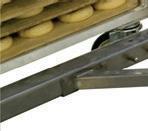


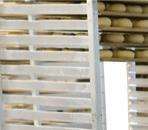
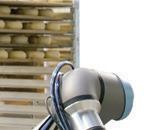








We are the leader for tray handling — automatically move pans, trays, boards and bins from or to a conveyor or rack.
Base ice top & sides, cake border top and bottom, drizzle & draw for round cakes, sheet cakes, cupcakes and cookies.
Primary packaging, secondary packaging, end of line palletizing and depalletizing.











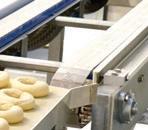
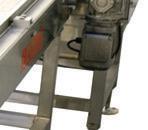




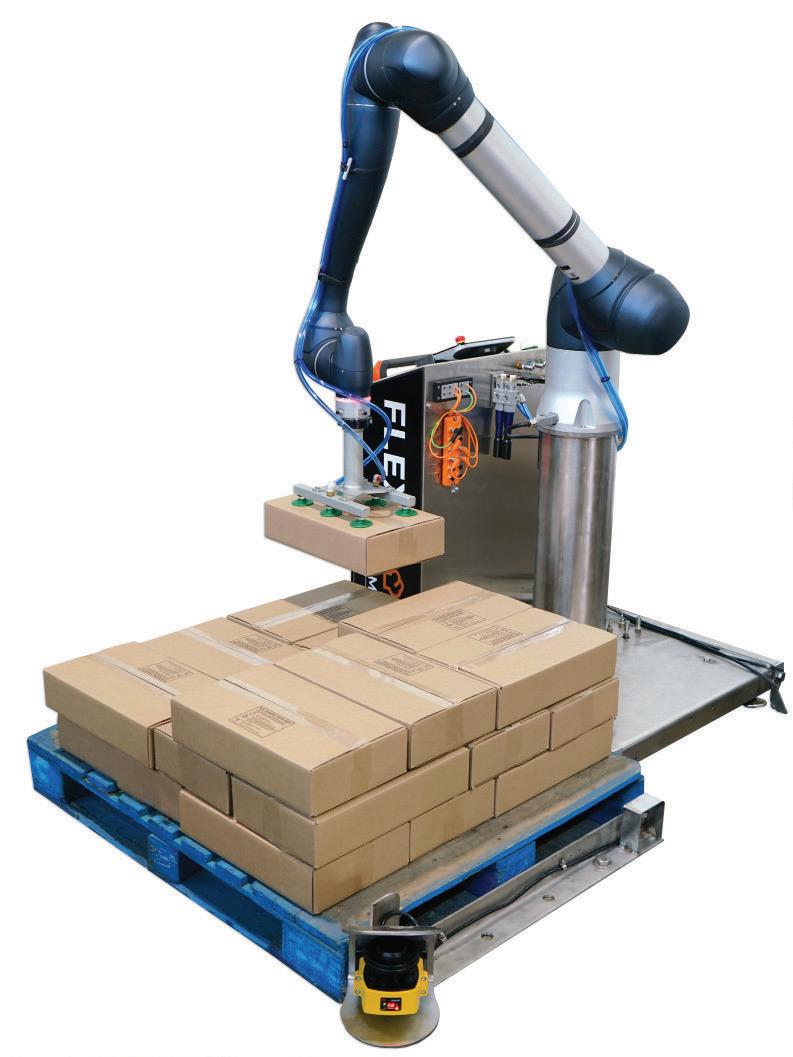


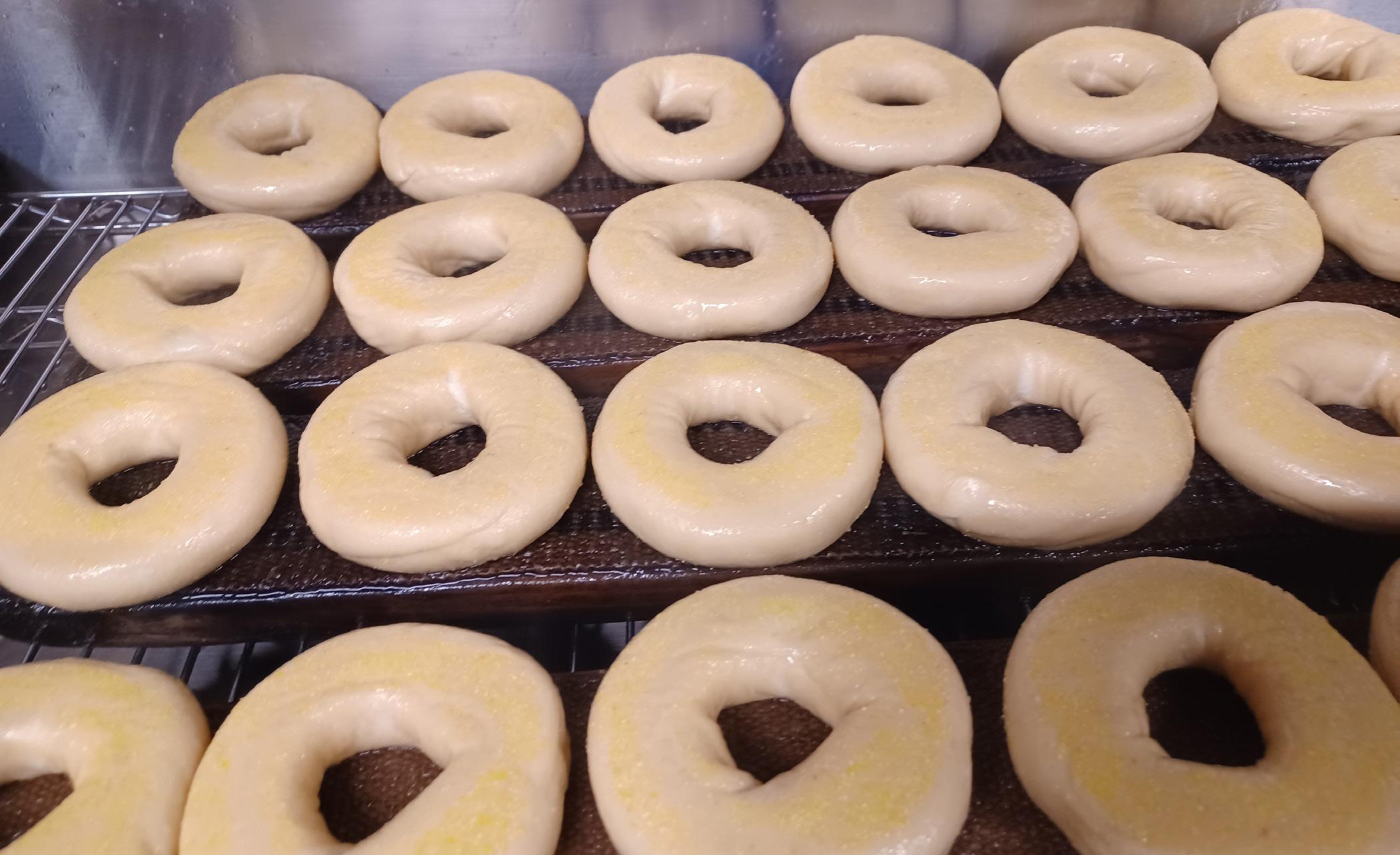
are also prepared for other shops and packed and frozen for CPG, an area of growth opportunity.
The company manufactures its wholesale bagels with the same boiling and baking process. Manual processing is combined with a semi-automated packing line that includes a slicing machine, blower for the bags, an inkjet tag printer and tag applicator.
“Our dough production is mostly automated, including a Baker-Bot Apex Motion Control robotic custom arm that lifts the heavy bagel boards off the line and moves them to the proofing racks,” Winston explained. “We added automation to make the process more efficient without compromising our end product. Our team basically supervises the automated robots instead of engaging in unnecessary lifting, which is more fun,
“The bagel line was a game changer for us … An industrial tunnel oven is on my wish list, and it will be interesting to see what new models are available this year.”
Emily Winston | founder and CEO | Boichik Bagels
and as a result, we have low turnover since our production process does not require onerous repetitive labor.”
The company also invested in a customized mixer with a bowl that can be moved with an automated lift to transition the dough to a two-lane BakTek bagel forming line that’s integrated with the cobot.
Scaling up the business is a primary goal, and Winston is constantly seeking ways to add new automation, including attending the triennial International Baking Industry Exposition (IBIE) for inspiration. In fact, the compa ny’s current BakTek bagel line was custom built and displayed at IBIE 2022 before it was installed at Boichik’s facility.
“The bagel line was a game changer for us, since I was just getting started with the business at that time,” Winston said.







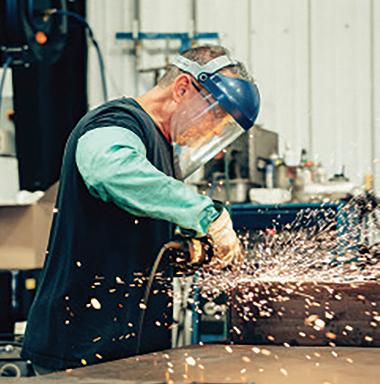
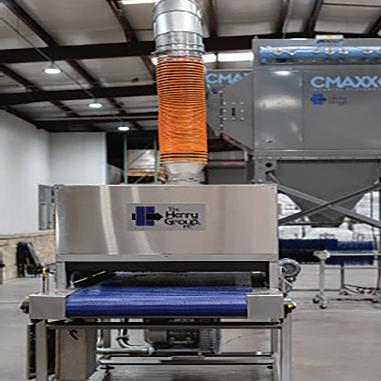
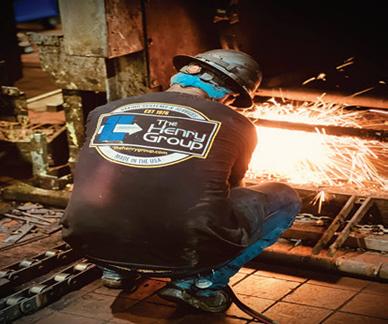


“As an engineer, I enjoy keeping tabs on recent advances in the world of automation,” she added. “An industrial tunnel oven is on my wish list, and it will be interesting to see what new models are available this year.”
As with most bakery items, some flavor profiles and formats are more difficult to process than others. Ingredient alterations or inclusions such as nuts or raisins can complicate production and require certain adjustments. At Boichik, pumpernickel bagels cause the most challenges due to formulation changes that impact end products.
“The high rye content in our pumpernickel recipe alters the dough’s characteristics, resulting in smaller, denser bagels, as they do not rise as well as other styles,” Winston said.
Boichik’s cinnamon raisin profile can also challenge the process. The raisins are sticky, and the additional sugar used within the sweeter dough causes it to machine a little differently. Similar to the pumpernickel variety, the cinnamon raisin bagels are often denser and do not rise as well. Winston noted that true artisan bagels will not all look the same, but they will have authentic texture and taste.
Toufayan Bakeries also encounters challenges with processing bagels with
inclusions because these styles require precise adjustments to dough handling and mixing to ensure even distribution and to maintain texture.
“Our proprietary process is tailored to accommodate every Toufayan recipe we bring to the table, enabling us to produce a consistent product without sacrificing quality,” Toufayan said.
When considering new products, especially those difficult to process, manufacturers must align R&D strategy with current capabilities or consider modifying or updating operations. Toufayan Bakeries’ R&D team works closely with production to create new flavors that are not only creative and engaging, but also scalable.
“This collaboration ensures smooth integration of new ingredients and processes, allowing us to efficiently bring exciting new products to market,” Toufayan said. “As a family-owned business, we stay very close across all areas of operation, and input from one team always positively influences the others. At the end of the day, we know consumers are relying on Toufayan, not only to innovate, but to also deliver with the highest level of quality.”
Economic uncertainty has impacted consumer spending, with many tight-
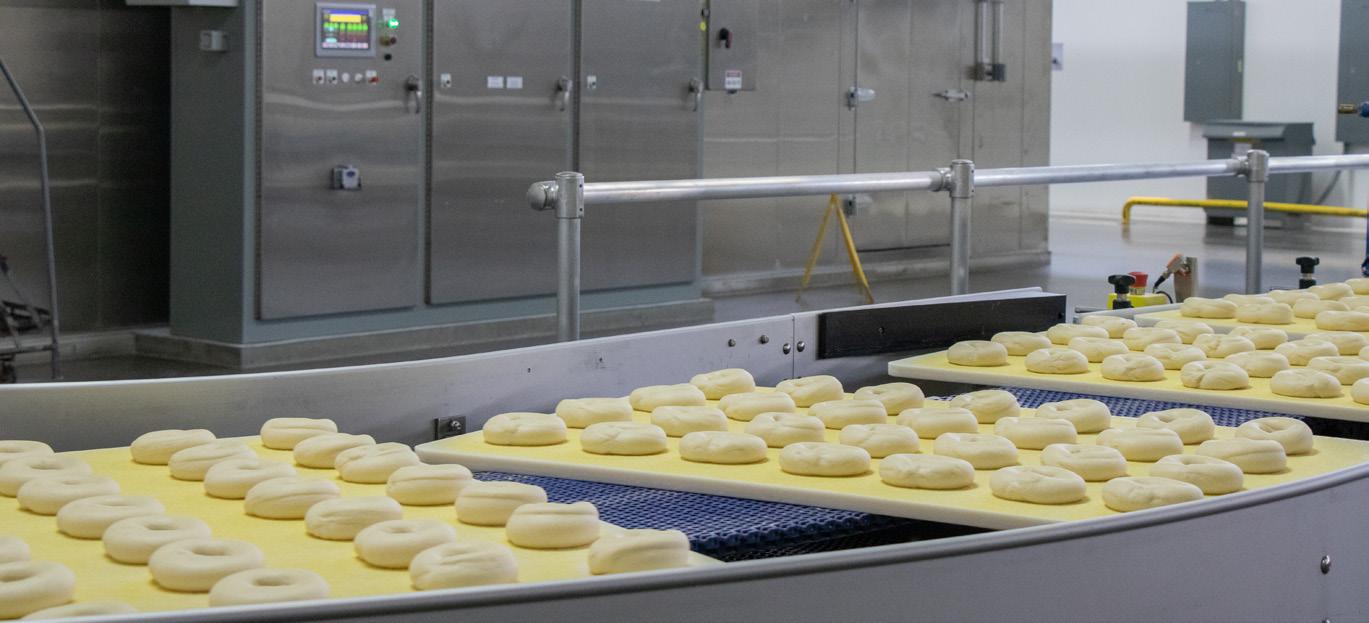
ening budgets for grocery shopping and eating out. Reduced consumer purchases of bakery products at the grocery store and in retail bakeries and shops impacts Boichik Bagels on two fronts.
“We are a wholesale CPG company selling our bagels in supermarkets and foodservice outlets throughout California, but we also operate on the retail end of the business, making bagels for multiple bakery and restaurant-type locations,” Winston said. “While these two pieces of our business function differently, they are also complementary, and these shifts in consumer spending are negatively impacting our top bagel lines on both fronts.”
Despite potential hurdles, Boichik Bagels plans to grow both the retail and wholesale sides of its business. The brand recently established a 3,000-square-foot production facility in Southern California by outfitting a retail location to increase operations capacity.
“My hope is that demand for our bagels increases, so I can fully automate our existing factory, add an industrial-sized tunnel oven to the baking side and build an additional production facility,” Winston said. “We want to build the CPG end of the business with the goal of offering our frozen bagels nationwide in all high-end markets and become the supermarket bagel of choice.”
Blending the traditional art of bagel making with new equipment and ingredient advances is delivering results for bagel producers. With a watchful eye on shifting trends and the ability to adjust to evolving customer needs and consumer preferences, bakers are positioned to create the perfect recipe for category growth. CB
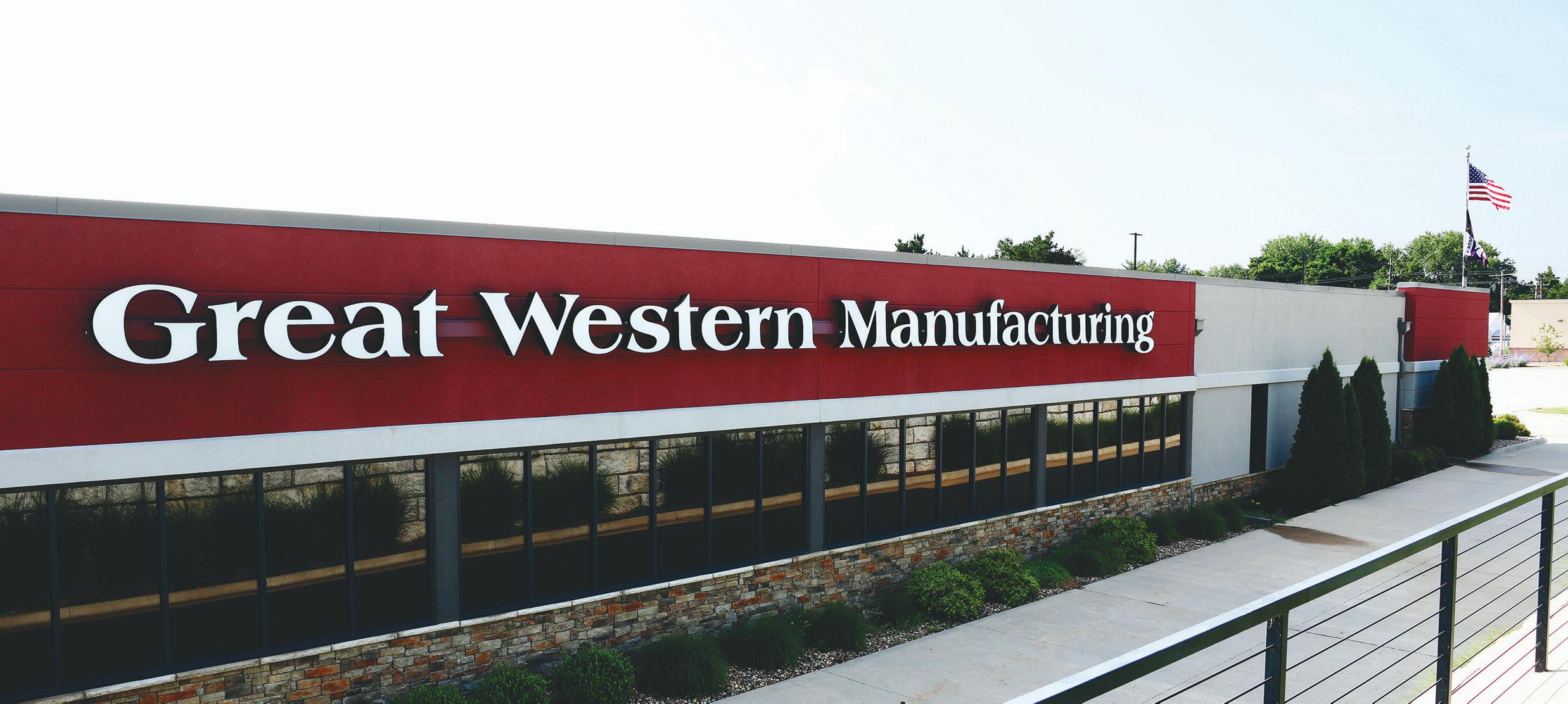




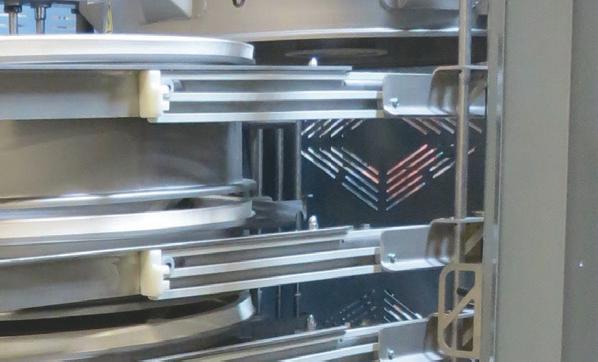





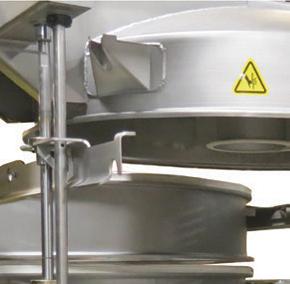
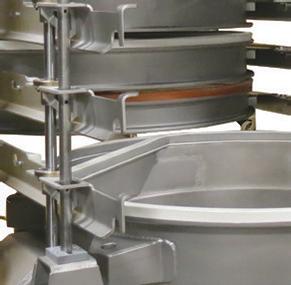

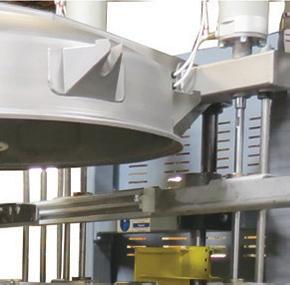
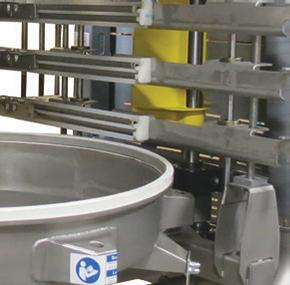








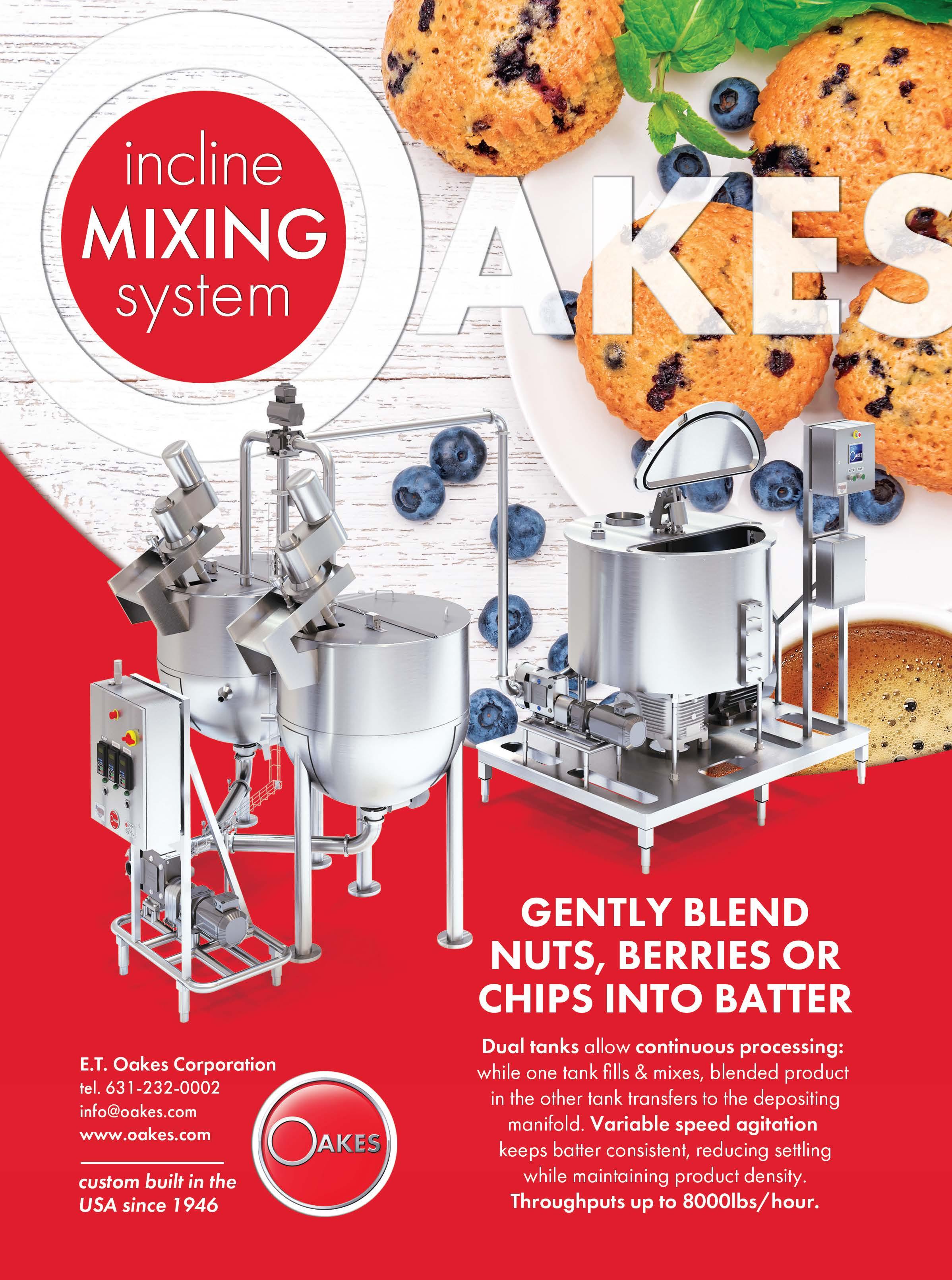
BY BETH DAY
Sweet bakery treats satisfy the ubiquitous need for indulgence. Yet, Mintel’s “US Prepared Cake and Pies Market 2025 Report” found growing consumer concerns about overly processed packaged bakery goods, combined with regulatory requirements, could disrupt production for some manufacturers. That includes those who may need to substitute certain raw materials or alter formulations to comply with new rules regulating artificial additives. On the other hand, these challenges also open up opportunities for producers to create portfolios of convenient, ready-to-eat croissants, muffins and other sweet goods that deliver authentic, clean-label products.
Read about how manufacturers are combining traditional baking processes with the latest industry advances to meet consumer and customer needs.
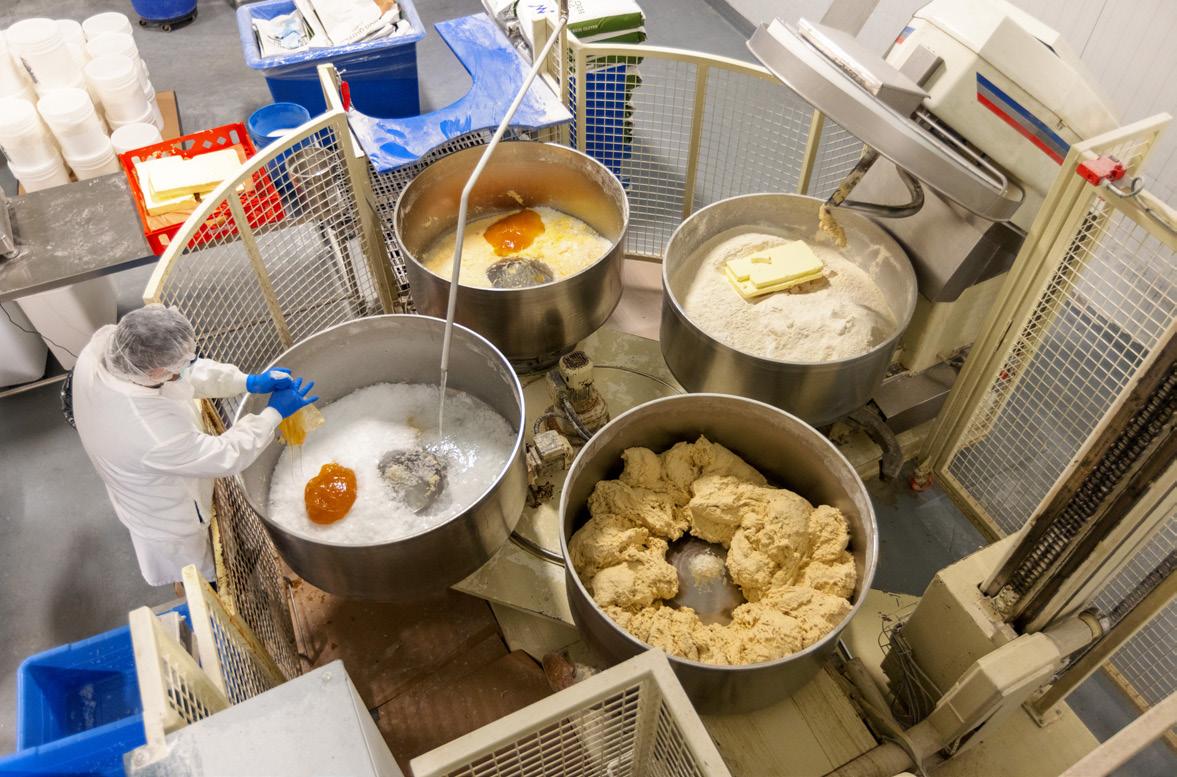
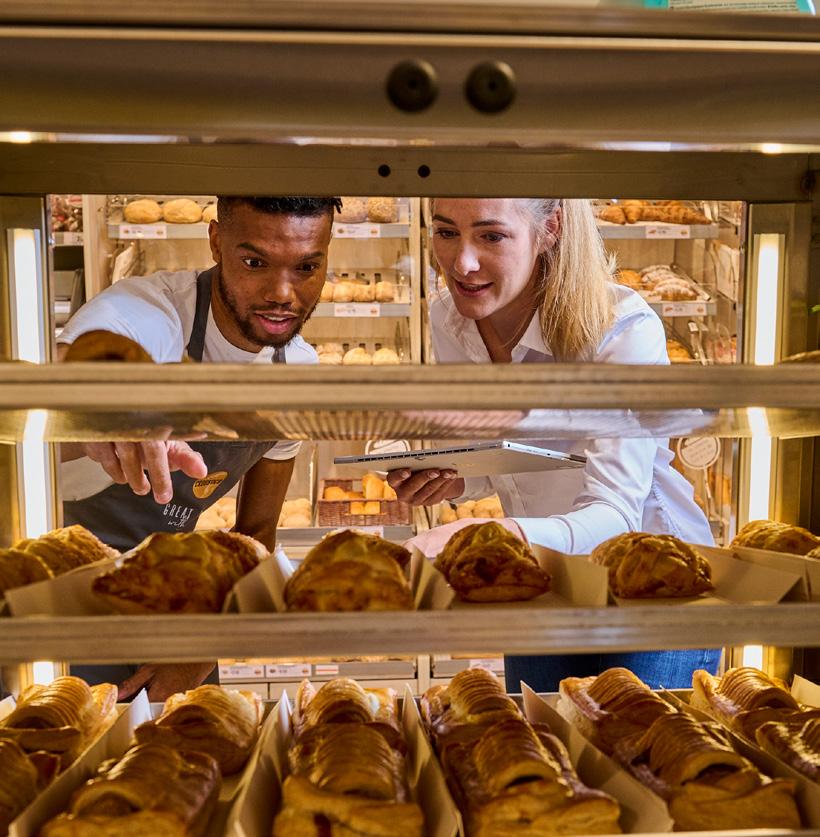
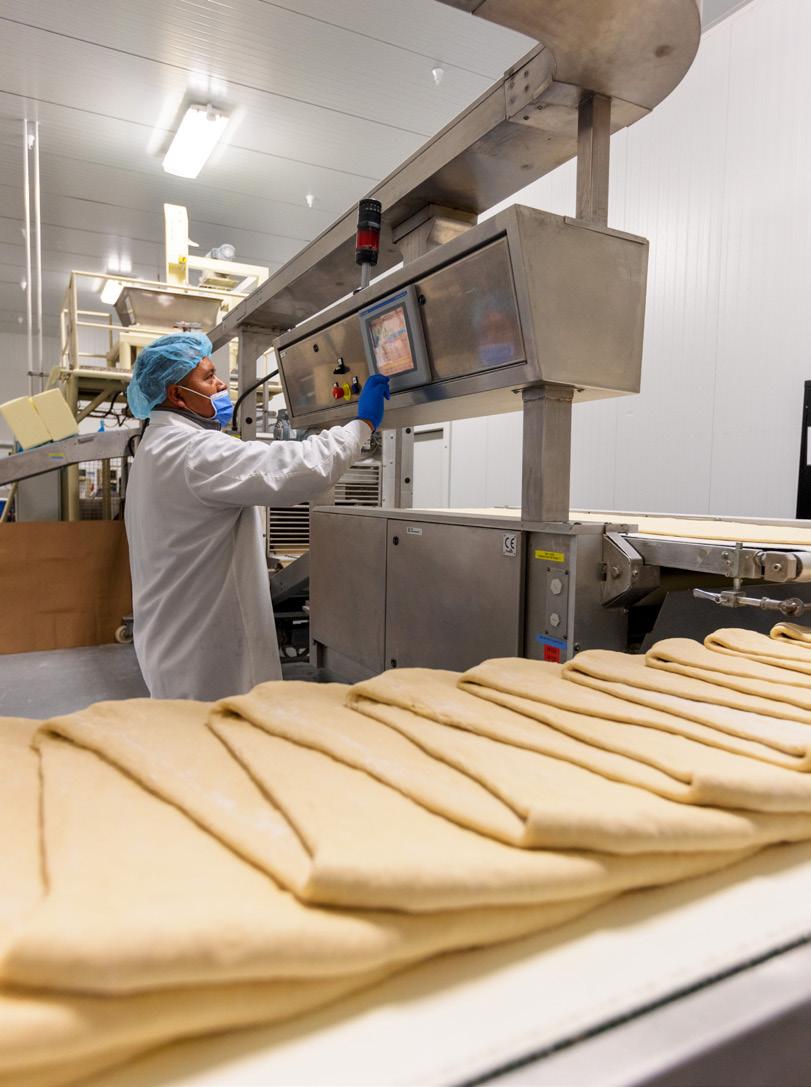
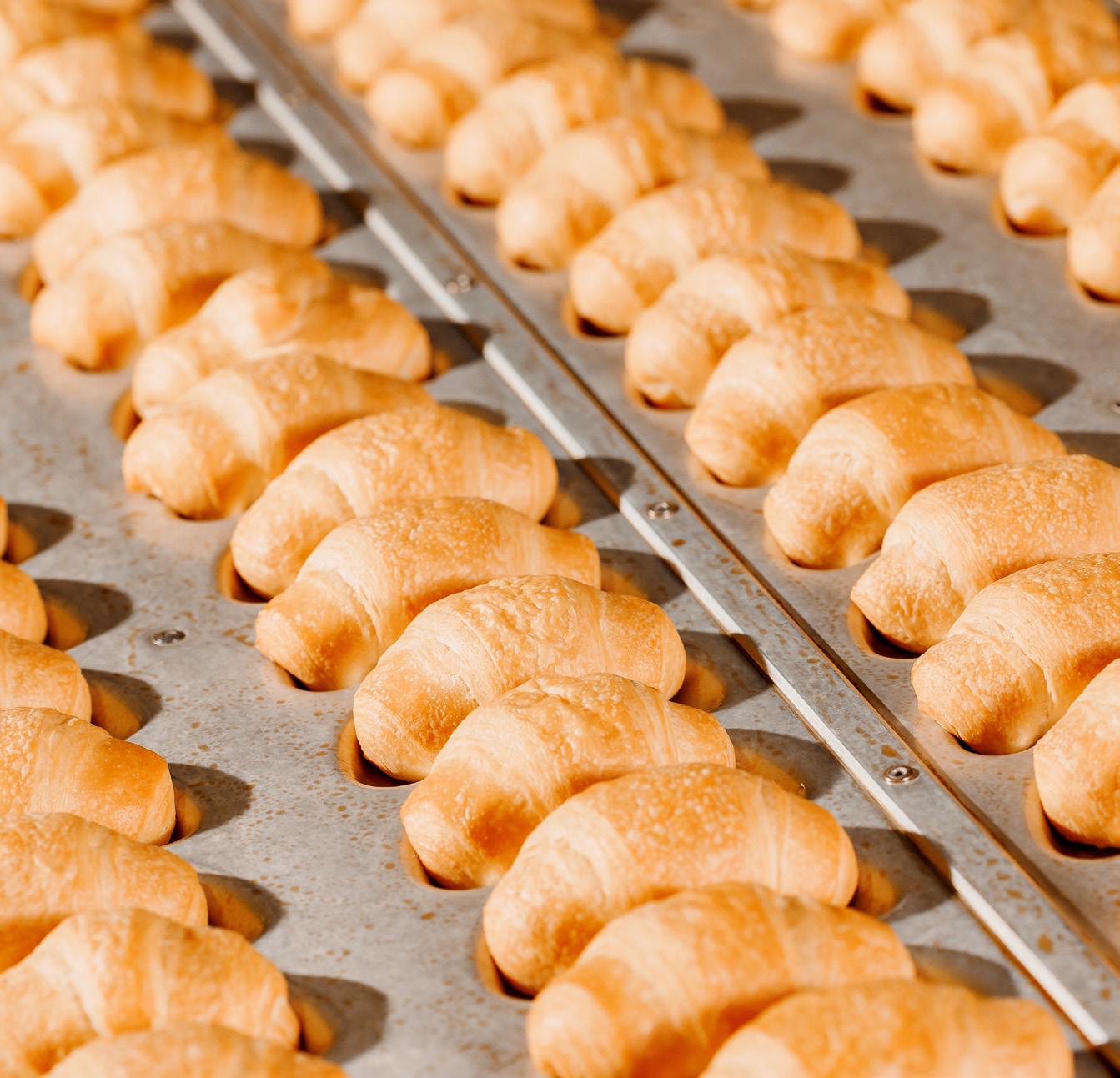
New York-based Vandemoortele USA already adheres to self-imposed, strict clean-label definitions. The company recently acquired Swedesboro, NJbased Banneton Bakeries, whose production process combines European quality and expertise with an American taste profile using fresh, premium ingredients for its Old World sweet goods recipes.
“Banneton Bakeries’ ingredient sourcing is key, and we procure many of our raw materials, such as eggs and milk, from local New Jersey farms to make our custom recipe for the butter used in all products,” said Thierry Schmitz, general manager at Vandemoortele USA. “Slow fermentation, meticulous layering of the dough and a slow food processing technique are essential to making the best croissants in the industry.”
Keeping pace with consumer trends can challenge R&D. Richmond, CAbased Galaxy Desserts, which is owned by Brioche Pasquier, leans into product development by listening to customer needs and learning from evolving consumer preferences.
“Today’s consumer wants baked goods made using simple recipes, natural flavors and zero preservatives,” said Charlotte Dubois, marketing manager for Galaxy Desserts. “Our goal is to improve our processes and bring our suppliers on board working toward the same objective as part of our Societal Commitment to build a sustainable future for our factories and our planet.”
With that goal in mind, the company plans to achieve 13% of its revenue through product innovation by 2029.
“From a production standpoint, minis usually take as much time to manufacture as larger single-serve pastries, but they require more care to produce.”
Thierry Schmitz | general manager | Vandemoortele USA
“One of our founding principles is the strong alliance between industry and sales, and we work hand-in-hand with production lines and our sales team who have their finger on the pulse of the market,” said Pascal Bossard, CEO and industrial director at Galaxy Desserts. “Our teams constantly strive to create bakery items that disrupt the industry.”
Vandemoortele also responds to market shifts and consumer preferences by leaning into R&D efforts to find new product flavors, including a croissant filled with pumpkin and farmer’s cheese, which as developed for the fall season.
Sustainability is at the forefront of the baking industry, and producers such as Brioche Pasquier are finding ways to manufacture quality products using more efficient and eco-friendly processes.

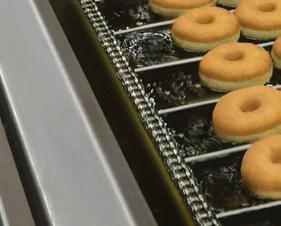




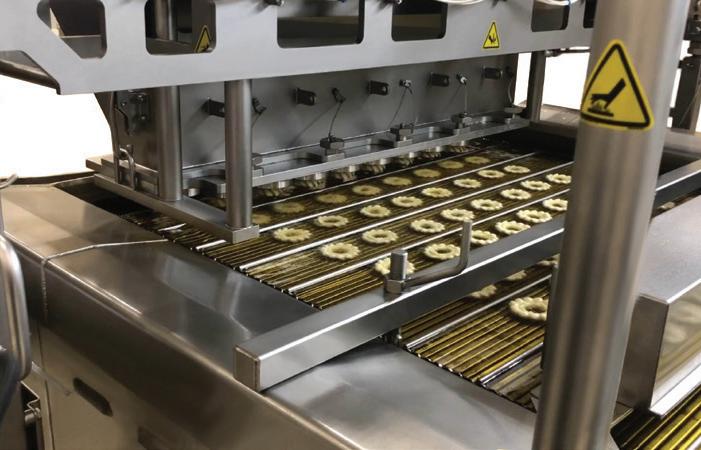



Moline manufactures the three core elements of yeast-raised donut systems in sheeting, proofing, and frying.
• Mid capacity/high flexibility or highest capacity systems available.
• Fully rounded technical support for operations, maintenance, and sanitation.
• Full washdown systems designed for 24/7 operation.
• Full offering of in-line finishing including glaze, icing, topping, sugaring and crunch.
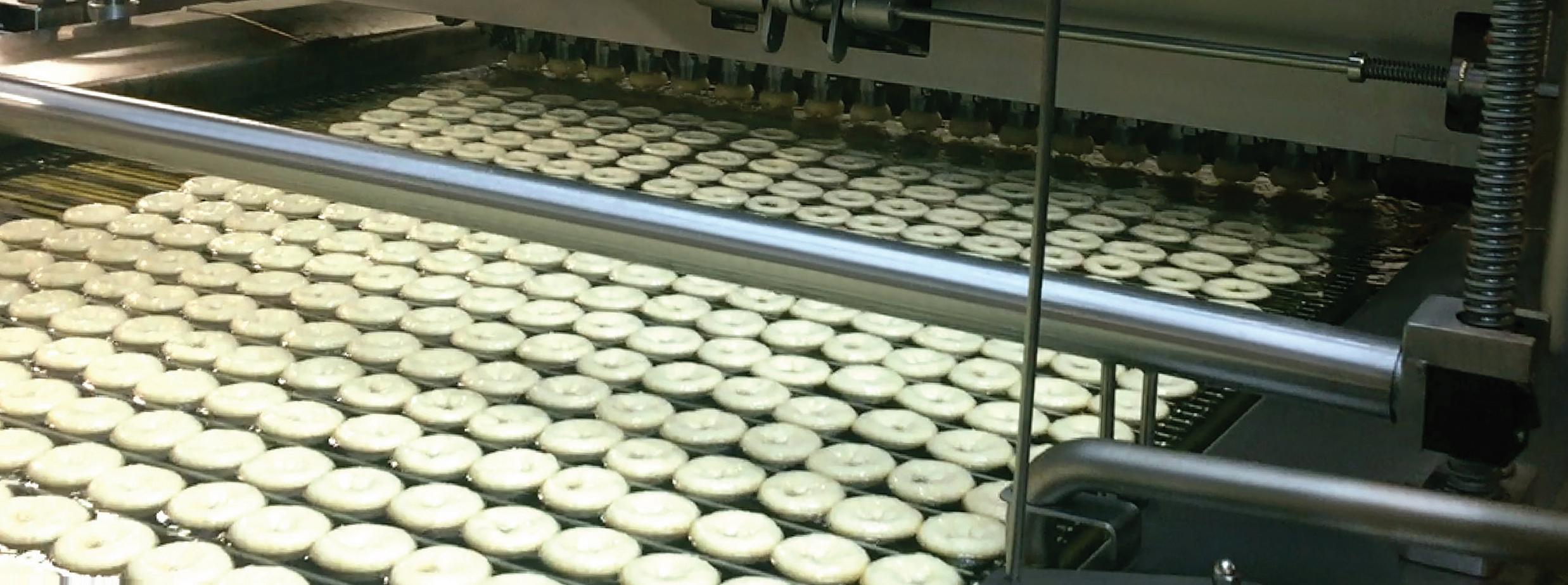
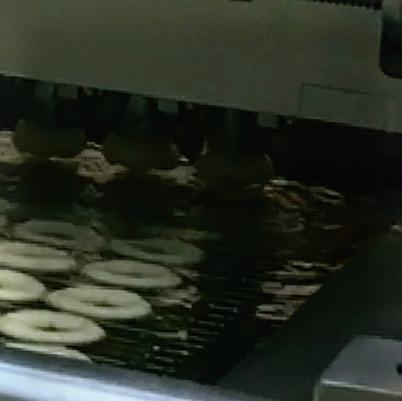


To this end, the company has worked in partnership with The Clauger Group, a global leader in industrial refrigeration and air treatment solutions, to decrease its CO2 consumption by more than 50% over the past couple of years.
Brioche Pasquier also worked with organizations including Mettler Toledo, CEIA and DCI to further improve operations. The acquisition of new technology allowed the company to set up more consistent quality controls and efficiency monitoring of processes.
“In 2025, we purchased new equipment and software, which took our packaging expertise to the next level,” Bossard said. “We are upgrading our high-quality standards for traceability and food safety.”
New equipment and technology, along with ingredient enhancements can be a game changer. European equipment companies have made some advances over the past decade.
“We have seen not only improved automation but also improved product quality, adding more of a homemade feel to the pastry category,” Schmitz said. “Together with in-house engineering that adapts the off-the-shelf equipment to the desired consumer target, companies can now advance their quality with minimal effort and time.”
Vandemoortele representatives planned to attend the International Baking Industry Exposition to meet with peers and learn about the latest trends and updates across the baking industry. The company is constantly looking ahead at what is next for all of bakery, but especially sweet goods manufacturing.
Evolving economic and supply chain challenges can thwart commercial oper-
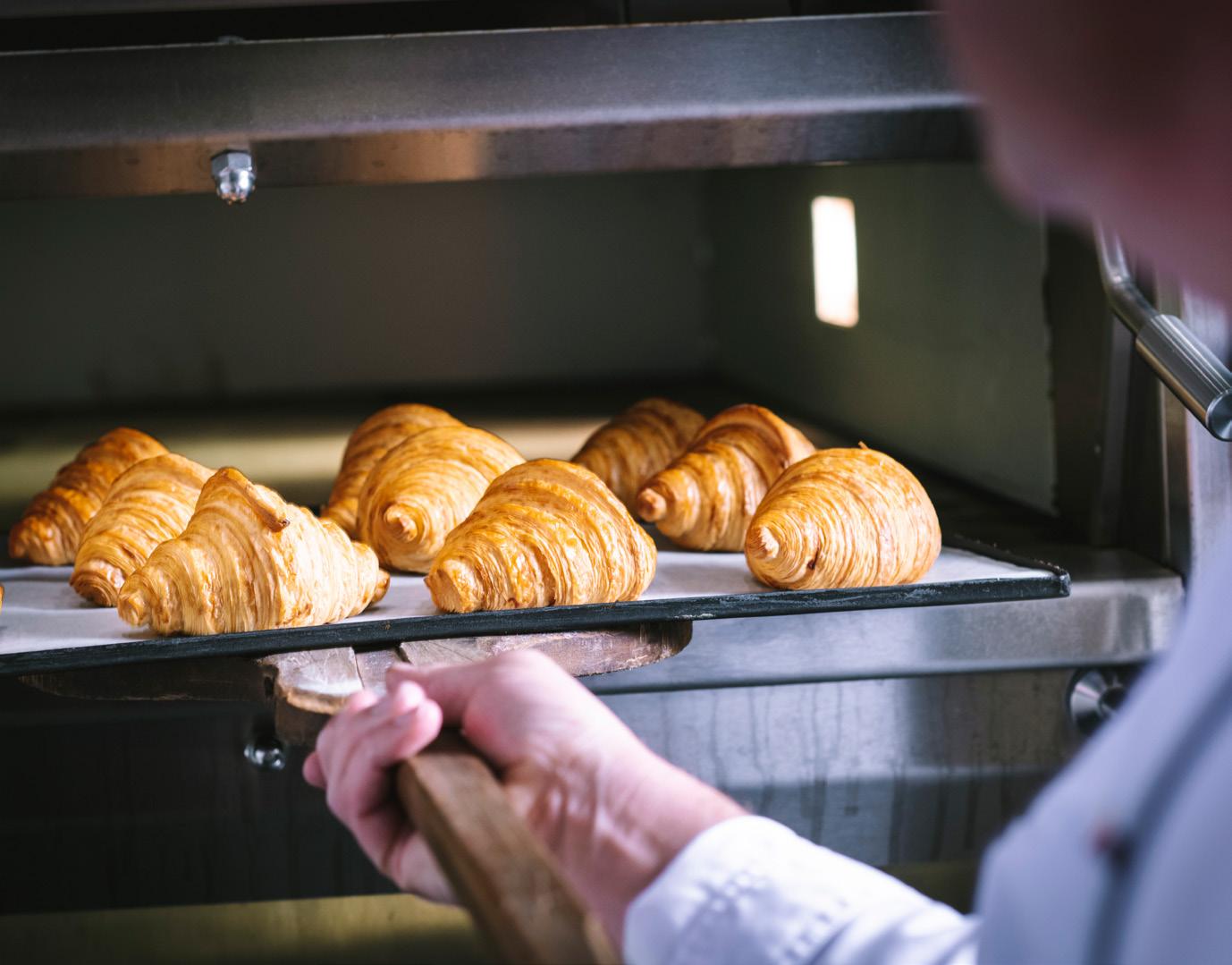
ations. For example, tariffs are fostering a level of uncertainty across the industry’s producers, customers and consumers.
“The expectation of higher prices may cause customers and consumers to hold back on purchases until there is greater clarity, but we can fully lean into our hybrid model of domestic production and imported goods to serve our customers in the best way,” Schmitz said. “Banneton Bakeries allows us to offer customers European-style pastries made locally and unencumbered by tariffs.”
Effectively navigating potential impacts of new tariffs led Brioche Pasquier to leverage its crisis management acumen. Committed to strong and lasting partnerships, the company adopted a proactive approach to lessen the burden on its customers — and, ultimately, consum ers — by choosing to manufacture and procure ingredients within the US.
“Tariffs threw a veil of shade and uncertainty that we are trying to navigate every
day, especially since we import baking goods from France,” said Julien Su ignard, sales director at Galaxy Desserts. “As part of our international strategy, we proudly produce locally in California, and though we anticipate an impact on ingredient costs, it should be relatively limited, as we plan to keep sourcing locally in California and within the US.”
Supply chain issues have not been problematic for Brioche Pasquier, due to the company’s long-term, close partnerships with suppliers. Suignard maintains that these relationships help anticipate disruptions and identify bottlenecks, so any problems can be resolved by working together.
Often, challenges erupt when a product becomes difficult to machine due to formulation changes or equipment malfunction, requiring operations to pivot and adapt. When facing production disruptions, Brioche Pasquier assembles multiple teams from various areas of the company to determine solutions.







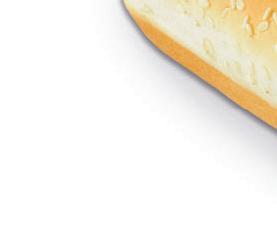




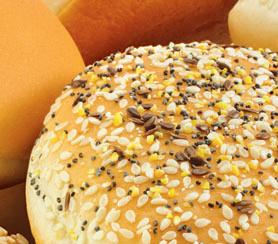
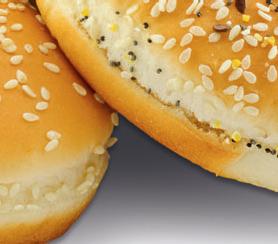


More reliable and clean fermentation process lean ss
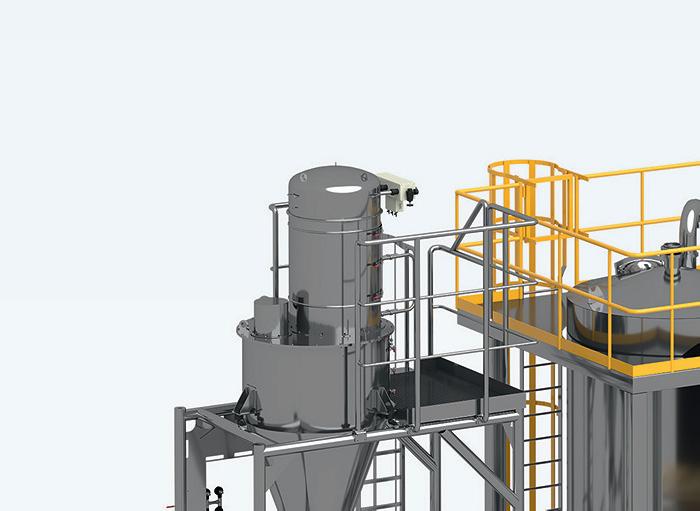




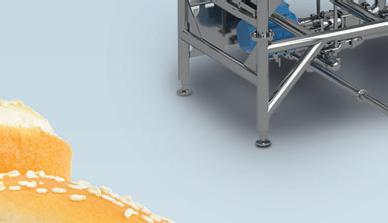
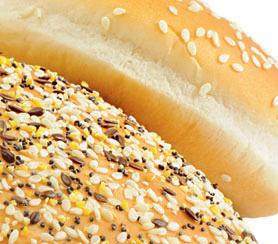



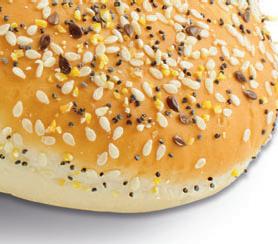

WE CREATE SOLUTIONS!

PERFECTLY PREPARED DOUGHS FOR FERMENTATION
Consistent acidity level and temperature
Reliable weighing and perfect dosing
Simple maintenance due to modular design


Optimal production of pumpable starters and sourdoughs
Suitable for continuous and batch operation

This strategy is the heart of the company’s industrial management system.
“Everyone brings their expertise to the table and contributes to elevate the level of technical know-how and ensure the consistency of our high-quality standards,” Bossard said.
Bakers pride themselves on helping customers align operations to ensure the freshest quality, especially as retail outlets and foodservice operators still fight labor challenges. All Vandemoortele’s products are shipped frozen to be baked on-site. The company provides simple baking guidelines that do not require advanced training, specialized equipment or years of bakery expertise.
“We focus on freezer-to-oven convenience with no proofing or glazing needed on the part of operators,” Schmitz explained. “Leaving the baking to our customers offers them the ability to serve the end-consumer freshly baked pastries that are made on-site daily.”
Limited-time offerings inspire category excitement and encourage sampling of new products. As a result, Brioche Pasquier’s customers are requesting seasonal or limited-time items, which add a layer of complexity to the operation.
“Production of seasonal and limited-time products requires more flexibility from our operations and the agility to adapt production lines,” Suignard explained. “Our customers’ inspirations broaden our views and help us push the limits of our capabilities. In our California plant, our equipment is customized and tailormade to best serve every product we develop.”
While functional bakery items are on trend, Vandemoortele’s European facto -
ries and its New Jersey bakery focus on manufacturing authentic European-style pastries and laminated dough products without altering recipe formulations. The company also produces smaller-sized bakery items to meet rising demand.
Mini treats not only satisfy snacking needs but can also be a solution for foodservice customers and are wellsuited to be served on buffets and at banquets for a variety of occasions and celebrations.
“Production of seasonal and limited-time products requires more flexibility from our operations and the agility to adapt production lines.”
Julien Suignard | sales director | Galaxy Desserts
“From a production standpoint, minis usually take as much time to manufacture as larger single-serve pastries, but they require more care to produce,” Schmitz said. “Mini croissants and pastries are more like fine jewelry and necessitate the utmost attention to detail.”
Commercial bakers must navigate — and adapt to — operational challenges daily, while simultaneously producing fresh, flavorful bakery items to meet customer needs on schedule. Combining new technology and ingredient advances with time-honored techniques will improve quality, often while eliminating artificial ingredients and promoting sustainability, creating a winning strategy for growth in the sweet goods category. CB
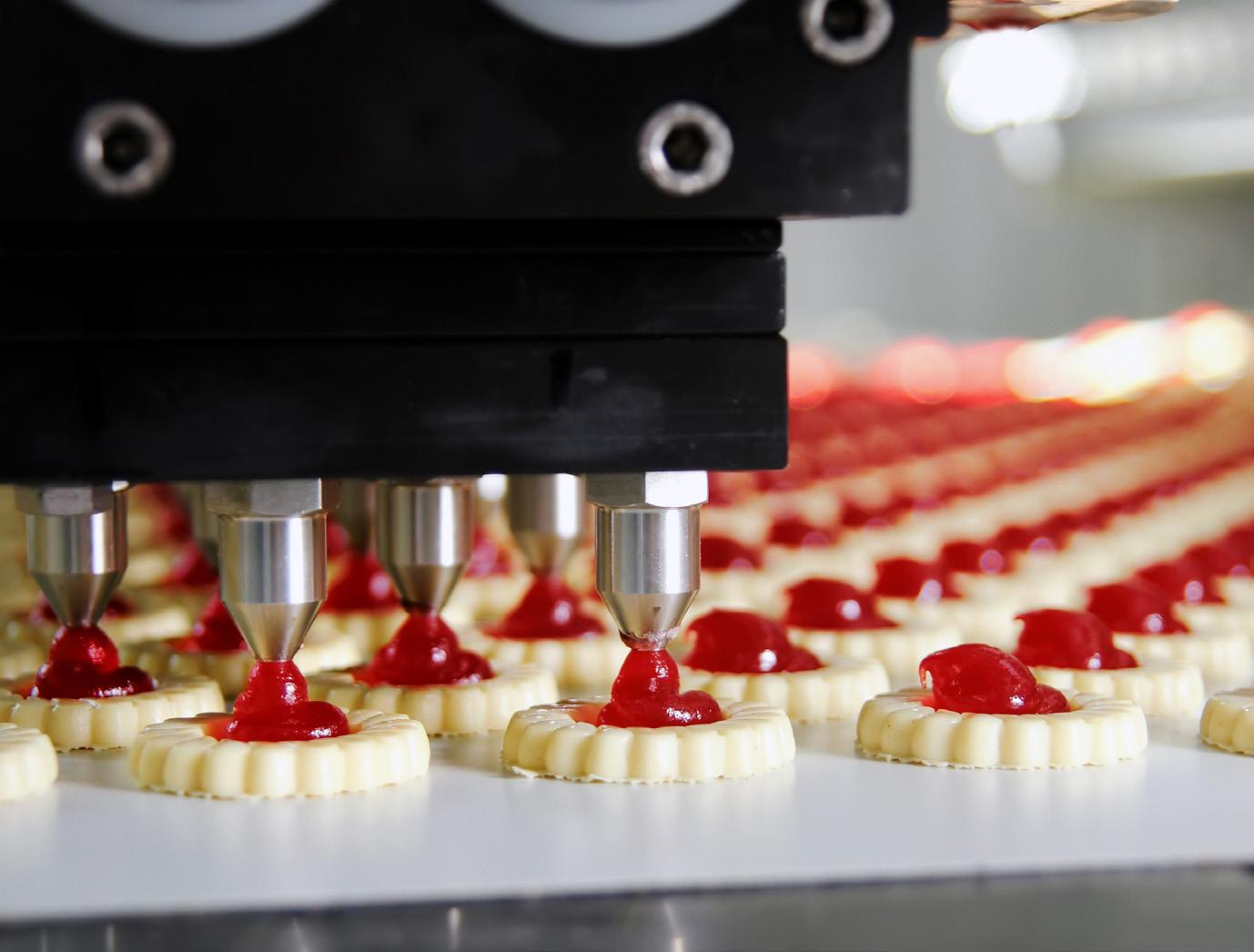
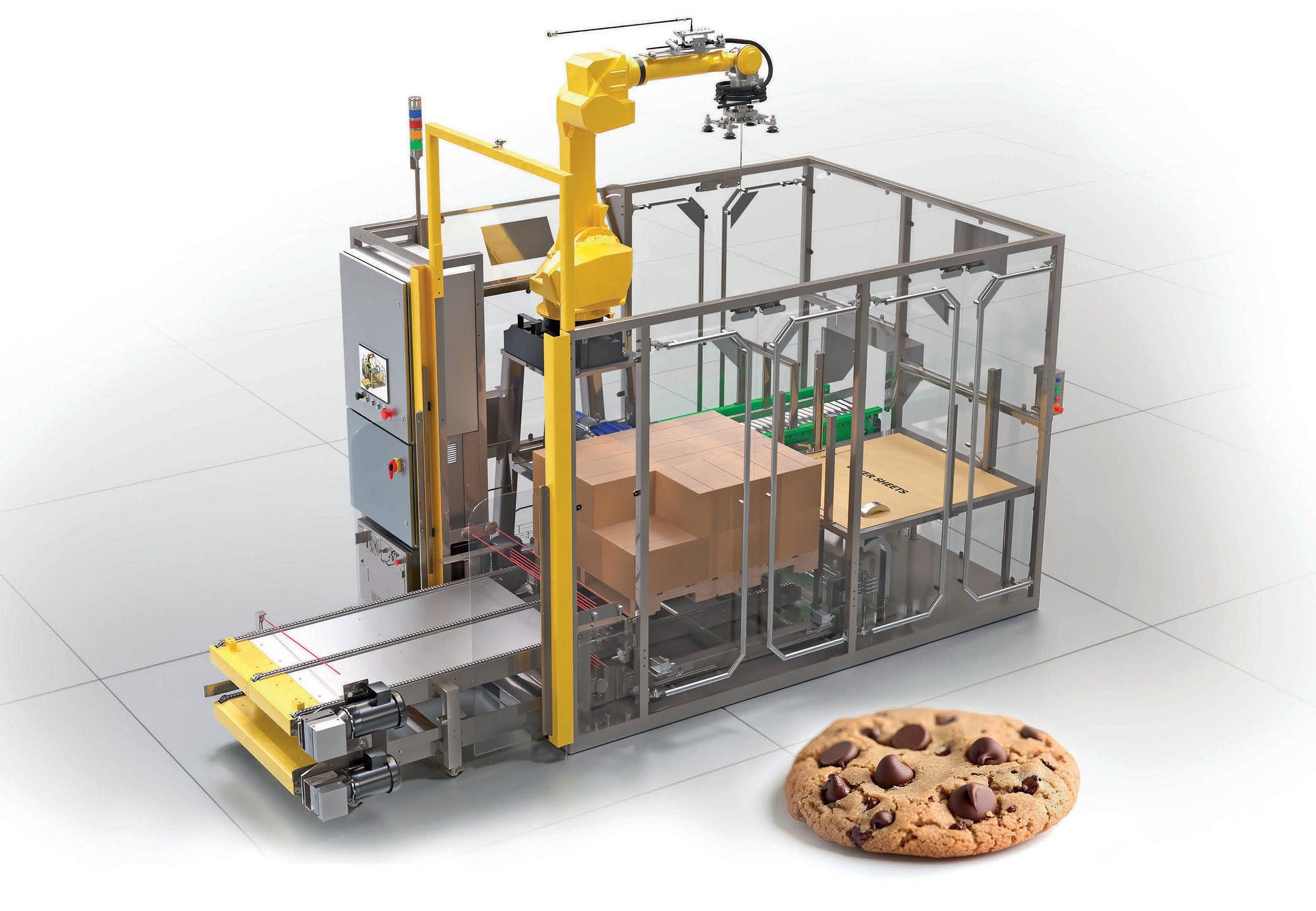


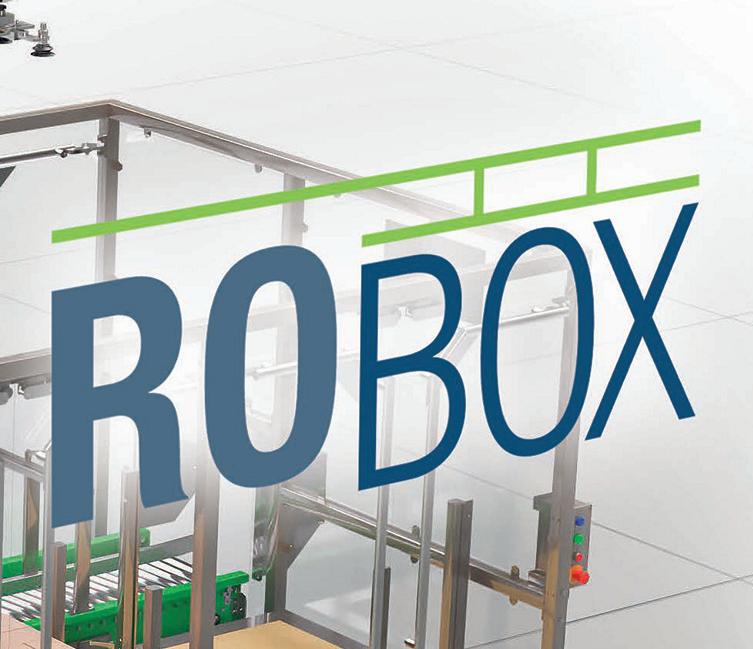



We automate the supply of life’s products through cartoning, case packing, automate the of life s through cartoning case packin conveyors, palletizers, stretch wrapping, and integration. A space-saving, flexible, and portable alternative to manual palletizing, no assembly needed.






Production efficiency optimization
Predictive maintenance capabilities
Automated analytics
KPI monitoring with smart alerts
Intelligent, actionable reporting





























































































































































Before signing on the dotted line, bakers and investors should do their respective due
diligence.
BY NICK LAROSA, NEW WATER CAPITAL
For many family-, founder- and entrepreneur-owned bakeries, selling the business is one of life’s biggest milestones. Generations of hard work go into building the company, nurturing a skilled workforce and establishing a brand that attracts lasting customer loyalty. When considering a sale, selecting the right buyer is just as crucial as the decision to sell.
Private equity (PE) has become a dominant player in the US deal landscape, accounting for more than half of all merger and acquisition (M&A) transactions in a typical year. That means when a business owner thinks about selling their bakery, it’s highly likely that a PE firm will be among the interested buyers. The advantage of partnering with PE is that it can be a powerful growth partner, providing capital, strategic guidance and operational resources. The challenge is in ensuring the partnership is the right fit for both parties.
For bakers and PE alike, the partnership should be built on trust, transparency and a shared vision of the future. So, how do both sellers and buyers know if the partnership will truly be successful? Here are several key considerations, drawn from both perspectives, that should be top of mind for each side.
Do they understand the industry? Not all capital is equal, and not every PE firm brings experience in bakery or even food manufacturing. It’s crucial for a potential partner to understand the nuances of the bakery sector: commodity price swings, labor shortages, seasonality, long sales cycles, capital intensity, logistics challenges and the balance of retail vs. foodservice demand. A partner without this knowledge may underestimate what’s required for success in the industry.
Can they bring more than money? The best PE partners add real value beyond capital. They help guide the strategic plan, open doors to new national accounts, help recruit key leaders as the business scales, and provide expertise on capital projects such as plant expansions or automation. There are many challenges the bakery industry faces that actually present opportunities for an investor with relevant experience and the ability to bring practical solutions to the table.
Do they share the vision and expectations? A partnership works best when both sides share a clear vision for the future. Where do you see the bakery in five or 10 years? Will it expand geographically or diversify into other products or channels? It’s essential that the PE firm’s investment thesis aligns with the vision and that its timeline for returns doesn’t create unnecessary pressure on the business.
Who will the team actually work with? Relationships matter. The team that courts the sale may not be the same one people work with after closing. Ask early on: Who will be the day-to-day contact? How often will they meet with the team? Will they be hands-on or hands-off? Clear communication upfront builds trust and helps avoid unexpected challenges.
What’s their track record? Finally, dig into their history. Have they successfully guided other family-owned businesses through transitions? Do they have examples of solving challenges like capacity expansion, customer onboarding or bolt-on acquisitions? Whenever possible, gather references directly from prior owners and CEOs who have experience working with the potential PE buyer.
For bakers and private equity alike, the partnership should be built on trust, transparency and a shared vision of the future.
How strong is the go-to-market strategy? For investors, the first step is to understand the bakery’s core strengths. Is it a leader in fresh or frozen, branded or private label? Does it dominate a region or supply national chains?
Understanding the company’s position across product lines, sales channels and geographic markets is key to determining its scalability.
Is the business prepared for growth? PE firms invest with one goal: to help businesses grow and create value. Achieving strong returns depends on the company being bigger, stronger and more competitive at exit than it was at entry. That growth, however, is rarely driven solely by customer demand. More often, the real obstacles are inside the four walls of the business: capacity, systems or talent.
PE firms should ask hard questions early: Is the plant operating at full capacity? What will it take — in terms of time, cost and disruption — to add a new line or facility? Are existing enterprise resource planning and quality systems robust enough to serve larger retail or foodservice customers? Does the management team have the depth of experience to lead through expansion?
Identifying these bottlenecks upfront allows both sides to be realistic about the growth journey. When gaps exist, strong PE partners should be prepared to provide more than capital, offering operational expertise, leadership support, and resources to remove barriers and unlock the next stage of growth.
What role could M&A play? In a fragmented industry like bakery, acquisitions can unlock new customers, products or geographies. However, M&A also brings potential integration challenges. Does the team have the skills necessary to execute alongside the guidance of the PE firm?
Will customers benefit from the combination? Are the projected synergies achievable?
It’s easy to forget due diligence runs both ways. While PE firms conduct rigorous reviews — digging into financials, operations and market position — bakers should be equally thorough in evaluating their potential partner. Both sides need to ask hard questions upfront, clarify expectations and confirm their visions align.
Equally important is cultural fit. Even when the numbers and strategies look promising, mismatched values or working styles can derail a partnership. For a familyor founder-owned bakery, it matters whether the PE firm respects the heritage and culture that built the business. Likewise, investors should gauge whether the company’s leadership team is open to new ways of operating and disciplined execution. A shared culture of transparency, accountability and mutual respect can be just as critical as financial performance in determining long-term success.
When the partnership is right, the results can be transformative. Bakeries gain access to capital, expertise and networks that accelerate growth. Investors gain a resilient, in-demand business with strong customer relationships. Together, they can scale faster, serve more customers and weather industry challenges with confidence. CB
Nick LaRosa is a VP at New Water Capital, a private equity firm investing in lower-middle-market consumer and industrial manufacturing and distribution businesses, with a major focus on the food industry. Current food investments include Klosterman Baking Co., Dutch Gold Honey and Pegasus Foods. Contact him at nlarosa@newwatercap.com
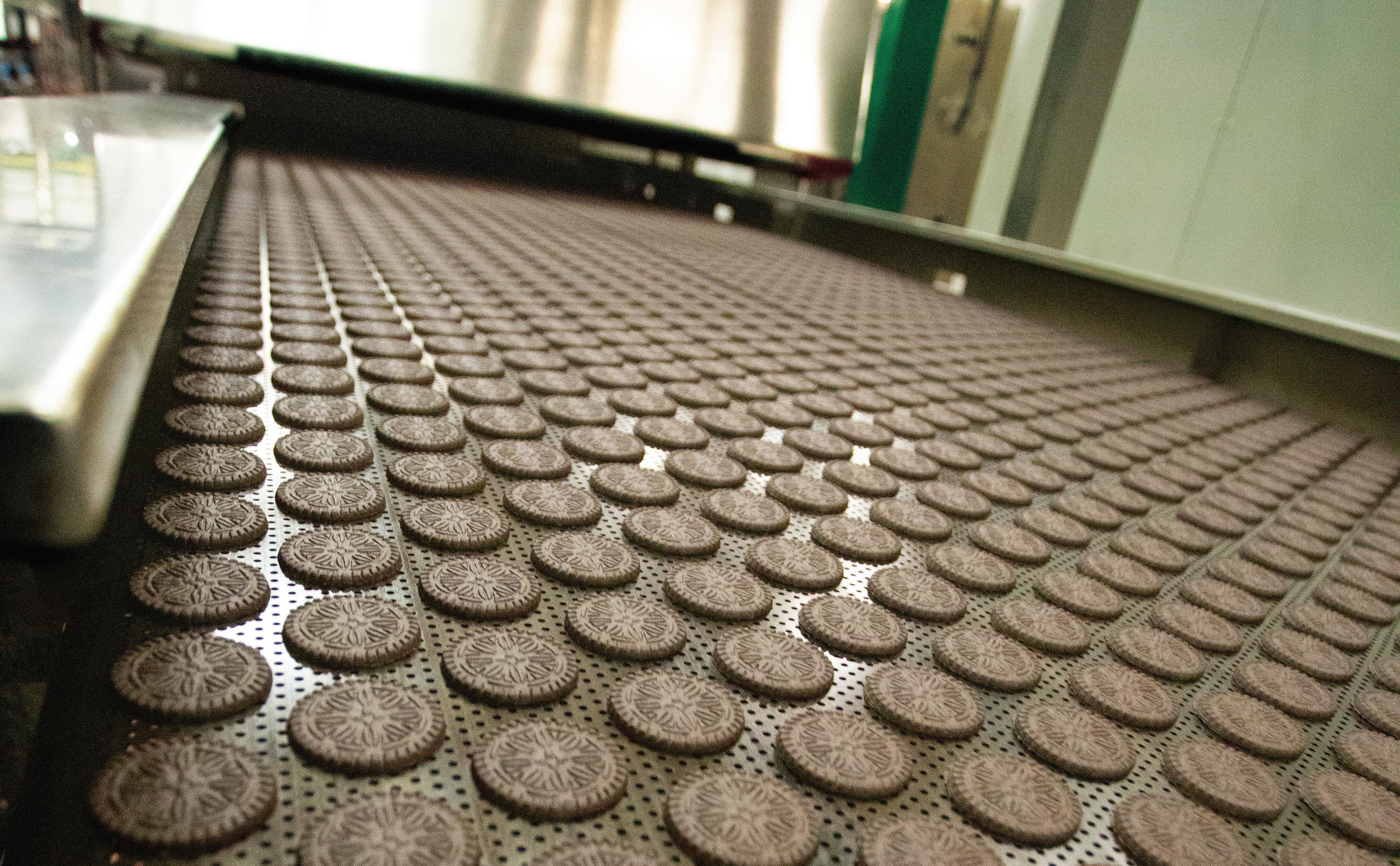


Our multimedia collection is full of videos, podcast episodes and more, where you can get a deep look — and listen — into the exciting shifts happening in the baking industry.
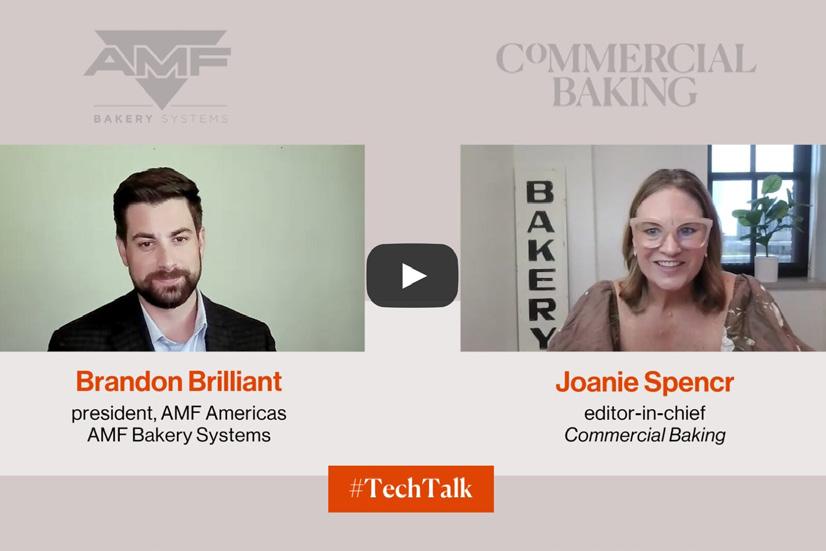
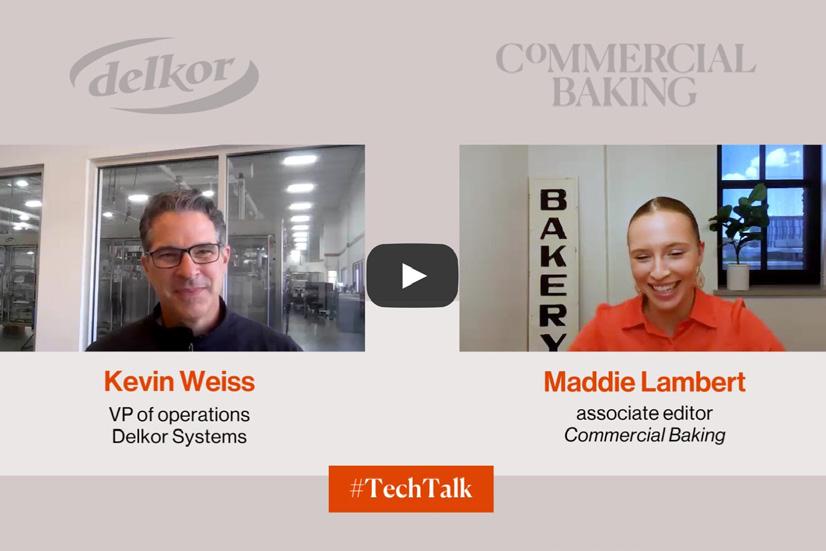
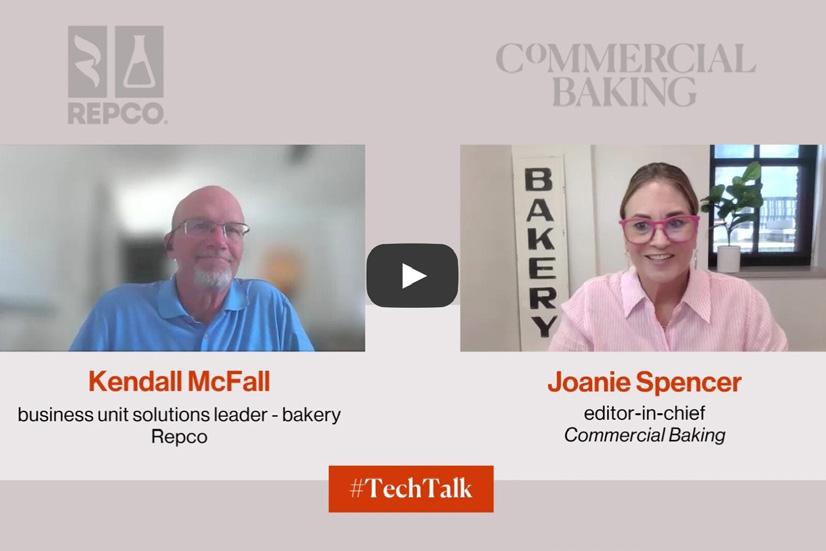
TechTalk with AMF Bakery Systems | Innovation for Bakery

Brandon Brilliant, president of AMF Americas, shares what’s happening at the new Puratos Industrial Pilot Bakery, powered by AMF Bakery Systems. www.amfbakery.com
TechTalk with Delkor Systems | Flexible Case Packing Technology

Kevin Weiss, VP of operations, talks about the efficiency, flexibility and accuracy of the EVO case packer for commercial bakeries. www.delkorsystems.com
TechTalk with Repco | Formulating for Clean-Label Baked Goods

Kendall McFall, business solutions unit leader for bakery, discusses a few of the most common troubleshooting scenarios when it comes to clean-label formulating. www.repcoworld.com

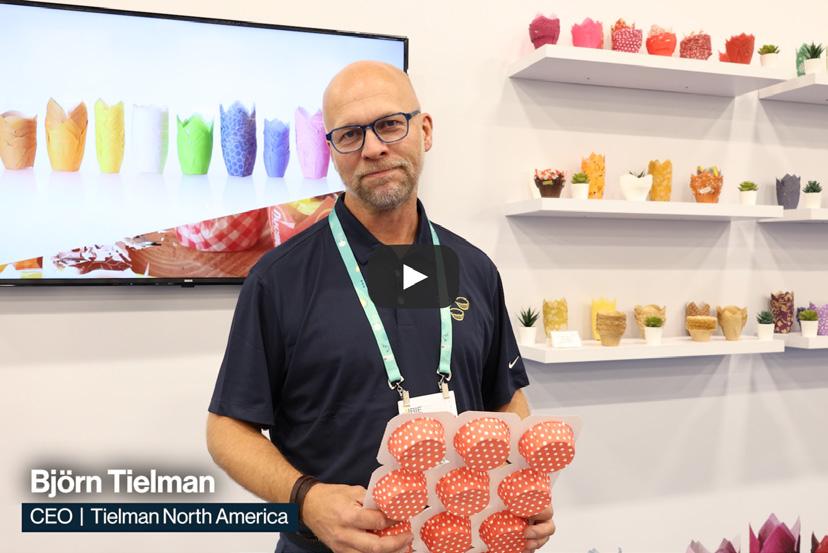
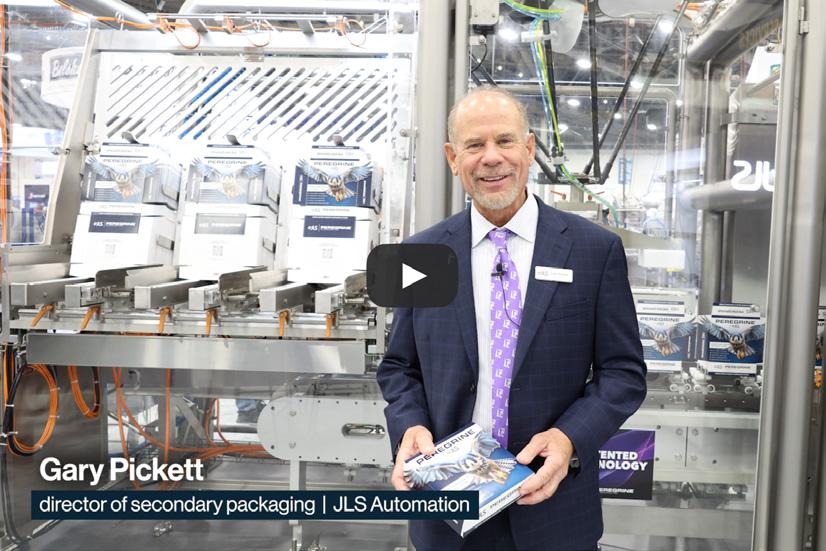


Barrett Gray and Nick Szczechowski, regional sales managers, showcase the benefits of the Spider 100v case packer. www.blueprintautomation.com

Björn Tielman, CEO, highlights the company’s range of environmentally friendly paper baking cups, muffin trays and liners. www.tielman.com

Gary Pickett, director of secondary packaging, outlines the key features of the new Peregrine cartoning system. www.jlsautomation.com

Aaron Frentz, engineering manager, details the benefits of incorporating the Paxton blower system into the company’s depanning solutions. www.capwayautomation.com
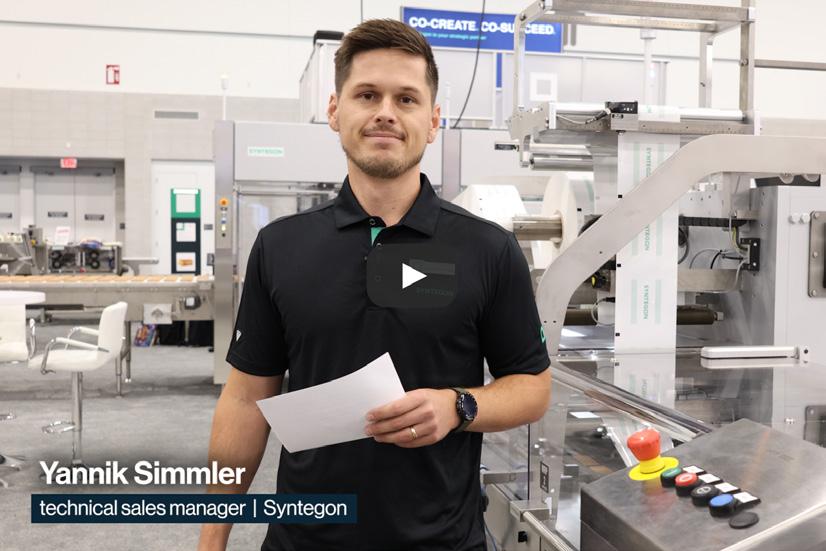

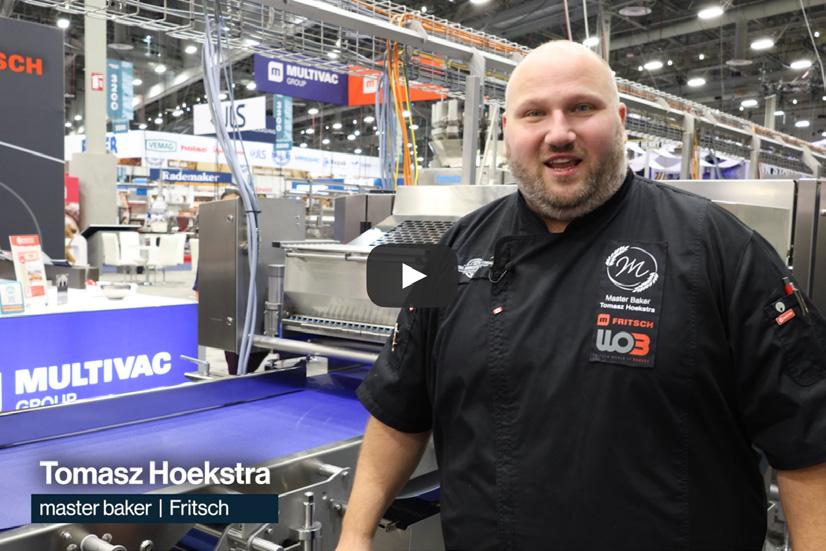


Yannik Simmler, technical sales manager, showcases the applications of Amplified Heat Sealing technology in the company’s flowwrapping solutions. www.syntegon.com

Jeremy Shall, industry team leader, highlights the main features of the company’s AIM Glide technology and how it can reduce cleaning time and maintenance. www.intralox.com

Tomasz Hoesktra, master baker, demonstrates the flexibility, ease-of-use and quick changeover of the Progressa pastry line. www.fritsch-group.com

Migel Stoddard, inside sales coordinator, talks about the latest addition to the company’s flowwrapping portfolio: the FW3400 CXIIs. www.formostfuji.com
We are the “OGs” of so accept no imitations We invented, executed and TechTalks,
We are the “OGs” of multimedia, so accept no imitations. We invented, executed and perfected TechTalks, Booth Trailers and Innovation Minutes.
are the media source for the commercial
We are the premier media source for the commercial baking industry.
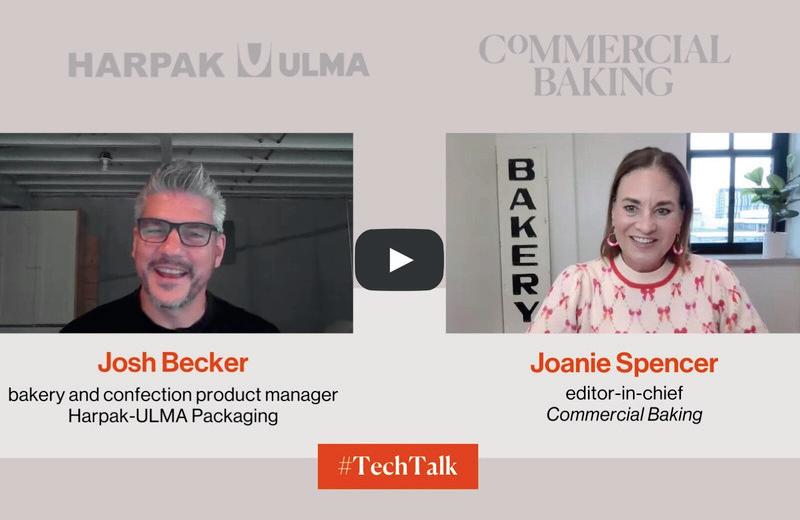
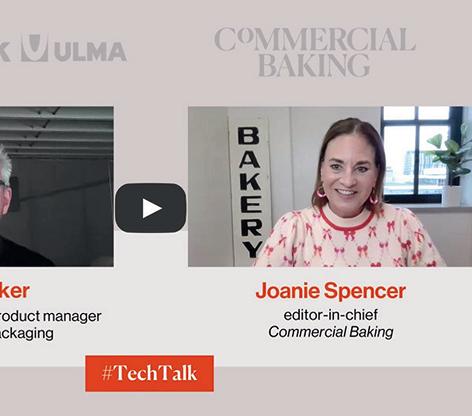
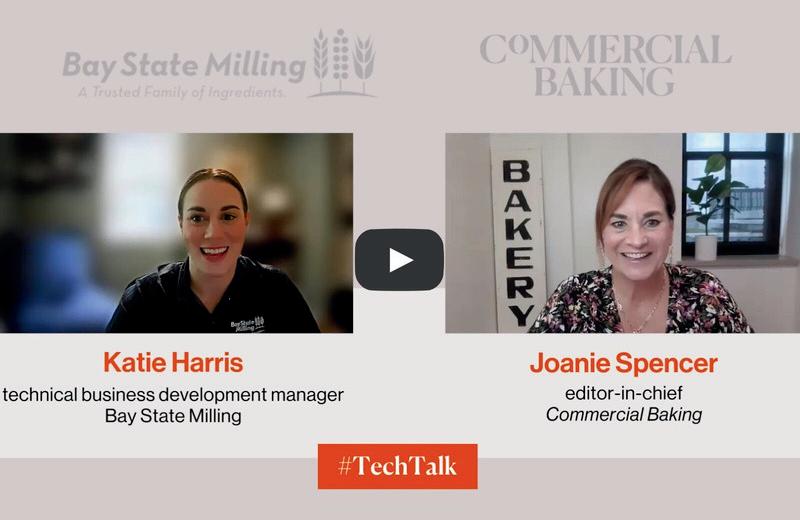
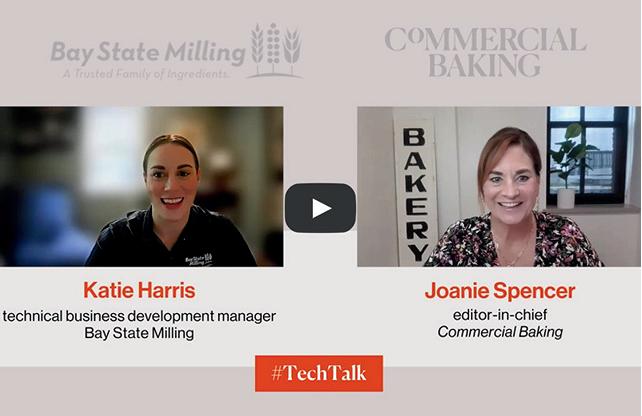

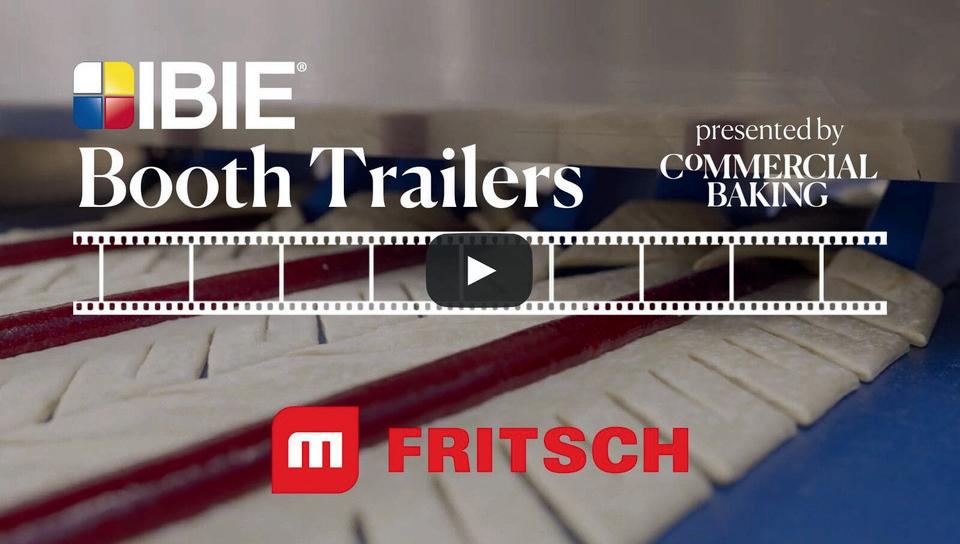
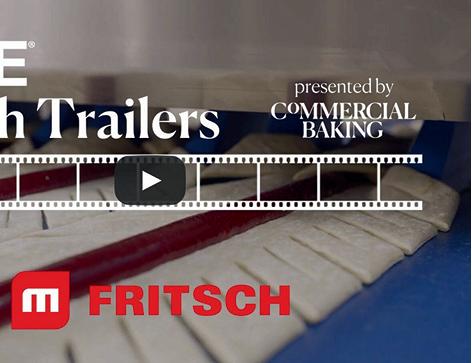


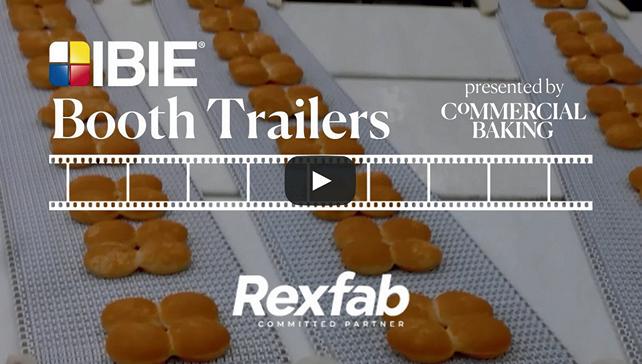
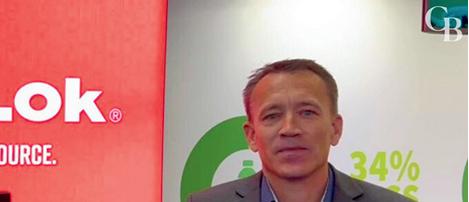

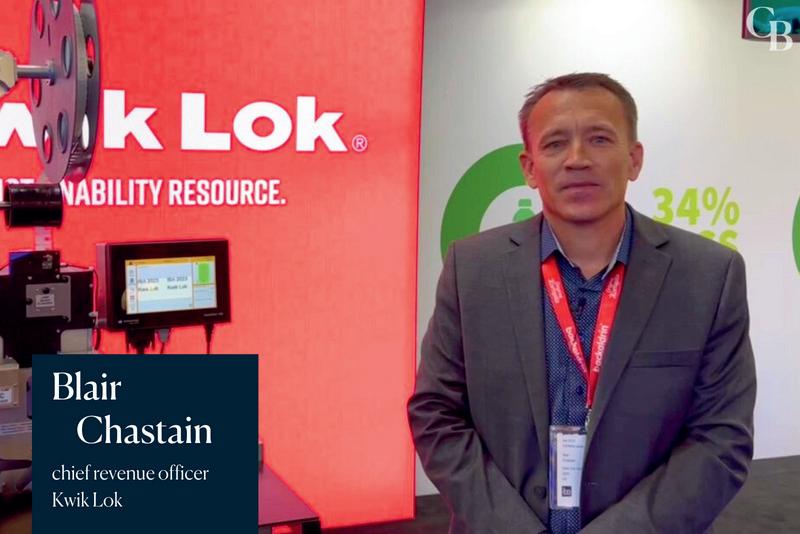








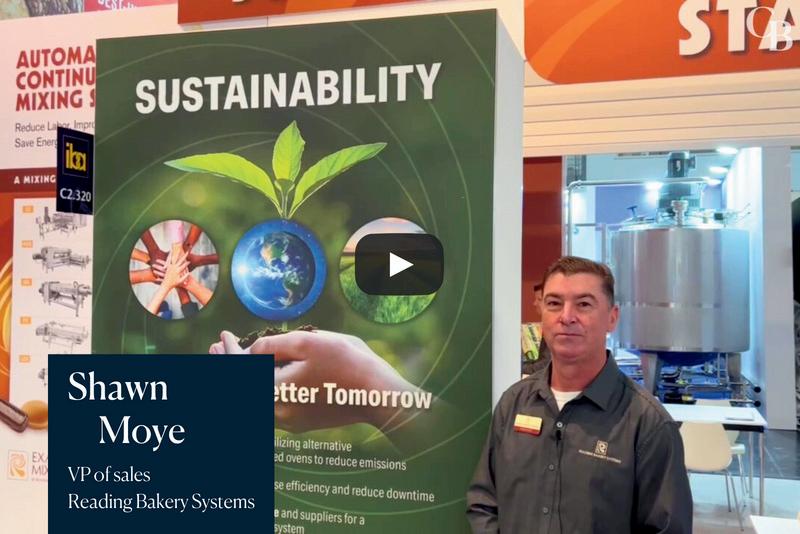



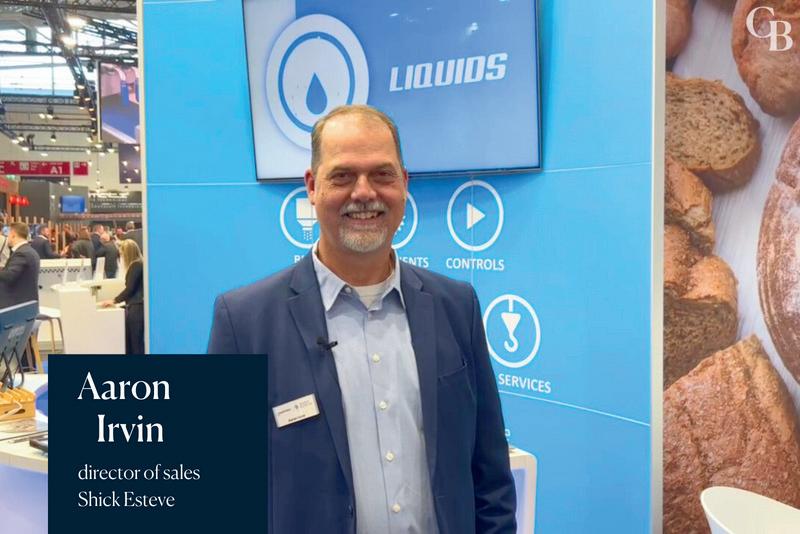

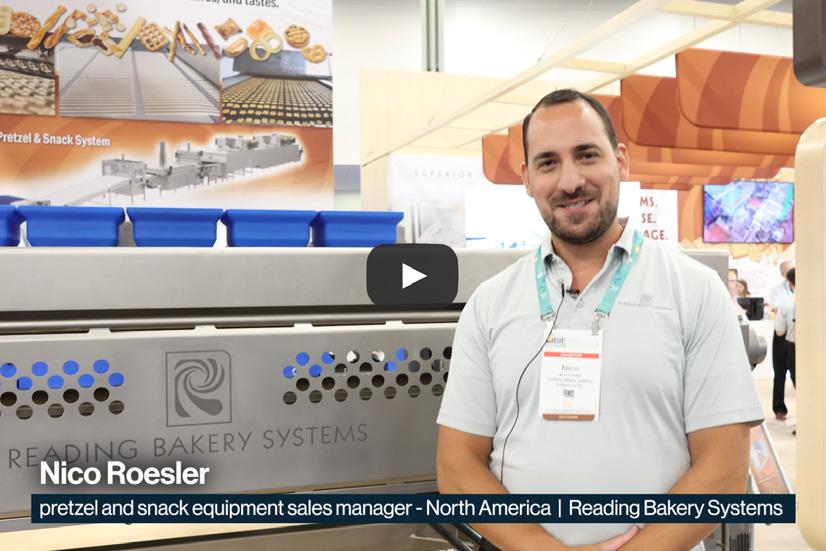
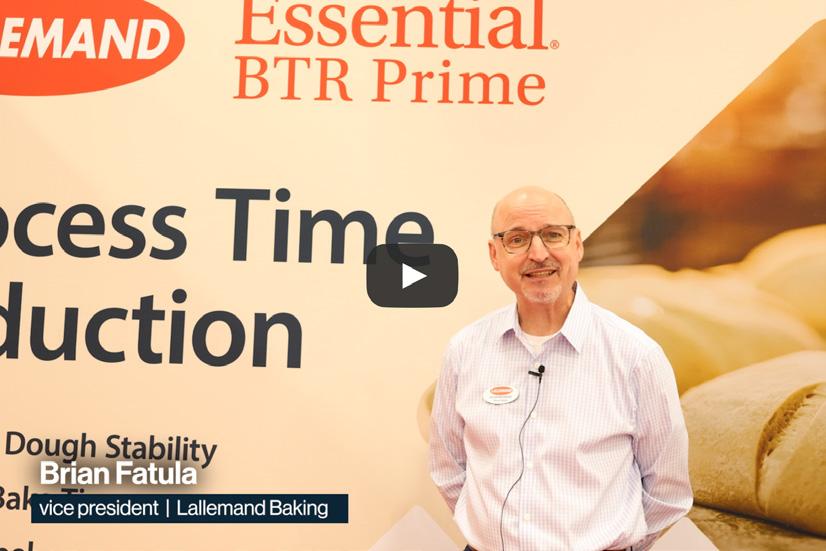

Nico Roesler, North American pretzel and snack equipment sales manager, details the company’s low-pressure extrusion system and the Emithermic XE oven. www.readingbakery.com

Brian Fatula, VP, explains how the company’s Essential BTR Prime enzymatic solution improves efficiency and consistency in commercial bakeries. www.lallemandbaking.com


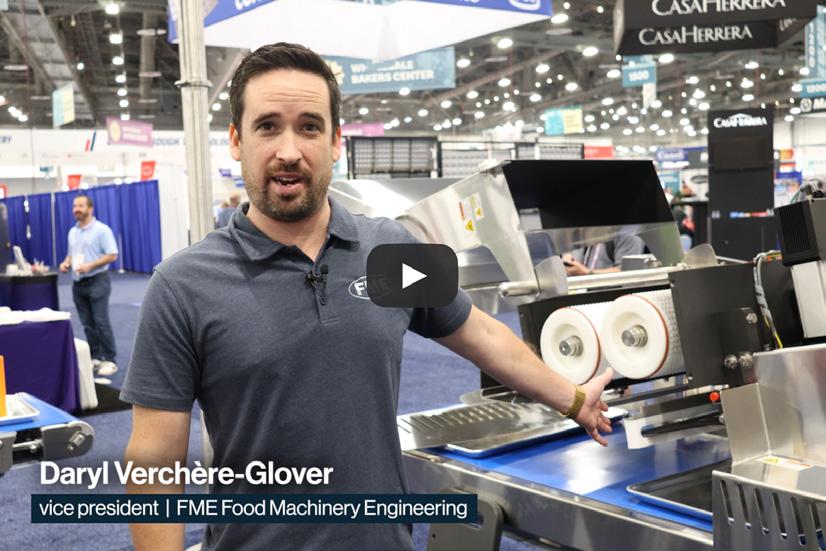
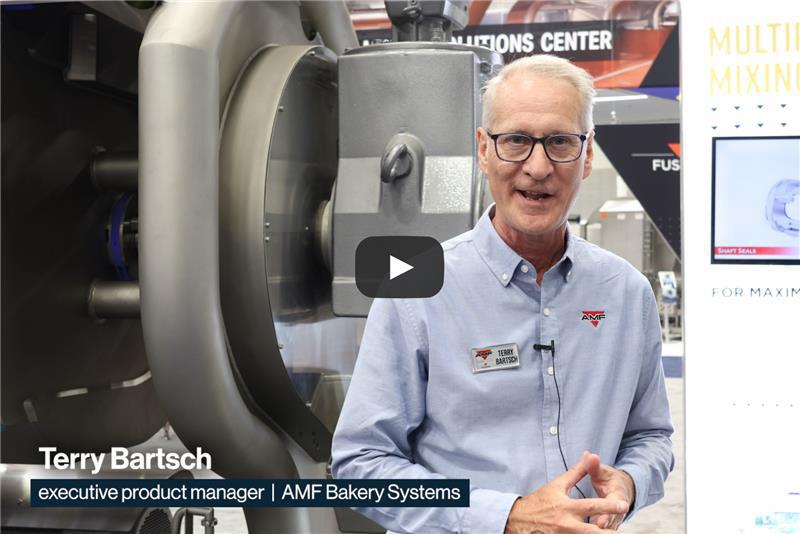

Daryl Verchère-Glover, VP, showcases the company’s induction-heated Teflon knife, which can cut through inclusions and sticky doughs during cookie production. www.fmefoodmachinery.com

Terry Bartsch, executive product manager, discusses AMF Fusion’s latest innovations, including the SNAX Double Sigma Arm Mixer and the Dough Guardian+real-time monitoring solution. www.amfbakery.com



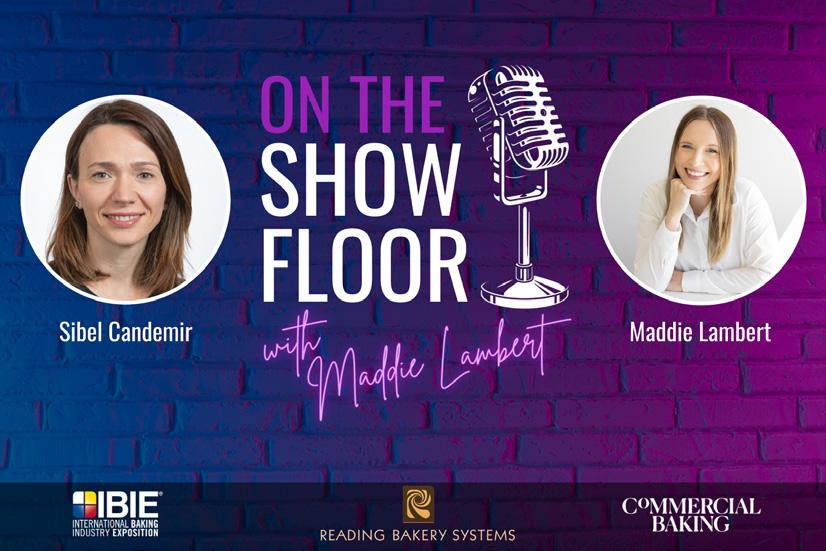


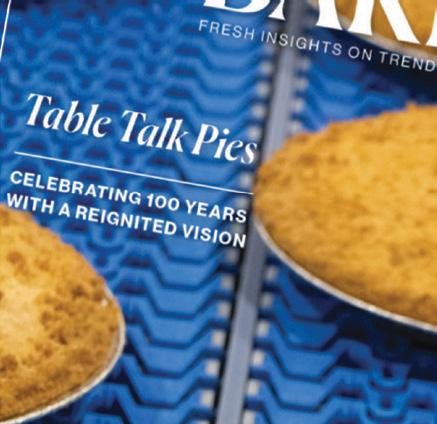
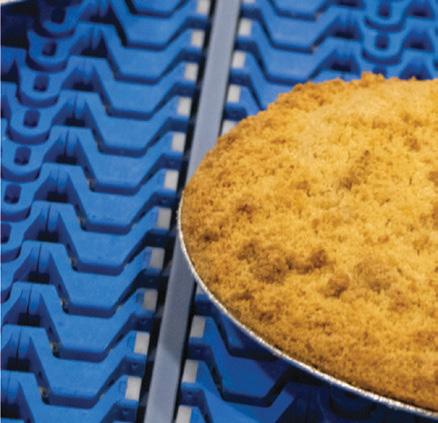



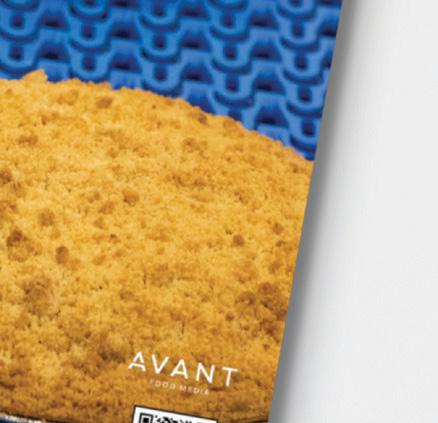

Anthony Calderon, packaging and product developer at Sugar Foods, chats about his favorite parts of the Expo, including seeing the entire industry come together in one place. Sponsored by Reading Bakery Systems.



Sibel Candemir, VP of marketing and category management at Aspire Bakeries, talks about her show experience, noting the boom in clean ingredient innovation. Sponsored by Reading Bakery Systems.
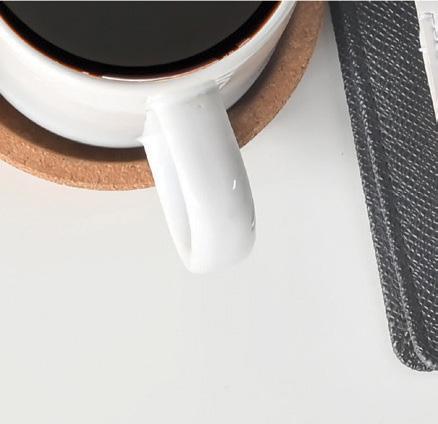



























































































































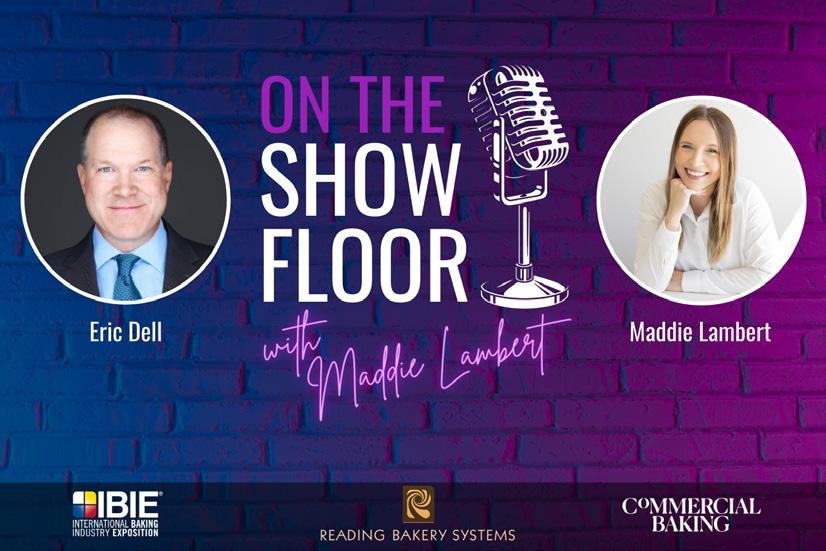
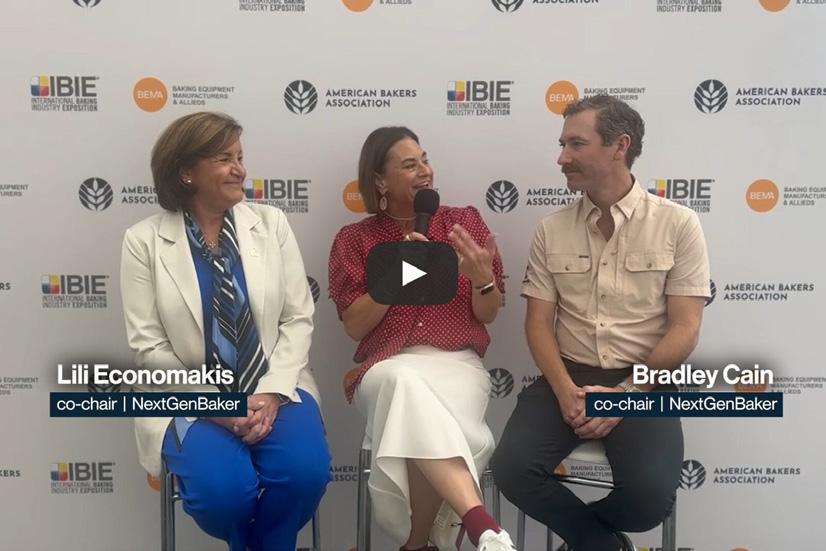



Eric Dell, president and CEO of the American Bakers Association, highlights the energy at the Baking Expo and shares his reaction to seeing the baking industry in full force. Sponsored by Reading Bakery Systems.
Catching Up with Commercial Baking : NextGenBaker at IBIE

Bradley Cain and Lily Economakis discuss their tenure as the American Bakers Association’s NextGenBaker co-chairs and reflect on key moments of the show.
Catching Up with Commercial Baking : Buddy Valastro at IBIE

Buddy Valastro, also known as the Cake Boss, shares his initial impression of the innovative equipment displayed on the show floor.

The 16th season of Commercial Baking ’s awardwinning podcast features Dale Easdon, CEO of Klosterman Baking Co., who shares how he’s carrying a legacy name into the future. Sponsored by Bundy Baking Solutions.
Inspired by the viral confectionery item, bakeries are infusing the mix of chocolate, pistachio-tahini and kataifi into their pastry cases. Brownies, cookies, coffee cake and cinnamon rolls all serve as bases for this trend-forward treat.
Artisan innovation is flourishing. From unique flavor combos to boundary-breaking baked goods, see what’s trending in retail bakery cases.
POWERED BY


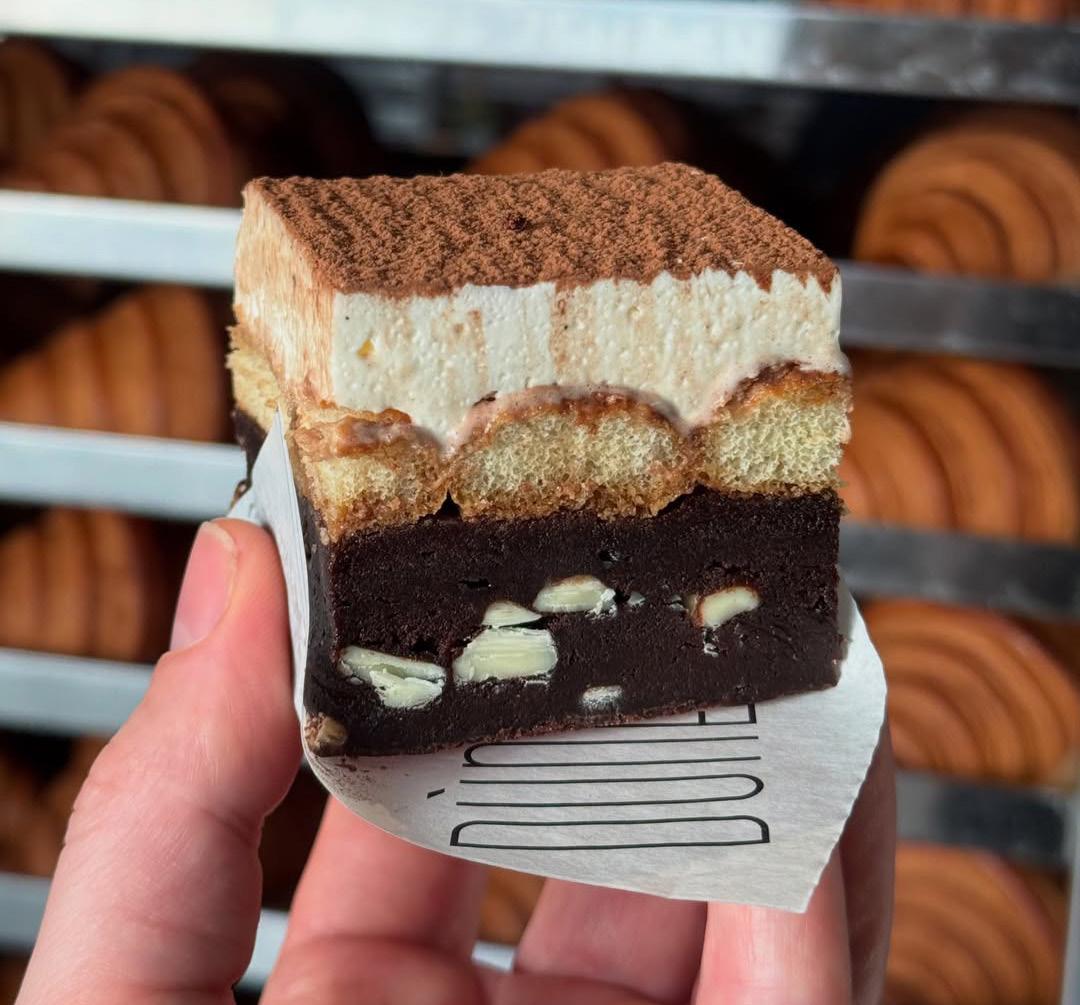
The combination of espresso, mascarpone, ladyfingers and cocoa is having a moment. Beyond the dessert’s signature format, the flavor fusion is taking shape in donuts, brownies and Danish.
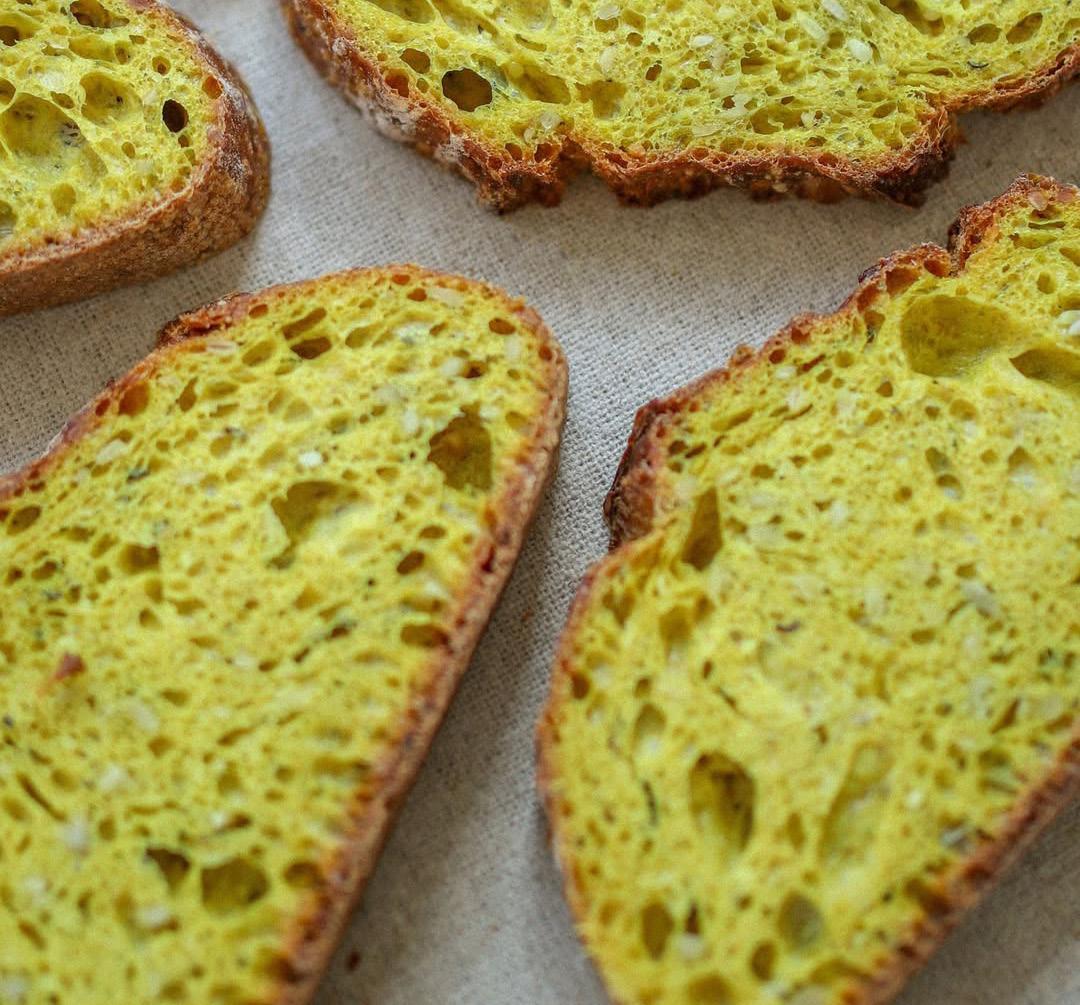
The use of various seeds, such as sesame, sunflower, hemp and poppy, provides not only visual appeal but also unique taste and health attributes, especially in artisan-style breads.

Cherries add a rich crimson coloring and juicy flavor to an assortment of baked goods ranging from Swiss rolls and galettes to pies and brioche.
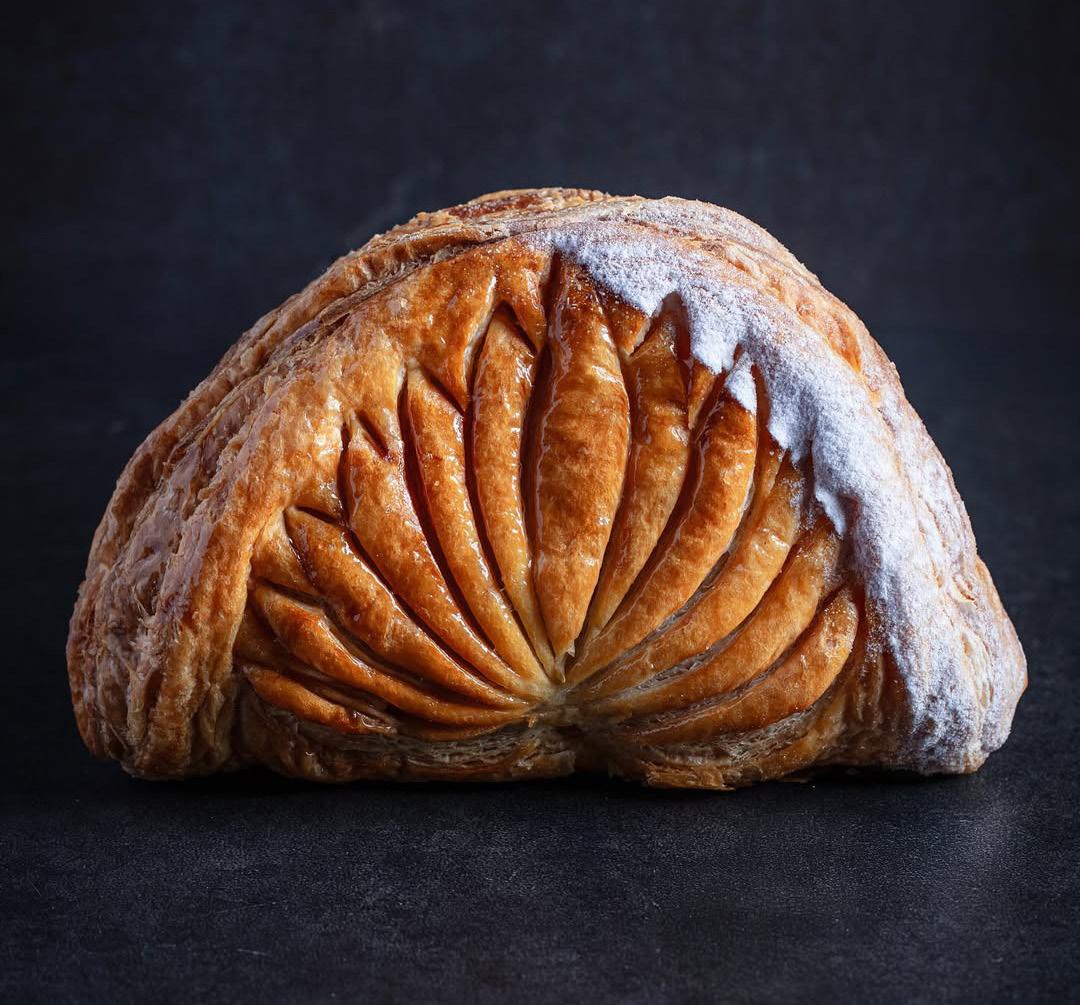
This fruity option is generating equal buzz to reigning fall flavor pumpkin spice. With a touch of warm spices such as cinnamon and clove, applications vary from fritters to hand pies to tarte tatin.
The following advertisers appear in this issue. We encourage readers to reach out to these companies through the listed website or email for further information. This index is provided as a service to readers and advertisers, but Commercial Baking does not assume any liability for errors or omissions. Please send any updates or corrections to info@commercialbaking.com
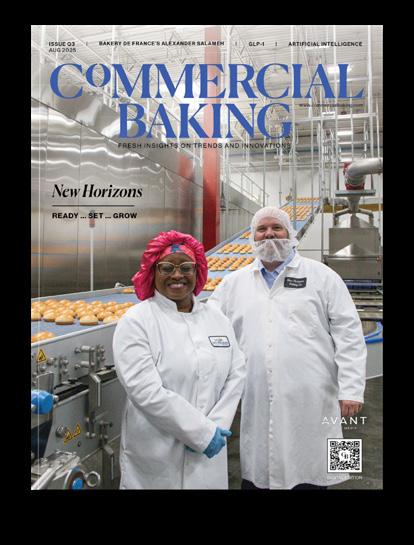
www.commercialbaking.com/subscription
www.alliedbaking.com steve@alliedbake.com
www.amfbakery.com sales@amfbakery.com
info@apexmotion.com
www.avantfoodmedia.com info@avantfoodmedia.com
www.bcwilliams.com info@bcwilliams.com
www.bellarise.com info@bellarise.com
www.blueprintautomation.com sales@blueprintautomation.com
www.bakewithbrolite.com s.delghingaro@broliteproducts.com

www.bundybakingsolutions.com info@bundybakingsolutions.com
www.cainfood.com sales@cainfood.com
www.gwmfg.com brooke.wagner@gwmfg.com
Henry & Sons
www.dhenryandsons.com info@dhenryandsons.com
Ilapak
www.ima.it/flexible-packaging-hub info.flxhub@ima.it
Imperial
www.imperialind.com morgan@imperialind.com
Intralox
www.intralox.com customerservice.bakery@intralox.com
IPCO
www.ipco.com sales.us@ipco.com
J&K Ingredients
www.jkingredients.com sales@jkingredients.net
Kaak
www.kaak.com jlaros@kaak.com
Kubota Brabender Technologie
www.kubota-bt.com/ca golmes@kubota-btca.com
Lallemand Baking
www.lallemandbaking.com baking@lallemand.com
Middleby Bakery Group
www.middprocessing.com marketing@middlebybakery.com MoistTech
moisttech.com/applications/human-food-moisture info@moisttech.com
Moline
www.moline.com sales@moline.com
Multivac/Fritsch
www.fritsch-group.com cecily.pickering@multivac.com
www.oakes.com info@oakes.com
www.pacteon.com contact@pacteon.com
www.readingbakery.com info@readingbakery.com
www.reiser.com sales@reiser.com
www.repcoworld.com/bakery info@repcoworld.com
www.rexfab.com rexfab@rexfab.com
Sottoriva
www.sottoriva.com richwall@sottoriva.com
Spiromatic
www.spiromatic.com info@spiromatic.com
The Henry Group
www.thehenrygroup.com morgan.henry@thehenrygroup.com
Tielman Group
www.tielman.com rhonda@tielman.com
Wilevco
www.wilevco.com sales@wilevco.com WP Bakery Group
www.wpbakerygroupusa.com patk@wpbakerygroupusa.com
Zeppelin Systems USA
zeppelin-systems.com/de/en/industries/food-industry info@zeppelin-usa.com
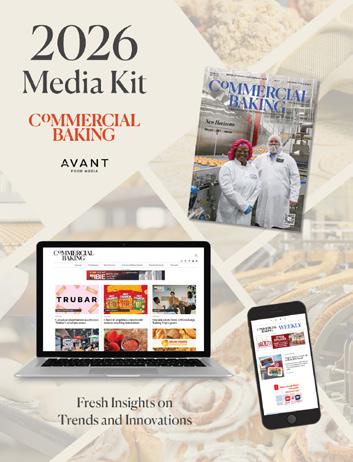
www.commercialbaking.com/adv ertise

paul@avantfoodmedia.com
816.585.5030



Throughout my more than 25 years working in the consumer goods sector, I’ve seen a lot of companies attempt to grow through acquisitions. Those that get it right know it’s not about collecting logos. The real work starts after the deal closes.
The most successful companies treat acquisitions not as transactions, but as opportunities to build something stronger together. That means staying focused on the customer, building trust with new teams and aligning on shared values.
Of course, the biggest challenge is integration. A lot of companies choose to stay separate op erationally, but in our experience, that can limit both scale and efficiency. Real integration goes beyond aligning systems and processes; it takes a thoughtful approach to people, culture and purpose. When done right, it creates a stronger, more connected organization.
Rise Baking Co. has acquired 10 companies since its founding in 2013. With our recent acquisition of Table Talk Pies, we combined their century of pie-making expertise with our scale, resources and distribution network. That integration expanded our capabilities and provided more geographic reach to support our customers.
What is our approach to integrating companies?
Culture building. At Rise, people are our finest ingredient. It takes a continual investment in talent development and training to engage and empower a
growing team. That’s why we focus on bringing new team members into the fold quickly through shared systems, regular town halls and inclusive communication, so they’re equipped to contribute from day one.
Value creation. Whether it’s expanding distribution reach, introducing existing products to new customers or aligning go-to-market capabilities, value is created when the sum becomes greater than its parts. Leveraging insights, product innovation and shared customer relationships allows us to unlock new opportunities, accelerate performance, and create long-term value for the company and our customers.
Operational alignment. Standardizing infrastructure across all facilities and optimizing your supply chain helps simplify workflows and cut down on waste.
The true measure of success in expanding a multi-category organization is how well that growth is harnessed to serve customers. The companies that lead in this regard integrate their culture and systems to keep people and purpose at the center of it all. CB
Brian Zellmer is the CEO of Rise Baking Co., leveraging his experience in the food production industry to drive growth and expand the company’s product portfolio and market presence. Under his leadership, Rise has become a total baking partner for in-store bakeries and foodservice customers, with a diverse portfolio that includes trusted brands like Brill, South Coast Baking and Best Maid.









